
The best map of Spain

A map of Spain is essential. Every time that I plan a trip one of the first things I do is to look for a map. I like to locate sights, monuments, bars and restaurants and even my accommodation (or potential one if I haven’t made up my mind yet).
I find that it’s very important to get a glimpse of possible travel itineraries, know a bit more about distances (especially if it’s a big country).
Therefore, long before catching the plane I spend some time researching, downloading and drawing lots of maps. It helps me to maximize my trip and have a better knowledge of the place I intend to visit.
Moreover, once I’m on the road I consider that a map is vital. Unless I have a friend or relative that will be my guide, I always carry a map in my smartphone.
In the case of Spain, you’ll realize very soon that in most cities the center is pretty much a labyrinth, especially the older ones. And despite the numerous tourist offices and the fact that people are kind enough to provide directions, it’s definitely easier to have a map of each city with you.
Here you’ll find a complete list of maps. I have created some of them with the help of Google Maps; they show the location of key points of interest and are ready for printing. But I have also included additional maps, either online or in PDF format.
(You’ll need Adobe Acrobat to view and print the PDF files. If you don’t have this software you can get it here for free. Just download it and follow the instructions to install it.)
Table of Contents
Spain map: best online resources
It’s handy to have good Spain maps of all sort before you depart on your trip, but if you don’t, no worries. You’ll find lots of good maps readily available below.
- Here’s my free Google Map of Spain.
- Map of Spain divided by regions ( comunidades autónomas ) .
- Spain map: weather forecast (AEMET) .
- ViaMichelin: Michelin route planner and maps to help you with directions and traffic.
- Spain map: train routes .
Map: Spain’s main travel destinations
You’ll need a city map, but which one is best? I’ve used a ton of different city maps, map books, and guide books in my many visits to the all of these cities, so I’m in a good position to give you advice about the best of them — including ones for people (like me) who need to know everything.
Apart, from the ones included for each destination, you can always go to the local tourist office and get a paper map. They are not so practical, but they are free and will always do the trick!
Here is a list of Spain’s main travel destinations:
- Barcelona . You can download a sightseeing map or a Metro map with the main attractions .
- Cordoba . Here’s the best tourist map .
- Granada . Have a look at this map including all the highlights .
- Madrid . I love this map with all the information .
- Seville . Download a map with the main attractions .
Visit A City is having some trouble loading.
Please try again in a couple of minutes or send us an email to [email protected] .
Giant Map of Spain
Data Spain
From the lush, green, rugged north; to the pristine beaches along the Mediterranean coast; to the sun-drenched olive groves of the south, Spain's fascinating geography means you'll never have the same experience twice. Just as each of its most iconic cities have a unique feel to them, the different regions of Spain all offer something completely original.
This large map of Spain will help you figure out how to make your way around the country. If your vacation plans include a full tour of the Iberian Peninsula, no worries—we've also included Portugal.
Find the grid reference for the part of the map that you want to see and scroll down to the corresponding number in the list below to see a more detailed image of that part of the map.
See more maps of Spain below or buy a map of Spain .
Map of Spain
A1 (#2), A2 (#3), A3 (#4), A4 (#5), A5 (#6), A6 (#7), A7 (#8)
B1 (#9), B2 (#10), B3 (#11), B4 (#12), B5 (#13), B6 (#14), B7 (#15), B8 (#16), B9 (#17), B10 (#18), B11 (#19)
C1 (#20), C2 (#21), C3 (#22), C4 (#24), C5 (#25), C6 (#26), C7 (#26), C8 (#27), C9 (#28), C10 (#29), C11 (#30)
D3 (#33), D4 (#34), D5 (#35), D6 (#36), D7 (#37), D8 (#38), D9 (#39), D10 (#40)
E2 (#42), E3 (#43), E4 (#44), E5 (#45), E6 (#46), E7 (#47), E8 (#48), E9 (#49), E11 (#50)
F2 (#53), F3 (#54), F4 (#55), F5 (#56), F6 (#57), F7 (#58), F8 (#59), F9 (#60), F10 (#61), F11 (#62)
G2 (#64), G3 (#65), G4 (#66), G5 (#67), G6 (#68), G7 (#69), G8 (#70), G9 (#71)
H2 (#73), H3 (#74), H4 (#75), H5 (#76), H6 (#77), H7 (#78), H8 (#79)
I3 (#80), I4 (#81), I5 (#82), I6 (#83), I7 (#84)
Map of Portugal
C1 (#20), C2 (#21), C3 (#22), D1 (#31), D2 (#32), D3 (#33), E1 (#41), E2 (#42), E3 (#43), F1 (#52), F2 (#53), F3 (#54), G1 (#63), G2 (#64), G3 (#65), H1 (#72), H2 (#73)
A1: Northern La Coruña province, Galicia, Spain
Maps of Spain by Data Spain
A2: La Coruña & Lugo provinces, Galicia, Spain
Maps of Spain by Data Spain
A3: Eastern Lugo province (Galicia) & western Asturias, Spain
A4: asturias, spain, a5: cantabria & western asturias, spain, a6: biscay province (basque country) & western cantabria, spain, a7: gipuzkoa province, basque country, spain, & french basque country, b1: coast of pontevedra province, galicia, spain, b2: la coruña, lugo & ourense provinces, galicia, spain, b3: western león province & eastern ourense province, galicia, spain, b4: león province, castilla y león, spain, b5: northern palencia province (castilla y león) & southern cantabria, spain, b6: southern basque country, eastern burgos & northwestern la rioja, spain, b7: navarre & la rioja, spain, b8: eastern navarre & western huesca province (aragón), spain, b9: northern huesca province, aragón, spain, b10: northern lleida province (catalonia, spain), andorra, southern france, b11: northern girona province, catalonia, spain, & southern france, c1: northwestern portugal, c2: northern portugal & southern galicia, spain, c3: northern portugal & zamora province, castilla y león, spain, c4: zamora province, castilla y león, spain, c5: northern valladolid & southern palencia, castilla y león, spain, c6: eastern burgos & western soria provinces, castilla y león, spain, c7: eastern soria (castilla y león) & western zaragoza (aragón), spain, c8: northern zaragoza province & southern huesca province, aragón, spain, c9: southern lleida province, catalonia, spain, c10: barcelona province, catalonia, spain, c11: costa brava, girona & barcelona provinces, catalonia, spain, d1: northwestern portugal, d2: north-central portugal, d3: western salamanca province, castilla y león, spain, & eastern portugal, d4: salamanca province, castilla y león, spain, d5: southern ávila & segovia provinces, castilla y león, spain, d6: northeastern madrid & western guadalajara (castilla-la mancha), spain, d7: southern zaragoza province & northern teruel province, aragón, spain, d8: teruel province, aragón, spain, d9: southern tarragona (catalonia) & northern castellón (valencia), spain, d10: northeastern tarragona province, catalonia, spain, e1: west-central portugal, e2: east-central portugal, e3: western cáceres province, extremadura, spain, e4: ne cáceres (extremadura) & sw ávila (castilla y león), spain, e5: southwestern madrid & western toledo (castilla-la mancha), spain, e6: southeastern madrid & northern toledo (castilla-la mancha), spain, e7: cuenca province, castilla-la mancha, spain, e8: southern teruel (aragón), western castellón (valencia) and northern valencia, e9: castellón province, valencian community, spain, e11: mallorca, spain, e12: menorca, balearic islands, spain, f1: western portugal, f2: eastern portugal, f3: northern badajoz province, extremadura, spain, f4: southern cáceres province & northern badajoz, extremadura, spain, f5: central ciudad real province, castilla-la mancha, spain, f6: eastern ciudad real & western albacete, castilla-la mancha, spain, f7: albacete province, castilla-la mancha, spain, f8: valencia (valencia) & eastern albacete (castilla-la mancha), spain, f9: southern valencia & northern alicante, valencian community, spain, f10: ibiza & formentera, balearic islands, spain, f11: cabrera & southern tip of mallorca, balearic islands, spain, g1: southwestern portugal, g2: southeastern portugal, g3: southern badajoz (extremadura) & northern huelva (andalusia), spain, g4: northwestern córdoba (andalusia) & eastern badajoz (extremadura), spain, g5: northern córdoba province & western jaén province, andalusia, spain, g6: northern jaén province, andalusia, spain, g7: nw murcia (region of murcia) & se albacete (castilla-la mancha), spain, g8: southern alicante (valencia) & eastern murcia, spain, g9: northern alicante province, valencian community, spain, h1: western algarve, southern portugal, h2: eastern algarve, southern portugal & western huelva, andalusia, spain, h3: western seville province & eastern huelva province, andalusia, spain, h4: eastern seville province, andalusia, spain, h5: southern córdoba province & northern málaga province, andalusia, spain, h6: eastern granada province, andalusia, spain, h7: southern murcia (region of murcia) & eastern almería (andalusia), spain, h8: central coast of murcia province, region of murcia, spain, i3: western cádiz province, andalusia, spain, i4: eastern cádiz province, andalusia, spain, i5: costa del sol (málaga province), andalusia, spain, i6: costa tropical (granada) & costa de almería, andalusia, spain, i7: cabo de gata (almería province), andalusia, spain.
A Guide to the Regions of Spain
Weather in Spain: Climate, Seasons, and Average Monthly Temperature
15 Best Under-the-Radar Places to Visit in Spain
How to Get to France From Barcelona and Other Spanish Cities
19 Regions and Islands of Spain: From Worst to Best
The 11 Best Beaches in Spain
Essential Facts About Spain
How to Get from City to City in Spain
Best Cities to Visit in Spain in November
Top 15 Events in Spain in August
What You Should Eat in Spain: City by City
August in Spain: Weather, What to Pack, and What to See
The Very Best of Spain's Cities, Regions, Food, and Drinks
Bizarre Festivals, Holidays, and Events in Spain
Plan the Perfect Trip to Spain
Tenerife Guide: Planning Your Trip

Getty Images

Check out this year's Best in Travel winners
Passionate, sophisticated Spain is full of wild beauty, deep history and some of the best food you'll ever eat. Life is a fiesta, and everyone's invited.
Best Time to Visit
Best places to visit, leave the planning to a local expert.
Experience the real Spain. Let a local expert handle the planning for you.
Attractions
Must-see attractions.
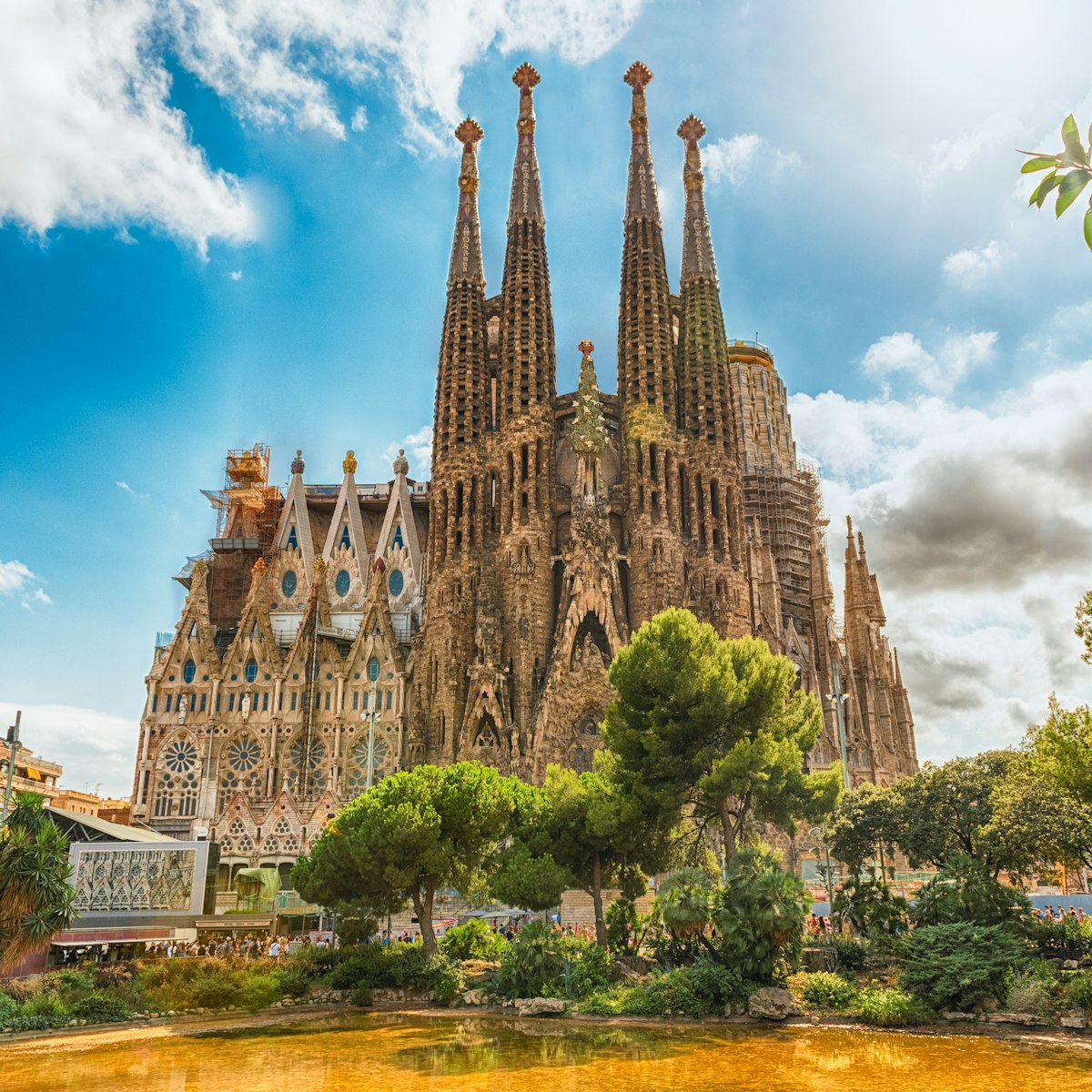
La Sagrada Família
L'Eixample
The Temple Expiatori de la Sagrada Família (Expiatory Temple of the Holy Family) is considered to be the symbol of Barcelona by many residents, and the…
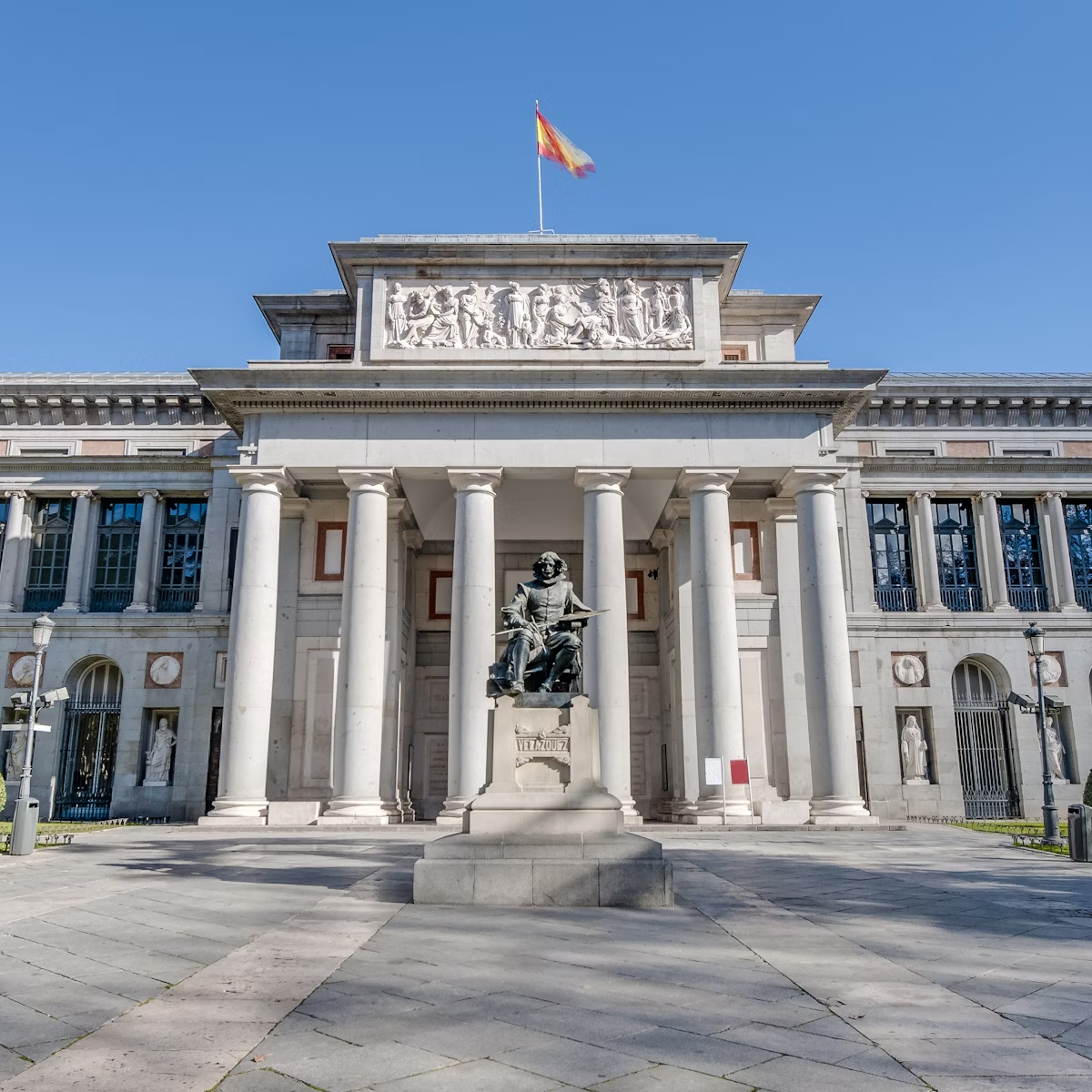
Museo del Prado
Welcome to one of the world's premier art galleries. More than 7000 paintings are held in the Museo del Prado’s collection (of which only around 1500 are…
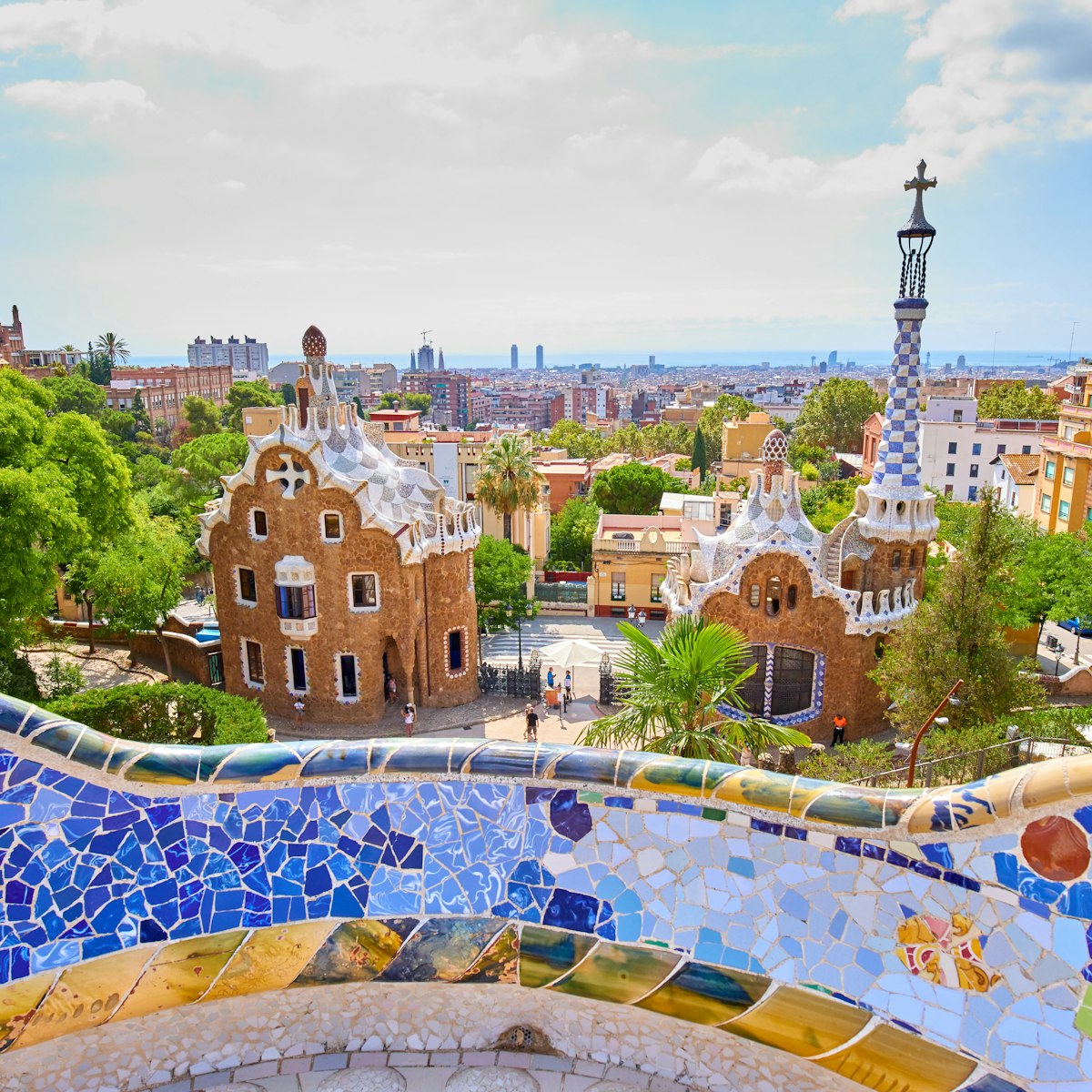
Visitors and locals alike love Park Güell. The waving balcony and the colorful Guard’s House, with the imposing Barcelona skyline and sea in the…

Centro de Arte Reina Sofía
Home to Picasso’s Guernica, arguably Spain’s most famous artwork, the Centro de Arte Reina Sofía is Madrid’s premier collection of contemporary art.
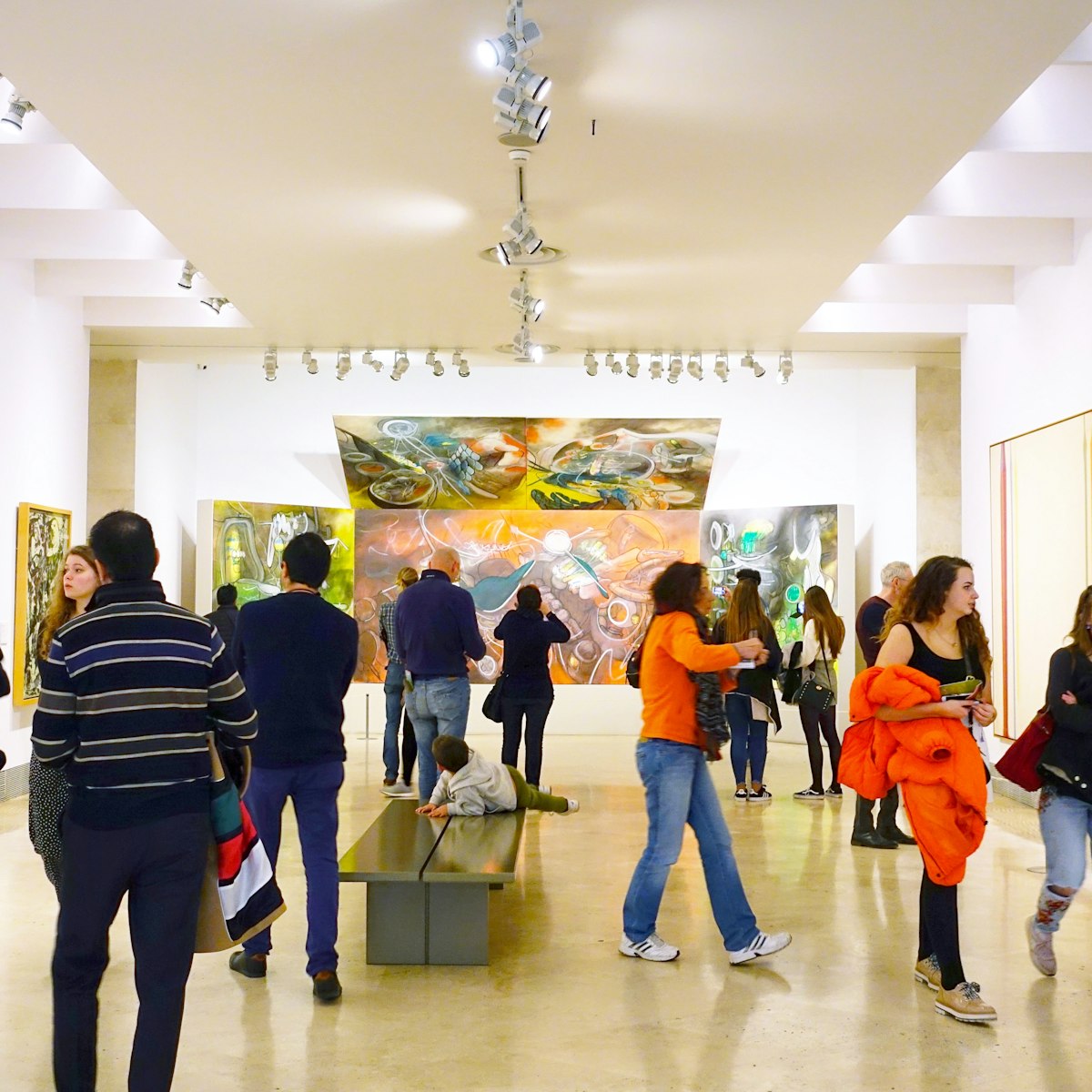
Museo Thyssen-Bornemisza
The Thyssen-Bornemisza Museum is one of the three points composing Madrid’s Golden Triangle of Art along the Paseo del Prado (Art Walk), together with the…
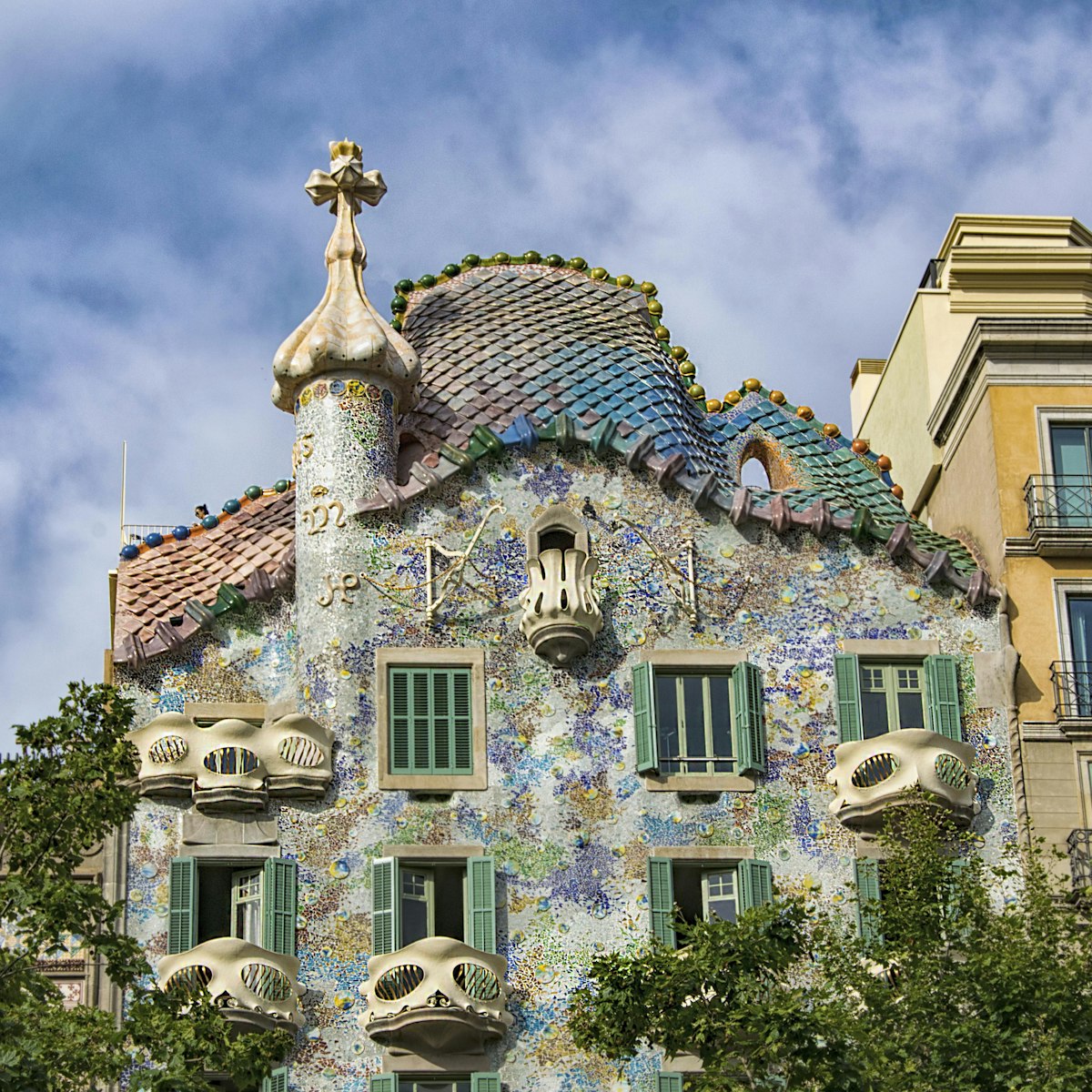
Casa Batlló
One of Europe's strangest residential buildings, Casa Batlló (built 1904–6) is Gaudí at his fantastical best. From its playful facade and marine-world…
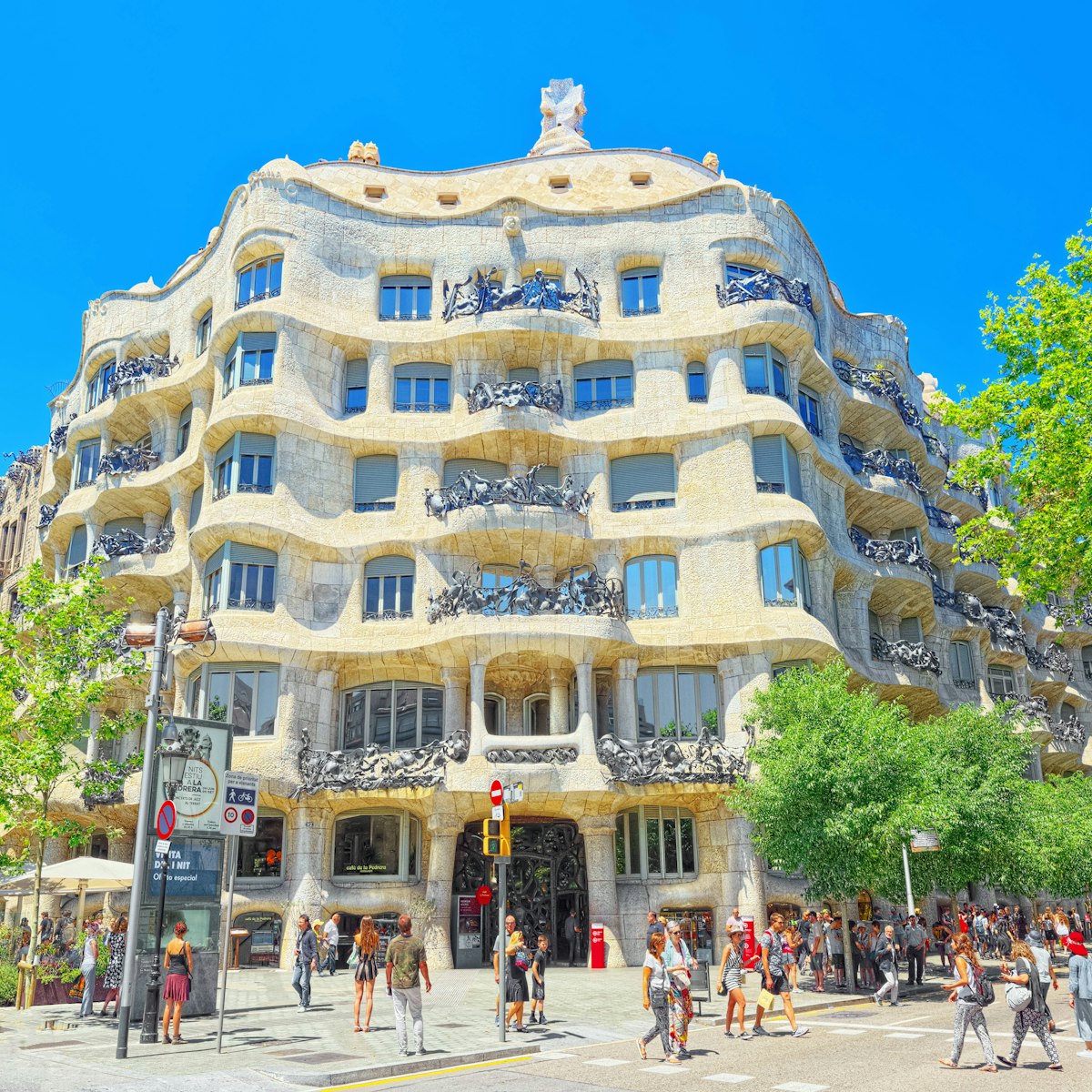
In the top tier of Gaudí's achievements, this madcap Unesco-listed masterpiece, with 33 balconies, was built in 1905–10 as a combined apartment and office…
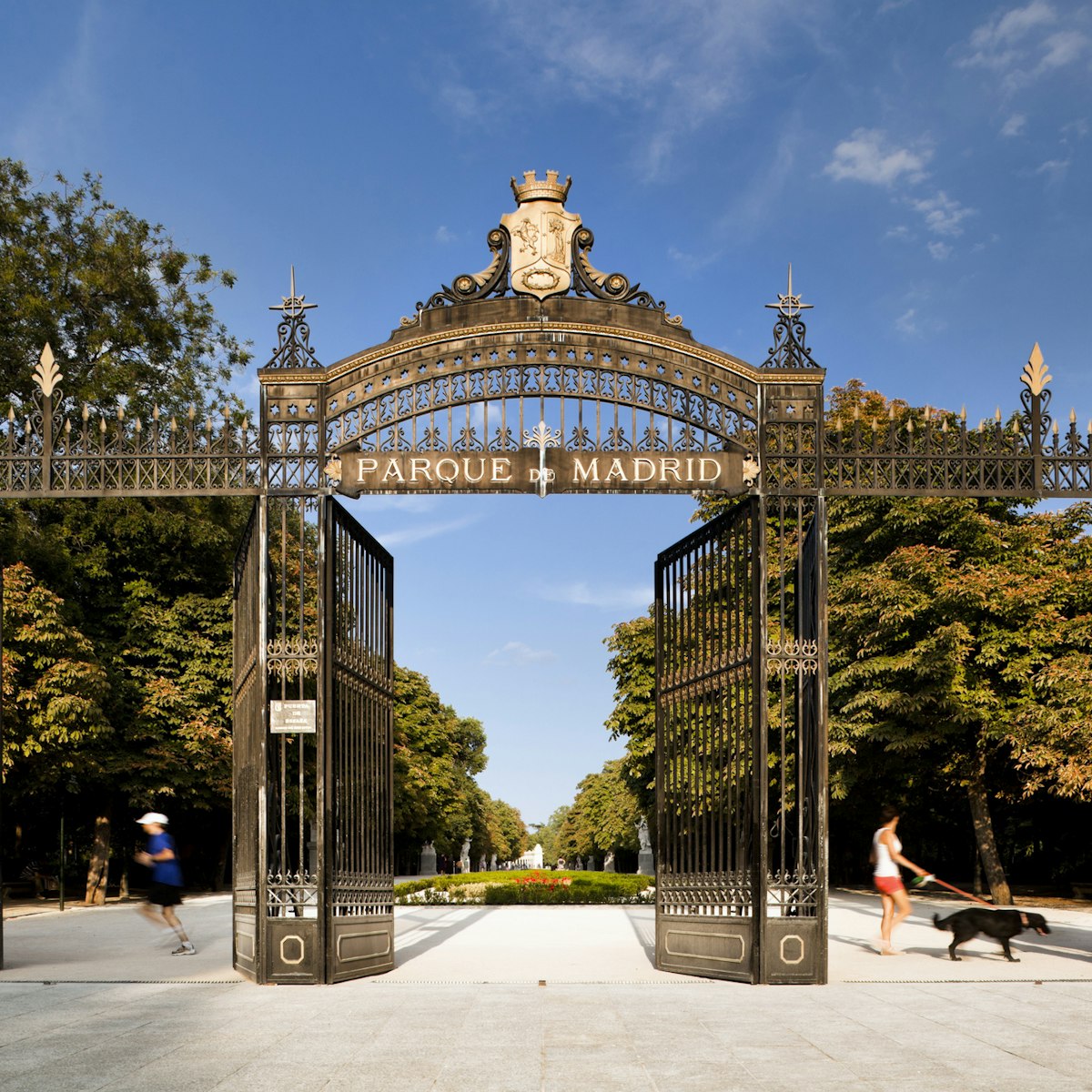
Parque del Buen Retiro
Spend a day exploring the vast grounds of Madrid’s emblematic park.
Top picks from our travel experts
20 of the best things to do in spain.
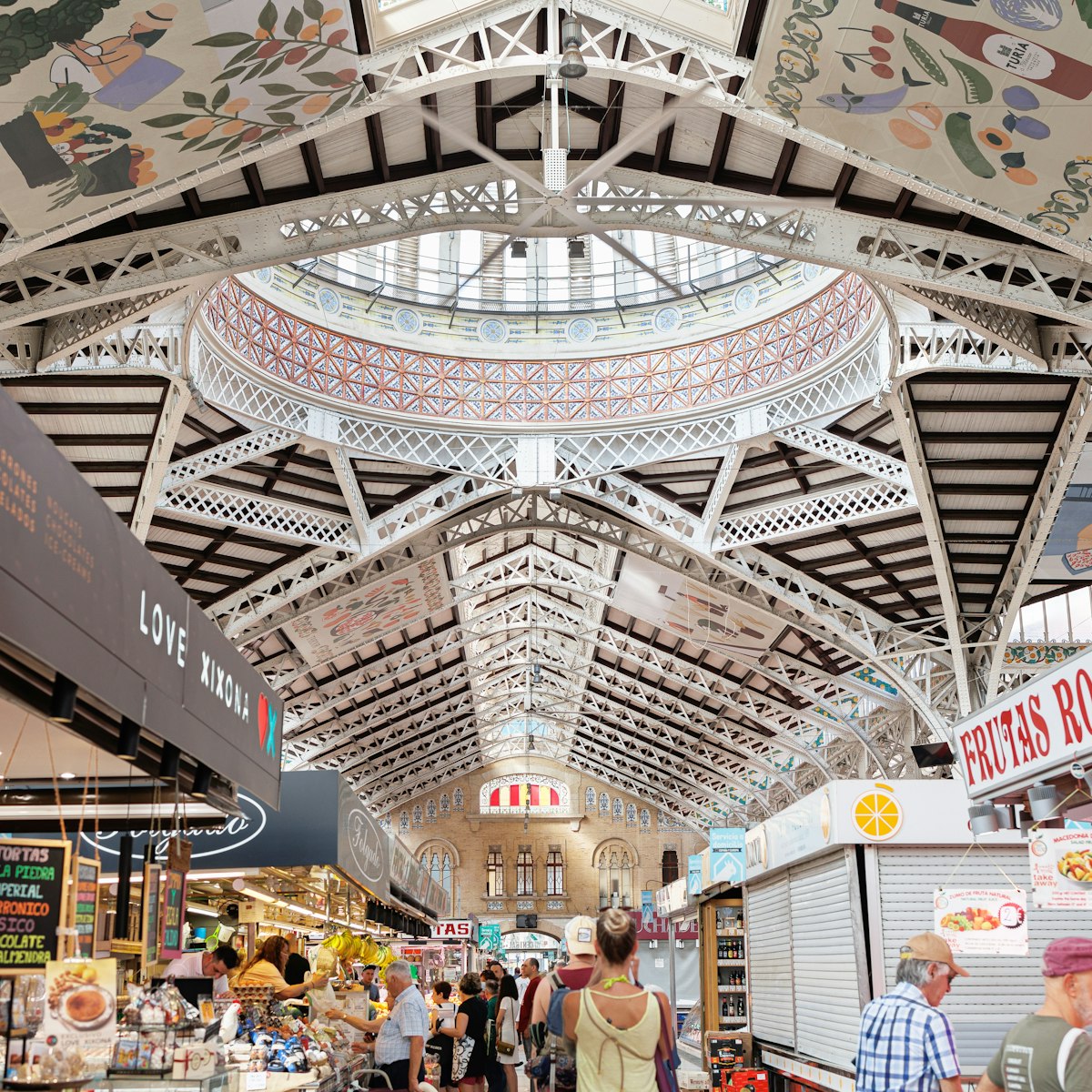
Mercado Central
Valencia’s vast Modernista covered market, constructed in 1928, is a swirl of smells, movement and colour. Spectacular seafood counters display…
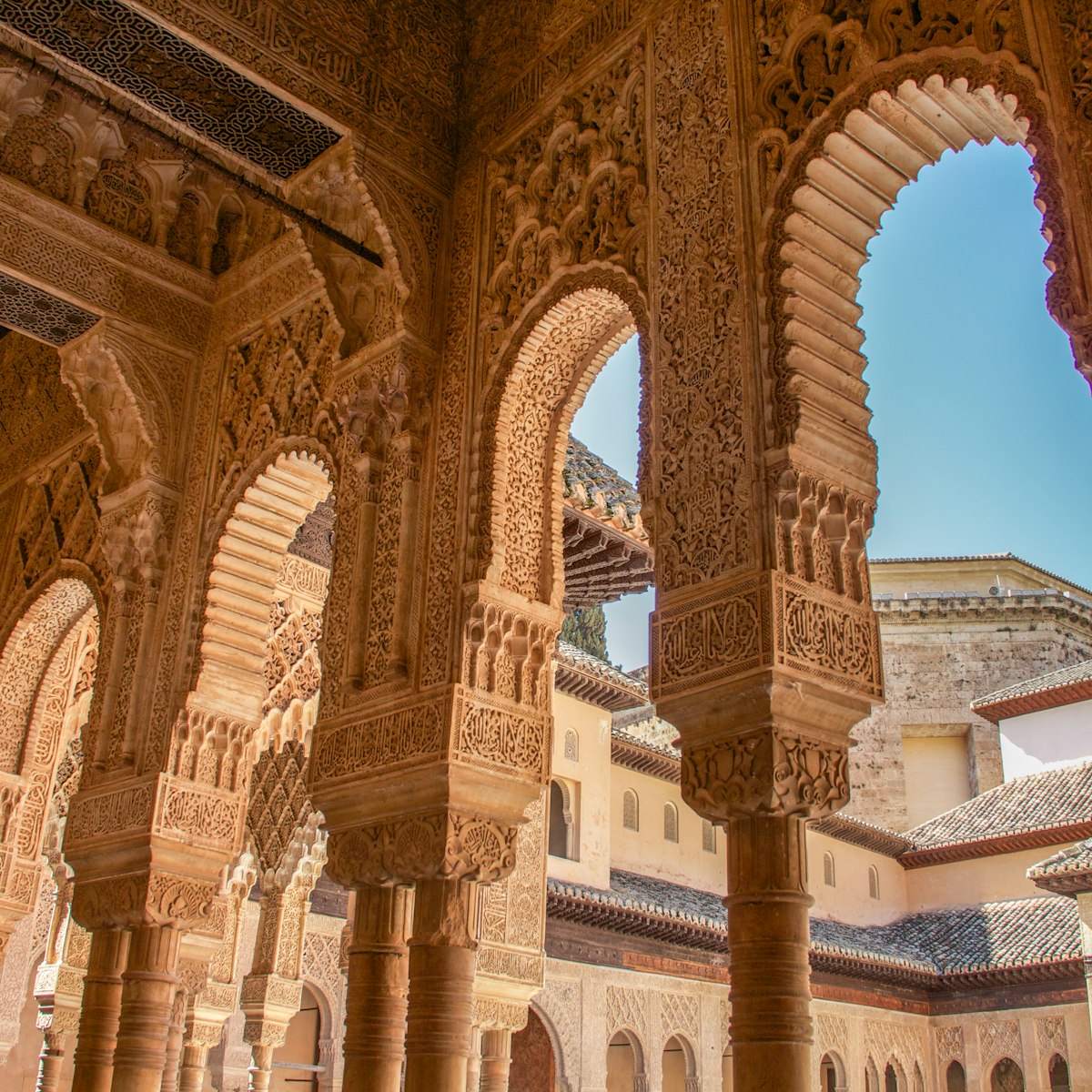
The Alhambra is Granada’s – and Europe’s – love letter to Moorish culture. Set against the brooding Sierra Nevada peaks, this fortified palace started…
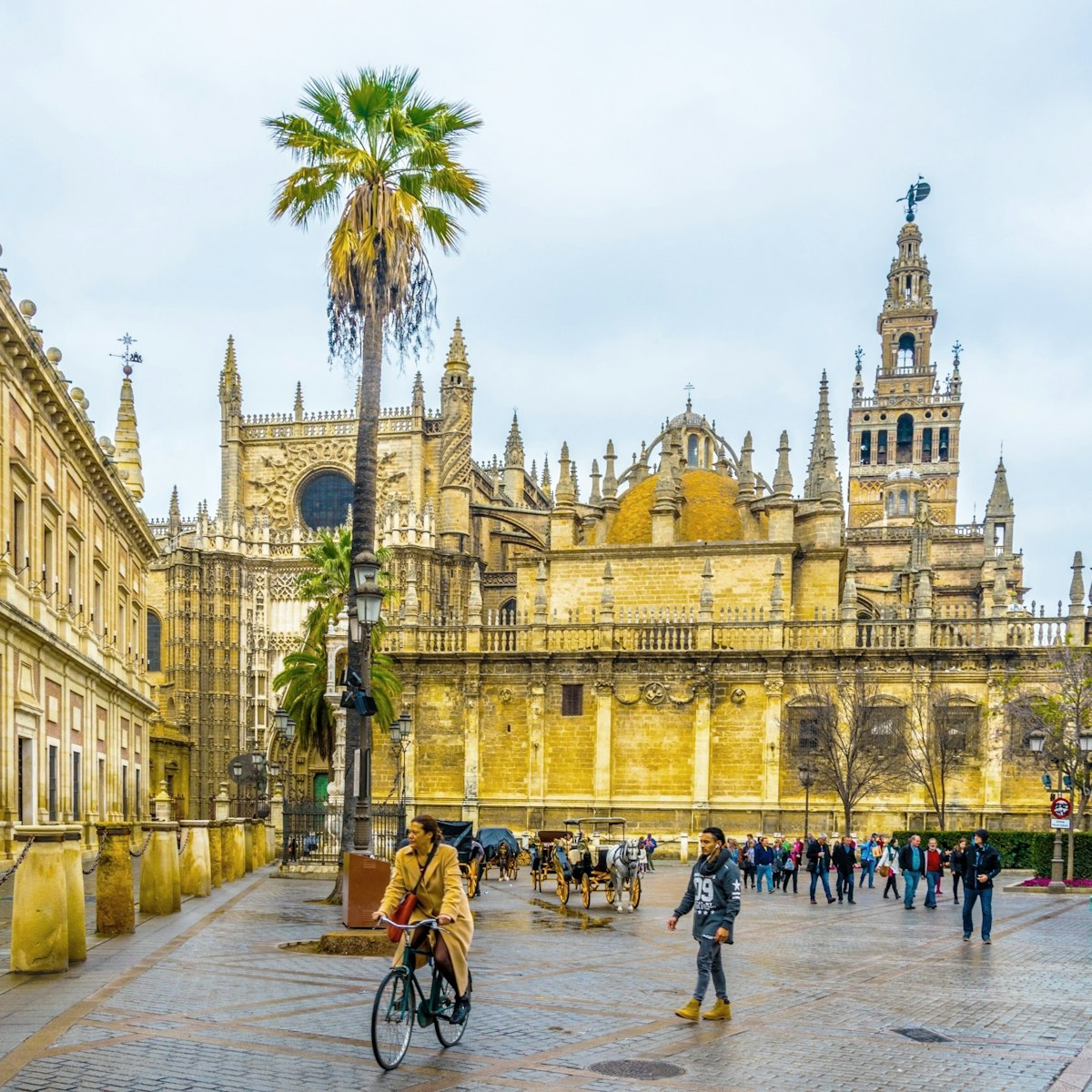
Catedral & Giralda
Catedral & Barrio de Santa Cruz
Seville’s showpiece church is awe-inspiring in its scale and majesty. The world’s largest Gothic cathedral, it was built between 1434 and 1517 over the…

Casa Vicens
A Unesco-listed masterpiece, this angular, turreted 1885-completed private house was Gaudí’s inaugural commission, when the architect was aged just 30,…
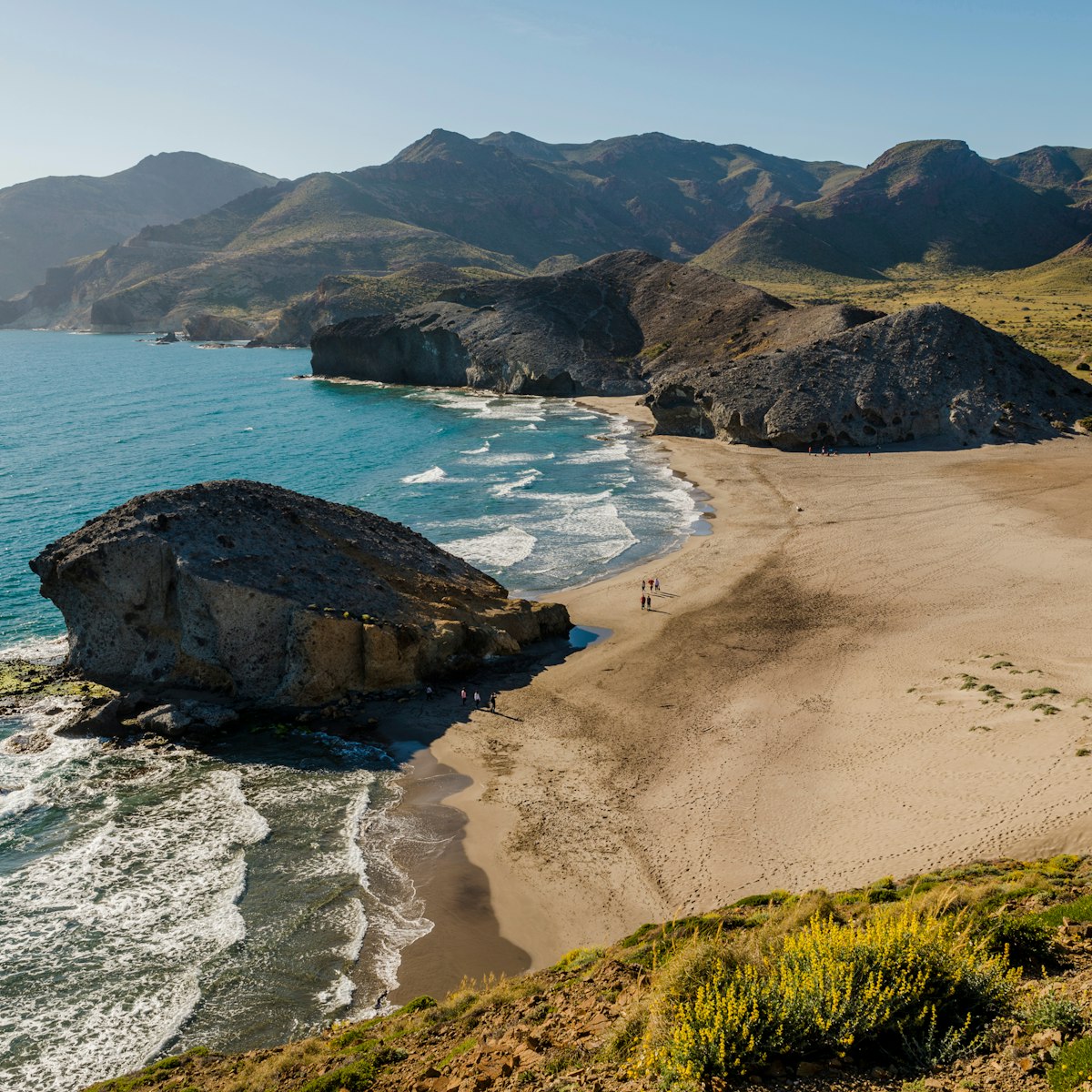
Parque Natural de Cabo de Gata-Níjar
Costa de Almería
Boasting glorious beaches, vertiginous cliffs and a semi-desert hinterland, this 340-sq-km park occupies Andalucía’s southeastern corner. It’s a wild…
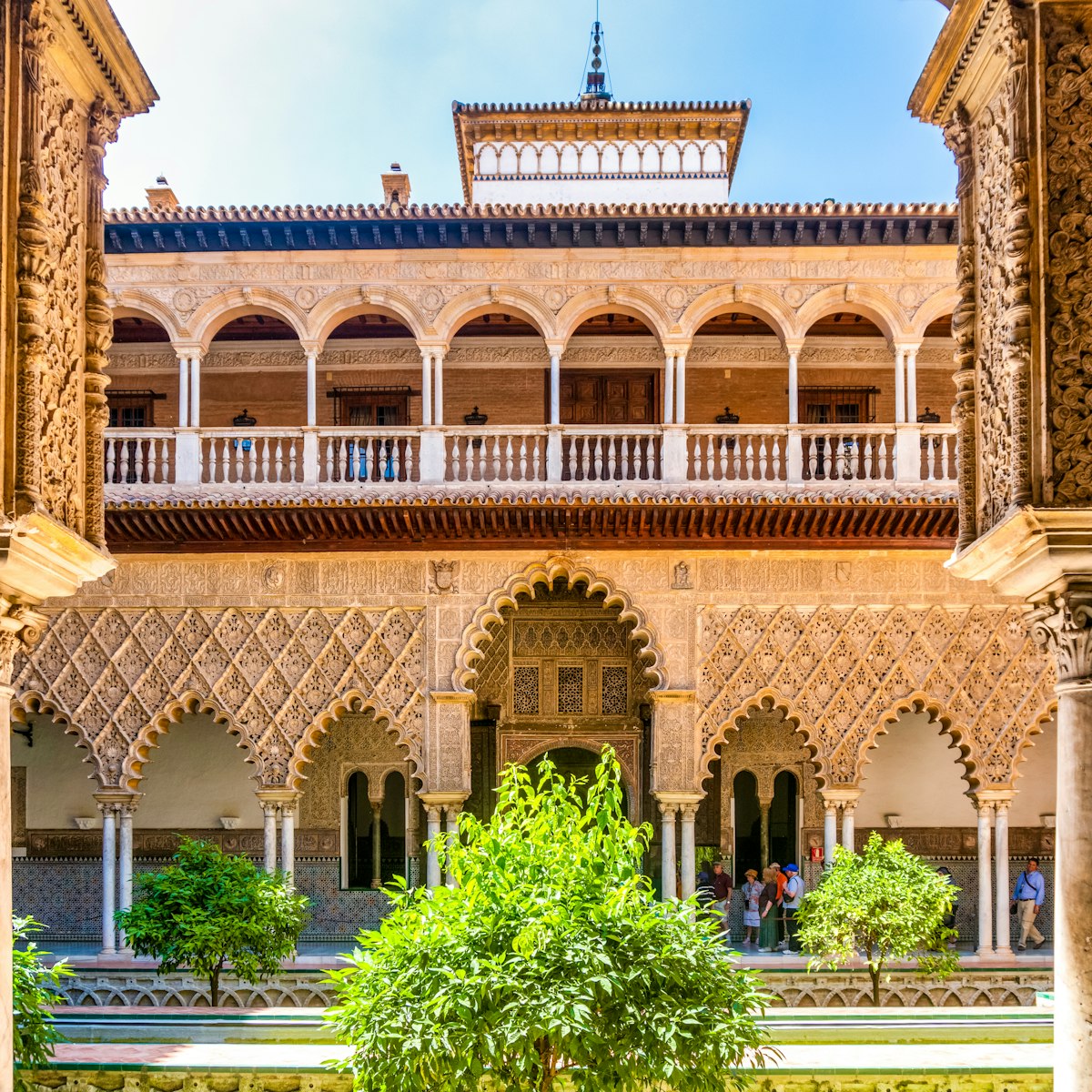
Real Alcázar
A magnificent marriage of Christian and Mudéjar architecture, Seville’s royal palace complex is a breathtaking spectacle. The site, which was originally…
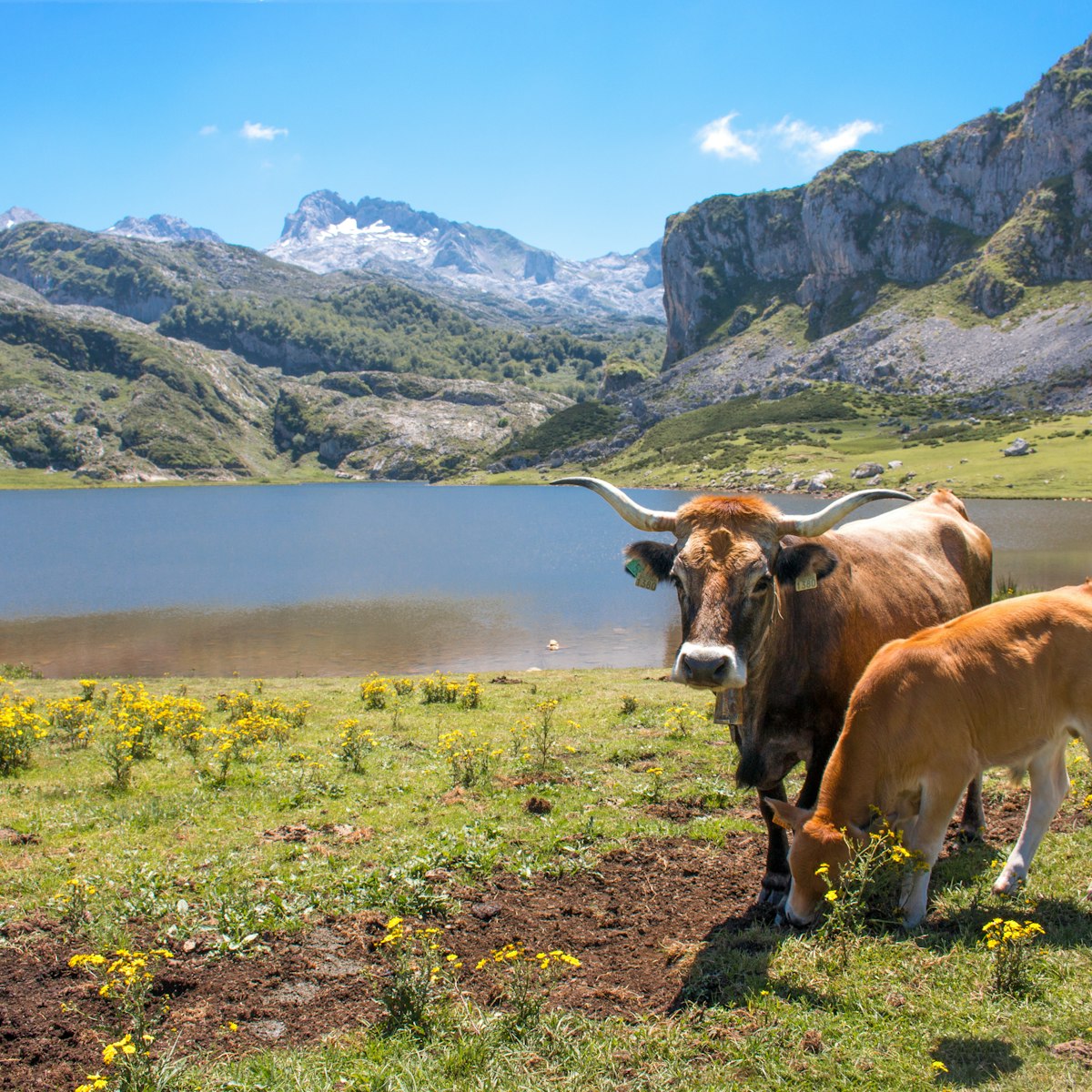
Parque Nacional de los Picos de Europa
Picos de Europa
Founded in 1918 as one of Spain's first two national parks, the 646-square-kilometre Parque Nacional de los Picos de Europa encompasses some of Europe's…
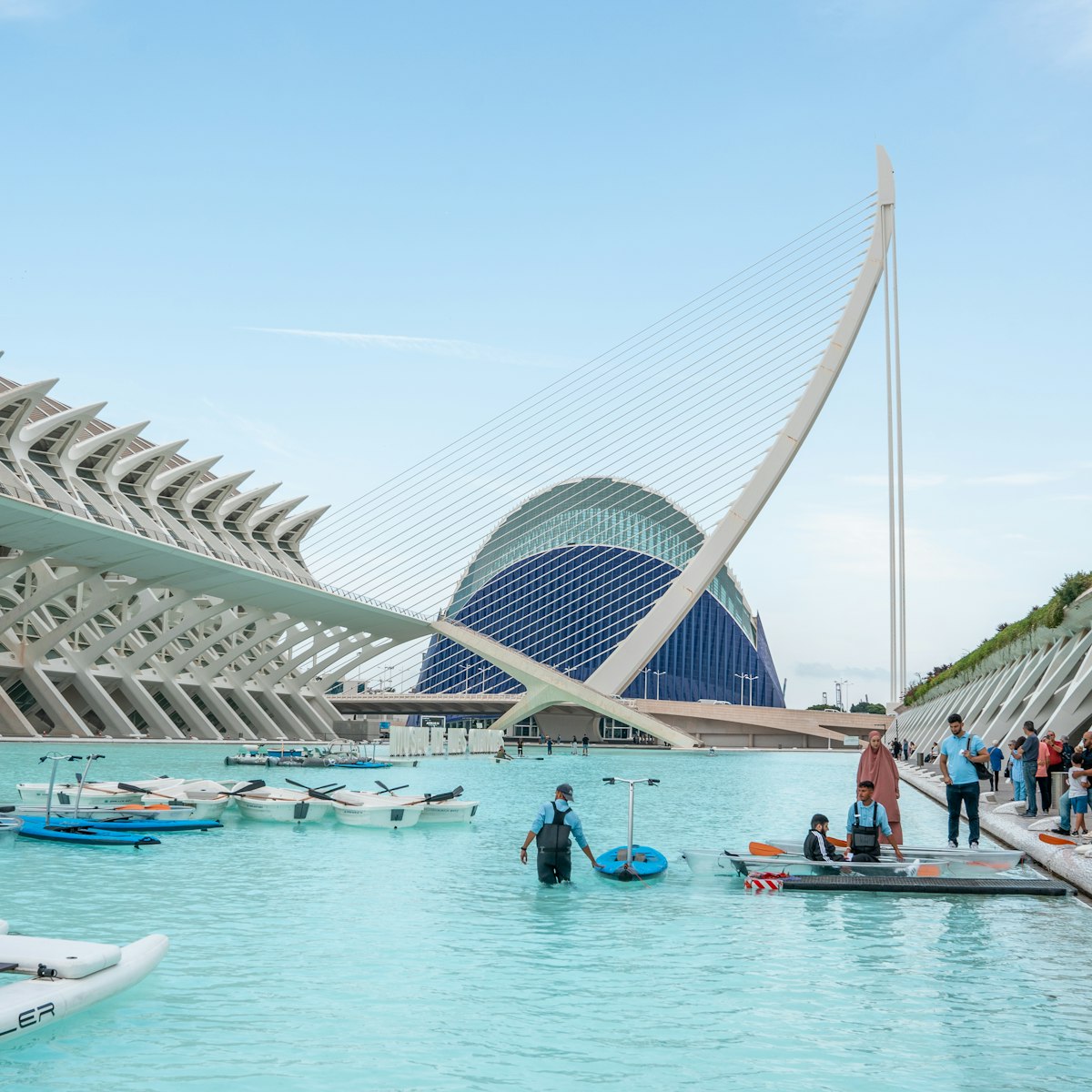
Ciudad de las Artes y las Ciencias
L'Eixample & Southern Valencia
This aesthetically stunning complex occupies a massive 350,000-sq-metre swath of the old Turia riverbed. It’s occupied by a series of spectacular…
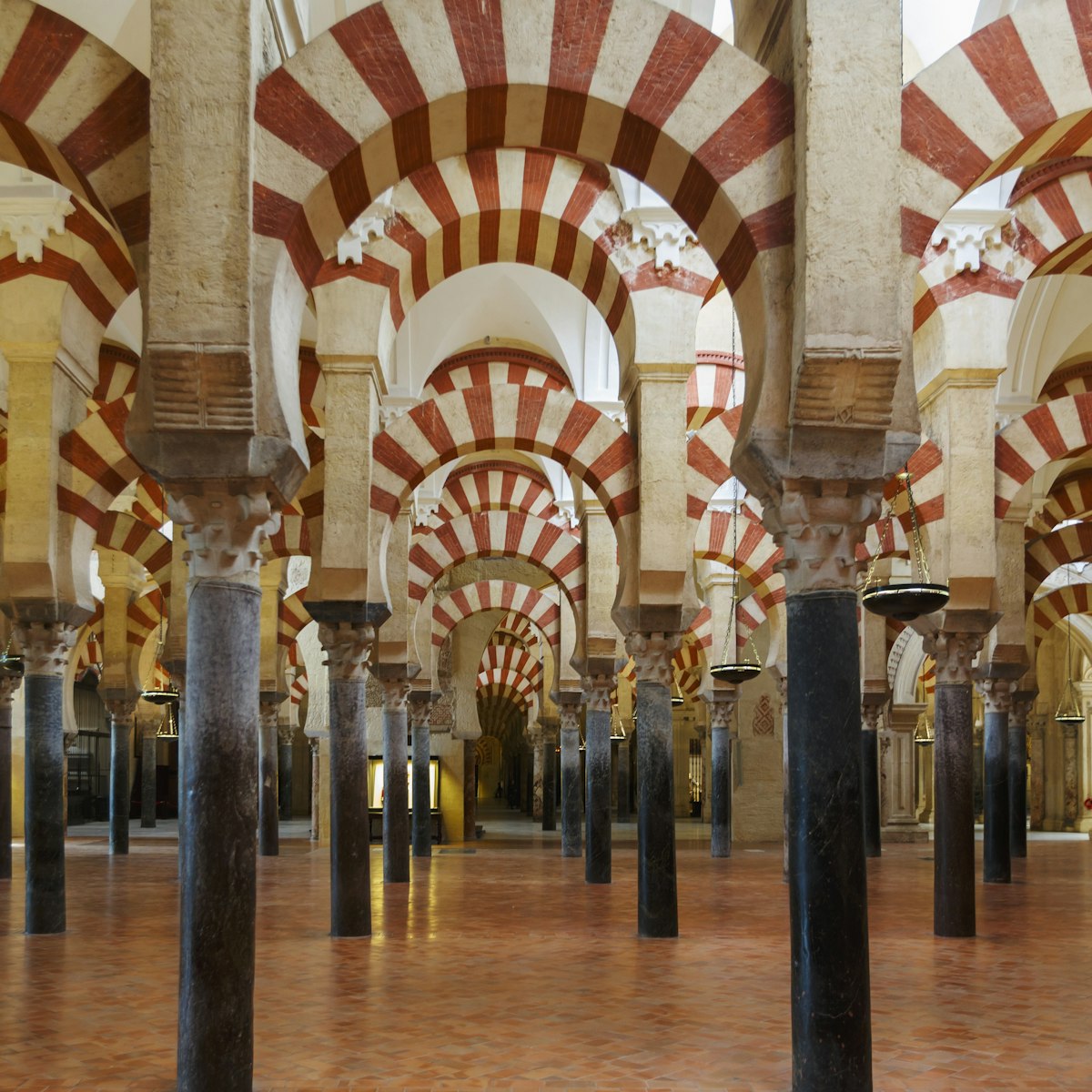
It’s impossible to overemphasise the beauty of Córdoba’s great mosque, with its remarkably serene (despite tourist crowds) and spacious interior. One of…
Planning Tools
Expert guidance to help you plan your trip.
Best Things to Do
There are so many incredible experiences awaiting you in Spain. Here are some of the very best.
Things to Know
From speaking Spanish to avoiding common tourist mistakes, this guide full of top tips can get you ready for a trip to Spain.
Transportation
Traveling around Spain is convenient, efficient and manageable — thanks to its advanced and accessible public transport infrastructure.
Visa Requirements
Don't let your visa application mess up your trip to Spain. Here's everything you need to know about whether you need one.
Money and Costs
Compared to the rest of Europe, Spain is easy on the eyes and even easier on the wallet. Here are the best ways to save money while you're there.
Traveling with Kids
Of all the places to travel with children, Spain is up there with the best of them. Here are some of the best things to do with kids in this dynamic country.
Best Road Trips
Set out for history, natural beauty and delicious flavors on these five road-trip itineraries, which will show you the best of Spain.
Plan with a local
Experience the real Spain
Let a local expert craft your dream trip.
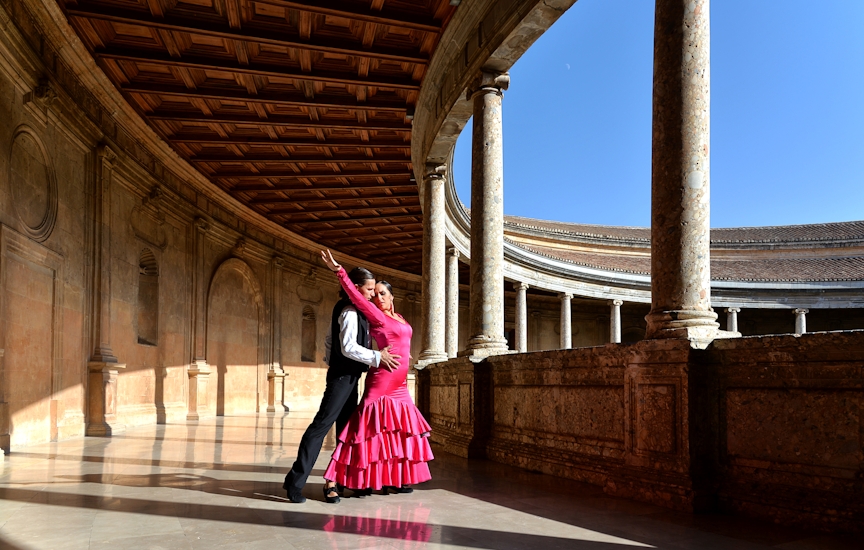
Latest stories from Spain
Filter by interest:
- All Interests
- Adventure Travel
- Art & Culture
- Beaches, Coasts & Islands
- Food & Drink
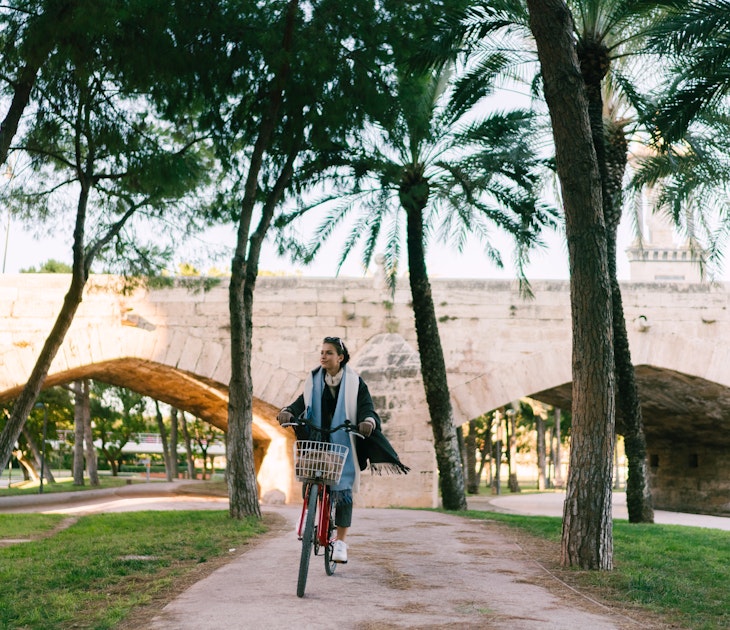
Apr 16, 2024 • 7 min read
Explore the Old Town, go for a leisurely cycle with kids, or head further afield on a former train line with these top rides around Valencia.
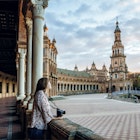
Apr 4, 2024 • 12 min read

Apr 3, 2024 • 15 min read

Mar 22, 2024 • 5 min read
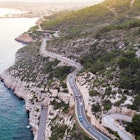
Mar 13, 2024 • 7 min read
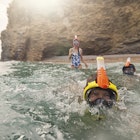
Mar 7, 2024 • 10 min read

Feb 13, 2024 • 7 min read

Nov 30, 2023 • 3 min read

Nov 7, 2023 • 7 min read

Oct 20, 2023 • 5 min read
in partnership with getyourguide
Book popular activities in Spain
Purchase our award-winning guidebooks.
Get to the heart of Spain with one of our in-depth, award-winning guidebooks, covering maps, itineraries, and expert guidance.
Spain and beyond
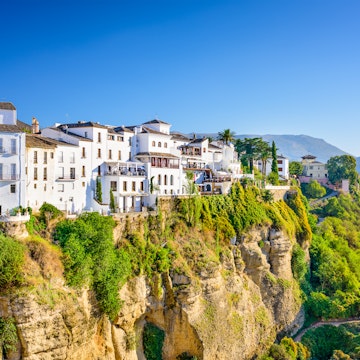
Travel Safe
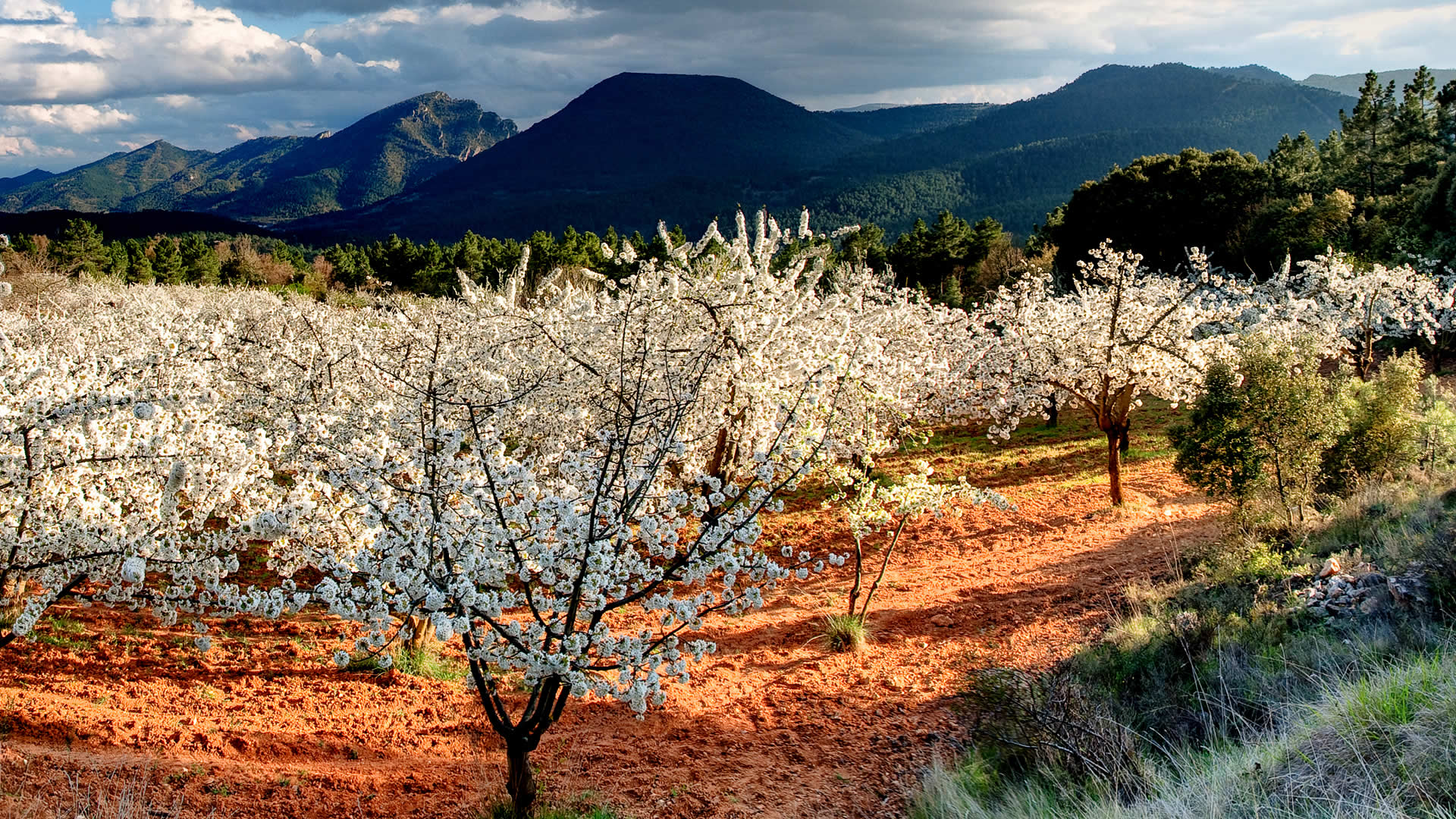
Spring time is here! Spain is filled with plans for you
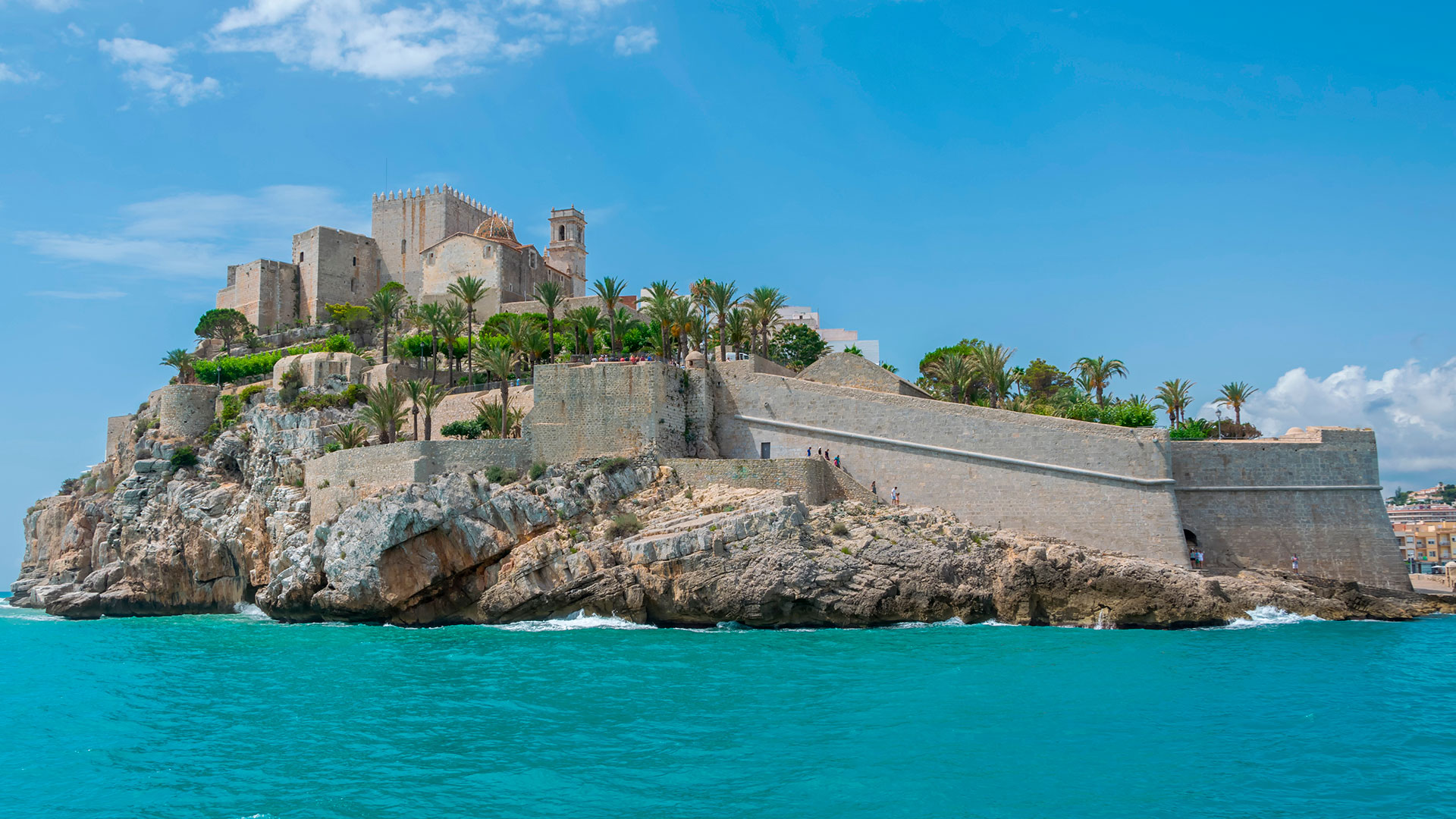
Visit fairytale castles in Spain's most beautiful towns

15 spectacular blossoms to experience up close
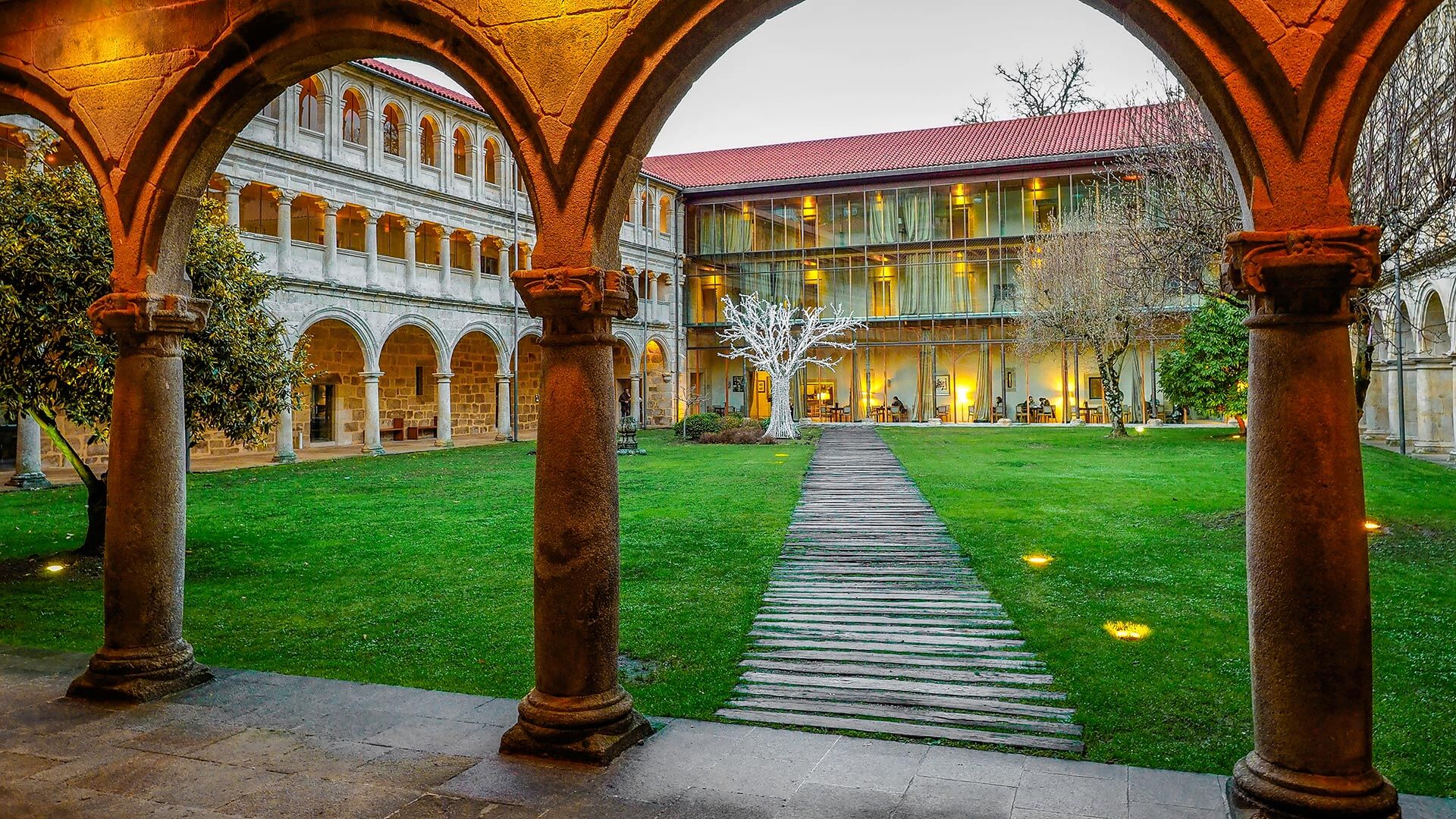
Route of the Monasteries in the Ribeira Sacra
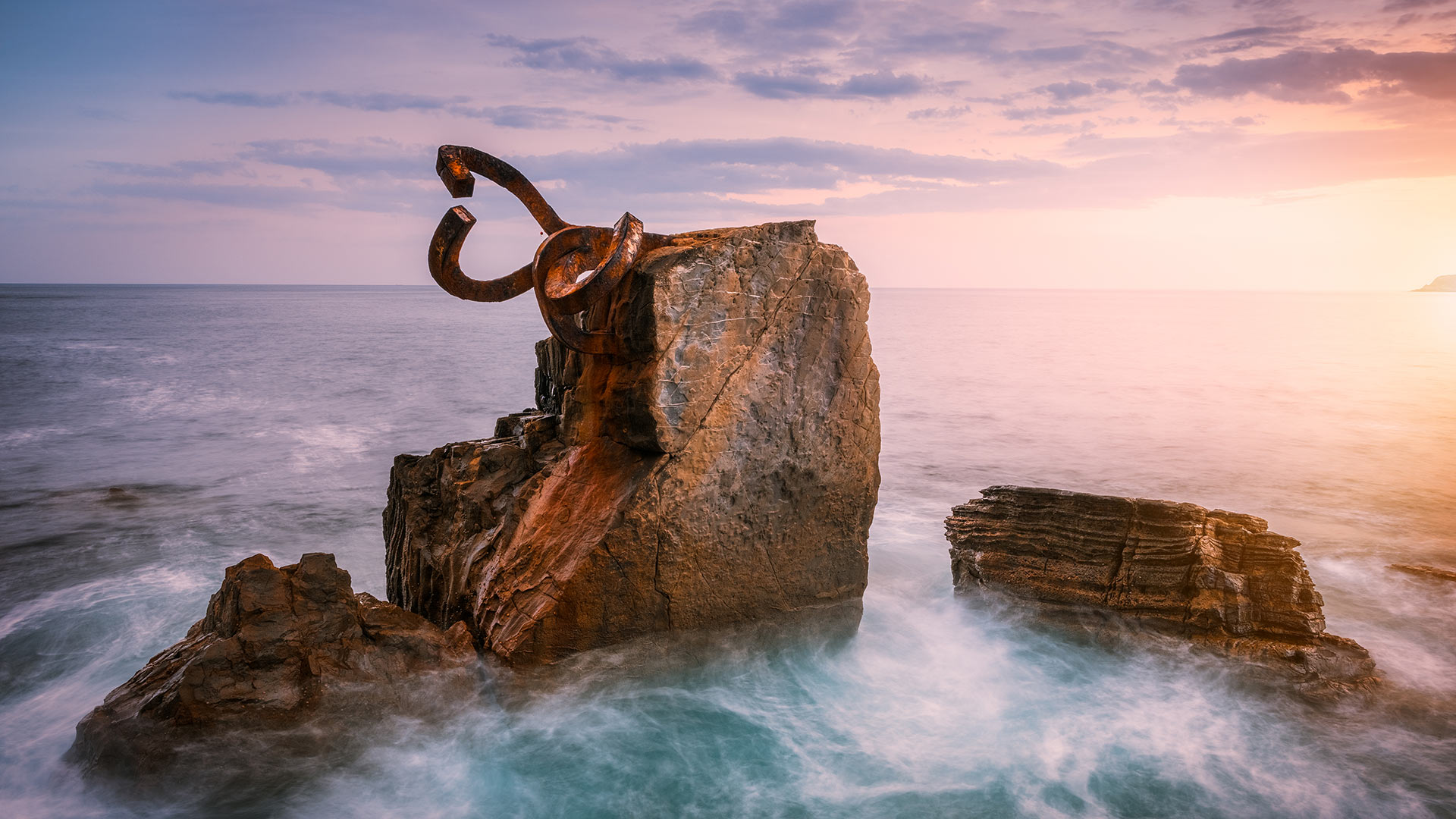
Chillida, 100 years of the universal Basque artist

Start the route with the best music festivals
Discover our destinations
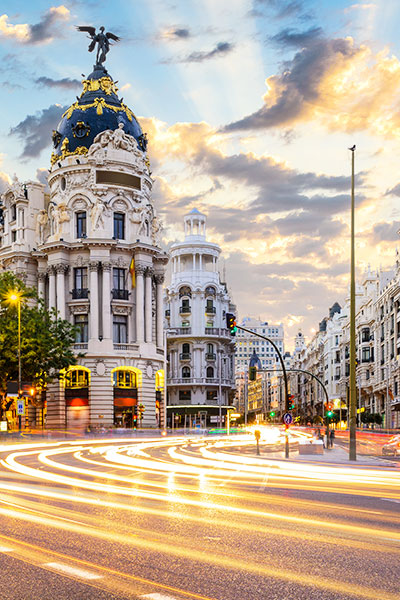
The capital city with a thousand options
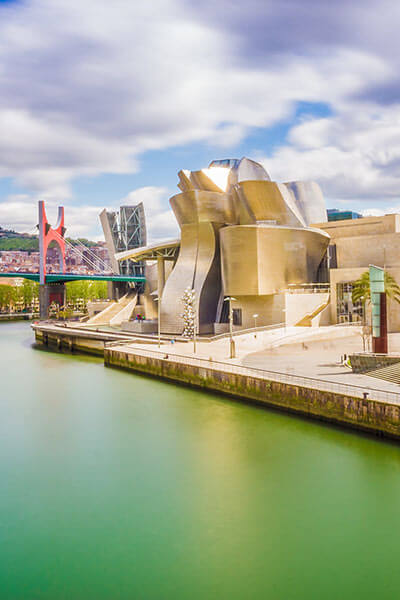
One of Spain’s most avant-garde cities
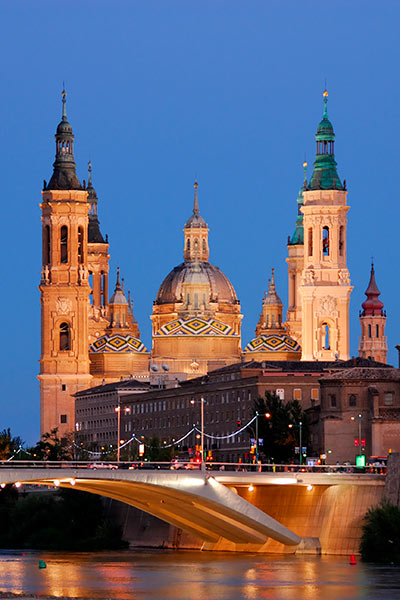
A great city with lots to discover
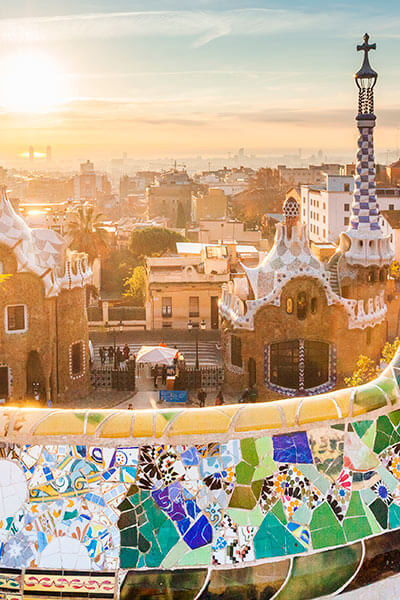
A cosmopolitan vibe
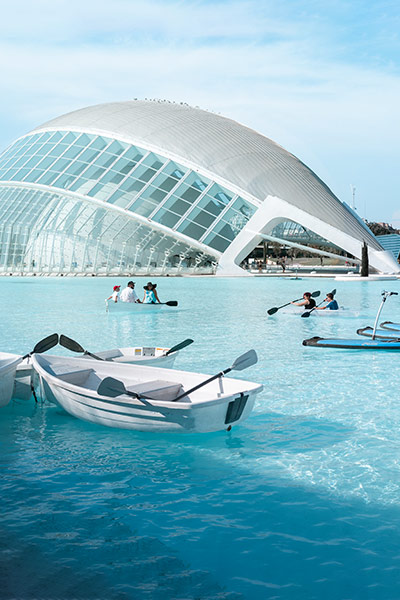
The essence of the Mediterranean
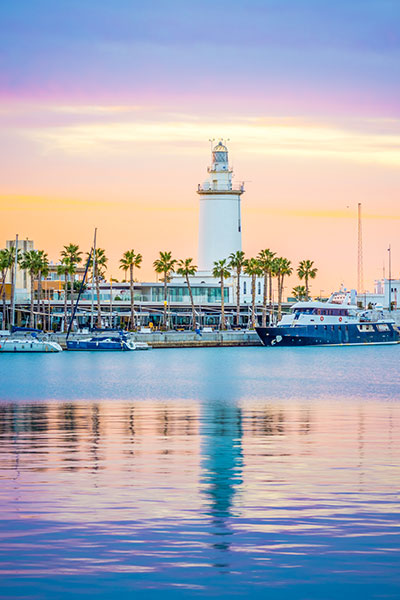
The capital of the Costa del Sol is reinventing itself
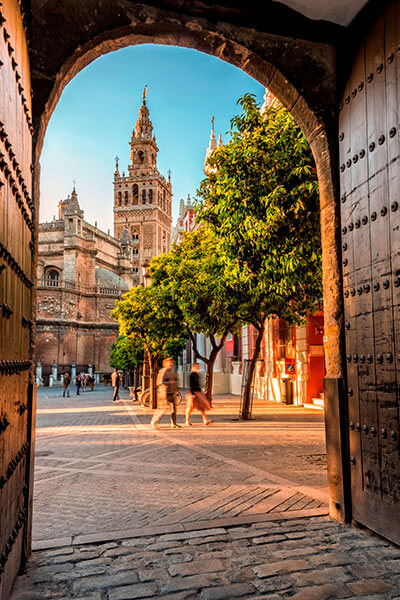
An inspiring destination
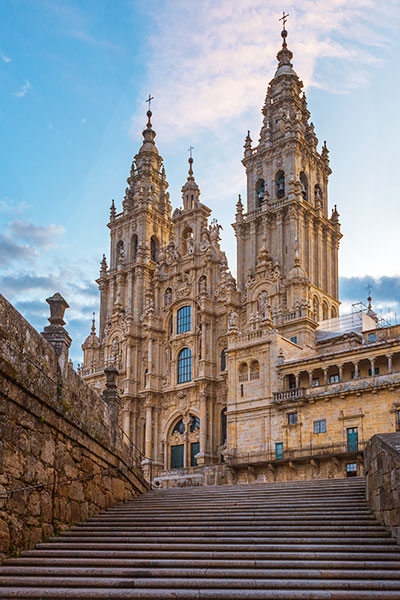
The final destination of St. James’ Way
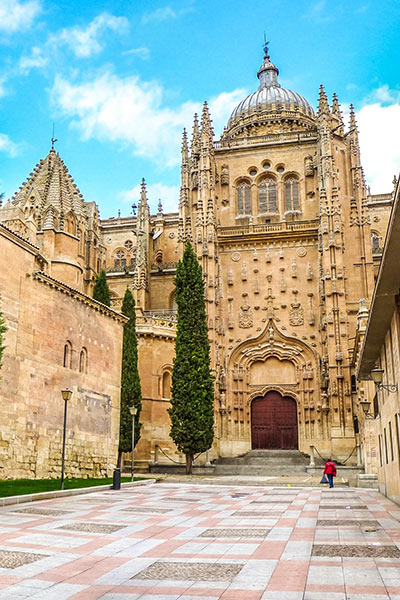
The Golden city of a thousand legends
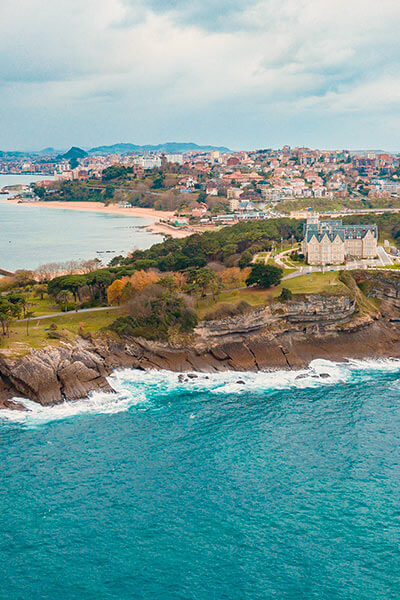
Ideal for a getaway
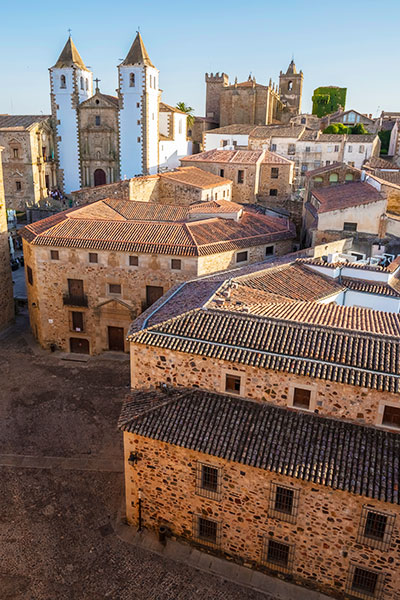
A picturesque medieval setting
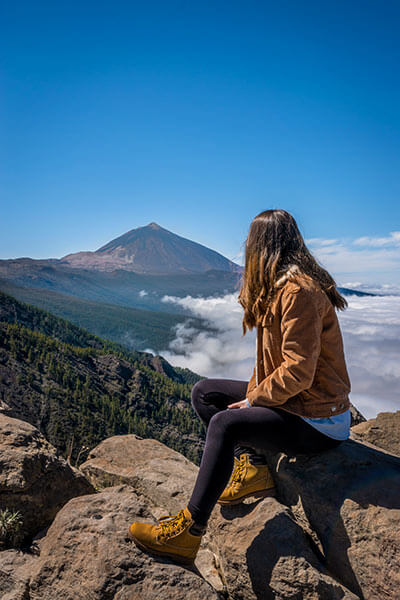
European sunshine capital
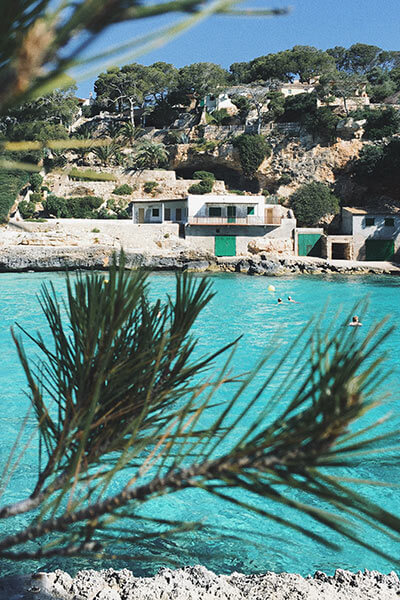
Idyllic coves, beautiful sunsets...
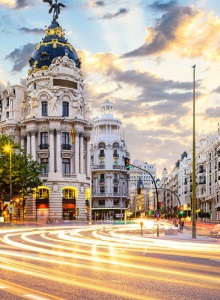
Santiago de Compostela

Canary Islands

Balearic Islands

Not to be missed
Choose the travel plan you like the most to make your stay in Spain unforgettable

Holiday ideas in Spain, depending on how and with whom you travel
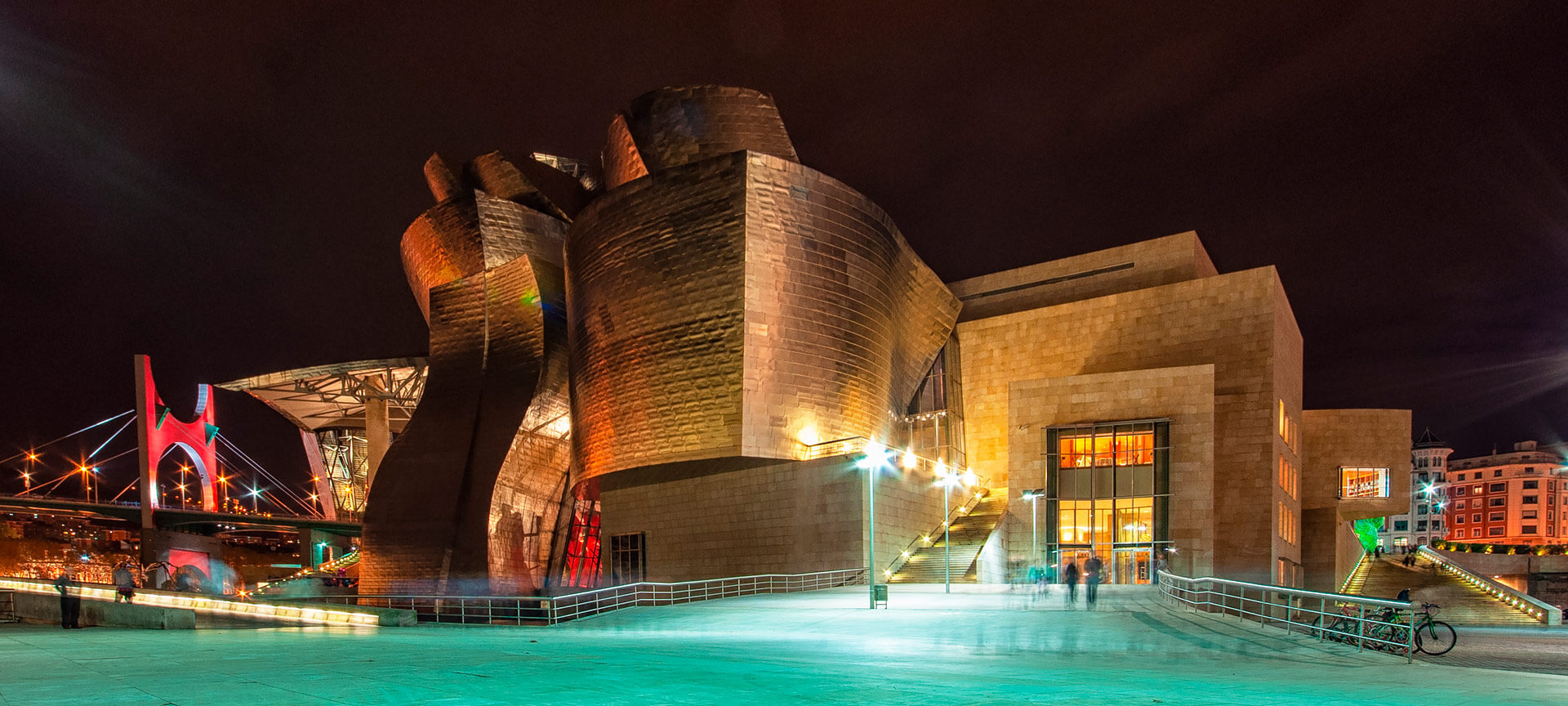
Museum Day is coming! Here are some ideas to make the most of it
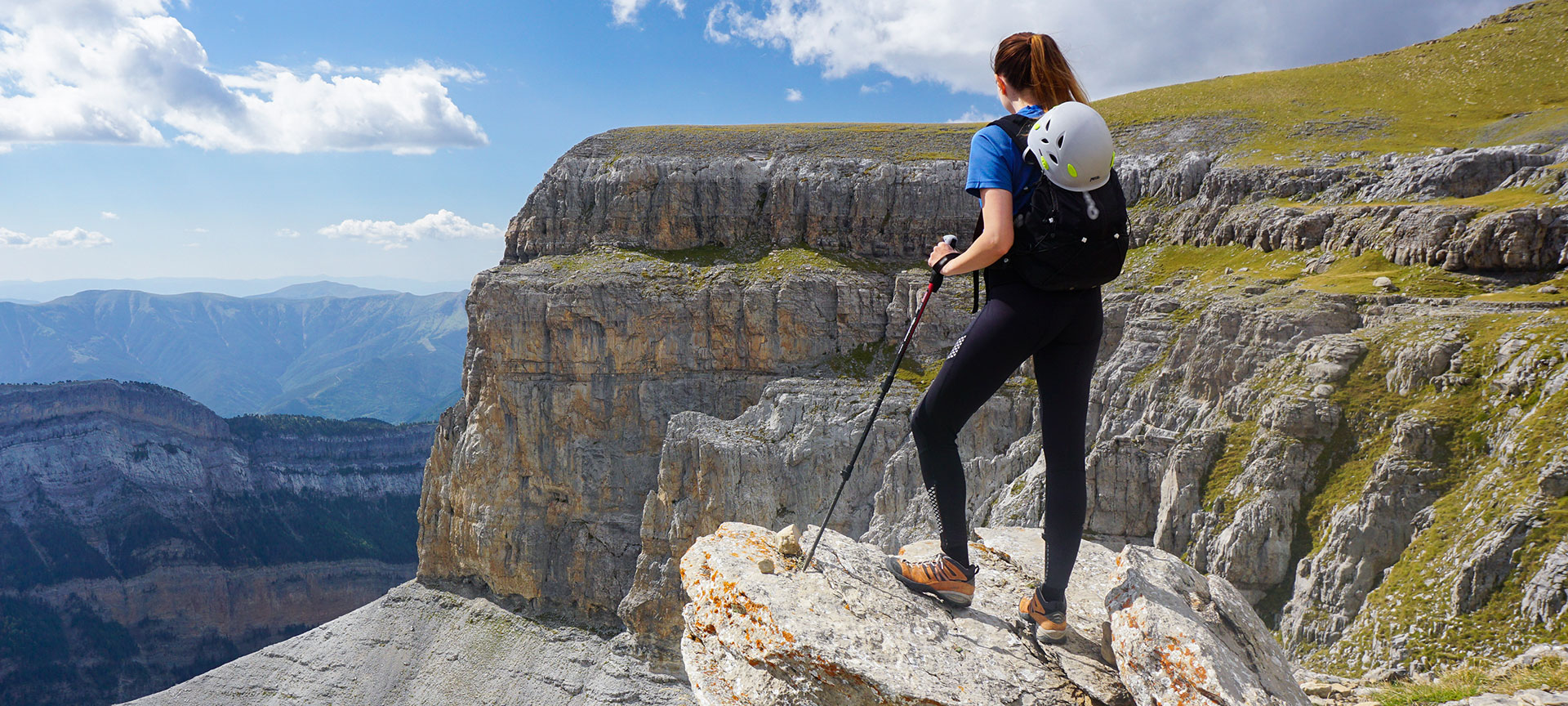
Sport and adventure
Come for a multi-adventure outing! Do you dare?
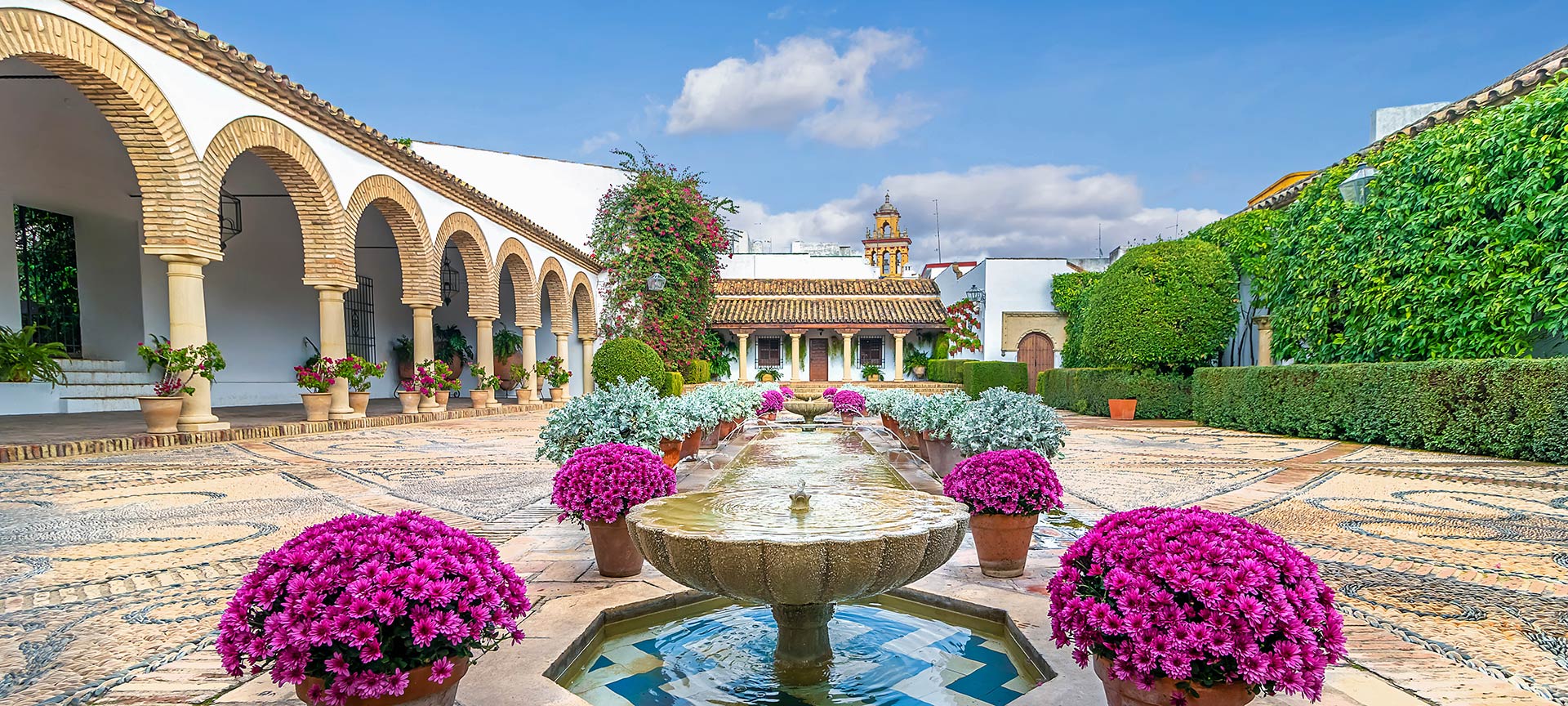
Urban tourism
Cordoba: the city with four visits to places considered as World Heritage sites, packed with festivals in May

Prepare a family getaway to the countryside

Other ideas for your trip
Do you want some more suggestions for your holidays?

Most popular spain.info TikTok videos

Our 10 most-liked photos on Instagram
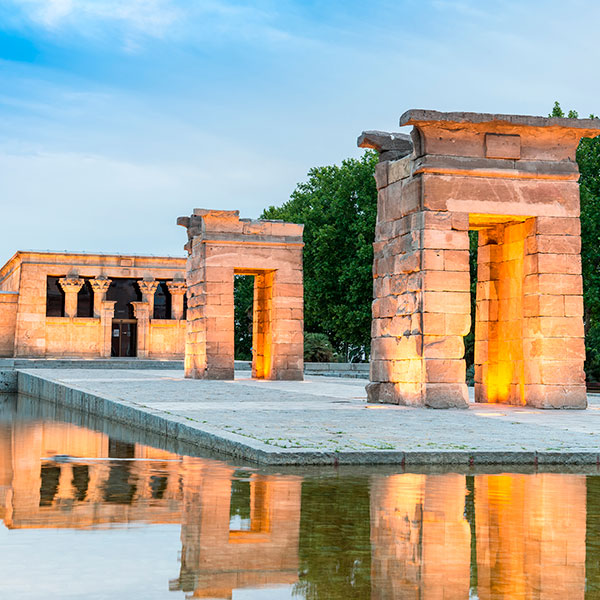
Rediscovering Madrid and Barcelona
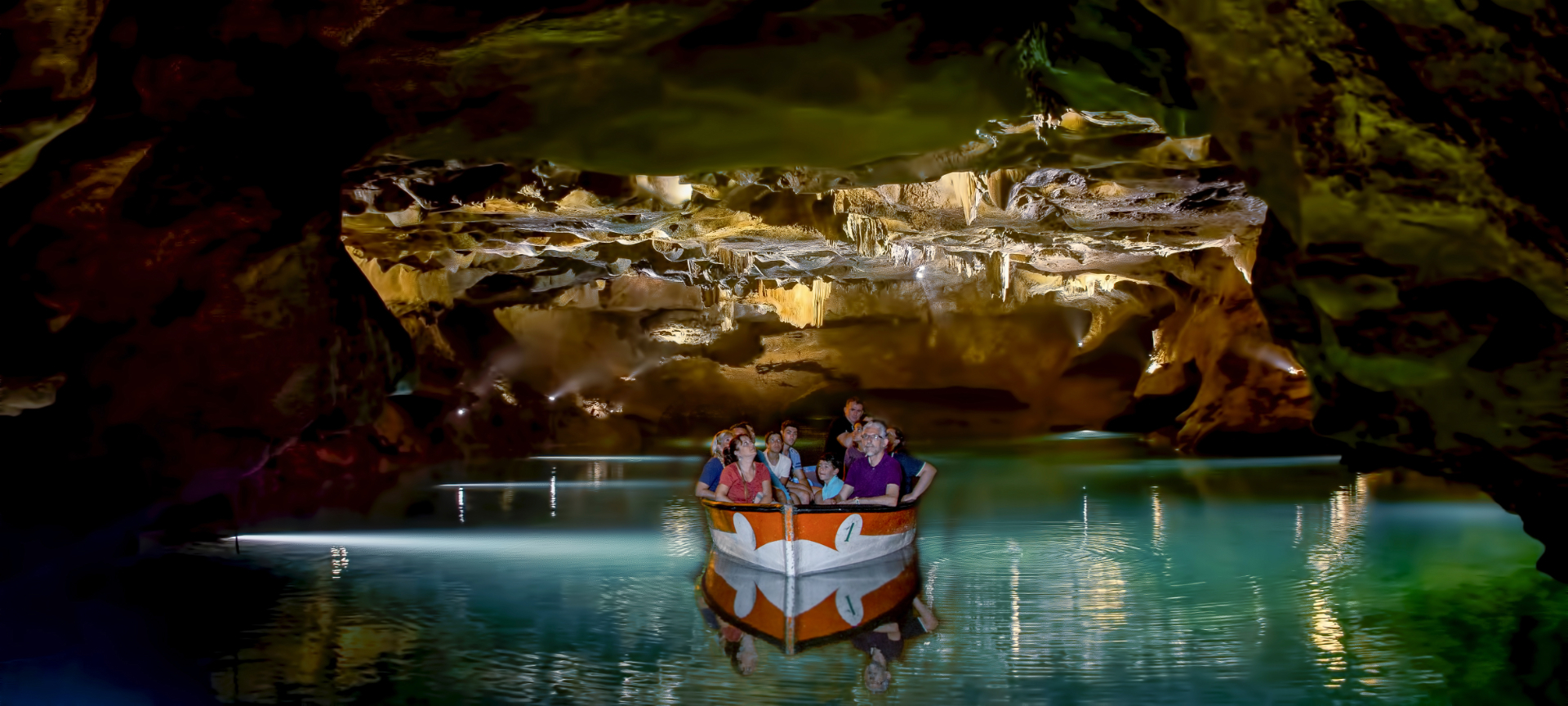
Magical natural places in Spain
Are you sure you want to delete this route?

Route planner
Create your own plan for your trip to Spain with a route to suit your requirements
Enjoy the best events
Exhibitions, festivals, festivities... Don't miss a thing!
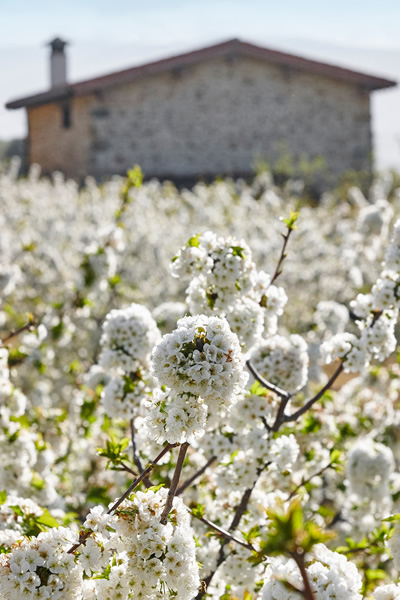
16 March 2024 - 03 May 2024
Cherry Blossom Festival

22 April 2024 - 05 May 2024
Tennis: Madrid Open

03 May 2024 - 05 May 2024
International Comic Fair
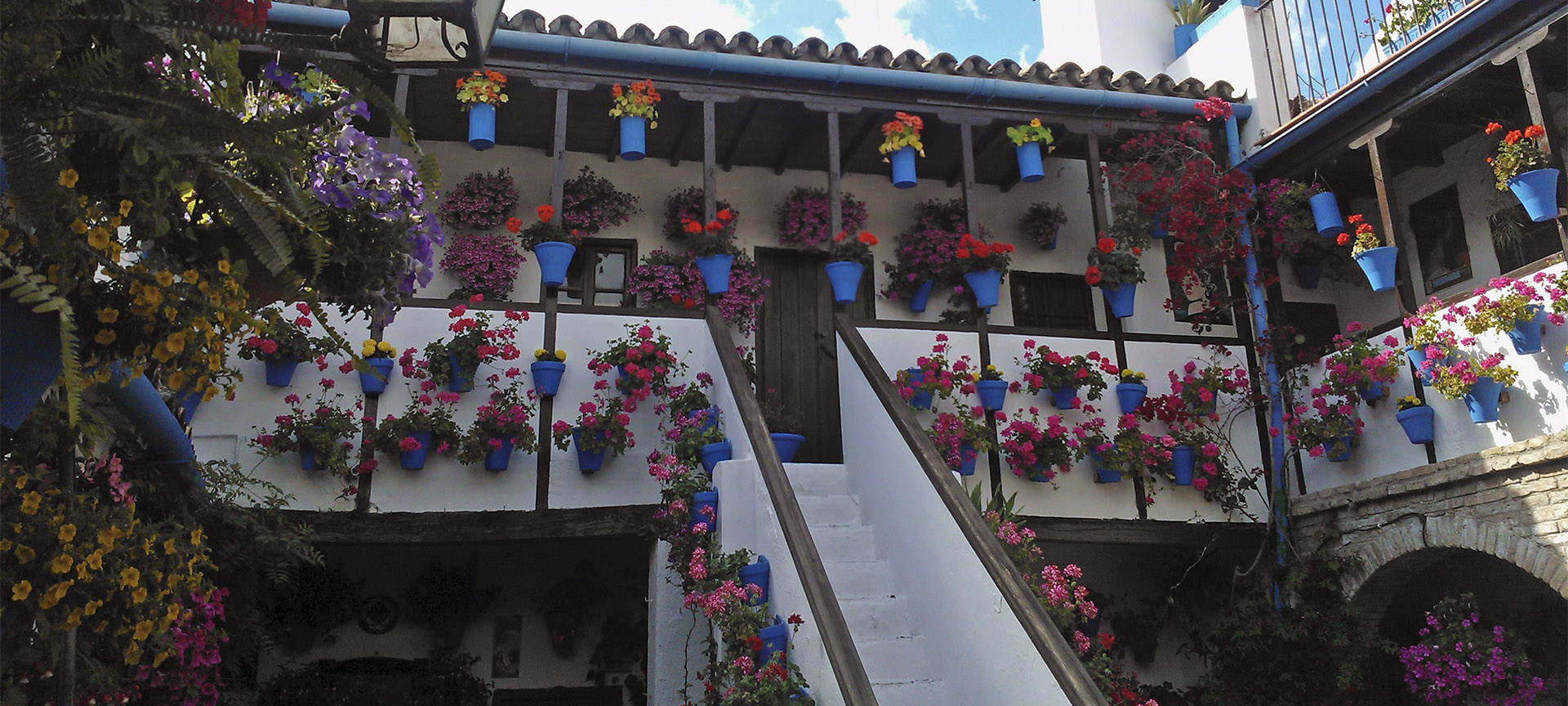
02 May 2024 - 12 May 2024
Festival of the Courtyards in Cordoba
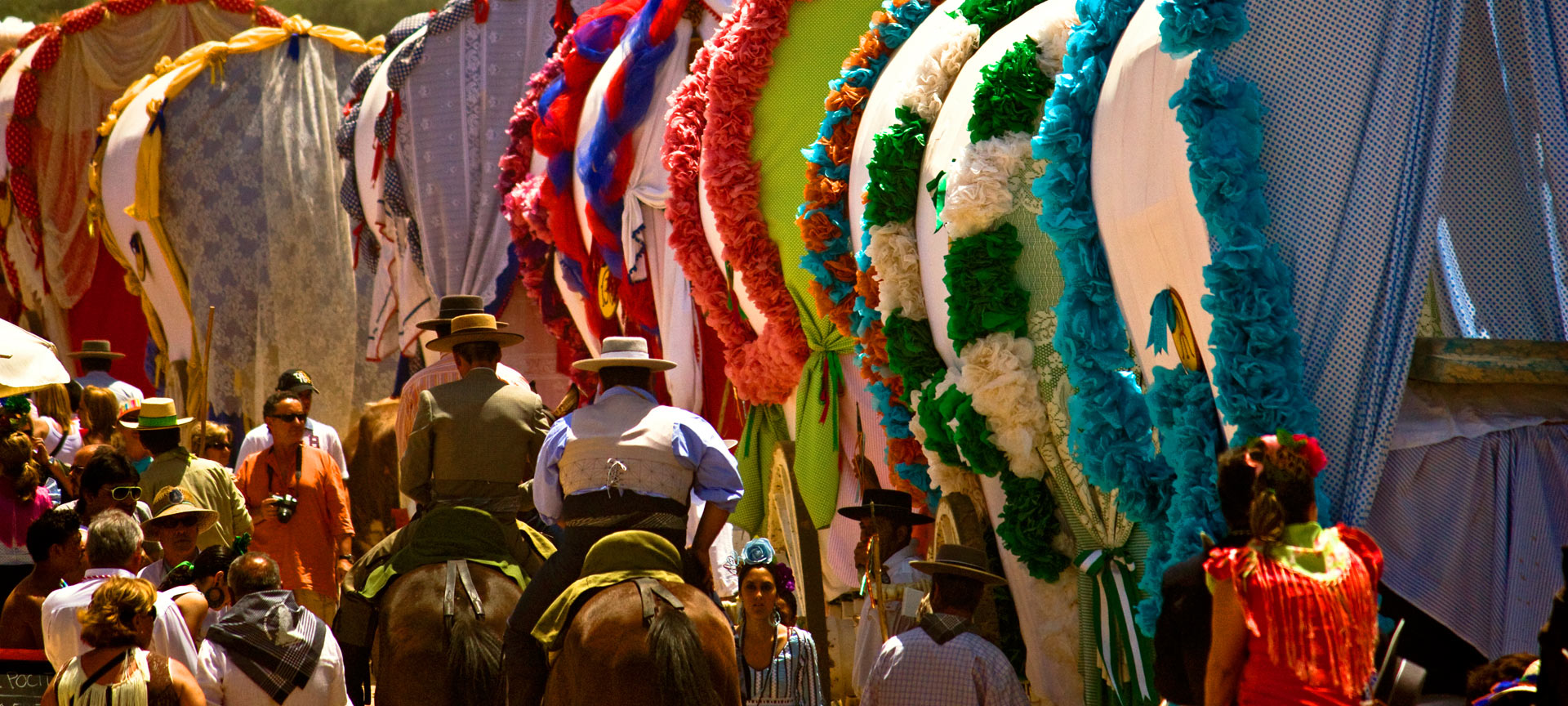
17 May 2024 - 20 May 2024
Pilgrimage of El Rocío
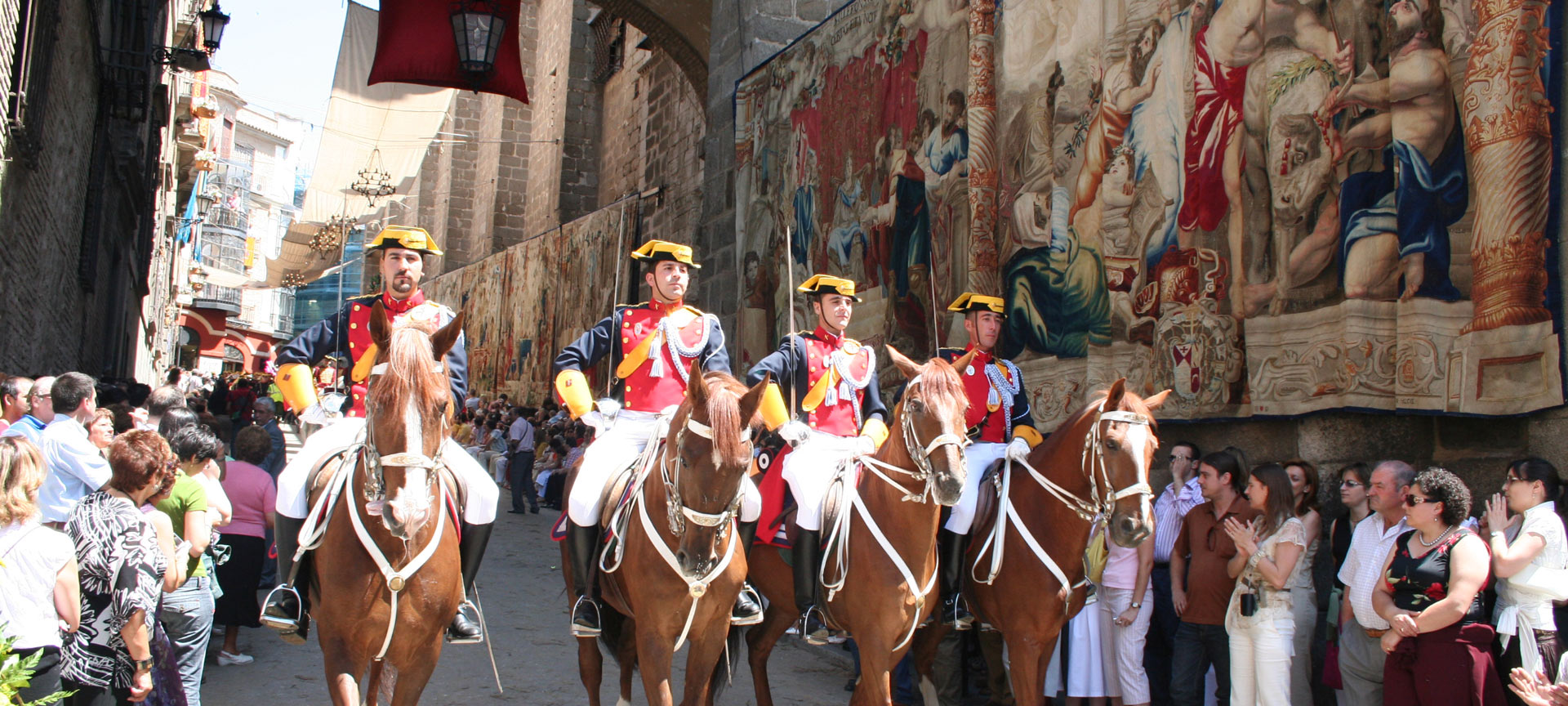
30 May 2024
Corpus Christi in Toledo
All the useful information you need.
Trip advice to get the most out of your holidays
The weather in Spain
Today in: Úbeda
How to get there
How to get around, practical information.

Book your experience
Thousands of activities thought out for you
#visitSpain
Share the best of Spain on our networks
The best ideas for travelling around Spain
Subscribe to receive monthly information with unique travel plans


10 Epic Spain Road Trips - Maps, Itineraries and Tips
Want to experience an amazing Spain road trip but not sure where to go? Choose from these 10 stunning routes for your road trip in Spain with our guides, detailed itineraries and insider tips.
Whether you're looking to relax in the mountains off the Costa del Sol, navigate the narrow streets of Toledo or take a stroll down Barcelona's Las Ramblas, we can help you plan the perfect Spanish road trip for you.
Best Spain road trips comparison
We have driven up and down and across Spain a lot of times over the past 15 years. Before we dive into the ideas, here's the complete list of the best road trip routes with key information. Scroll down to see more detail on each one.
Whether you want a relaxing drive along the coast or drive around the entire country of Spain, here are the 10 amazing options for a Spain road trip to pick from.

1. Andalucia road trip
A perfect way to explore Spain is to drive around Andalucia . If you love the sun, beaches and perfect mountain hideaways overlooking the sea, Andalucia is the place for you.
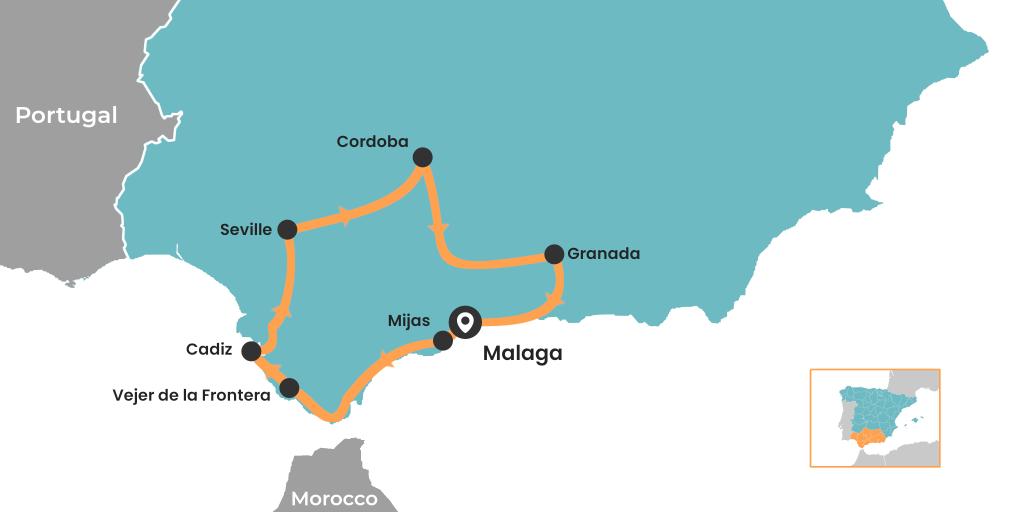
If you are more into culture and love grandiose cathedrals, medieval fortresses and jaw dropping architecture, Andalucia is also a place for you.
If, however, you just want to walk around historic towns and love traditional hearty Spanish food, you guessed it - Andalucia is your perfect destination.
The perfect Andalucia road trip will take you on a loop including coastal destinations such as Nerja, Malaga, Marbella, Gibraltar and Cadiz before going inland to discover Ronda, Seville, Cordoba and Granada.

This drive will scale mountains with breathtaking views and take you to the mesmerising Mezquita cathedral in Cordoba and the unique Moorish Alhambra complex in Granada.
You'll relax in the world famous Andalucian white villages of Mijas, Benahavis and Casares and mingle with new money in Puerto Banus' marina full of expensive supercars, people with too much plastic surgery and the world's biggest yachts.
Road trip length: 11 days
Total distance: 518 miles
2. Drive Spain's Mediterranean coast
Spain's Mediterranean coast is perfect for a Spanish road trip - just make sure you put sun screen on your left arm if you're driving - the sun gets hot!
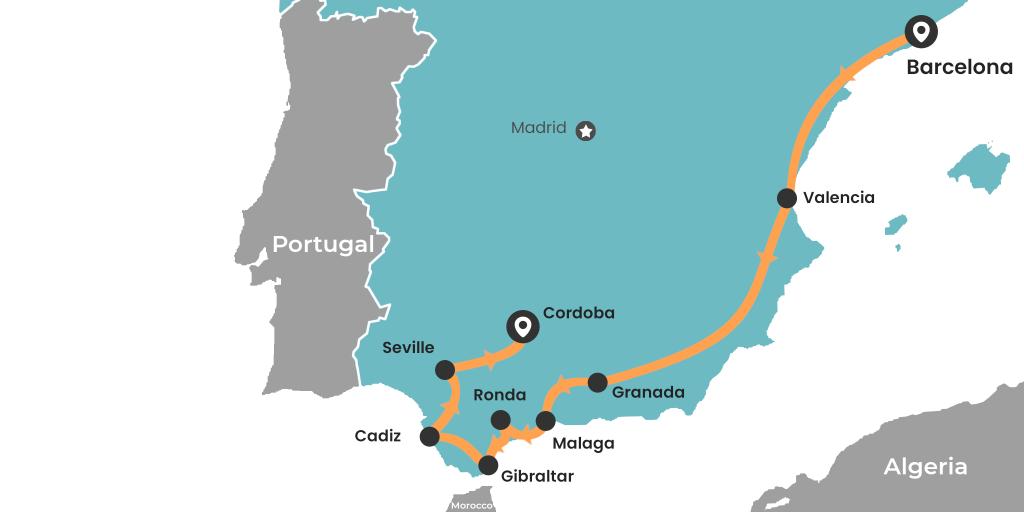
Start your road trip with a mini-break in Barcelona where you can visit sights such as La Sagrada Familia, Las Ramblas and unique buildings designed by Gaudi. There are few cities that offer as much as Barcelona so it's a perfect start to the Mediterranean coast trip.
Next leg takes you south to Valencia - a seriously underrated Spanish city that offers culture, food and sunshine aplenty with an amazing historical centre.
Once you've crossed over the Sierra Nevada mountains, your trip continues to Granada, Costa del Sol, Seville and Cordoba.
You will do an abridged version of the Andalucia road trip above, but get a much broader view of Spain having driven from one corner to another.
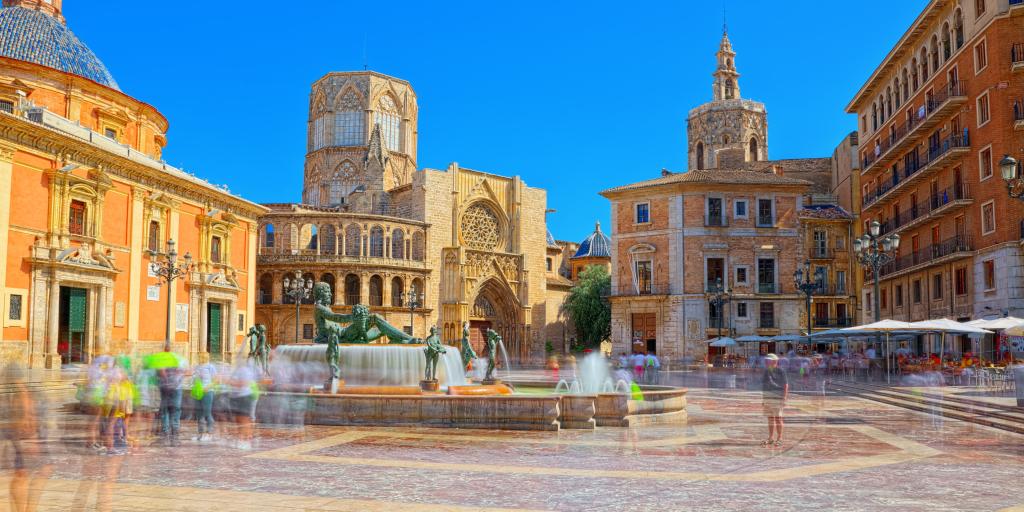
Hugging the coast for virtually the entire trip means that you are always a few minutes away from a beach - something that can provide welcome distractions on your way.
This road trip is a perfect mix of culture and relaxation so if you want to blend the two, give it a go. You will see the world's finest architecture in Barcelona, La Mezquita in Cordoba, the Seville Cathedral and Granada's Alhambra fortress but have time to relax in Puerto Banus, lay on the beach in Nerja and roam the narrow streets of Andalucian white villages.
Road trip length: 14 days
Total distance: 1,385 miles
3. Castille Leon - visit the heart of Spain
If you're flying in and out of Madrid, the Castille and Leon road trip can be an amazing way to explore Spain without having to drive all the way to the coast or spend weeks on the road.
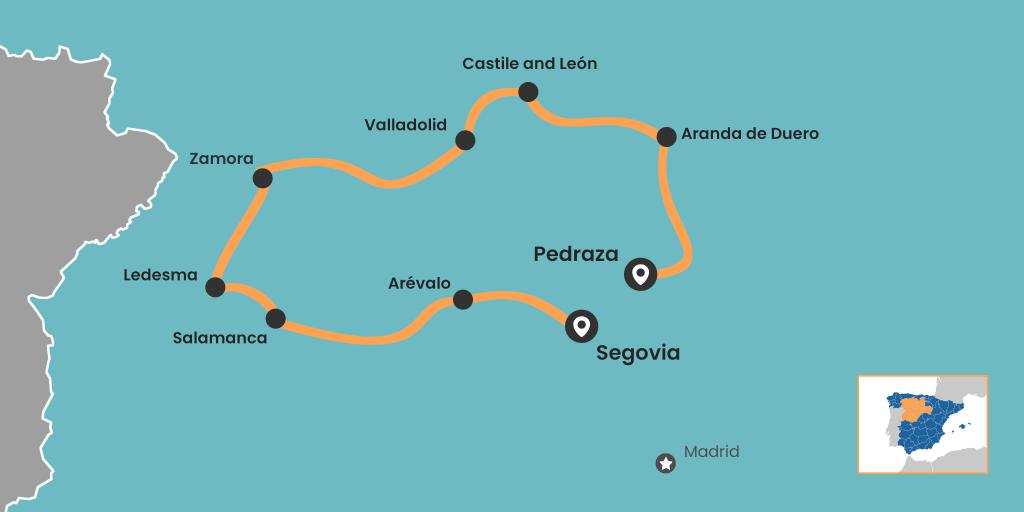
This road trip through Spain's heartland comes in a loop that starts and ends in the Segovia province.
You will start in the historic city of Segovia itself - famous for some of Spain's best architecture and declared a UNESCO World Heritage site.
After a day of exploring, the route heads west towards Salamanca via Arévalo. Arévalo is a small historic town famous for its Mudejar architecture and art giving it a special protected status in Spain and Salamanca is an ancient city with two cathedrals - the New one (it is actually called that) began construction in 1513!
From Salamanca, you can check out other beautiful historic towns of Ledesma and Zamora before a stop in Valladolid - the assumed capital of the Castille and Leon province. Its medieval history can be seen throughout the city - the Spanish Monarchy even made Valladolid their home in the 17th century!
After a visit to the city that shares its name with the Castile and Leon region, the trip ends with a drive through the Ribera del Duero wine region - hugely underrated relative to Rioja and the Portuguese Douro wine further down the same river valley.
The end of the trip gets you to Pedraza back in the Segovia province before taking a short drive back to Madrid's airport.

You can extend this road trip to include the historic Spanish cities of Leon and Burgos in the north of the province, but that will add a lot of mileage and time to your trip and southern Castille and Leon has a huge amount to see already - you can easily spend 2 weeks exploring this part of Spain and see new places every day.
Road trip length: 7 days
Total distance: 345 miles
4. Northern Spain road trip
So often overlooked in favour of Costa Brava, Costa del Sol or Costa Blanca, Spain's northern coast makes for an amazing road trip exploring the mix of cultures, fantastic food and rocky shore scenery.
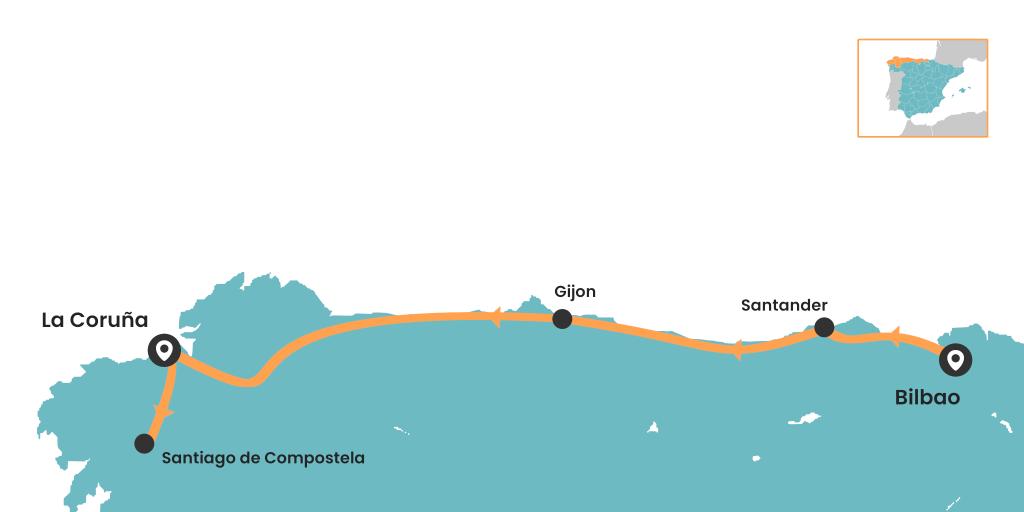
The road trip starts in the capital of Spain's Basque country - Bilbao. This is a place worth spending a couple of days in to explore its old historic centre, the surrounding mountains and the spectacular world-famous Guggenheim museum.
There is something for everybody in Bilbao with superb pintxos in street bars and michelin-starred restaurants, medieval streets and modern boulevards.
The road trip then moves west along the coast to Santander, before further stops in Santillana del Mar, the Picos de Europa national park and Gijon.

This trip includes a mix of beaches, historic Spanish cities and exploring nature - a perfect mix for a Spanish road trip!
Once you've hiked amazing gorges and filled yourself with pastries, it's time to hit the road and drive on to Oviedo and La Coruna.
Finishing off with a day trip inland to Santiago de Compostela, you will travel the entire length of Spain's Bay of Biscay coastline with everything to see along the way.
Depending on your flights, you might have to do a drive back along the coast to Bilbao or down to Porto or Madrid - this is one heck of a trip that you won't find in many recommendations or guides!
Road trip length: 10 days
Total distance: 737 miles
5. Basque country and Pyrenees
Spain's north-west corner lying on the Bay of Biscay and bordering France is full of history, tradition and... mountains.
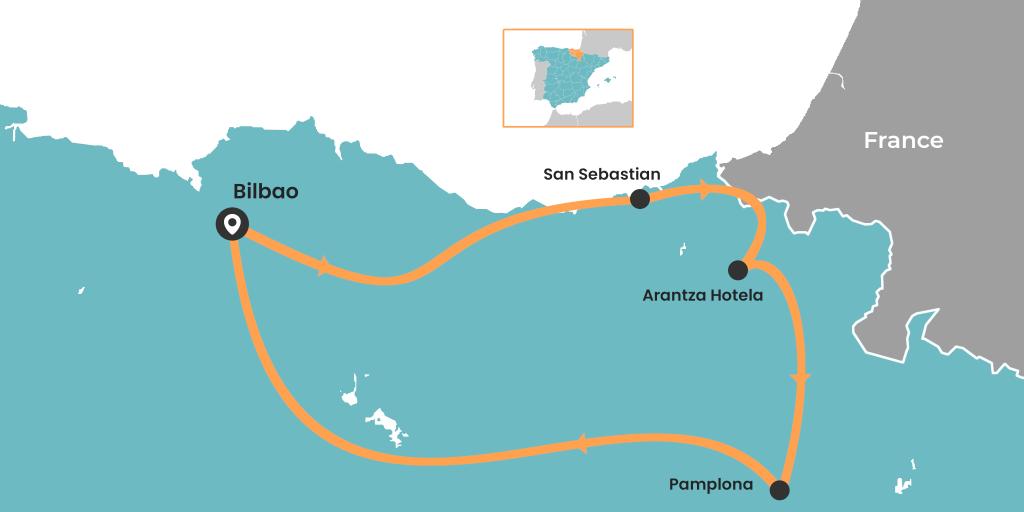
The Basque country is a unique part of Spain - they have a prominent local language, cities that make up two prominent medieval kingdoms (Basque and Navarre) and a unique link to the Pyrenees. In medieval times, Basque country spanned the mountain range, including parts of France on the other side.
Today the region fervently focuses on its culture. As you travel in major cities such as Bilbao, San Sebastian and Pamplona, you will get to try the local pintxos tradition. In some ways similar to tapas popular in the rest of Spain, pintxos are smaller bite-size snacks served in bars and charged by number or by plate.
If you get out of the tourist areas, you will find local pintxo bars where the snacks are free as long as you keep buying the drinks!
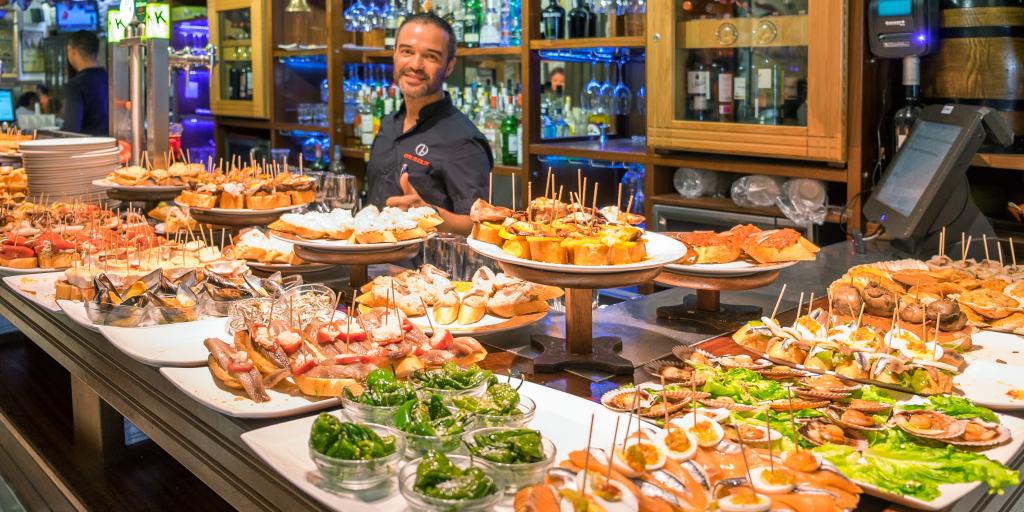
The Pyrenees are an amazing mountain range that is not high on many tourists' radars.
Often overlooked in favour of trips to the Alps or even Sierra Nevada further south in Spain, the Pyrenees are an older mountain range with a lot of peaks over 3,000m above sea level.
The roads through the Pyrenees are fantastic and can make for really great road trips with the added bonus of hardly any other cars as you drive around. There are some fantastic hotels if you want to really relax and go off the grid for a few days - we have stayed at The Arantza Hotela in the foothills of Pyrenees and cannot recommend it highly enough - it is expensive but super luxurious and worth it!
A small number of rooms have stunning views of the surrounding hills with morning fog climbing towards the peaks and you can relax in a jacuzzi looking out over the landscape before having an amazing dinner in the hotel's gastro restaurant.
After a few days of luxuriating, it's time to drive down from the mountainside and make your way to Pamplona - a historic city famous for its July bull running festival has far more to offer than the medieval tradition. Narrow streets, beautiful stone buildings and fantastic local coffee shops are great for unwinding in late morning.
The drive back to Bilbao airport is a little under 2 hours to get you back home!
Total distance: 240 miles
6. Driving tour of Catalonia
There is a whole lot more to Spain's Catalonia region than Barcelona. You can spend weeks travelling around the area and still not see dozens of amazing villages, secret beaches, mountain waterfalls or quirky museums.
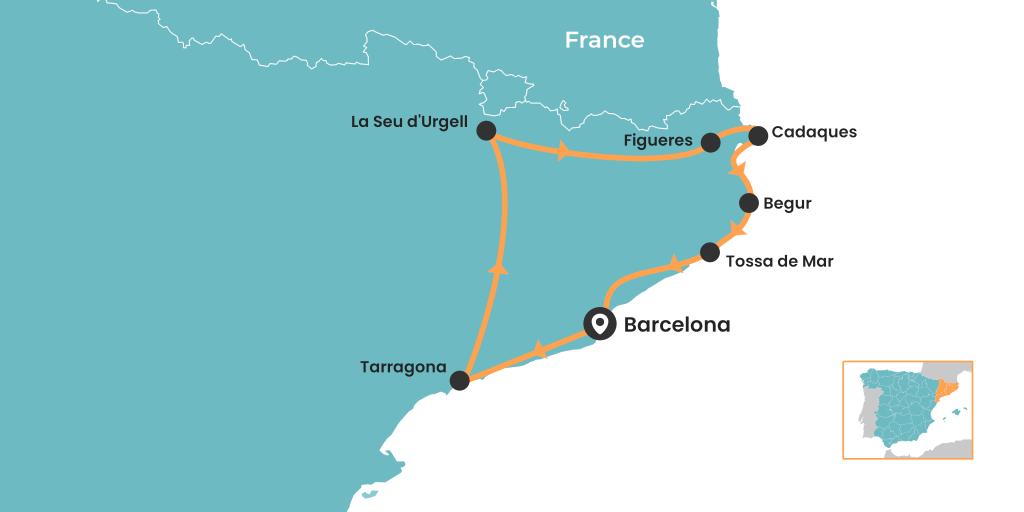
If you want to base yourself in Barcelona, instead of going on a road trip, check out our 40 day trips from Barcelona for inspiration on where you can get to!
A great route around the region can start and end in Barcelona to make it easy with flights.
From Barcelona, head south along the coast to Tarragona with a stop in Sitges and the option of relaxing in one of a few great beaches along the way.
From Tarragona, this trip goes inland towards Montblanc and all the way to La Seu d'Urgell in the Pyrenees via Solsona.
On your route across the north of Catalonia, you are spoilt for choice with the Garrotxa volcanic national park and the village of Santa Pau worth visiting, a detour into Andorra and towns like Besalu and Castellfollit de la Roca all great options before you arrive in Figueres.
After some cultural sightseeing, head on to Cadaques on the coast - there are some great beaches and a Salvador Dali House Museum.
The rest of the road trip follows the Costa Brava back down to Barcelona. There are tonnes of great places to stop including Roses resort, the canals of Empuriabrava, L'Escala and Begur. A drive inland to Girona is optional before you make it down to the relaxation end of the journey with beach stops in Tossa de Mar and Lloret de Mar on the menu.
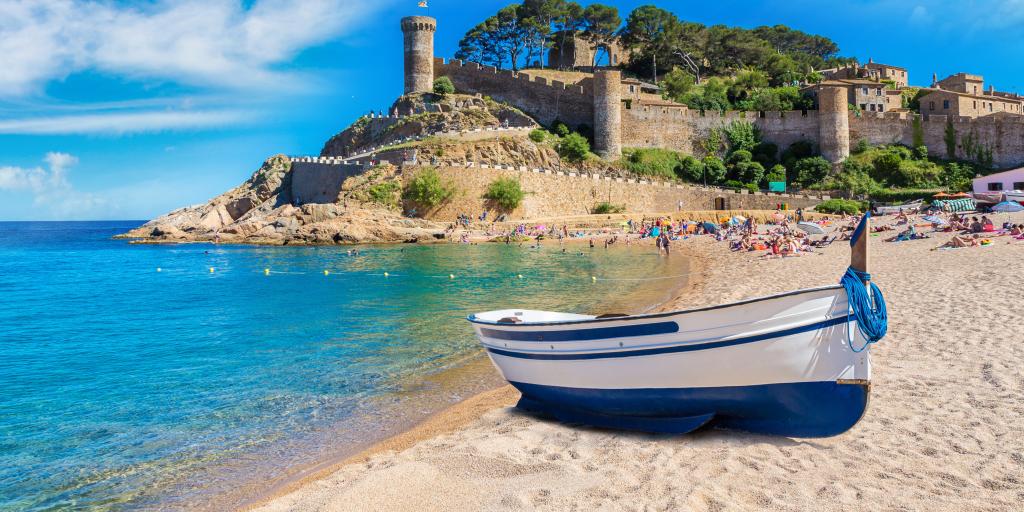
There are few parts of the world which have so much to see in such a compact region both culturally and in nature. If you love the mountains, hiking and being off the beaten track, a road trip around Catalonia is definitely the best choice in Spain.
Road trip length: 9 days
Total distance: 520 miles
7. Historic central Spain - Castilla-La Mancha
Castilla - La Mancha is one of the largest regions of Spain and also one of the least well known by tourists.
Hidden away in plain sight right next to Madrid, it stretches almost as far as Valencia and Murcia in Spain's south east.

Exploring this region brings a mix of natural sights and beautiful historic Spanish cities. As with the Castille Leon trip, it's easy to start and finish in Madrid if that's where you can get easy flights to.
This Spain road trip starts in the most famous city in the La Mancha region - Toledo. Toledo is famous as a blend of Christian, Muslim and Jewish religions and cultures. It was the capital city of the Visigoth Empire, Spanish Moors and later of Spain at some points during the course of history.
After a couple days of sightseeing, it's time to hit the road and head on south to Ciudad Real via Consuegra and Daimiel.
There is a lot to see in this part of Spain including the infamous windmills made famous by Miguel de Cervantes' Don Quixote. The majority of the region is set on a plateau with occasional barren hills.

The trip continues east to Cuenca and Siguenza - both stunning towns but in completely different ways and both very different from a lot of typical Spanish destinations.
If you're feeling adventurous, there are a number of national parks on the way where you can stretch your legs on a hike or just take a scenic detour.
Total distance: 380 miles
8. Galicia road trip
Getting to and from the region can be tough so you might have to adjust the route depending on where you're travelling from.
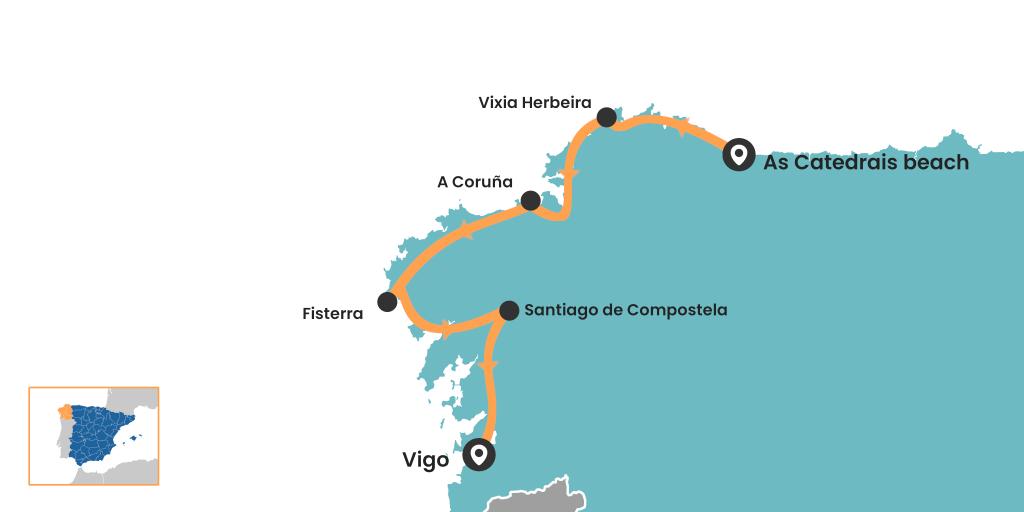
The plan with this road trip is to go all the way round the Galician coastline starting from As Catedrais beach. If you don't know it by name, you've definitely seen pictures of giant rocks and archways on the sandy beach before.
Although this trip is only 5 days long, you'll spend a few of these driving along small coastal roads. Our tip is to ignore the navigator which will send you inland along faster roads. Keep the sea to your right as you go and you're unlikely to go too far wrong.
After passing the Vixia Herbeira cliffs, you'll arrive in A Coruña. Other than the Hercules Tower, the main sight here is the light house. Naturally.
Take a day to see the city and its surroundings - seafood here is amazing as it's a functioning port supplying much of the region and beyond.
The trip then continues around the coast to Santiago de Compostela. You can take the direct short cut but you will miss out on a whole lot of stunning scenery, ocean-facing cliffs and spectacular locations for light houses - on the shoreline, on cliffs and even on their own islands.
After exploring the historic and religiously important city, the route goes back towards the coast and passes Pontevedra on the way to the pretty town of Vigo.
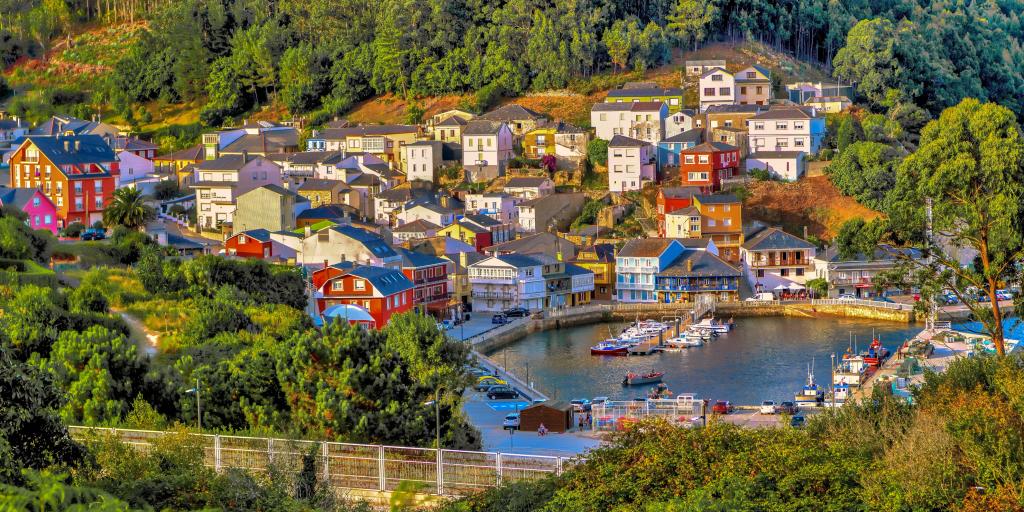
This might not be so much of a Spanish road trip as a gentle breeze along the coast (and there will be a lot of breeze!), but it's definitely one to keep in mind if you want to unwind and keep yourself away from the tourist traps around Spain.
Road trip length: 5 days
Total distance: 322 miles
9. Road trip around Mallorca
Many don't associate Mallorca with a road trip, but the island has a huge amount to offer beside the beaches and clubs.
Flying in and out of Palma means that's a great place to start and finish your trip.

Palma is the capital and often overlooked by visitors who go straight from airport to their preferred corner of the island. The city actually has a lot to offer so it's great to spend the first or last night here depending on your flight times.
Make sure you check out the huge Cathedral (you really can't miss it) and the part of the city around the market (only open in the morning).
Once you set off, the best way to see the island is to drive all the way around.
Start by heading along the narrow cliff roads along the coast to Valdemossa and Soler - the two very popular destinations to the north of Palma. After that the road trip continues all the way to Port de Pollença before heading across the island to Cala Mesquida.
Once you've navigated the tourists, a short drive down the coast takes you to Cala Agulla where the beaches are empty and the sun is just as hot for some relaxation.

To wrap up the trip, you've got to stop off at the resort town of Cala d'Or before making your way back to Palma.
A short trip with a lot of breathtaking views and cliffs in the north and resorts with fantastic beaches on the south can be the perfect way to unwind on a short break!
Total distance: 175 miles
10. The full circle - A complete road trip around Spain
If you have time on your hands and feel adventurous, a road trip around the entirety of Spain can be an amazing way to delve into the culture, see all the corners of this amazing country and really get immersed.

One key disclaimer is that while this one sits high on our list of bucket list trips, we haven't actually done the full trip - it's a long drive!
But if you're brave enough, you can start wherever along the route you like as you it goes in a loop.
Barcelona and Madrid are likely to be the best hubs for getting in and out of Spain and the route cycles down through Valencia to an Andalucian tour before heading back north from Cordoba.
After exploring central Spain with stops in Toledo and surrounding towns and a tour of Madrid, the drive continues into Spain's Duero valley, Valladolid and on to Galicia's Vigo, Santiago de Compostela and A Coruna while taking in breathtaking views of ocean-facing cliffs and huge waves.
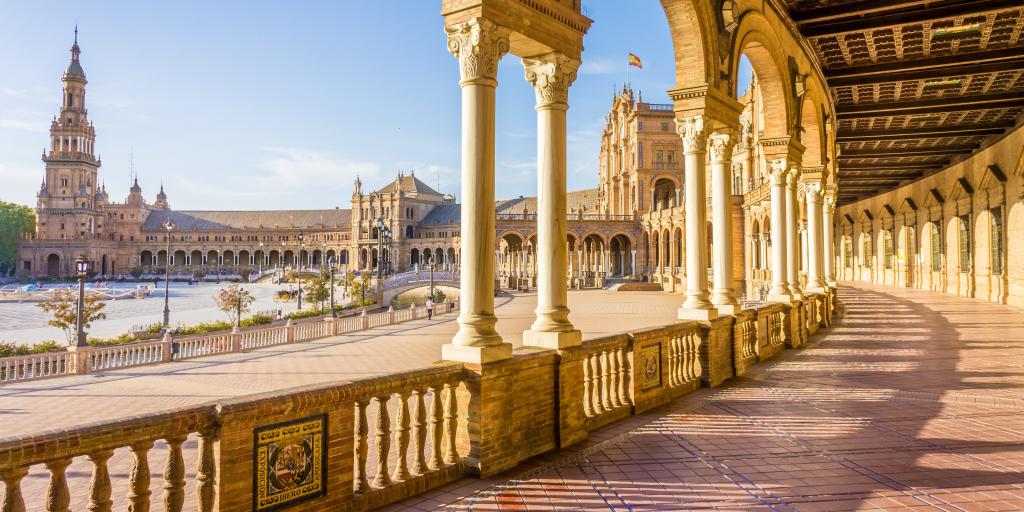
The trip continues along the north coast stopping off at Santander, Bilbao and San Sebastian before detouring off into the Pyrenees and the historic cities of Pamplona and Zaragoza. A mini Catalonia tour to end the trip wraps up the route that will take at least a month to complete if you want to do things other than driving.
If you do end up doing this one, please let us know! We'd love to see how you get on!
Road trip length: 35 days
Total distance: 2,800 miles
Join our email list!
By joining our email list, you give LazyTrips permission to use your email for sending you newsletters, emails and updates including for marketing purposes. Your email will not be provided to third parties.
Related posts
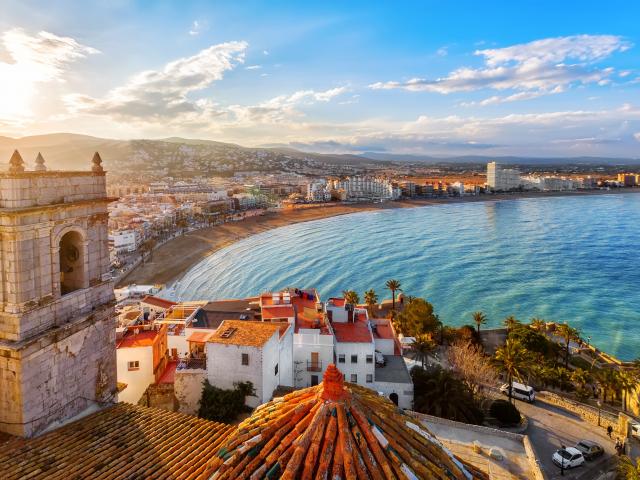
Get the Hottest Deals First!
Full of Life and Passion
Magnificent landscapes combined with the country’s charming traditions and customs offer new experiences unlike anywhere else in the world. Famous for bullfighting, Spain allows you to grab life by the horns and dive into adventure. Whether it’s the eye-catching architecture of Madrid, the bold Spanish wines, or the shimmering Costa del Sol, this country remains a delight to the senses. Once you experience Spain, you’ll never want to leave and when you do, you’ll always be craving more.
Explore More
Tour manager angela’s heart is in spain and portugal.
What makes Tour Manager Angela so proud to be from the Iberian Peninsula? She has a deep love for the landscapes, the cuisine, the people, and the culture. Hear how Angela gets to show travelers the cultural roots of her home, and how that makes her life as a Tour Manager special.
Destination Must-See's
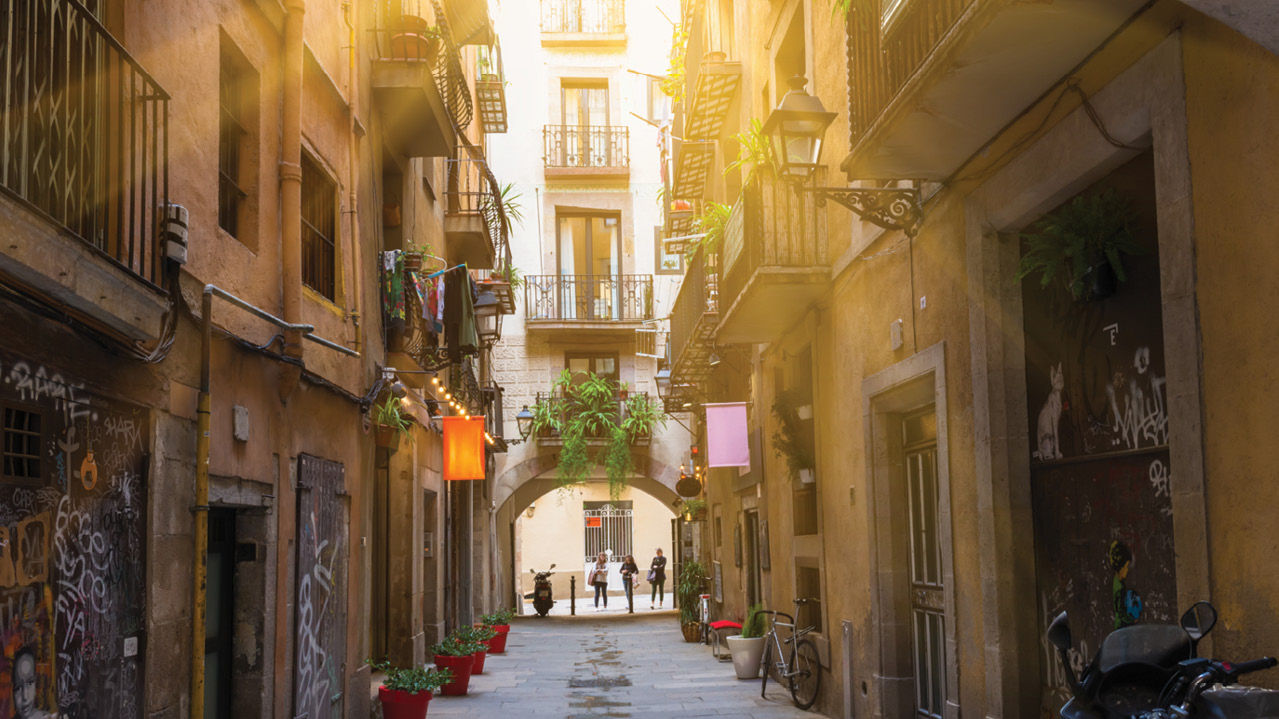
This enchanting seaside city with boundless culture is home to fabled architecture and a world-class drinking and dining scene. Barcelona's architectural treasures span 2,000-plus years. Towering temple columns, ancient city walls and subterranean stone corridors provide a window into Roman-era Barcino. Fast forward a thousand years to the Middle Ages by taking a stroll through the shadowy lanes of the Gothic quarter, past tranquil plazas and soaring 14th-century cathedrals. In other parts of town bloom the sculptural masterpieces of Modernism, a mix of ingenious and whimsical creations by Gaudí and his Catalan architectural contemporaries for which this city is so well known. Barcelona has also long-inspired artists, including the likes of Salvador Dalí, Pablo Picasso and Joan Miró, whose works are in bold display in the city's myriad museums.
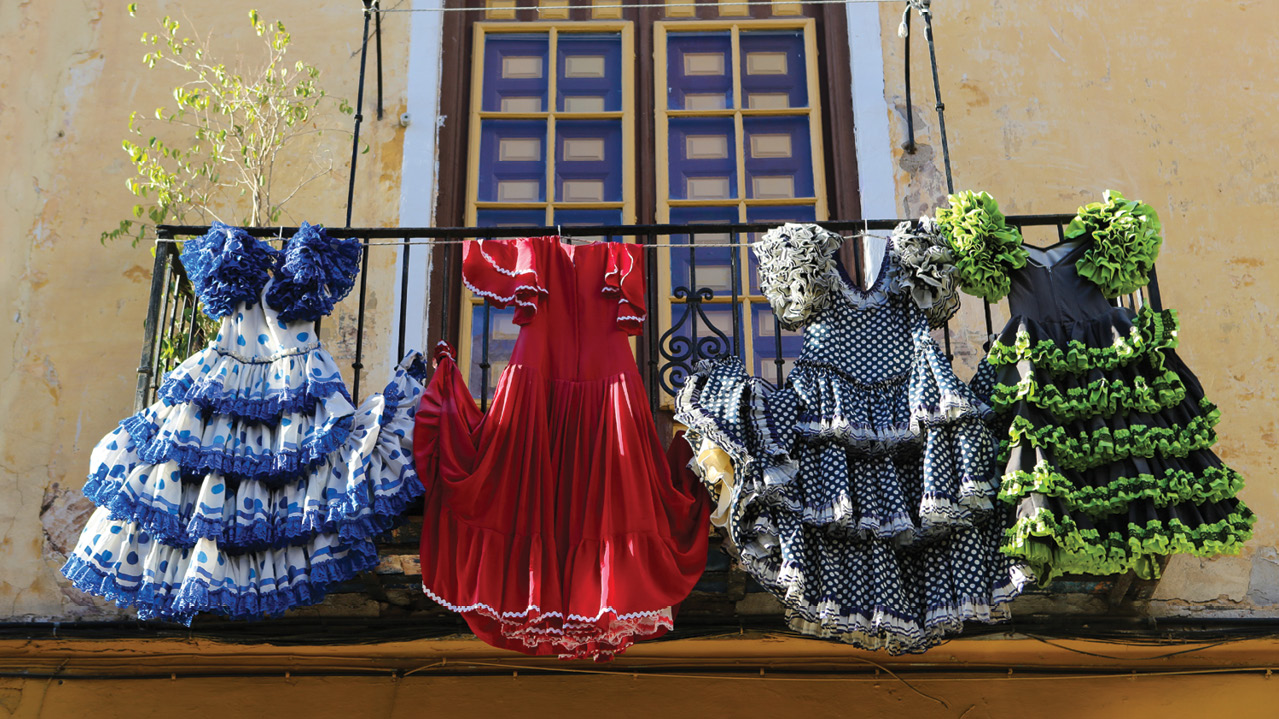
The capital and largest city of the autonomous community of Andalusia, Spain is Seville. Approximately 2,200 years old, the early origins of the city date back to the year 712. It is situated along the Guadalquivir River, which splits the city into two halves. Seville is famous for being the birthplace of the Flamenco dance. It is also known for its culture, monuments, traditions and artistic heritage.
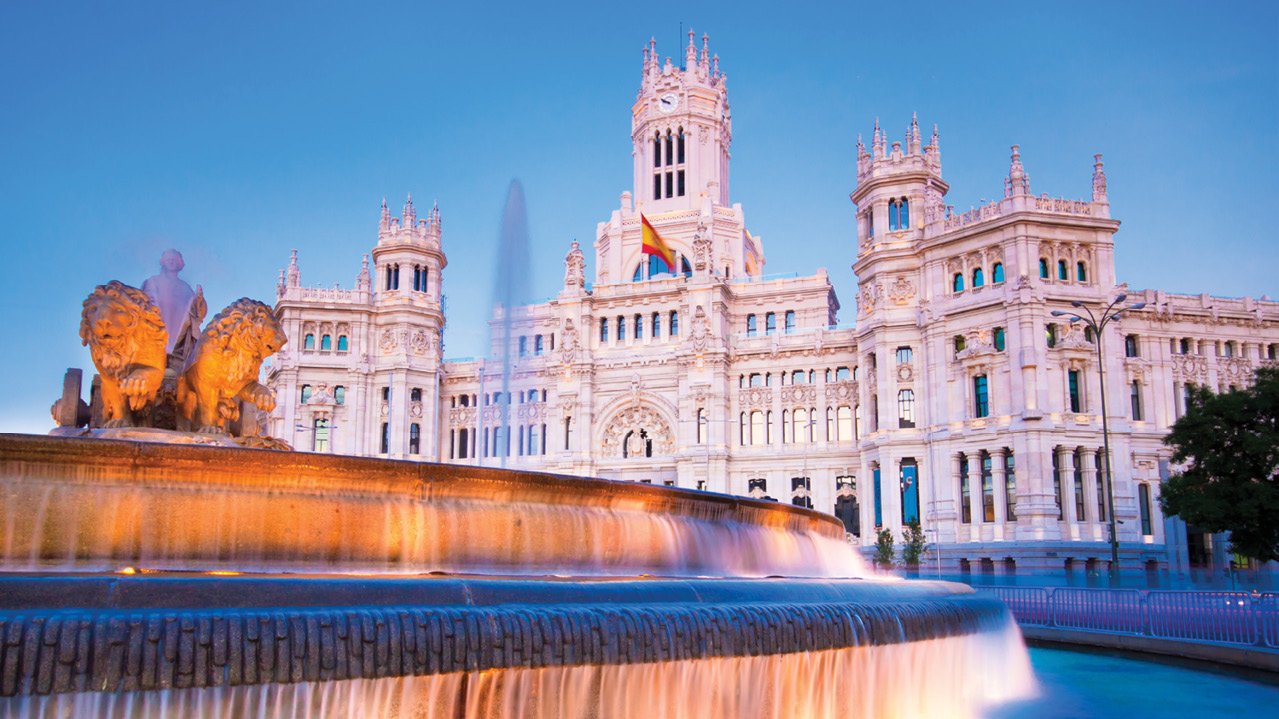
Spain’s capital city sits on the Manzanares River, just northeast of the center of the Iberian Peninsula. It is estimated that the origins of Madrid can be traced back to the 2nd century B.C. Madrid is home to the head of the Spanish government, the Spanish royal family and the headquarters of the World Tourism Organization. Madrid’s influence on politics, education, entertainment, fashion and culture make it one of the world’s major global cities.

The Costa del Sol:
This “Sunny Coast” is the southernmost part of Spain stretching primarily along the calm and warm Mediterranean Sea. Its major province is Málaga, the home of Picasso. To the far west part of the Costa del Sol comes another body of water, the Strait of Gibraltar, which separates the Mediterranean from the Atlantic. In the last province of the Costa del Sol lies the province of Cadiz. These provinces are most known for their golden sandy beaches, fresh Mediterranean seafood and relaxing environments and are especially home to vacationers during the warmer months.
Destination Must-Do's

Guggenheim Museum:
This museum of modern and contemporary art is located in northern Spain. The museum is built alongside the Nervion River, which runs through the city of Bilbao. The museum is one of several belonging to the Solomon R. Guggenheim Foundation and features permanent and visiting exhibitions of works by Spanish and international artists. The museum was designed by Canadian-American architect Frank Gehry. The museum was inaugurated on October 18, 1997 by King Juan Carlos I of Spain, who was the king of Spain at the time.

La Sagrada Familia:
Meaning the Holy Family, this modern structure is known as the church of the people, built by the people, with the money of the people. While it is not the cathedral of Barcelona, it is widely known due to its unique architecture and phenomenal design initiated by architect Antoni Gaudí. Work on the exploratory church began in 1882 and continue to this day, but with modern technology and the rising number of visitors and donations, the church’s completion date has rapidly become closer. The facades of the church are breathtaking in their intricate and artistic details, all of which were inspired by Gaudí.
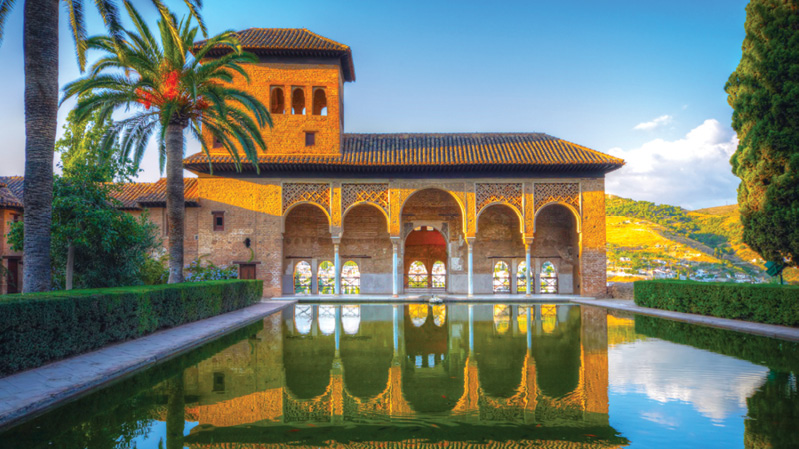
The Alhambra:
This stunning palace and fortress complex is located in Granada, Andalusia, Spain. The first palace on the site was built in the 11th century. Over the years it developed into a sprawling complex comprised of many structures. It is very well preserved and gives visitors a peek into Moorish culture. The Alhambra is part fortress, part palace, part garden and part government city. Many visitors come to Granada specifically to visit and see the Alhambra.
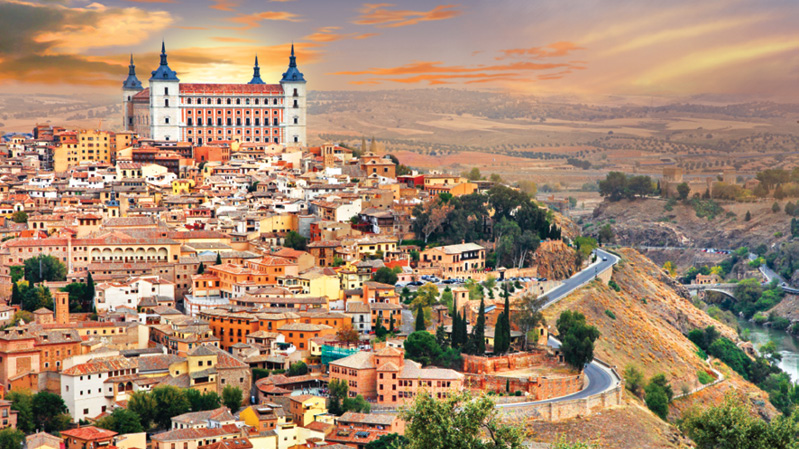
This was the first capital of Spain located about 43 miles south of Madrid. The history of Toledo dates back to the Roman occupation circa 192 B.C. The old city of Toledo sits atop of a small mountain surrounded on three sides by the Tagus River, and medieval walls on the fourth. From the top of the mountain you can get a 180 degree view of the surrounding landscape.
Expert Advice

Featured Tours to Spain
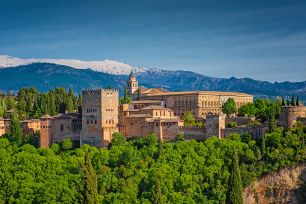
Spain's Classics

Spain's Costa del Sol & Madrid

Spain's Classics & Portugal

Spain & Portugal: Costa del Sol to the Portuguese Riviera

Flavors of Portugal & Spain: featuring Barcelona

Pilgrimage to Fatima & Lourdes with Barcelona

Flavors of Portugal & Spain: featuring the Douro and Rioja Wine Regions
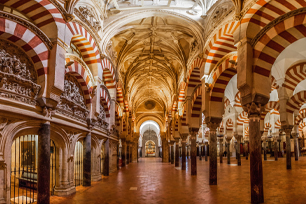
Spain & Morocco

Brochures that Feature Our Spain Tours
Find a travel agency.
Once you've found the perfect Collette tour, your local travel agent can assist you in making reservations. To find a preferred travel agent in your area, please enter your 5-digit zip code, then click Search.
Enter a Whole or Partial Zip Code
Please tell us everything, we want it all.
We really value your feedback, please be open an honest. Tell us where we can improve, how we can get better. This feedback is anonymous, but if you would like us to get in touch with you regarding an issue provide your email address as part of your feedback and we will get right back to you.
Talk to an Expert
Please fill out the form below, and a Collette Expert will contact you shortly.
- Yes, I'm a Travel Professional
- Yes, I am working with a Travel Professional
- I am traveling with 8 or more travelers
View or Download

Home > Itineraries > 21 Day Spain
21 Day Ultimate Tour of Spain Itinerary
Expert guides, luxury vehicles, your 3 week tour of spain.
Welcome to our 21 day tour of Spain itinerary!
This tour has been carefully crafted by our expert tour planners to showcase the best of what this beautiful country has to offer. From the vibrant cities of Madrid and Barcelona to the rich cultural heritage of Andalusia and more in between, this tour will take you on a journey of discovery and adventure.
Highlights Include:
- Granada & Seville
- Madrid & Toledo
What’s Included?
- Exclusive skip-the-line access to all major sites
- English-Speaking Expert Local Guides
- Private tours and luxury vehicles for transfers
- Select Central Luxury Accommodations
- 24-7 Emergency Help
Day 1: Welcome to Barcelona & Tapas Tour
Upon arrival at Barcelona airport, your private local driver will pick you up and drive you to your hotel.
Tapas Tasting Tour

Join us for a private tapas experience in Barcelona, led by an English-speaking guide. Tapas, small Spanish savory dishes typically served with drinks at a bar, are an integral part of Spanish culture and cuisine. In Barcelona, it’s hard to find a restaurant or bar that doesn’t serve tapas, but it can be difficult to find the best ones. Our expert guide will take you to three different bars, where you will enjoy a selection of three special tapas at each location, paired with a drink.
Barcelona is known for its unique regional specialties, such as escalivada (roasted vegetables), esqueixada (salt cod salad), and suquet de peix (fish stew). Our guide will introduce you to these and other delicious dishes, ensuring that you have a truly authentic tapas experience.
Our promise to you is that we will only offer the best of the best, ensuring that you have a truly unforgettable tapas experience for your first night in Barcelona!
Stay overnight in Barcelona
Day 2: Exploring The Center of Barcelona With Your Guide
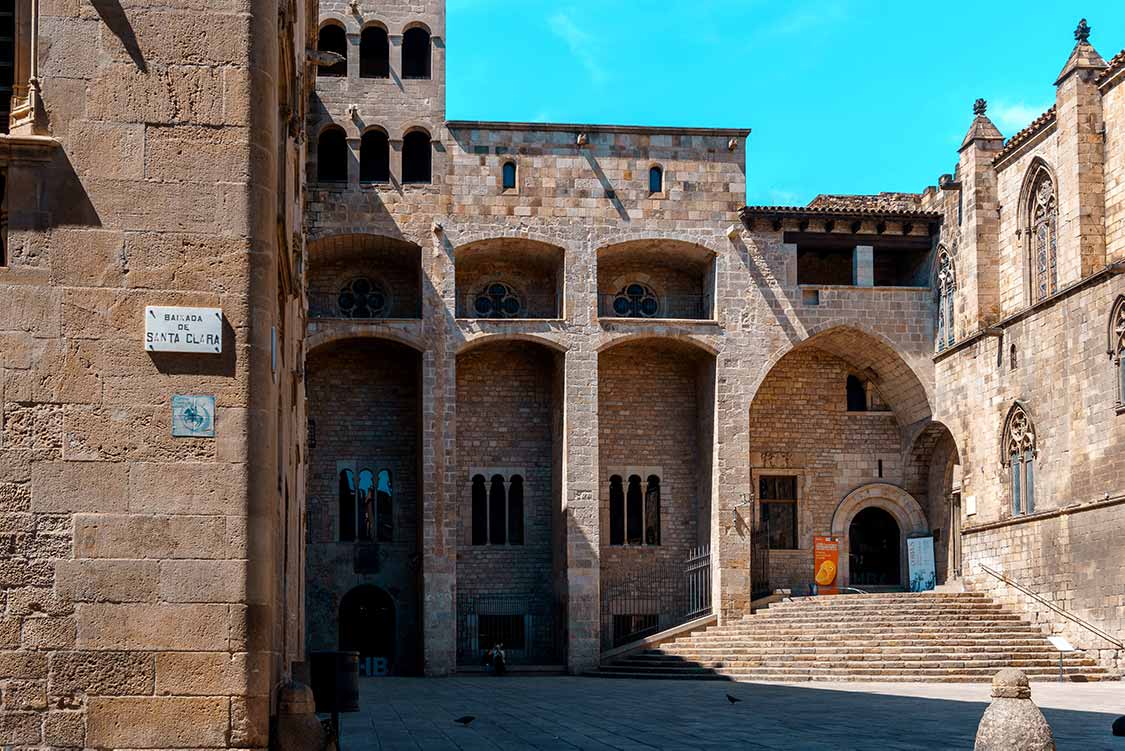
During your 4-hour city tour of Barcelona, you will be chauffeured in a luxury private vehicle and accompanied by a knowledgeable private guide. Your tour will take you to some of the city’s most iconic landmarks, including:
Basilica of Santa Maria del Mar
The Basilica of Santa Maria del Mar, an outstanding example of 14th-century Gothic architecture, is dedicated to the Virgin Mary. Your private guide will take you on a captivating tour of this magnificent basilica, unraveling its fascinating history and highlighting its splendid features.
As you explore the basilica, you will be awed by its impressive central nave, which exudes an aura of serene magnificence. You will also marvel at the elegant simplicity of the basilica’s interior, which stands in stark contrast to the robustness of its exterior. Moreover, you will witness the basilica’s intricate chapels, adorned with fine sculptures and frescoes, each with its unique story to tell.
Your guide will also lead you through the basilica’s Gothic cloister, home to ancient tombs and a tranquil courtyard. As you gaze upon the beauty of the basilica’s main altar, gilded with precious gold and silver, you will appreciate the splendor and devotion that went into crafting this extraordinary work of art.
Gothic Quarter Walking Tour
The Gothic Quarter is one of the oldest and most picturesque neighborhoods in Barcelona, and it is home to a wide range of historical landmarks and cultural attractions. Highlights of your guided walking tour include the Plaça del Rei, which is home to a number of important medieval buildings, and the Gothic Quarter’s many squares and markets.
The Paseo de Gracia
This tree-lined boulevard is the most exclusive street in Spain and home to many examples of Catalan modernist architecture, including the Casa Lleó Morera, Casa Amatller, Casa Batlló, and Casa Milá (La Pedrera). Your guide will provide you with a detailed explanation of the history and significance of each of these buildings and the architects who designed them.
Colon Monument or Barceloneta Beach
You will have the option to visit either the Colon Monument, which is dedicated to Christopher Columbus and offers spectacular views of the city, or the popular Barceloneta Beach, where you can relax and soak up the Mediterranean sun.
Montjuïc Hill
This is a popular destination for tourists visiting Barcelona, as it offers a variety of sights to see and things to do. Some of the top sights to visit on a private tour of Montjuïc hill include The 17th Century Montjuïc Castle, The illuminated fountain at the foot of the hill and The Joan Miró Foundation, dedicated to the work of Catalan artist Joan Miró.
Overnight in Barcelona
Day 3: Gaudi Architecture Tour & Sailing Excursion
To the entire world, the name ‘Gaudi’ is synonymous with Barcelona. Known as “God’s architect” he designed many of the city’s most famous landmarks. His unique style, known as “Catalan Modernism,” combined traditional Gothic and Islamic architectural elements with organic forms and bright colors. Some of his most notable works in Barcelona include the Sagrada Familia, Park Güell, and Casa Batlló.
Your English-speaking private guide, an expert on Gaudi, will introduce you to all aspects of the life and work of this renowned Catalan architect. Gaudi’s buildings are more like sculptures than traditional structures, and several of his works have been designated UNESCO World Heritage sites. Your guide will take you to some of Gaudi’s most famous buildings and explain his enduring influence on architecture and design.
Sagrada Familia Private Tour

A private tour of the Sagrada Familia is a unique and unforgettable experience. The first thing you will notice as you approach the church is the stunning facade, which is decorated with intricate carvings and stained glass windows. Your private guide will explain the symbolism and meaning behind the facade’s design, and point out some of the most interesting details.
Once inside, you will have the opportunity to explore the church at your own pace, with your guide providing interesting facts and insights about the building’s history and architecture. You will see the nave, with its towering columns and vaulted ceiling, and the chancel, which is adorned with colorful mosaics. You will also have the chance to climb one of the church’s towers, where you can enjoy panoramic views of Barcelona.
Guided Tour of Park Güell

Visiting Park Güell with a private guide is a great way to fully appreciate the beauty and complexity of this iconic Barcelona landmark. Your private guide will provide personalized attention and expert insights into the park’s history and significance.
As you explore the park with your guide, you will see a variety of unique and whimsical structures, including the main entrance gate with its mosaic-covered pillars and the serpentine bench with a dragon’s tail at the end. Your guide will explain the symbolism and meaning behind these and other features of the park, and point out some of the most interesting details.
In addition to the architectural elements, the park is also home to a variety of gardens and sculptures, including a number of fanciful creatures. Your guide will explain the design principles behind the park and the significance of these features, and you will have the opportunity to ask questions and learn more about Gaudi’s work.
Casa Batlló & Casa Milà
Located on the fashionable Passeig de Gracia, Casa Batlló is known for its colorful, organic facade, which is decorated with tiles and sculptures. It’s a prime example of Gaudi’s use of natural forms in his architecture.
Casa Milà is also located on the Passeig de Gracia and is known for its undulating stone facade, which was inspired by the forms of flowing water. It’s another great example of Gaudi’s unique style.
Barcelona Sailing Experience
On your sailing experience in Barcelona, you can choose to learn the basics of sailing from your professional skipper, or simply relax on board with snacks and beverages as you watch the sights of Barcelona drift by.
In the evening, the city’s glittering lights are particularly beautiful when reflected on the water. As you sail, you will pass by a number of notable landmarks, such as the Olympic Port, the Barceloneta Beach, the Monument to Columbus, and more. If the weather permits, you can even take a dip in the Mediterranean Sea!
Day 4: Arrival in Valencia

Our chauffeur will collect you in the morning and take you and your baggage to the train station to make the 2 hours and 50 minutes journey in a first-class carriage to Valencia.
Valencia Sightseeing Tour
Experience the beauty and culture of Valencia on a private sightseeing tour of this vibrant Mediterranean city. With a knowledgeable guide leading the way, you will enjoy a walking tour through the streets of the old city, visiting some of its most iconic landmarks. Along the way, you will have the opportunity to learn about the history and significance of these monuments and soak up the local atmosphere. Whether you’re interested in art, architecture, or simply exploring a new place, this private tour is a great way to discover the many charms of Valencia.
Here is an outline for a full-day walking tour of Valencia:
The Plaza del Ayuntamiento
Or, City Hall Square, is a central square located in the city of Valencia, Spain. It is a popular gathering place for both locals and tourists and is surrounded by a variety of shops, restaurants, and other attractions.
During a guided tour of the Plaza del Ayuntamiento, you will start by exploring the square itself, which is home to a number of notable landmarks and features. These include the City Hall building, which is a grand neoclassical structure that serves as the seat of the local government, and the beautiful Art Deco Post Office building.
Mercado Central (Central Market)
As you explore the market’s bustling stalls and corridors, you’ll have the chance to browse a wide variety of fresh produce, meats, seafood, and other goods. You might also have the opportunity to sample some of the local specialties, such as paella, a traditional rice dish made with seafood or chicken, horchata, a refreshing drink made from tiger nuts, and Valencian oranges, which are known for their sweet and juicy flavor.
Lonja de la Seda (Silk Exchange)
As a UNESCO World Heritage Site, the Silk Exchange is an important example of Gothic architecture and has a rich and fascinating history dating back to the 15th century.
During your private tour, you’ll have the opportunity to explore the interior of the building, which is filled with stunning architectural details and artwork. Your tour guide will provide you with insights and information about the history of the silk trade in Valencia, and how the Silk Exchange played a key role in facilitating and regulating this important industry.
Jardines del Turia
Or Turia Gardens, take the opportunity to explore one of the city’s most beloved green spaces. The Turia Gardens are a series of parks and gardens that stretch for over nine kilometers through the center of Valencia and offer a peaceful and picturesque escape from the hustle and bustle of the city.
The Turia Gardens are home to a variety of landscapes and gardens, Sculptures, and artwork. Furthermore, The Turia Gardens are home to a number of cultural attractions, such as museums, galleries, and performance spaces.
Overnight in Valencia
Day 5: Valencia - Fallas Explained

The Fallas is a traditional celebration in Valencia, where elaborate structures are built and then burned in a grand spectacle. It may be hard to understand why people would spend so much time and money on a creation that will only last for a short time, but this ancient tradition has deep roots in the culture of Valencia. Some say it is a purification ritual, while others see it as a way to celebrate the coming of spring.
Regardless of the reason, it is clear that the Fallas is an important and beloved part of Valencia’s culture. During a private guided tour, you’ll have the opportunity to learn more about this tradition and see it in action. Your guide will take you to the Fallas Museum, where you can learn about the history and basics of the celebration. You’ll also have the chance to visit a workshop where the structures for the next Fallas are being built and see firsthand the hard work and artistry that goes into these creations.
Valencia Paella Cooking Class
Welcome to the birthplace of Paella! During this private cooking class, you’ll learn how to prepare this famous Spanish dish from a local chef with years of restaurant experience. Your chef will guide you through the steps of making paella, sharing tips and secrets to help you achieve the perfect result when you try making it at home for your guests.
The class takes place in a charming local setting, and you’ll get to finish off the paella yourself in a festive atmosphere, accompanied by some of the finest wines of Valencia. Whether you’re a seasoned cook or just starting out, this class is a great way to learn more about this iconic dish and gain some new culinary skills.
Stay overnight in Valencia
Day 6: Travel to Cordoba & Monuments Tour
Today we travel to Andalucia in the South of Spain by taking the 3 hrs and 50 minutes high-speed train from Valencia.
Cordoba has a unique history, having served as the capital of Hispania Ulterior, or Further Spain, during the Roman Empire and later as the capital of the Umayyad Caliphate. Its rich cultural heritage has been recognized by UNESCO, which has designated the Mosque-Cathedral and the surrounding streets and buildings as a World Heritage Site.
Walking Tour of Cordoba

Experience the cultural and historic richness of Cordoba on a private walking tour with a local expert guide. You’ll visit the Mosque-Cathedral and the Synagogue:
Cordoba Mosque-Cathedral
The Mosque-Cathedral of Córdoba, also known as the Great Mosque of Córdoba, is a UNESCO World Heritage Site located in the Andalusian city of Córdoba, Spain. It is considered one of the most important architectural masterpieces in the Islamic world and is a testament to the city’s rich history and cultural diversity. The mosque was built in the 8th century under the Umayyad Caliphate and expanded several times over the centuries. It is known for its stunning arches, columns, and patios, as well as its intricate geometric patterns and calligraphy.
On a private guided tour of the Mosque-Cathedral of Córdoba, you will have the opportunity to explore the history and architecture of this iconic site. You’ll learn about the mosque’s construction and its role in the city’s history, as well as its transformation into a cathedral in the 13th century after the Christian conquest of Córdoba. You’ll also have the chance to see the beautiful arches, columns, and patios up close, as well as the intricate geometric patterns and calligraphy that adorn the walls and ceilings.
Alcazar of The Christian Monarchs
The Alcazar of the Christian Monarchs, also known as the Alcazar of Cordoba, is a castle located in the Andalusian city of Córdoba, Spain. It was built in the 14th century as a royal palace for King Alfonso XI of Castile and later served as a court and prison. The castle is an excellent example of Mudéjar architecture, which combines elements of Islamic and Christian styles.
Córdoba Synagogue Tour
The Córdoba Synagogue is a historic synagogue located in the Andalusian city of Córdoba, Spain. It was built in the 14th century and is one of the oldest synagogues in Spain.
Your guide discusses the various sections of the synagogue with you, such as the main hall, the women’s gallery, and the Ark of the Covenant, and explains their significance.
Stay overnight in Cordoba
Day 7: Cordoba Wine Estate

Experience the beauty and history of the Montilla-Moriles region on a private tour that includes a visit to an outstanding historical winery.
You’ll depart from Cordoba with a private driver and travel through the lush countryside, passing through vineyards and olive groves as you take in the stunning scenery of Andalusia.
Upon arriving in Montilla, you’ll have the chance to explore the town at your own pace, taking in the centuries of history that can be found in its streets and white houses. You’ll see numerous palaces, churches, hermitages, convents, and castles that were built between the 16th and 17th centuries, and be mesmerized by the town’s rich cultural and architectural heritage.
The Montilla-Moriles region is known for its prestigious wines, which are the result of a long tradition of wine production and a slow aging process. You’ll visit the oldest winery in Andalusia, a family business that has been in operation since 1729 and owns 300 hectares of vineyards where Pedro Ximenez grapes are grown.
The winery offers an extensive tour that includes a visit to the pressing room, the fermentation room, and the bodega where the wines are aged. At the end of the tour, you’ll have the opportunity to taste the wines with an expert sommelier who will explain how to properly appreciate them.
After this, your driver will take you by our luxury vehicle to Granada for the evening. The journey will take approx 1 hour and 45 minutes.
Day 8: Granada Walking Tour & Private Alhambra Experience
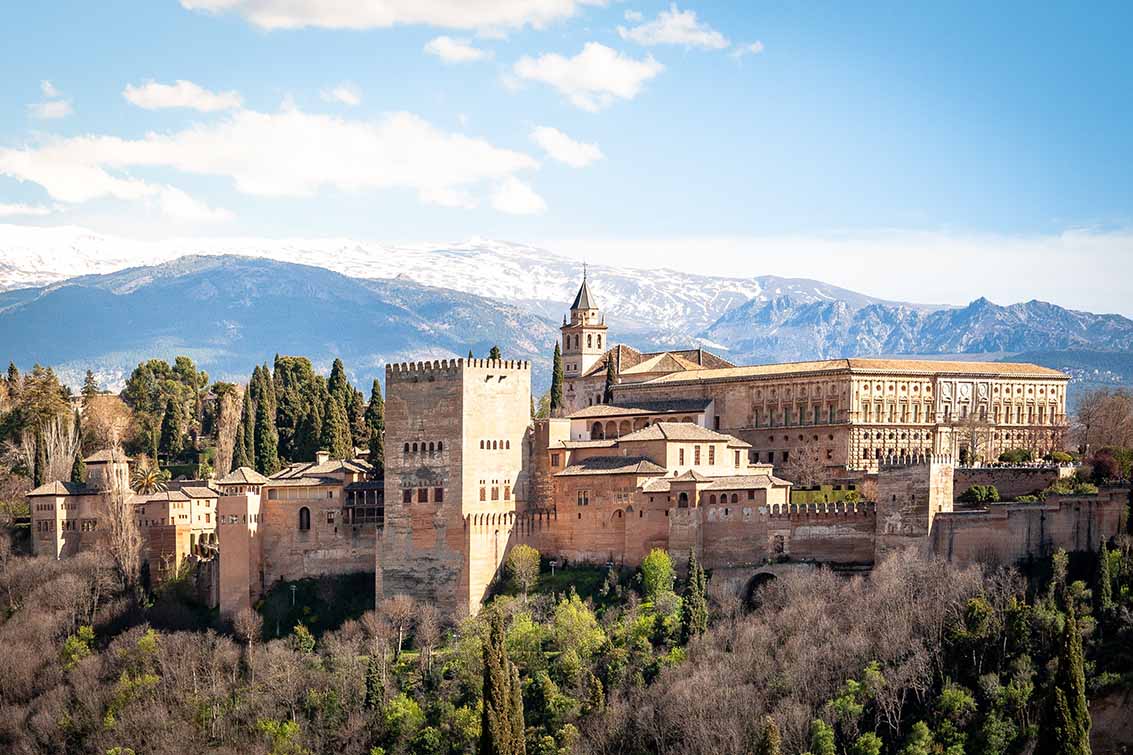
Once the capital of the Islamic Kingdom of Granada, which ruled over the region from the 8th to the 15th centuries. Granada became a center of learning and culture, and many of the city’s famous landmarks were built, including the Alhambra, a stunning palace and fortress complex that is now a UNESCO World Heritage Site.
Granada Historical Walking Tour
Explore the rich history and culture of Granada with a private guide.
Walk through the city’s historic neighborhoods, such as the Albaycin, an old Arab quarter with cobbled streets and small squares. From the San Nicolas viewpoint, you can admire the Alhambra and the Sierra Nevada.
Visit the hill of Sacromonte, a quarter known for its cave dwellings, gypsy community, and flamenco tradition.
The Cathedral of Granada is a notable example of Spanish Renaissance architecture. The Royal Chapel features a single nave, an eight-angled presbytery, and a high choir. The Royal Pantheon contains the remains of King Ferdinand, Queen Isabella, Philip the First, Joanna the First, and Miguel, the Prince of Asturias.
Granada Alhambra Private Tour
Located on a rocky hill, on the banks of the Darro River, protected by mountains and amongst the eldest quarter in the city, the Alhambra rises up like an imposing castle with its distinctive reddish stone in its ramparts that prevent the outside world from seeing the delicate beauty enclosed within.
The Alhambra is a world-renowned example of Islamic art, featuring intricate carvings, stucco work, and stunning mosaics. Originally built as a military fortress, the Alhambra later became the royal court of Ferdinand and Isabella, where Christopher Columbus received royal endorsement for his voyage. The complex includes the stunningly ornate Moonish palaces, the Renaissance-style Palace of King Charles V within the Nasrid fortification of the Alhambra, the Alcazaba fortress, and the independent Palace of the Generalife. This palace is surrounded by lush gardens, fountains, and orchards, and is known for its beauty and cool, refreshing atmosphere.
Stay overnight in Granada.
Day 9: Arrival in Seville & Monuments Tour
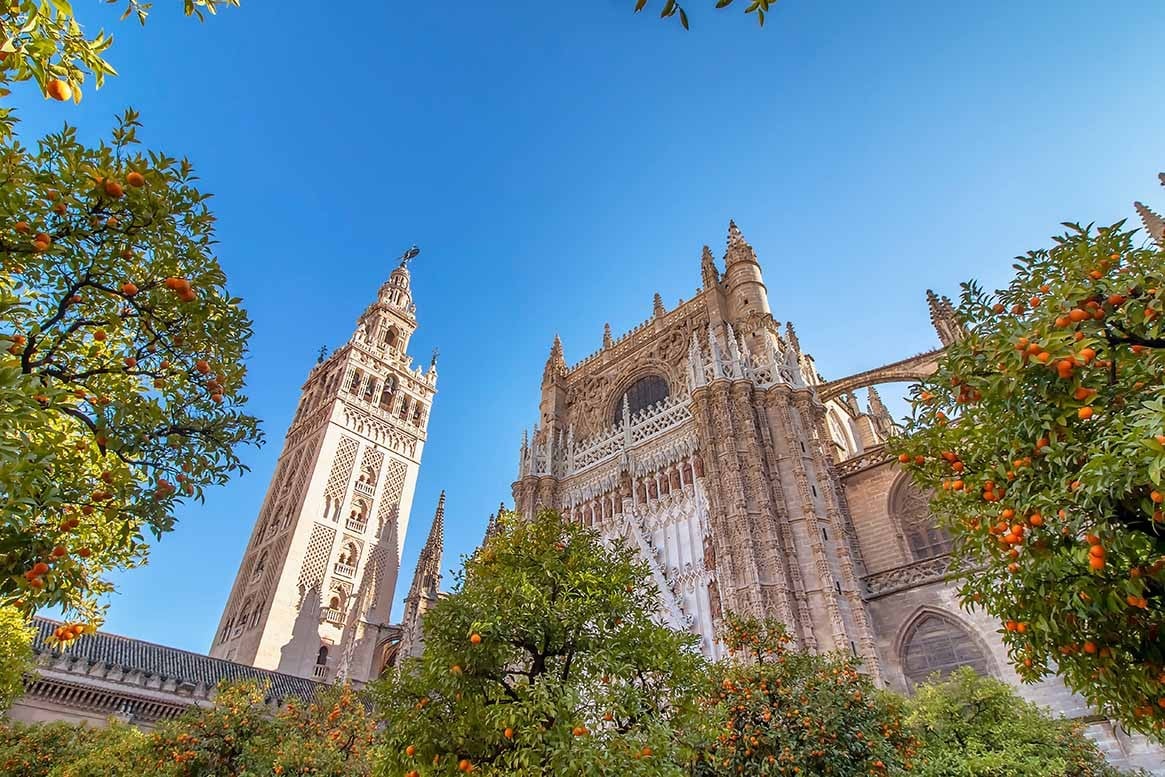
Today you leave Granada behind and make your way to Seville, the Capital of Andalucia. You can make the journey via a private transfer in our executive class vehicle, or by first class train carriage. Either method of transport takes approximately 2 and a half hours.
Accompanied by your guide, visit the two most iconic landmarks in the city: the Seville Cathedral and the Reales Alcazares.
The Alcazar
The Alcazar is the oldest royal palace still in use in Europe and was designated a UNESCO World Heritage site in 1987. It features palaces from different time periods and its gardens reflect its Moorish history. The complex was built in medieval times but contains a mix of architectural styles, including Gothic, Mudéjar, Renaissance, and Baroque.
The Seville Cathedral
The Seville Cathedral is the largest Gothic cathedral in the world and boasts a wooden main altar. Constructed in the 12th century and originally a mosque, only the minaret, now called “La Giralda,” remains. The bells are located in La Giralda.
Continue your discovery of Seville and its iconic landmarks on a guided panoramic tour. Your guide will show you the University, which was once home to the Royal Tobacco Factory, the Plaza de España, an impressive square in Maria Luisa’s Park built for the Ibero-American Exhibition of 1929, the San Telmo Palace, originally a navigators school, the Tower of Gold, a former watchtower and defensive barrier on the Guadalquivir River, the Royal Maestranza Bullring, the Triana neighborhood with its unique character and numerous pottery workshops, the Isabel II’s Bridge, the Expo 1992 and its notable bridges, and the Basilica of the Macarena.
Stay overnight in Seville.
Day 10: Seville Cooking Class & Flamenco Experience
Today you will have the opportunity to explore 2 of the most celebrated and unique cultural dimensions that make Seville so distinctive, the famed cuisine on a private cooking lesson, and the passionate flair and colors of Flamenco performance.
Cooking Class & Market Visit
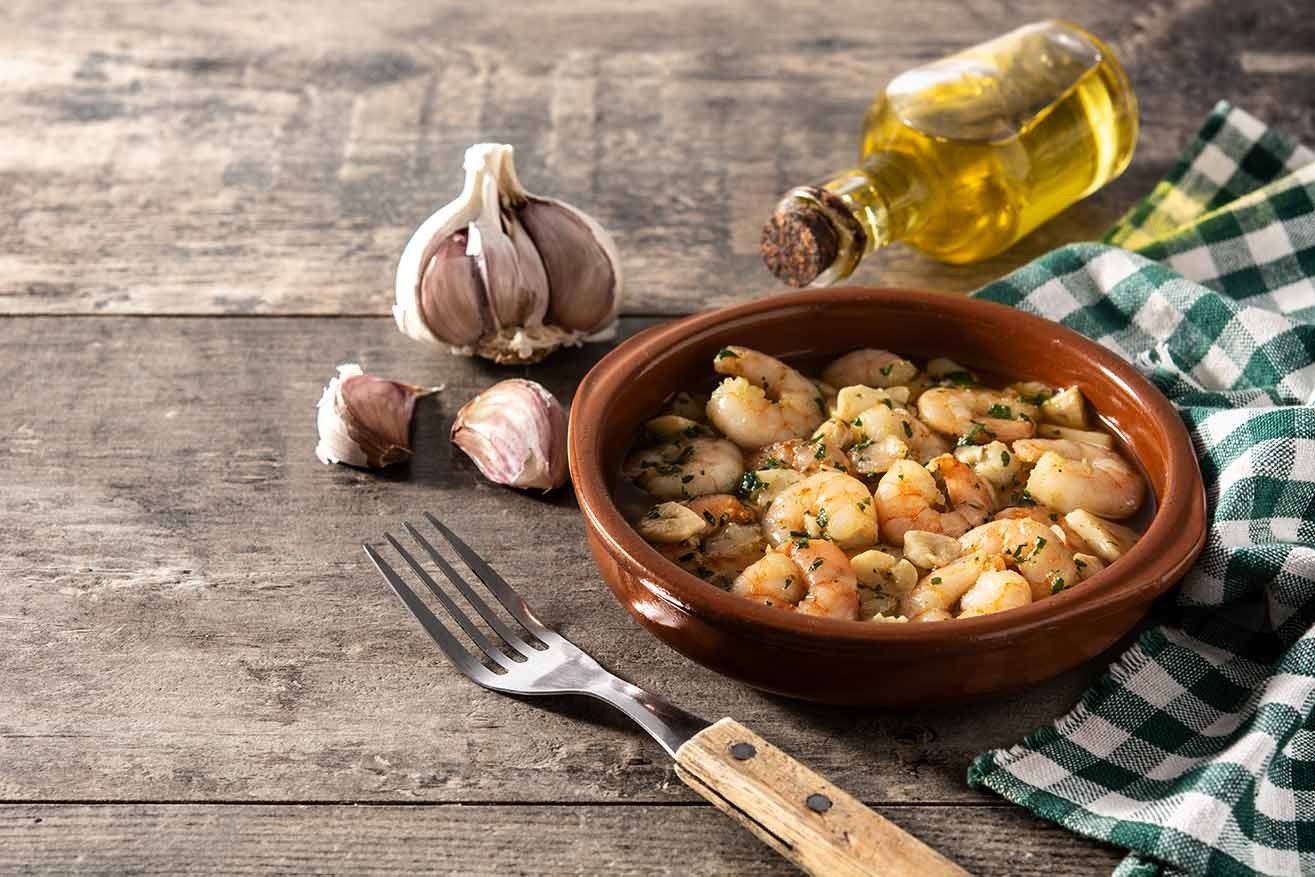
Experience the local cuisine today with a visit to a local market, followed by a private cooking class and a delicious lunch with views of the Seville Cathedral.
Meet your chef and tour a local market, where you will see a wide variety of seafood, meat, fruit, and vegetables. After your market visit, head to the cooking workshop, where your chef will teach you how to prepare a delicious meal.
Learn everything about authentic Spanish recipes by participating in a hands-on cooking class. After the class, enjoy lunch on the terrace, where you can savor your own culinary creations and share a glass of wine with your chef while taking in the views of the cathedral.
Flamenco Performance
Experience the unique art of flamenco in Seville by visiting the Museo del Baile Flamenco and attending a flamenco show. If you arrive about 30 minutes early, you can also visit the museum’s small collection and learn about the cultural significance of flamenco, which has been designated as an intangible World Heritage by UNESCO.
After the show, complete your evening with a romantic horse-drawn carriage ride through the illuminated streets of Seville.
Overnight stay in Seville
Day 11: Ronda Day Trip

Meet your private driver and travel to the city of Ronda, located southeast of Seville in the Andalusian region of Spain. Ronda is a city with a rich history and cultural heritage. It was once a key center of trade and commerce and was known for its skilled craftsmen and artisans. Today, it is a popular tourist destination and is known for its charming streets, historic buildings, and stunning natural beauty.
Ronda is known for its breathtaking gorge that divides the medieval quarter from the modern city, which is now connected by an impressive 18th-century bridge. The view from the bottom of the gorge is truly unforgettable.
During your tour of Ronda, your guide will show you interesting landmarks such as the bullring, which is believed to be one of the oldest in Spain. Ronda is also home to some excellent restaurants, so it is recommended to stop for dinner before continuing your journey to Malaga.
Day 12: Malaga Walking Tour & Picasso Museum
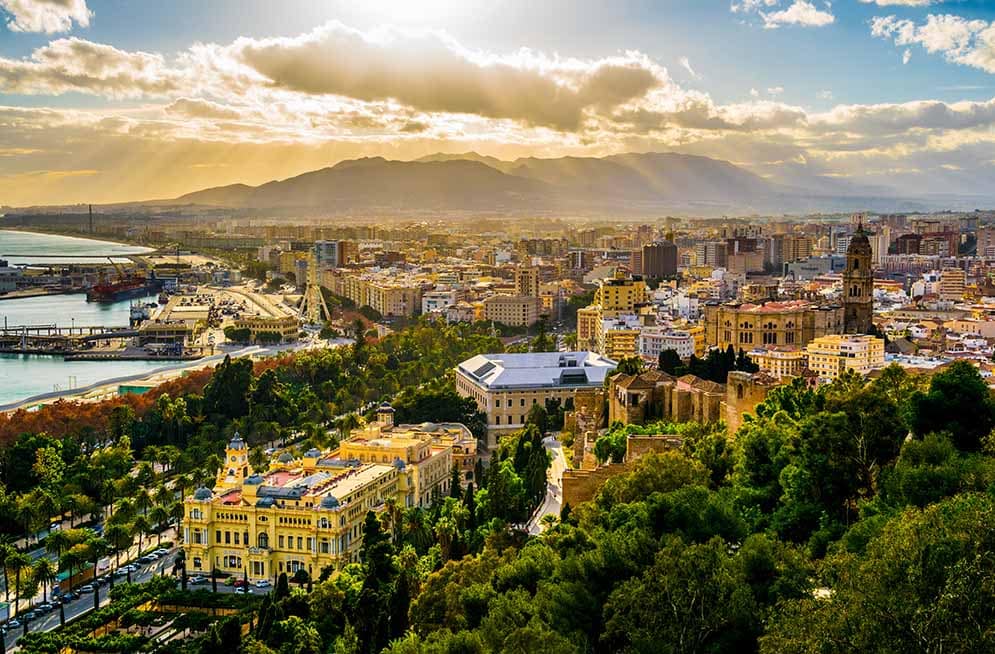
Join your private guide for a half-day tour of lively Malaga, where you can experience the unique Andalusian flavor of the city. Explore Malaga’s most important sites, monuments, and museums, including:
- The Central Market (Atarazanas)
- The Plaza de la Constitución
- The Manquita (also known as the Cathedral)
- The Alcazaba (a fortress-palace similar to the Alhambra)
- The Roman Theatre
- Larios street, the heart of the city and home to a wide range of bars and stores
Malaga Picasso Museum Tour
The Picasso Museum of Malaga offers a comprehensive look at the life and work of Pablo Picasso.
You can see his early academic paintings, his experimental Cubist works, and his later mixed-style pieces from the seventies. The museum also features a collection of the artist’s ceramics and graphic art, as well as personal artifacts from the Picasso family.
After exploring the Picasso Museum, be sure to visit the Picasso Birthplace Museum, which houses an impressive collection of Picasso’s paintings, ceramics, graphic art, and illustrated books, as well as personal artifacts from the artist’s family.
Stay overnight in Malaga
Day 13: Bilbao & Food Experience
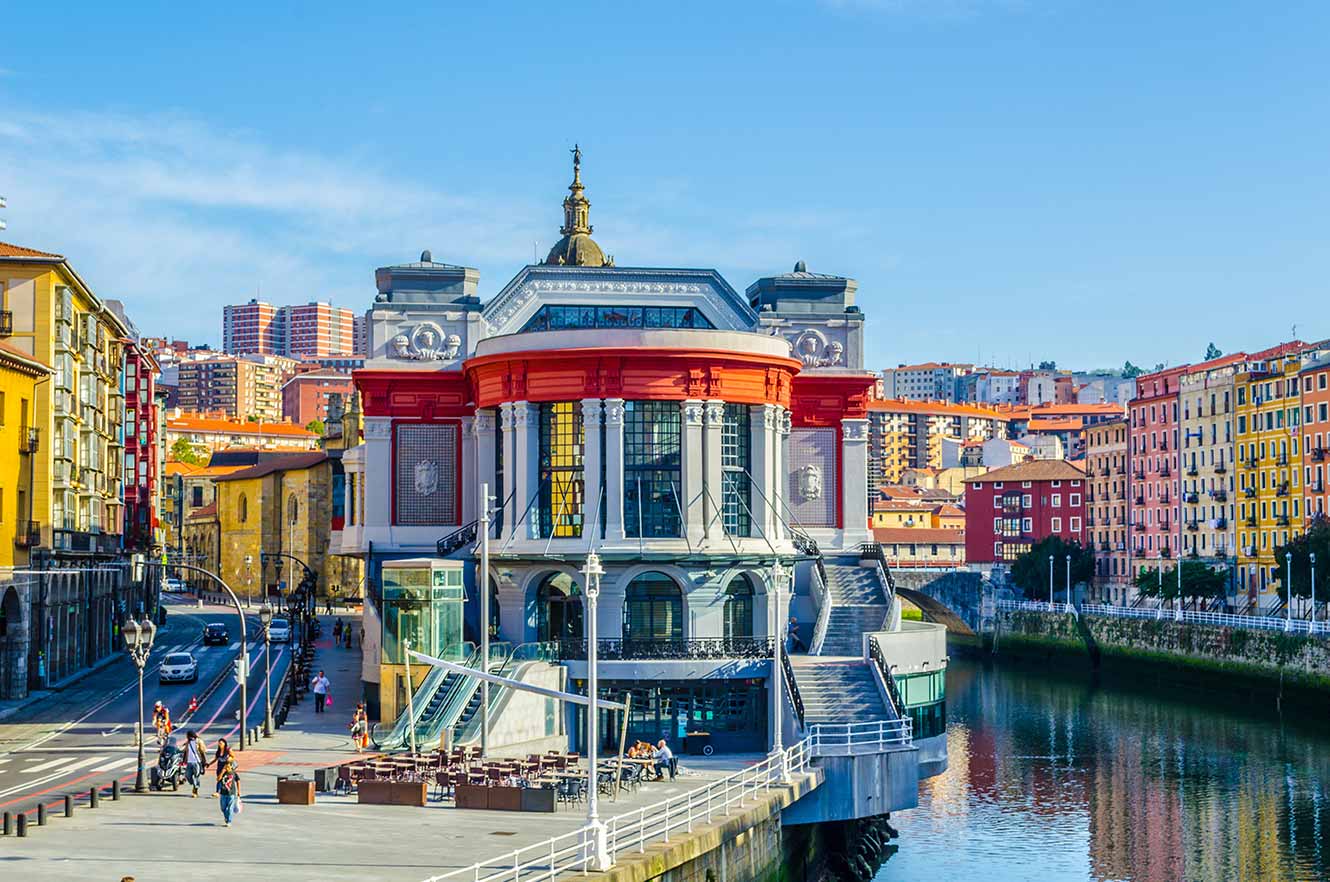
In the morning take the 1-and-a-half-hour flight from Malaga to Bilbao.
Enjoy a Bilbao´s old quarter private guided walking tour.
The old quarter of Bilbao, also known as the “Seven Streets,” offers a blend of history and modern urban vibrancy. As you wander through its cobbled streets and charming squares, you’ll encounter iconic landmarks such as the Gothic Saint James Cathedral, Plaza Nueva, San Anton Church, and the Mercado de la Ribera, the largest covered market in Europe.
This area is also a great place to sample the local cuisine at bars and restaurants and participate in the popular tradition of “txikiteo” and pintxos (tapas). The tour includes three drinks and pintxos.
Overnight in Bilbao.
Day 14: Guggenheim Museum Tour
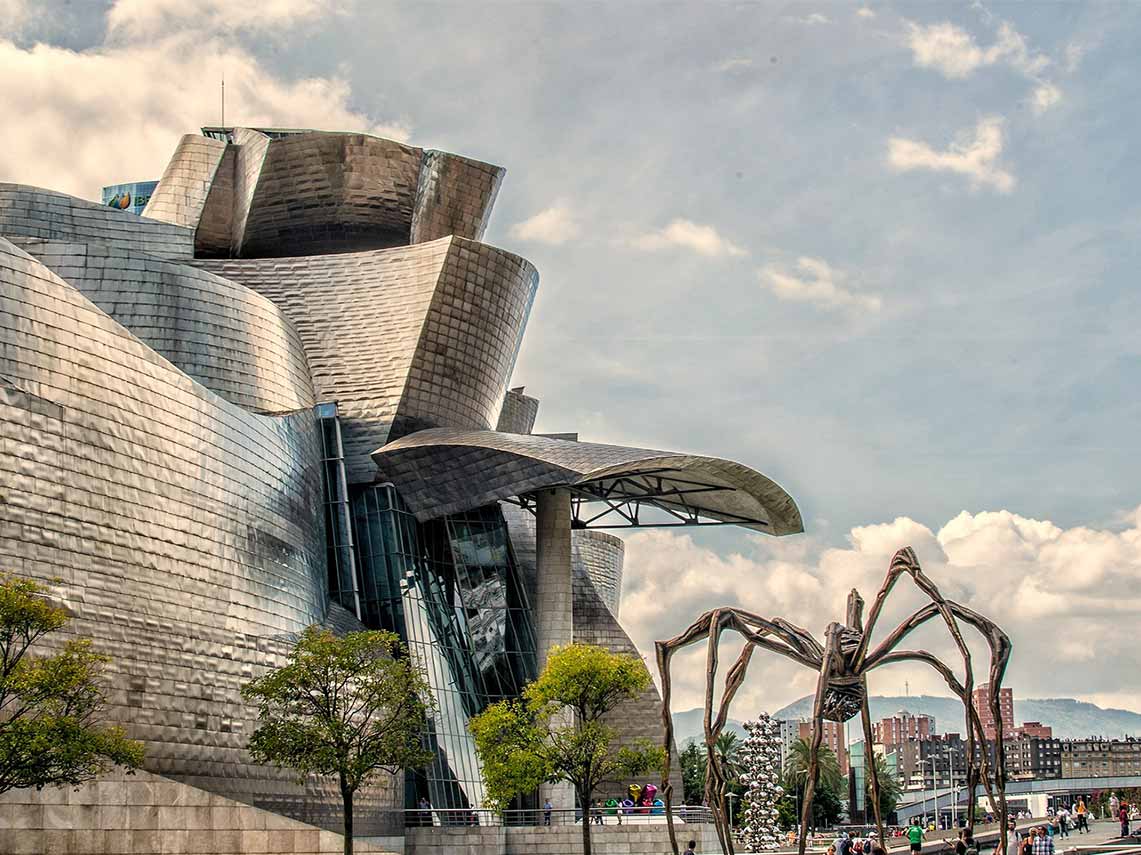
The Guggenheim contemporary art museum was designed by architect Frank Gehry and opened in 1997, becoming an iconic landmark in the city. The museum is home to a diverse collection of artworks, including paintings, sculptures, installations, and more. The building itself is a work of art, with its striking and unconventional design featuring curving forms covered in titanium sheets.
With a private guide, you can fully explore the Guggenheim Museum and all it has to offer. Your guide can provide insight and context for the various artworks on display, helping you to appreciate and understand them more deeply. You may also have the opportunity to visit special exhibitions or areas that are not typically open to the public.
Your guide can tailor the tour to your interests and preferences, ensuring that you get the most out of your visit.
Overnight in Bilbao
Day 15: Scenic Driving Tour Between Bilbao to San Sebastian

Get ready to explore the breathtaking beauty of the Basque Coast on a private full-day tour. Your journey begins in the town of Getxo, where you’ll have the chance to marvel at the views from the famous hanging bridge. From there, you’ll head to Mungia to visit the imposing Butron Castle. Nestled in the heart of the Basque Country, this castle has a rich history dating back to the 14th century.
Next, you’ll travel along the coast to the chapel of San Juan de Gaztelugatxe, a beautiful and historic religious site located on a peninsula in the middle of the sea. You’ll continue your journey to the charming fishing village of Bermeo, where you can take in the local culture and perhaps try some delicious seafood. As you make your way up the coast, you’ll also visit the town of Mundaka, known for its breathtaking views of the Biosphere Reserve of Urdaibai.
Your tour will conclude in the emblematic town of Guernica, a place of great significance in the Spanish Civil War and home to the famous painting by Picasso.
Day 16: San Sebastian Biking & Walking Tour

See the magnificent views, landscapes, and neighborhoods of San Sabastian by both bike and on foot with our full-day tour itinerary.
Countryside Biking Tour
Join us on a cycling tour through the breathtaking landscape of Santiagomendi and the Camino de Santiago.
From the top of Santiagomendi, you’ll be treated to a 360-degree panorama, taking in the Concha Bay and the first mountains of Navarre and Bizkaia. We’ll also stop at the Old Hermitage, a historic site that has provided shelter for pilgrims for centuries.
After a rest, we’ll follow the “route of the apple orchards” on a circular descent, returning to San Sebastián via a bike path. The tour covers a distance of 25km (round trip) with an elevation change of 294m. It includes a traditional appetizer and drink, which serves as lunch.
San Sebastian Walking Tour
Join a private guide for a half-day walking tour of San Sebastian and discover the city’s rich history and culture.
You’ll explore the old Casino, now the City Hall, and take a stroll along the beautiful La Concha Beach. You’ll also visit the Victoria Eugenia Theatre and the Maria Cristina Hotel, both notable landmarks in the city.
As you walk through the old town, you’ll see the marina and the fishermen’s district, as well as the “María Cristina Bridge,” a monumental bridge that crosses the River Urumea. Along the way, you’ll witness the blend of tradition and modernity that make San Sebastian a unique coastal leisure city with touches of the Belle Époque.
Overnight in San Sebastian.
Day 17: La Rioja
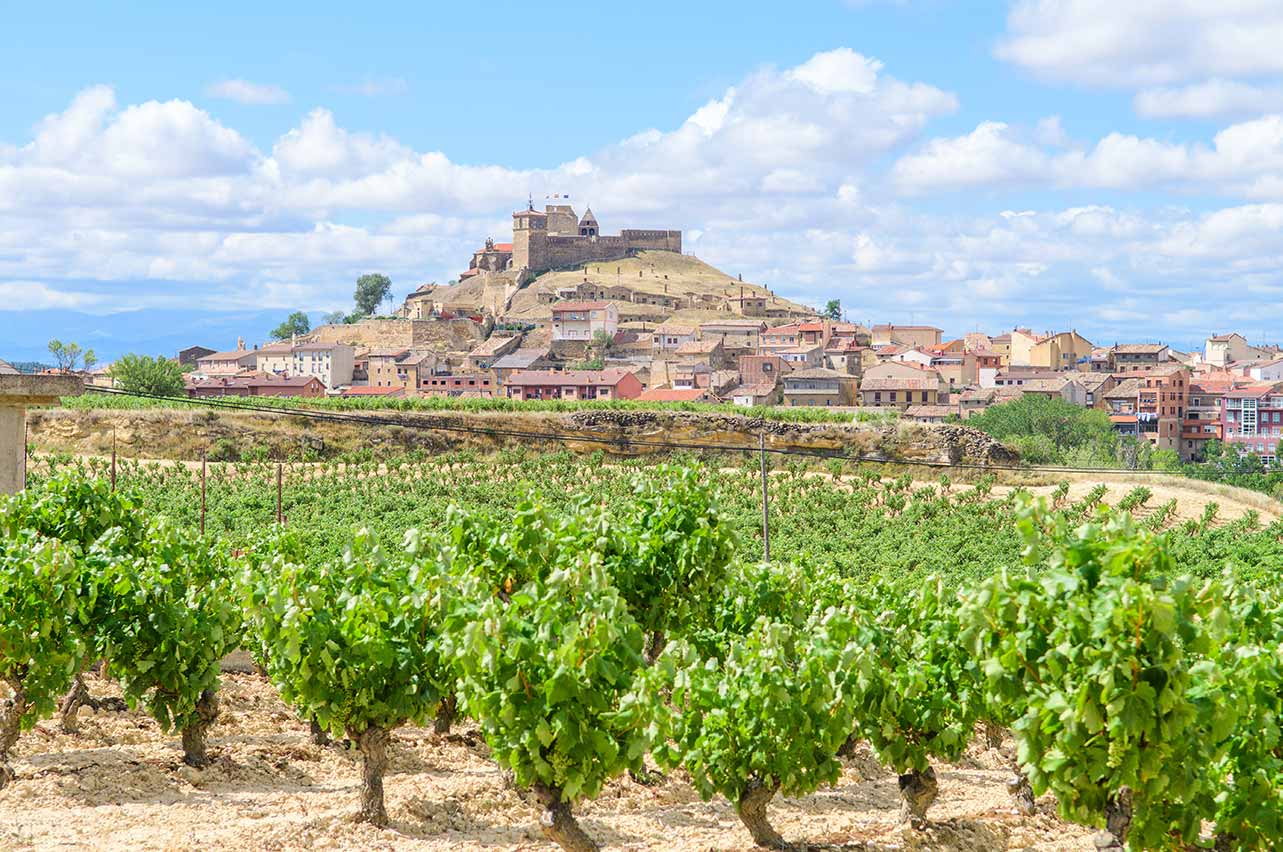
Join us on a private tour of the Rioja Wine Region and discover the secrets of winemaking in one of the world’s most famous wine regions.
You’ll travel in comfort with a private driver and private guide, both passionate about Rioja. The tour includes visits to three special wineries, each with its own unique style, history, and architecture.
You’ll also have the opportunity to explore the charming medieval village of Laguardia and enjoy lunch at a local restaurant recommended by our expert guides. This is a day-long journey through the beauty of the Rioja region and an unforgettable experience for wine enthusiasts.
Overnight in La Rioja wine estate.
Day 18: La Rioja Continued
Aranda de Duero is a town known for its rich history as a strategic stronghold in the Middle Ages. It is also famous for its medieval cellars, which were used to produce the region’s famous wine from the 15th century until the second half of the 20th century. These underground rooms form a maze-like labyrinth that is a testament to the town’s rich winemaking heritage.
Join us on an exciting private tour through centuries of history and wine tradition in the region. This is a great opportunity to indulge in a memorable tasting session featuring the best wines the region has to offer.
During this tour, you will have the opportunity to explore the production of wine at a depth of 12 meters with your expert guide. You will learn about the cultivation of vines and the process of making wine on-site.
As part of the tour, you will also be treated to a wine-tasting session and a traditional meal featuring the local specialty of roasted milk lamb, accompanied by delicious local wine.
After your wine and food experience, your private driver will take you to Madrid in the evening.
Day 19: Discovering Madrid & Prado Museum
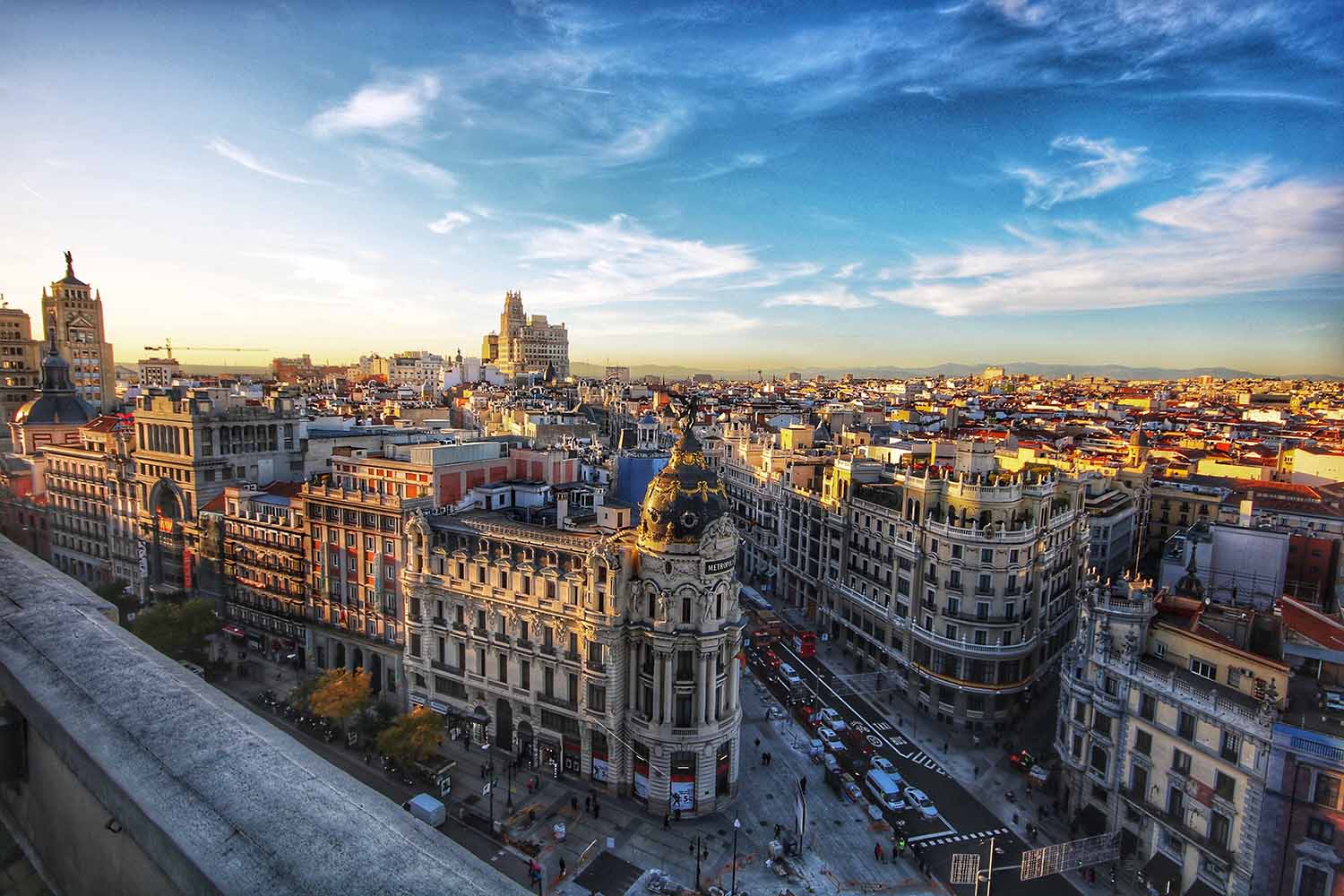
On this private tour, your guide will introduce you to the most notable buildings and avenues of Madrid, providing historical context throughout different periods, from the reigns of the Habsburgs and Bourbons to the present day.
You will have the chance to see the Royal Palace, the former residence of the King and Queen of Spain, the Plaza Mayor, the Puerta del Sol, the Royal Post Office (currently the headquarters of the Government of the Community of Madrid), the Grand Via with its unique buildings, and the Retiro Park, which was once a recreational area for the royal family and is now a popular spot for locals and visitors alike.
Prado Guided Tour
The Prado Museum is a world-renowned art gallery that boasts a world-leading collection of paintings, sculptures, and other artworks from the Spanish, Italian, and Flemish schools.
Visitors to the museum can view masterpieces by some of the greatest artists in history, including Diego Velázquez, Francisco de Goya, Peter Paul Rubens, and Hieronymus Bosch.
Some of the must-see artworks at the Prado include Velázquez’s Las Meninas, Goya’s May 3rd, 1808, Rubens’s The Three Graces, and Bosch’s The Garden of Earthly Delights. In addition to these famous works, the museum also features many other pieces by notable artists such as Titian, Raphael, and El Greco.
Stay overnight in Madrid.
Day 20: Day Trip Excursion to Toledo
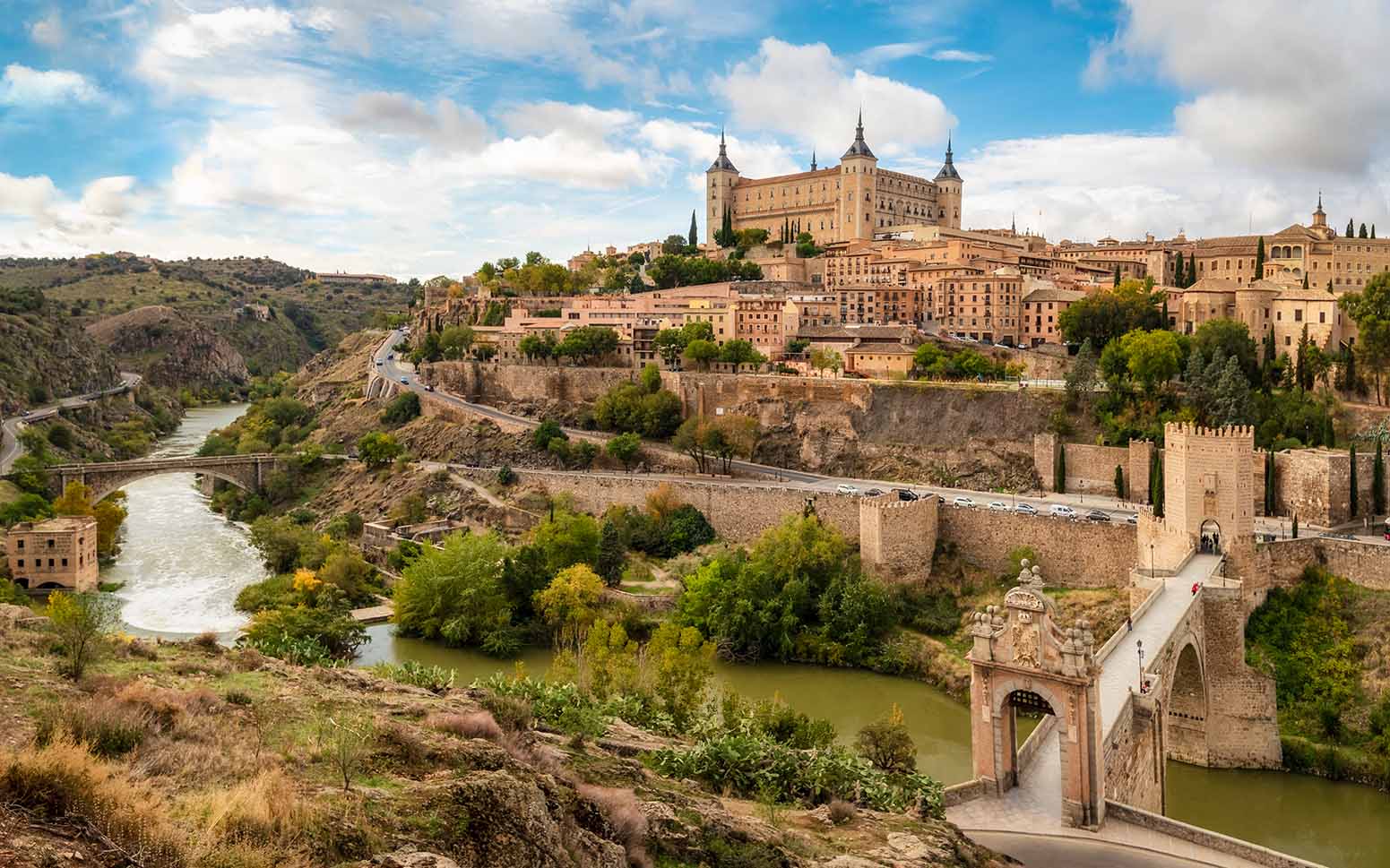
Meet your driver and guide in Madrid and begin the 1-hour journey to Toledo.
Arrive in Toledo and begin a guided walking tour of the city’s historic center.
Your tour will start at some of Toledo’s most famous landmarks, including the Cathedral of Toledo and the Alcázar.
The Cathedral of Toledo is a Gothic masterpiece that dates back to the 13th century. It is home to a wealth of art and architecture, including the tombs of several Spanish kings and queens.
The Alcázar of Toledo is a fortress and palace that was built by the Spanish monarchy in the Middle Ages. It has been used as a royal palace, a military barracks, and a state prison, and today it is a museum that displays a collection of art and artifacts.
After visiting these iconic landmarks, you will continue your tour of Toledo with a visit to the Synagogue of Santa María la Blanca, which dates back to the 12th century and is considered one of the finest examples of Mudéjar architecture in Spain.
Lunch in Toledo
Take the opportunity to enjoy a delicious lunch at a local restaurant in Toledo.
Toledo is known for its delicious cuisine, which combines elements of both Spanish and Mediterranean cooking. You will have the chance to sample some of the local specialties, such as Toledo’s famous marzipan, a sweet almond-based confection that is a popular treat in the region.
Museum of Santa Cruz
The museum is housed in a beautiful 16th-century building that was once a hospital. It is home to a stunning collection of artworks, including paintings, sculptures, and other decorative objects, many of which were created by El Greco, a famous painter and sculptor who lived and worked in Toledo in the late 16th and early 17th centuries.
One of the highlights of the museum is its collection of El Greco’s works, which includes some of his most famous paintings, such as “The Disrobing of Christ” and “The Assumption of the Virgin.” You’ll also have the chance to see other works by El Greco, including his paintings of the Virgin Mary and various saints, as well as his portraits of important figures from Toledo’s history.
As you walk through the galleries, your guide will provide you with interesting information and insights about the artworks and their historical context, helping you to fully appreciate the beauty and significance of these works.
Return to Madrid in the evening with your private driver.
Day 21: Transfer to Airport
On the final day of your 21-day tour of Spain, your private driver will pick you up from your hotel in Madrid and take you to the airport.
As you make your way through the city, you’ll have the opportunity to reflect on all of the amazing experiences you had over the past three weeks.
As you approach the airport, your driver will drop you off at the terminal and bid you farewell. You’ll make your way through security and onto your flight, ready to return home and share your adventures with friends and family!
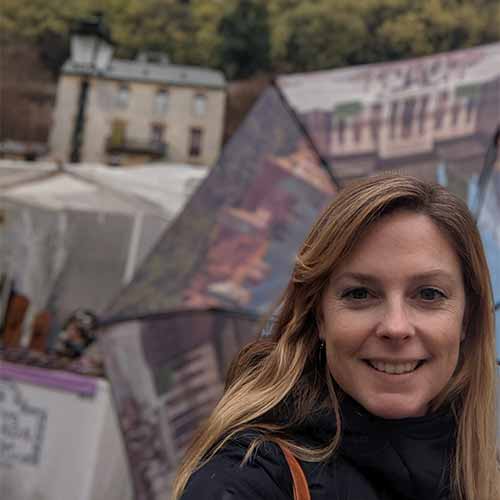
Meet Your Personal Tour Planner!
Say Ola to Emily, your personal tour planner at Guided Spain Tours. Get in touch by filling in the form below and requesting your complimentary itinerary!
Let us know your questions!
Call our team
US: +1 (240) 332-1519
Get A Customized 21 Day Spain Vacation Tour Itinerary
Our team of experienced travel advisors would be delighted to create a complimentary personalized 21 itinerary that meets your specific interests and needs.
Whether you want to spend your days exploring the vibrant cities of Madrid and Barcelona, soaking up the sun on the beaches of the Costa del Sol, or discovering the rich cultural heritage of Andalusia, we can help you plan the perfect trip to Spain.
Simply let us know your preferences and we will put together a detailed itinerary that includes all the must-see sights and activities, as well as recommendations for hotels, restaurants, and other travel arrangements. We look forward to helping you plan your dream vacation to Spain!
More Example Multi-Day Tour Itineraries
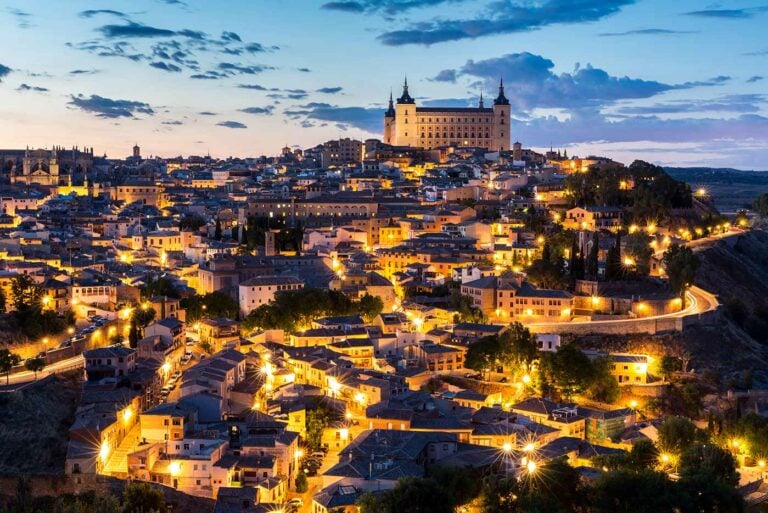
4 Weeks Itinerary of Spain
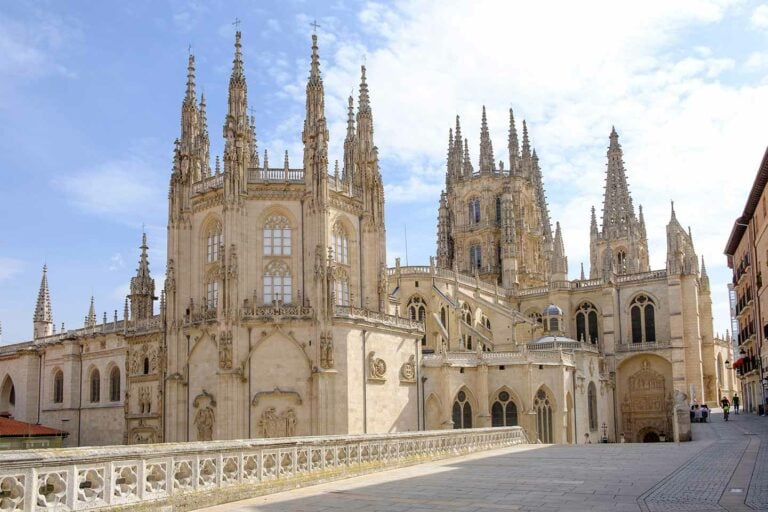
14 Days North Iberia

France & Spain 14-Day Tour Itinerary

21 Day Spain & Portugal
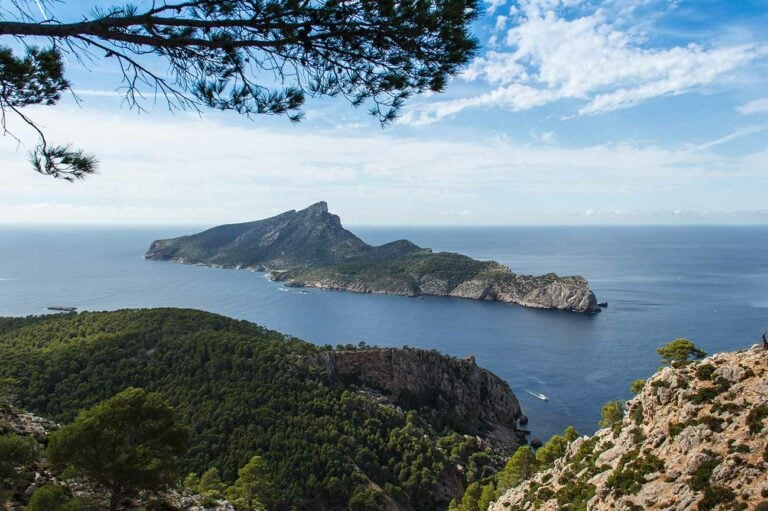
3 Day Mallorca Tour

16 Day Spain & Portugal
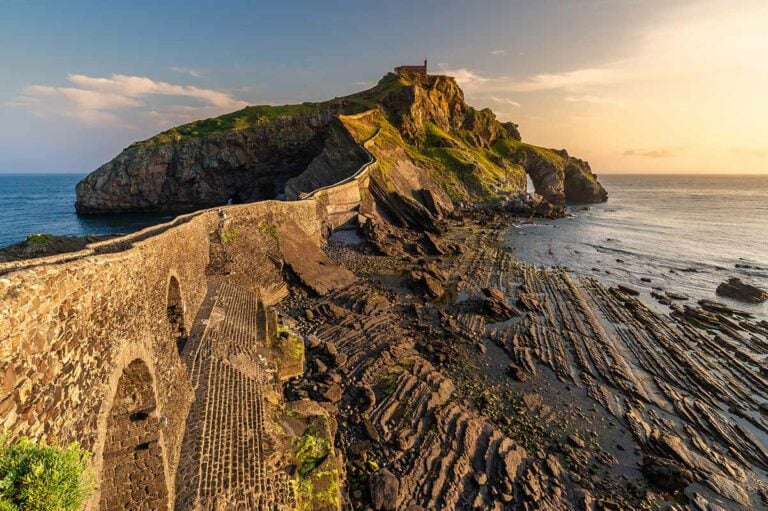
15 Day Iberia Itinerary
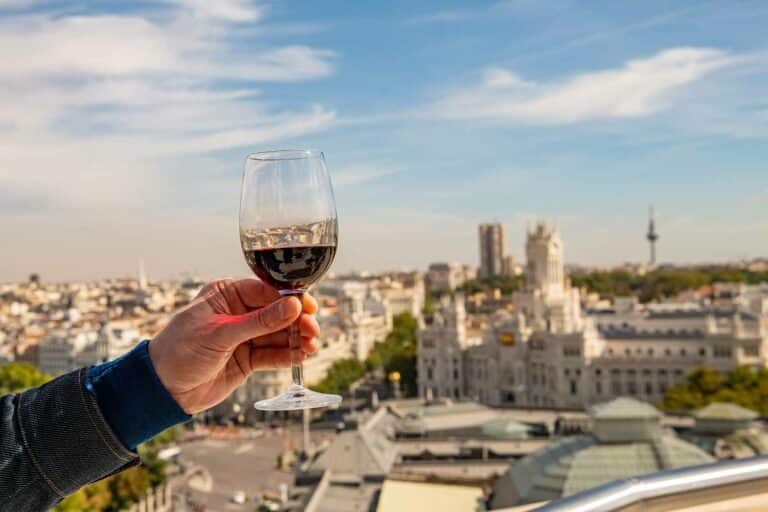
Foodie Tour Itinerary In Spain & Portugal


Food & Wine Tour
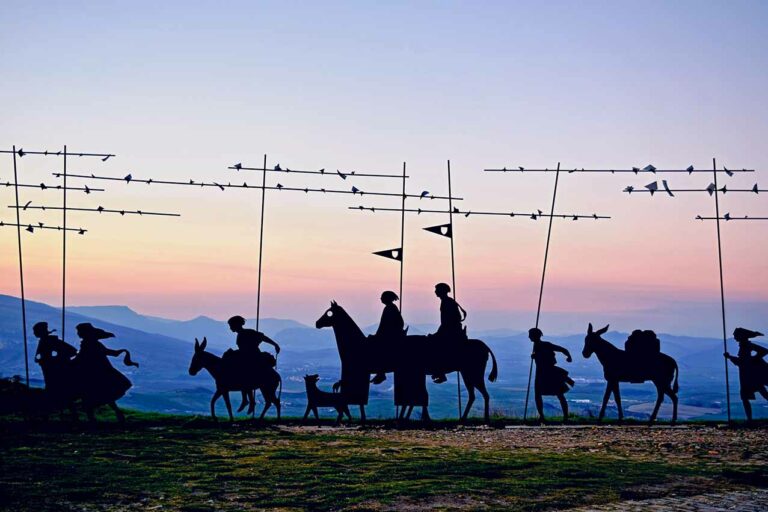
Guided Camino De Santiago Tour

16 Day Spain Vacation
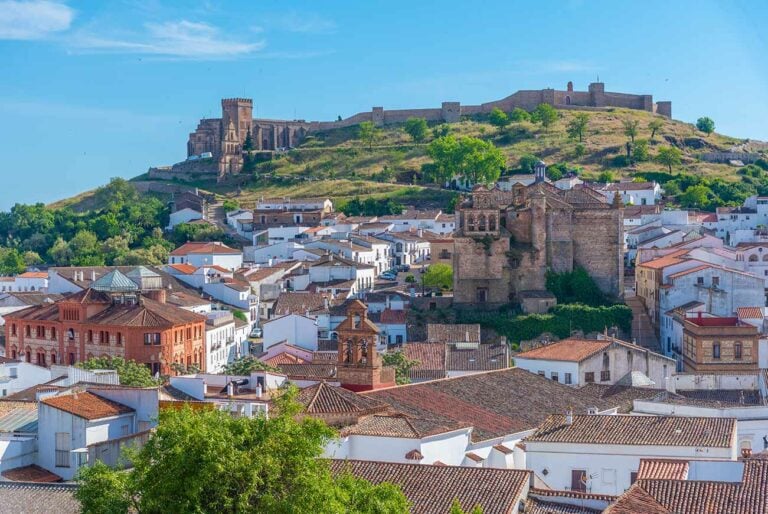
White Villages of Southern Spain
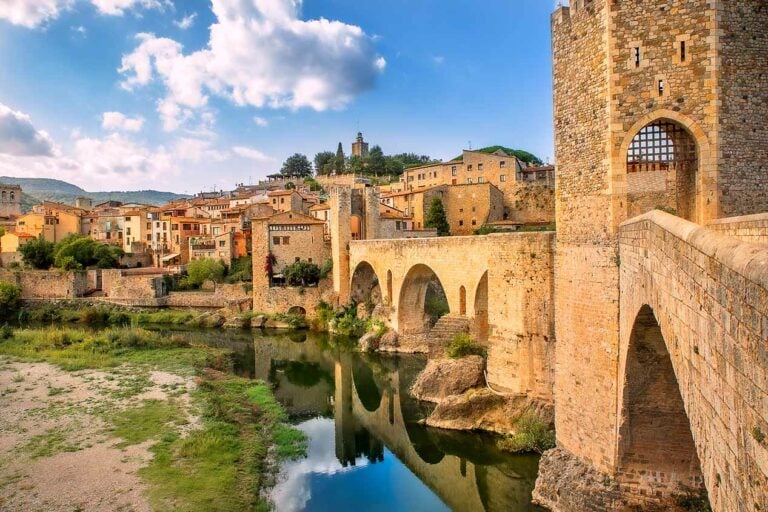
7 Day Catalonia Tour

Best of Spain in 10 Days
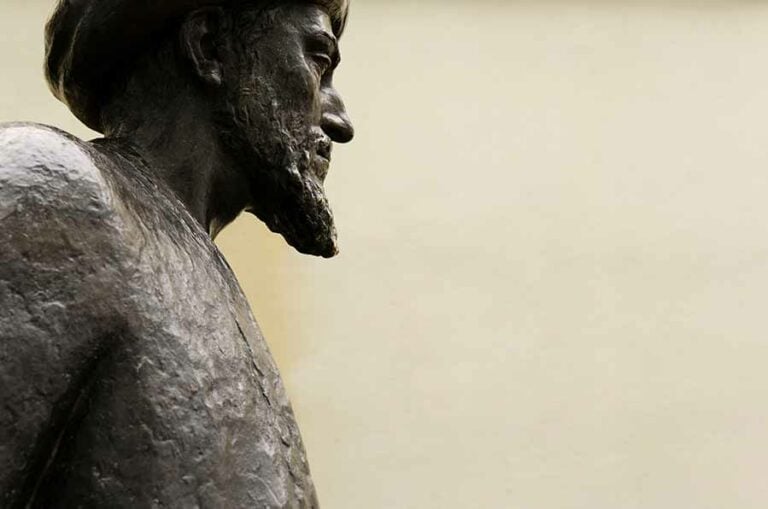
10 Days Jewish Heritage
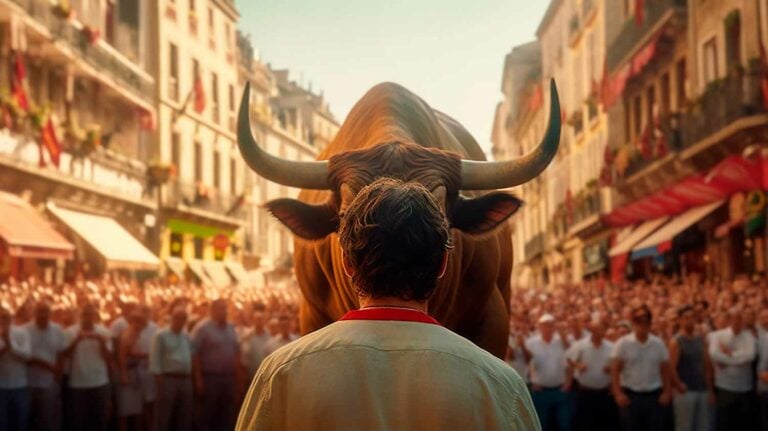
7 Day Bullrun Tour

9 Day Family Tour
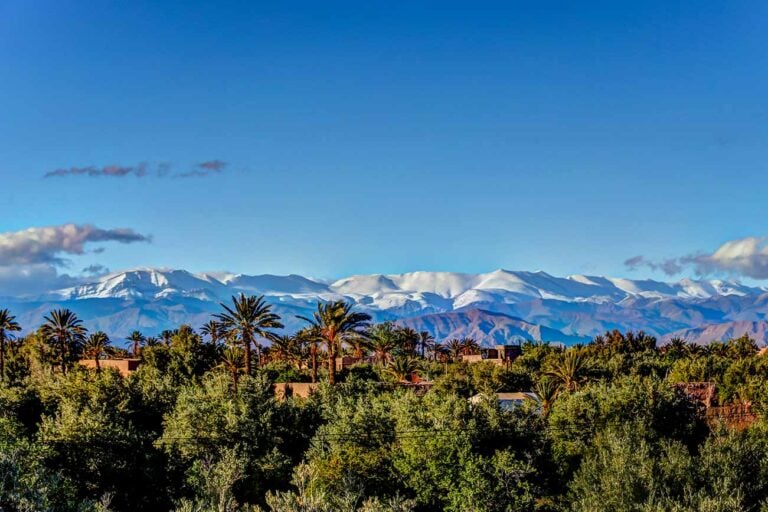
Spain, Portugal & Morocco: 13-Day Tour
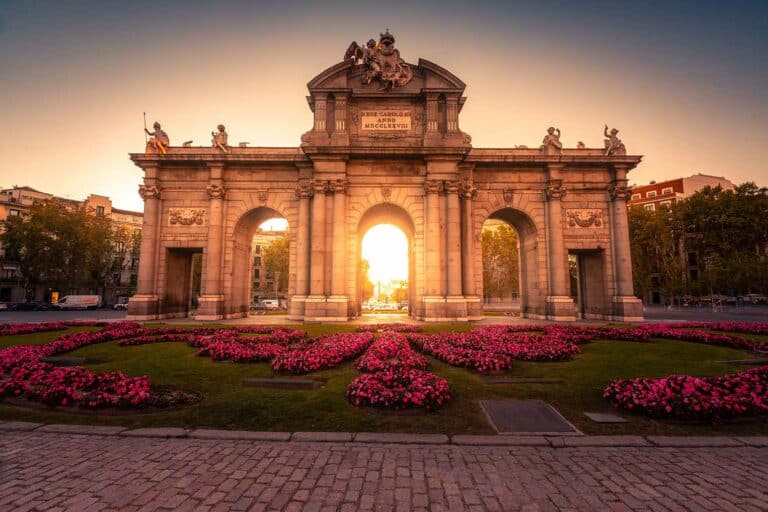
2 Weeks in Spain

Madrid & Andalucia In One Week
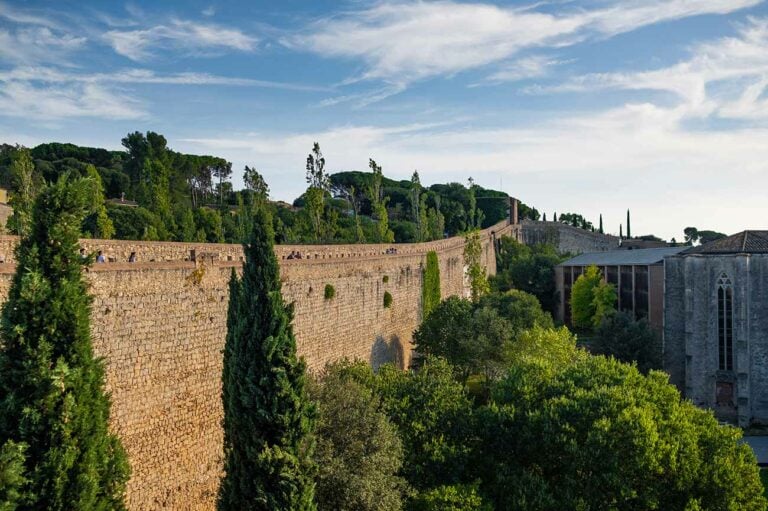
Costa Brava, Barcelona & Garrotxa Tour

14 Day Spain & Portugal
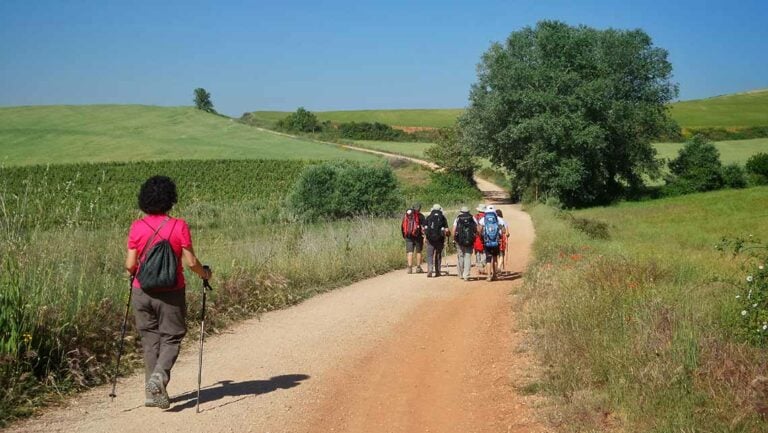
11 Days Hiking in Spain

5 Days in Andalucia
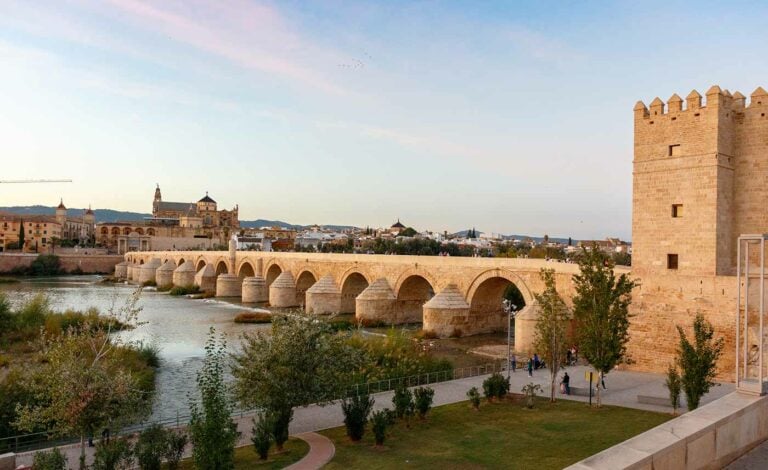
10 Day Barcelona & South Spain Tour

7 Day Family Vacation
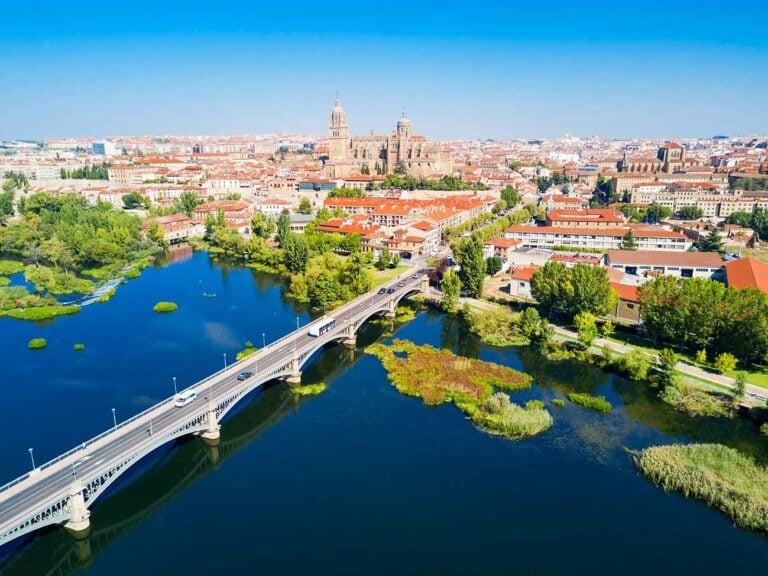
10 Day Camino a Santiponce
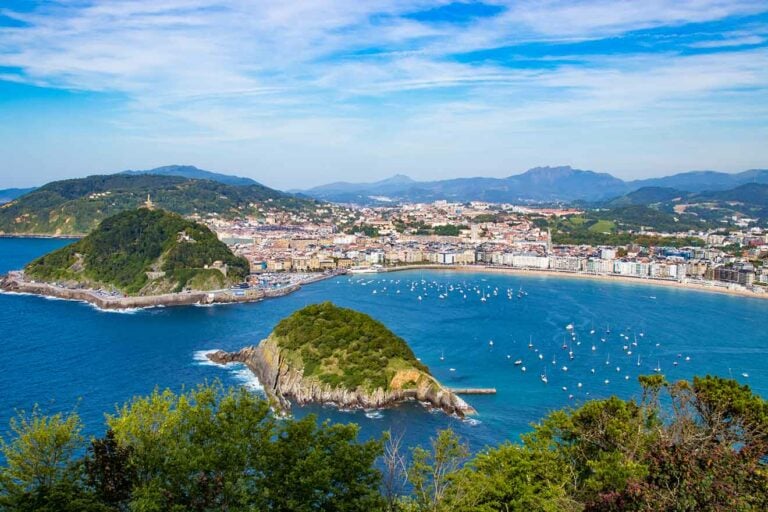
7 Day Basque Country

10 Day Southern Spain

One Week in Spain
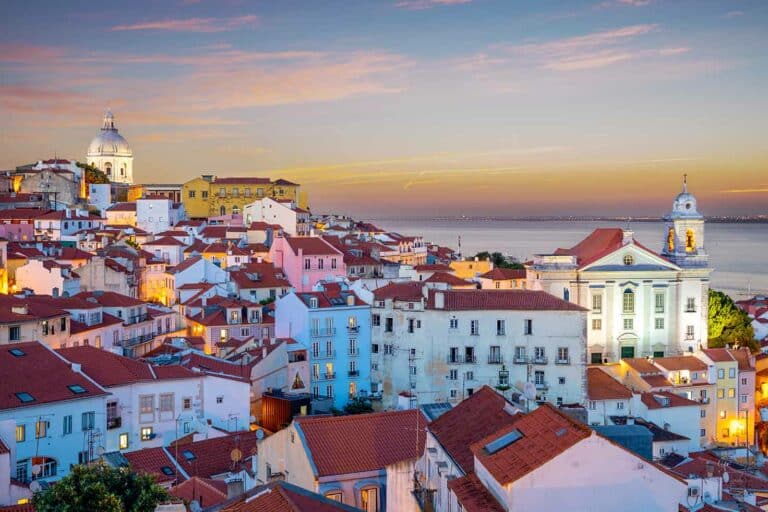
10 Day Spain & Portugal
Search for more guided spain tours.
Popular Searches: Barcelona Tours , Madrid Tours , Custom Tours of Spain , Family Tours

Spain Tours
Tour itineraries, other destinations.
Partnered with DABA Tourism Marketing
Guided Spain Tours is managed and operated by Guided Spain Tours SLU B56482201
Ask Our Experts For Your Custom Tour Itinerary
- Privacy Overview
- Strictly Necessary Cookies
- 3rd Party Cookies

This website uses cookies so that we can provide you with the best user experience possible. Cookie information is stored in your browser and performs functions such as recognising you when you return to our website and helping our team to understand which sections of the website you find most interesting and useful.
Strictly Necessary Cookie should be enabled at all times so that we can save your preferences for cookie settings.
This website uses Google Analytics to collect anonymous information such as the number of visitors to the site, and the most popular pages.
Keeping this cookie enabled helps us to improve our website.
Please enable Strictly Necessary Cookies first so that we can save your preferences!
TTC family of brands
My Trafalgar
Destinations
Get Inspired
866 513 1995

See All Tours
See More Trips
The best of Spain trips unlocked for you
Experience Spain differently. Enjoy one-of-a-kind experiences and uncover local secrets when our friends across the country open their doors to you. Here’s just a sample of the rich experiences you can expect.
0:00 / 0:00
Want to see how the best Spanish cider is made?
Want to try the best Spanish olive oil?
5 million happy guests and counting
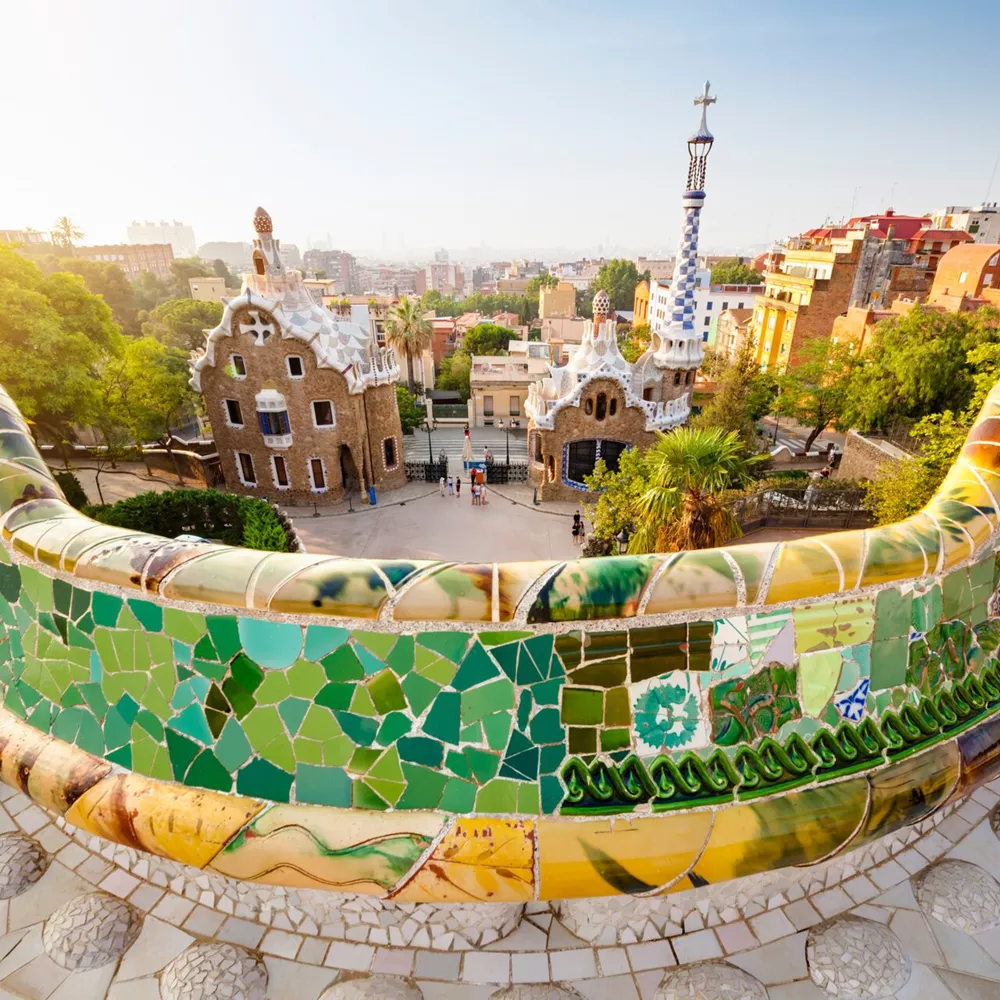
Capital City
Spanish, Catalan
Good morning
Buenos días
Good evening
Buenas noches
"It's always a nice moment when you see the guests enjoying a sangria by the olive groves of Andalucia"
Alexandre, Travel Director
Discover the Old and New Madrid
Get lost in the narrow streets and charming alleyways running off Plaza Mayor. Wooden shops and tavernas pull you in, taking you into spaces handed down through generations. With contemporary architecture and experimental restaurants, anything’s possible in the city of Madrid. The collision point of old and new.
Feel the rhythm and magic of an Andalusian flamenco
No trip to Spain is complete without witnessing an Andalusian flamenco. Emotion, seduction and mystery form into this traditional Spanish dance, making this so much more than just a pastime. Feel the guitar, the heavy clapping, the heart-thumping steps and 500 years of passion in a tablao – the region’s historic enclaves where this dance comes to life.
View the Bullring in Valencia
Aside from being the centre of one of Spain’s most traditional activities, the Plaza de Toros de Valencia is a commanding example of neoclassical architecture. Look up at the Roman-inspired building and you can almost hear 150 years of crowds roaring through the brick arches.
Admire Gaudí architecture in Barcelona
Barcelona means little without Antoni Gaudí, the 20th century architect whose unmistakable approach to Art Nouveau has made its mark on the Catalan city. Walk past Gaudí’s residence, Casa Vicens, pick out his Islamic influences in Parc Güell and watch history being built at la Sagrada Familia.
Travel to the mountain of Montserrat
Escape the city and venture to Montserrat, the jagged mountain range just outside Barcelona. Here, hike to Montserrat’s highest summit, Sant Jeroni, or take the scenic cable car to the 16th-century cliff top Christian complex of Santa Maria de Montserrat. Sweeping Catalonia views and religious history combine on this incredible experience.
Our top 5 things to do in Spain
Discover Spain with Trafalgar and get to know the intricacies of its heritage through music, dance, religion and architecture. Our trips are filled with both iconic and unexpected experiences, and will cement your love for this country.
Dali Museum
Walk through the Dalí Theatre-Museum and get a glimpse into the mind of one of Spain’s most famous exports. Designed by the artist himself, this is a building of grand Surrealist proportions, housing decades of Dalí’s works. Enjoy a surprise and new perspective at every turn.
Picasso Museum
Spend at least a few hours at the Museu Picasso, a warren-like building of courtyards and staircases filled with more than 4,000 original artworks. Explore the rooms of five joined medieval mansions, and bear witness to the artist’s broad and varied talent. This is a collection concentrating on Picasso’s earlier, lesser-known years.
Guggenheim Museum
Come for the architecture, stay for the art. Frank Gehry’s most-referenced work of modern architecture has revolutionised Bilbao and is a masterpiece in itself. Dismiss all ideas of what a building should look like and revel in the Deconstructivist design while getting up close to large-scale installations by contemporary artists.
Best museums in Spain
Surrealism, cubism, modern history and expressive architecture, you will experience it all with the museums we visit in Spain. Let Trafalgar unlock the culture of this remarkable country.
Paella Valenciana
Take a seat and immerse in a large pan of Paella Valenciana. The rice dish packed with meat and vegetables is found all over Spain but the original hails from Albufera, on the coast next to Valencia. Eat it straight from the pan with fellow dinner guests for an authentic Spanish mealtime.
A cold soup of raw, blended vegetables may not sound appealing, but Andalusia’s age-old dish is one that you will quickly learn to love. Try history-drenched gazpacho - typically made of tomatoes, stale bread, cucumber and bell pepper - for a light and refreshing option during a hot Spanish summer.
For Catalonians, nothing evokes memories of home like Escudella i carn d’olla. Devour the centuries-old meal over two courses, consisting of a soup of broth with pasta or rice (or both) followed by a large ‘pilota’ meatball livened by garlic and parsley.
Best food in Spain
Enjoy traditional Spanish food in the very place the meals originated. With Simple ingredients and rich flavors, the dishes we share with you on a trip to Spain will connect you with the authentic culinary heritage of the country.
What to pack for Spain

Catalan, Basque or Galician phrase book
Depending on where you’re visiting, speak like the locals and swap Spanish for a few phrases of the mother tongue. You’ll make friends for life by showing such enthusiasm for the local dialect.
Espadrilles
Forgo ‘flip-flops’ or ‘thongs’ and do as the Spaniards do; don a pair of traditional espadrilles for walking around the cities and travelling the country’s coastline. Comfort and style combined.
Spain has a reputation for being dry and sunny, but cool and rainy days do come. Pack a jacket for and easy layers, particularly if visiting Spain in winter.
A scarf or pashmina
A scarf or pashmina is a must for air-conditioned transport, cooler evenings and when visiting religious sites and cathedrals, which require bare shoulders to be covered.
Sturdy walking boots
Spain may be renowned for its cities and beaches, but you may need sturdy walking shoes when visiting the idyllic mountain ranges.
Pack for sustainable travel
Consider your environmental impact when you next take a trip and go single-use-plastic-free by packing a reusable water bottle, a steel straw, your own shopping bags and refillable toiletry bottles.
Our Europe & Britain destinations

Bosnia Herzegovina
Czech Republic
Liechtenstein
North Macedonia
Netherlands
Northern Ireland
Switzerland
Other worldwide regions we visit
Africa the Middle East
Australia and New Zealand
North and Central America
South America
Get your free brochure
Find your next escape with the world's leading travel brand
Request A Brochure
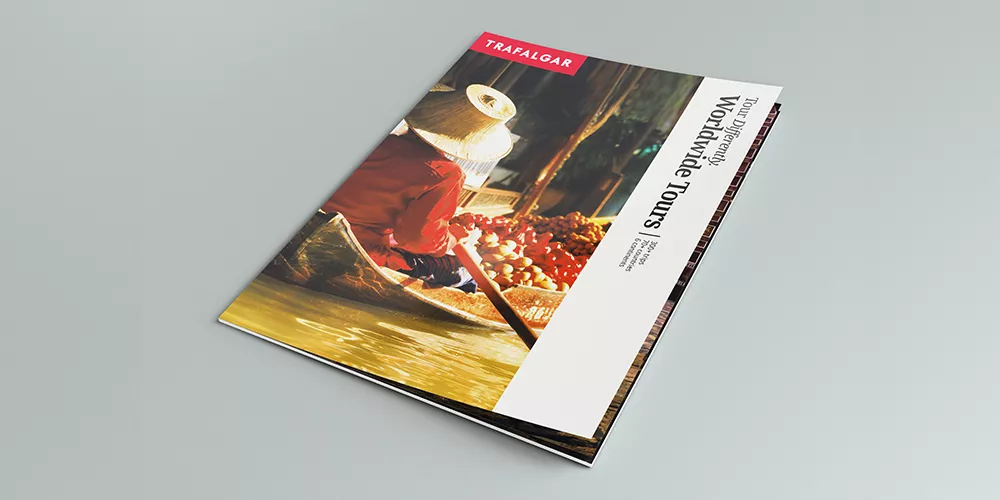
Award winning tours
Every year, we're proud to win some of the most prestigious travel accolades around the world - from the Travel Globes to the Agent's Choice Awards
Search Our Tours

Help & Info
WE MAKE TRAVEL MATTER®
Unedited Reviews
Our Destination Management Companies
Frequently Asked Questions
Travel Updates
Media & Press Room
Do Not Sell or Share My Personal Information
Travel Planning
Get Your Free Brochure
Travel Insurance
Booking Conditions
Trip Deposit Level
Recommendations
Trafalgar Tours Limited is a proud member of The Travel Corporation family of companies.
#SimplyTrafalgar
Travel House, Rue du Manoir St Peter Port, Guernsey, GY1 2JH
Selected Region
United States
United Kingdom
New Zealand
South Africa
Copyright 2024 Trafalgar. All rights reserved.
Terms and Conditions
Privacy Policy
Cookie Policy

Touropia Travel Experts
Discover the World
17 Best Places to Visit in Spain

From the Pyrenees to the Mediterranean, and from there to the Atlantic, Spain is more diverse than stereotypes would have you believe. Paella and bullfighting may be Spanish, but neither defines this Iberian country . You’ll get to witness a wide range of culture in Spain – more than you’d expect.
Discover Catalan culture in Barcelona, complete with dreamlike buildings thanks to Antoni Gaud. Try out pintxos – the Basque take on tapas – in the northwest, and see the mark left by Moorish architecture in Andalusia in the south.
There’s a whole lot more besides. And that’s without even mentioning the beaches of the famous Costas. Or the incredible Roman ruins that dot the country – especially Segovia, with its aqueduct. Expect history, good food, and plenty of sun – all in healthy doses. Plan your trip to this awesome Mediterranean travel destination with our list of the best places to visit in Spain.
Map of Places to Visit in Spain
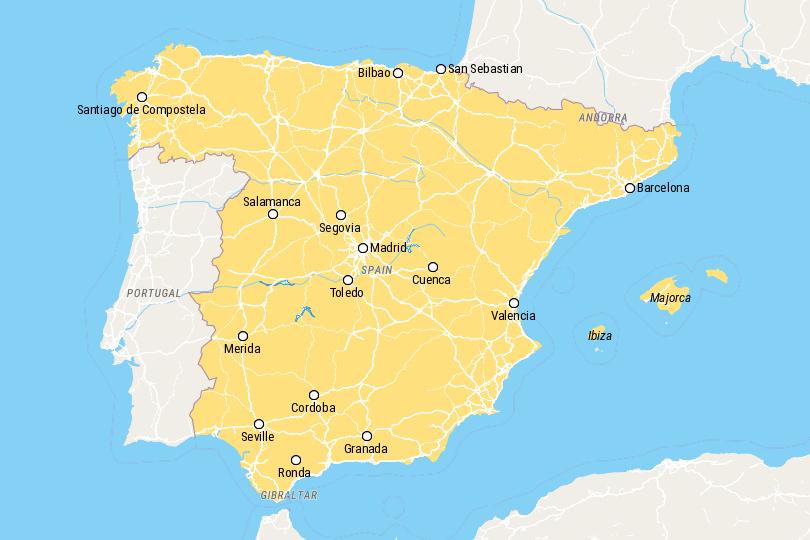
Founded back in 25 AD by the Romans, Merida boasts some of the most impressive, extensive, and well-preserved ruins in the whole of Spain. Now the capital of the autonomous community of Extremadura , the city lies in the western-central part of the Iberian Peninsula, with the Guadiana and Albarregas rivers running through it.
As it boasts almost two thousand years of history, ancient historical sights and archaeological ruins are found wherever you go. Of these, the magnificent old Roman Theatre is a must visit; it still holds flamenco shows and theater performances to this day.
Besides this, there are the wonderful remains of a Moorish fortress, as well as a remarkably well-preserved bridge, aqueduct, and hippodrome – all of which were built by the Romans. In addition, there are some lovely Baroque and Gothic churches scattered around town, as well as interesting and informative museums showcasing the city’s rich history.
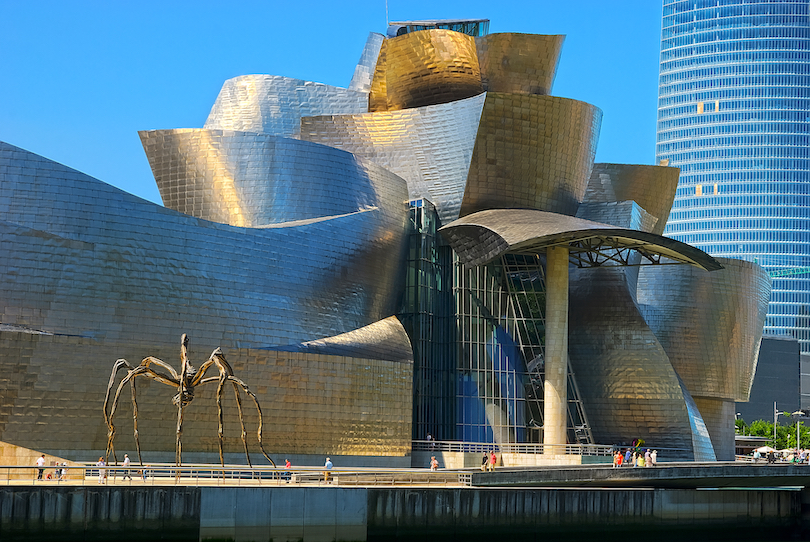
The largest city in Spain’s Basque Country, Bilbao lies on an estuary just 16 kilometers south of the Bay of Biscay . As its climate is milder and wetter than much of the rest of the country, the city’s parks and riverbanks are fertile and green, as are the rolling hills surrounding it.
Bilbao was best known as an important seaport and industrial city in northern Spain until the construction of an architectural marvel in the 1990s known as the Guggenheim Museum . Since then, this capital city of Vizcaya has experienced a boom in tourism, promoting economic growth and revitalization of its many hidden gems , making it a popular destination.
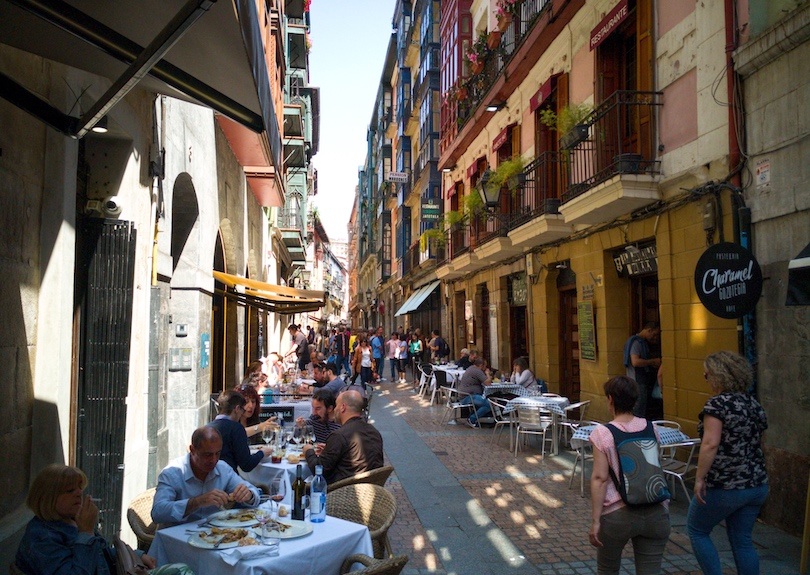
Celebrated as one of the most important architectural works of its time, the Guggenheim Museum now shines as Bilbao’s city symbol. Devoted to modern and contemporary art, this giant complex of interconnecting buildings presents a massive work of abstract sculpture that suggests a maritime theme with its simulation of ship outlines and shimmering fish scales.
Other places to go in Bilbao include the 14th century Gothic Cathedral of Santiago and the Basilica de Begoña. Built in 1909 and recently refurbished, the Alhondiga is a multipurpose complex housing a library, restaurants and a rooftop swimming pool with a glass floor.
15. Salamanca
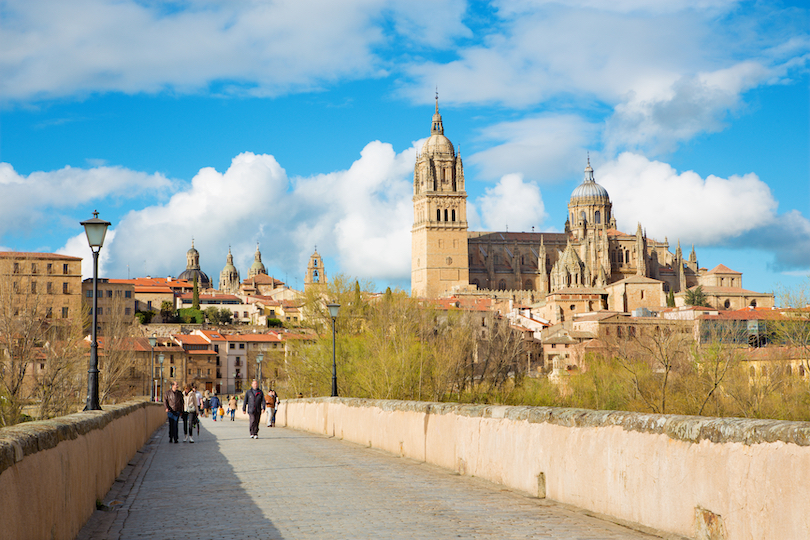
The capital and largest city of the province of the same name, Salamanca lies on the banks of the Tormes River on Spain’s Northern Plateau. Widely considered to be one of the most beautiful Renaissance cities in the whole of Europe, its historic center is full of architectural treasures and incredible monuments that date back centuries.
Life in the city revolves around the busy and bustling Plaza Mayor , which is lined by cafes, bars and restaurants. The expansive and elegant square looks particularly magical at night when its majestic buildings are lit up.
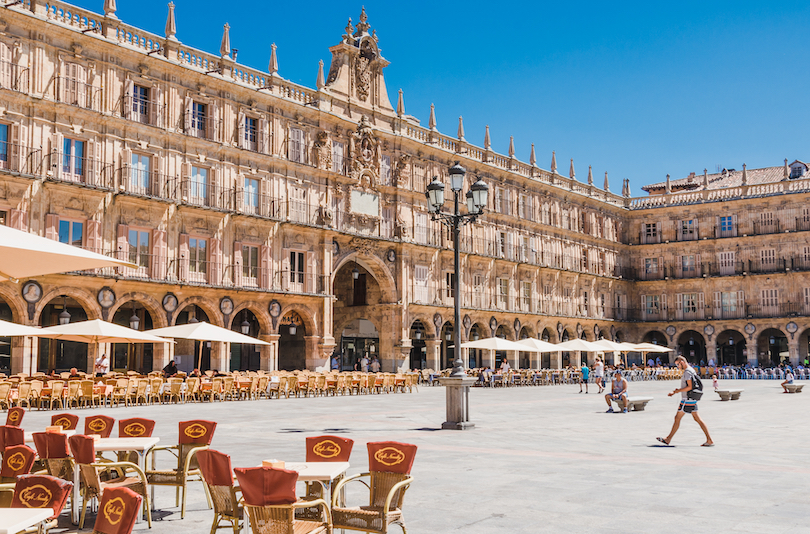
Nearby, you can find other stunning places to see such as the New and Old Cathedrals, both of which exhibit exquisite architecture. Like the rest of the city, they are built out of sandstone. It is these warm hues that lend Salamanca its nickname – La Dorada , or ‘Golden City’.
While history is all around, Salamanca has a vivacious and youthful feel thanks to its large student population. Remarkably, the University of Salamanca was founded in 1218 and is one of the oldest higher education institutions in Europe.
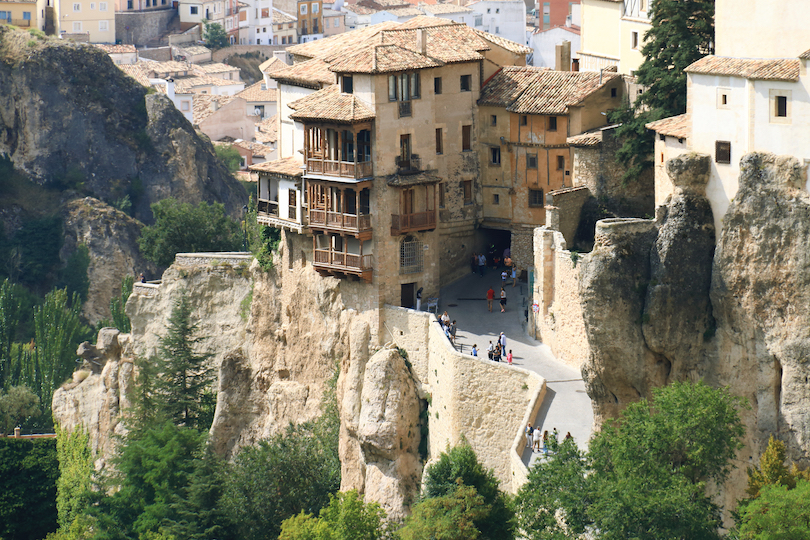
One of the most popular cities to visit in the Castilla La Mancha region of Spain, Cuenca is located in a precarious position at the point where two deep river gorges meet. Its strategic setting saw it fought over, conquered and ruled by both the Muslims and Christians, with Napoleon himself leaving his mark in the early 1800s.
This makes it fascinating to explore; lots of centuries-old churches, a cathedral, and a castle can be found hidden away among the meandering streets of its medieval old town. While its beautiful buildings are painted in warm hues, vivid colors and daring designs coat the walls of its numerous modern art galleries and museums.
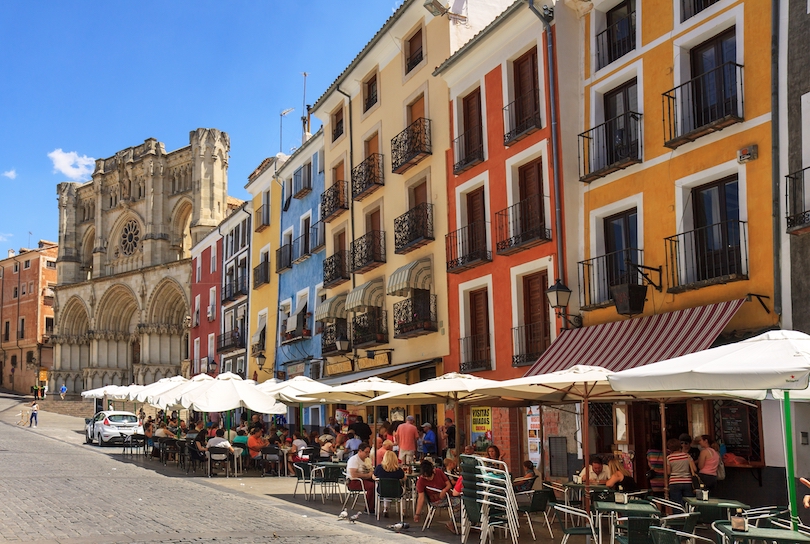
The charming city is particularly noted for its casas colgadas – or hanging houses – which are built over the side of the clifftop upon which Cuenca is perched. Besides being phenomenal feats of engineering, these astounding edifices make for some fantastic photos and are best viewed from the bridge of San Pablo.
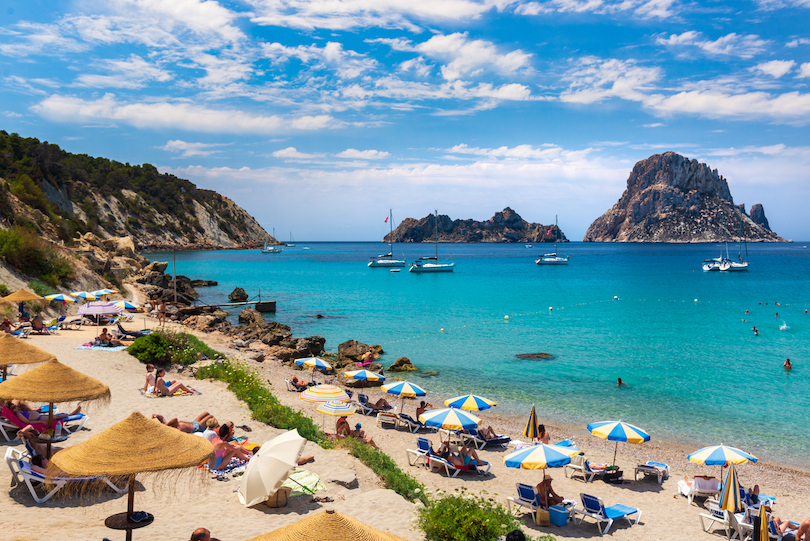
The third largest of the Balearic Islands, Ibiza is located off the east coast of Spain, surrounded by the sparkling waters of the Mediterranean . While it is famous for its pounding nightlife and summer club scene which attract world-renowned DJs to its shores, the island actually has many other different sides.
Quite rocky and rugged, Ibiza is lined by beautiful bays and beaches; this, coupled with its warm, sunny and dry climate, makes it a great beach holiday destination . The largest city on the island, Ibiza Town boasts a majestic walled old town perched atop of a hill overlooking the sea.
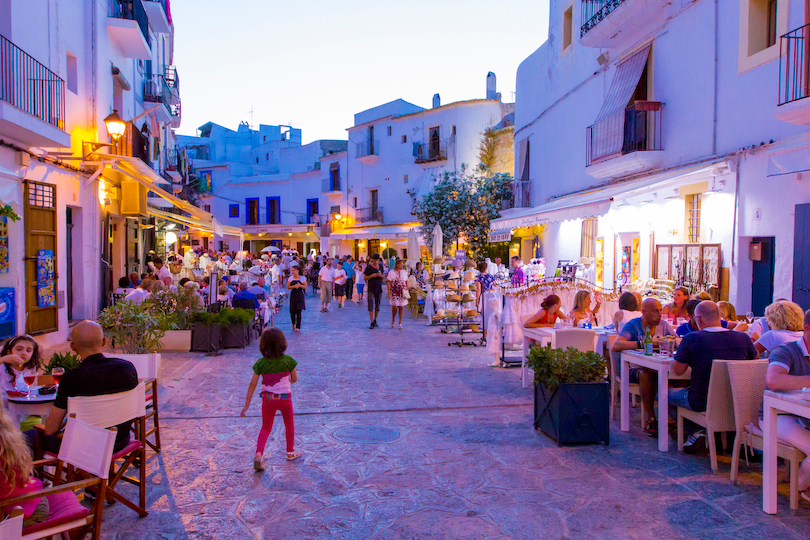
While you can certainly find relaxing rural retreats and sleepy, seaside villages on the island, many people visit Ibiza for its incredible party scene and exhilarating electronic dance sets. In summer, its heaving clubs stay open through the night until dawn, when the sun finally rises over the sea.
12. Segovia
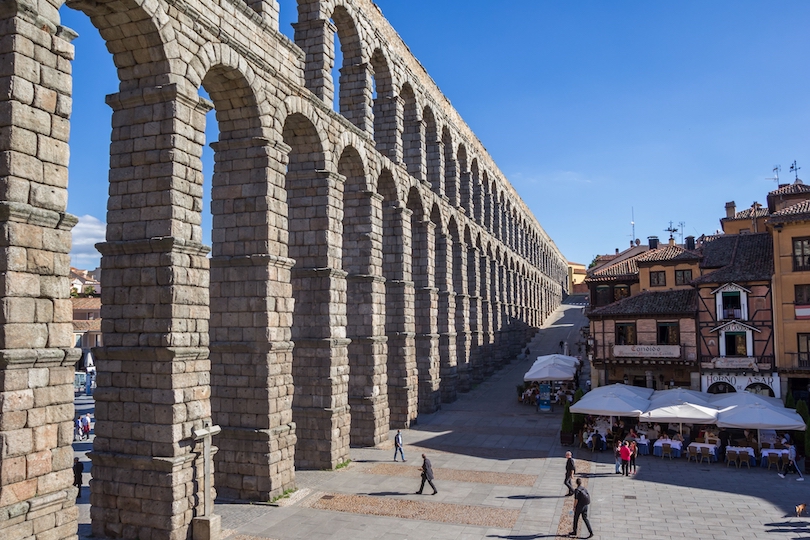
The capital and largest city of the province of the same name, Segovia is set in a scenic spot with the Sierra de Guadarrama mountains rising in the distance. Its sun-kissed streets straddle the Eresma River on Spain’s Inner Plateau with Valladolid and Madrid lying not far away.
Segovia is famed for its historical sights . Within its walled Old Town you can find the Aqueduct of Segovia , which was built around 100 AD by the Romans. While this engineering marvel acts as the city’s symbol, other astonishing sights, such as a grand and gorgeous Gothic cathedral and numerous churches, convents and monasteries, can be found nearby.
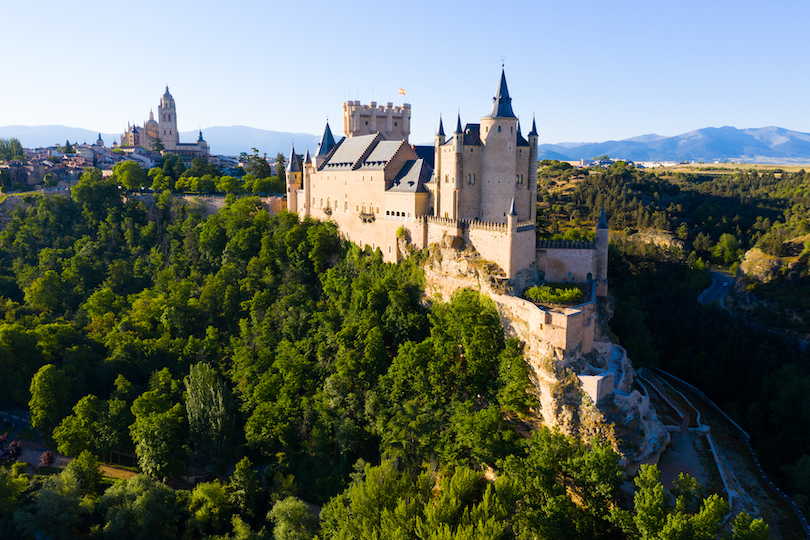
The other main attraction is the elegant Alcazar of Segovia , set atop a rocky outcrop overlooking the city. Said to have inspired Walt Disney’s Sleeping Beauty Castle, the medieval castle and palace features lots of fine architecture and was once one of the favorite royal residences of the Kings of Castille.
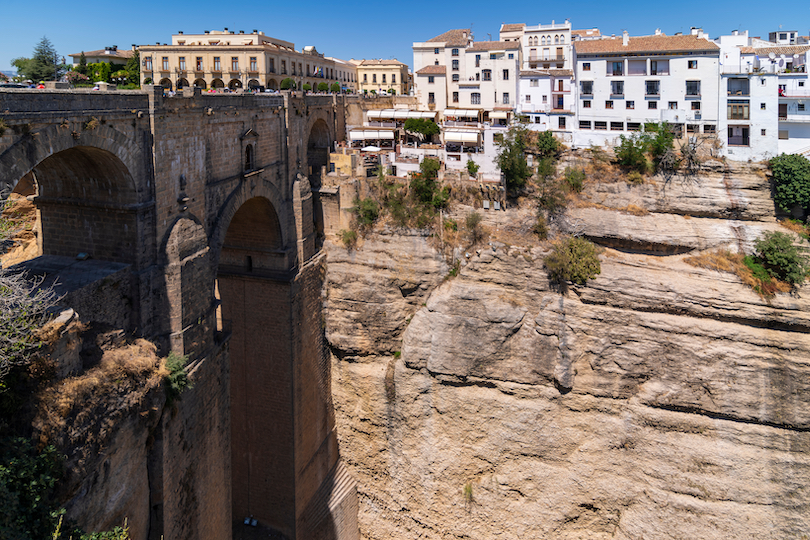
Located in one of the most spectacular settings imaginable, Ronda, in the south of Spain, straddles the steep El Tajo gorge , overlooking the valleys and hills that lie before it.
Spanning the breadth of the gorge is Puente Nuevo, the city’s main landmark built in 1793. The impressive bridge connects the more modern El Mercadillo part of town with El Ciudad , the old Moorish quarter, which is home to marvelous churches, elegant palaces and pretty gardens. The town is considered to be the cradle of modern Spanish bullfighting; its neoclassical ring is the oldest such building in the country.
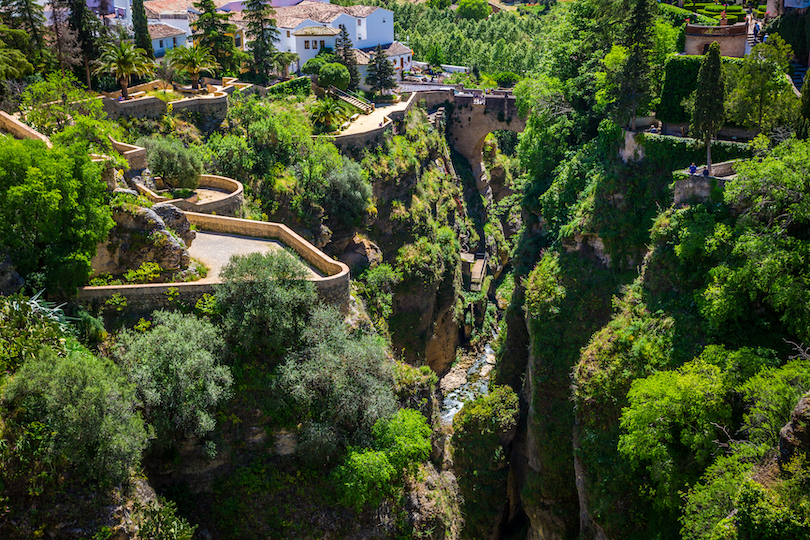
Due to its rich cultural heritage and history as well as its dramatic clifftop setting, Ronda has long drawn writers and poets alike to its ancient streets.
While Ernest Hemingway, James Joyce and Rainer Maria Rilke all visited at one time or another, Ronda now attracts lots of tourists and is one of the most popular and picturesque towns to visit in Andalusia .
10. Santiago de Compostela
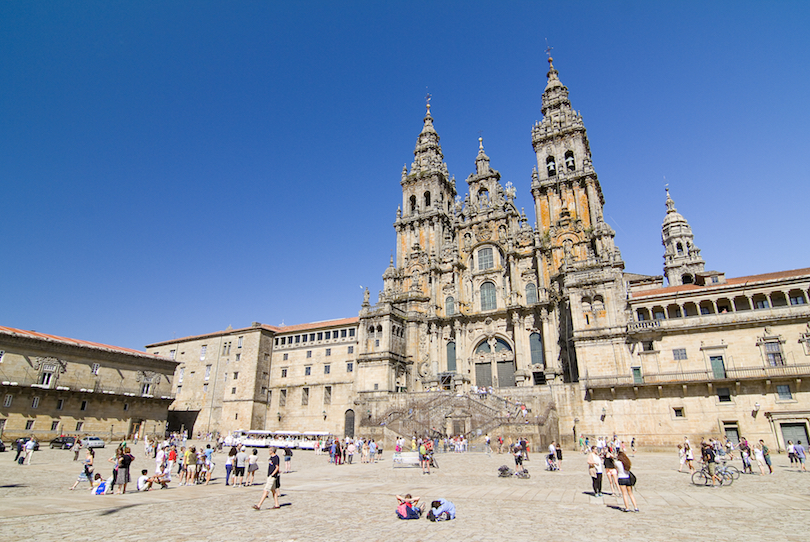
The capital city of the Galicia region in northwestern Spain, Santiago de Compostela is famous as the final destination of the traditional pilgrimage known as Camino de Santiago. Also called the Way of St. James, this pilgrimage dates back to Medieval times and is important to many because it is believed that Santiago de Compostela is where St. James , an Apostle of Jesus Christ, is buried. Today, the city attracts thousands of visitors every year for both its religious tradition and history.
The arriving point for most pilgrims is the main square, Praza do Obradoiro . Situated in the heart of the city, this bustling plaza is the scene of many important landmarks , particularly the Santiago Cathedral where the tomb of St. James is located. Other historic buildings here are GelmÌrez Palace, Rajoy Palace, Catholic Kings Hostal and San Jeronimo College.
The Pilgrimage Museum is a good place to learn all about the history and significance of the Camino de Santiago pilgrimage while the Museum of the Galician People showcases the culture and history of the region.
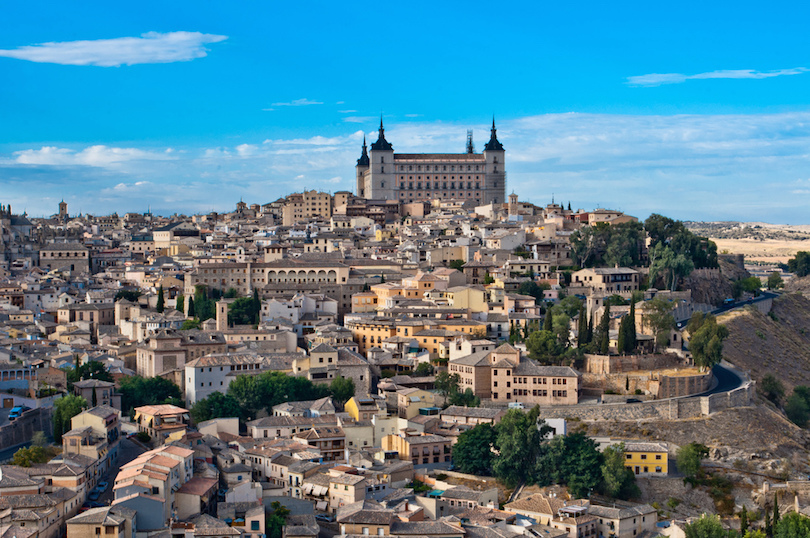
Perched on a mountaintop in central Spain, Toledo served as the Spanish capital until the 16th century. Because it was inhabited by Jews, Christians and Muslims for many centuries, the city is sometimes called the “City of Three Cultures.” Today, Toledo is a popular destination for its wealth of historic art and architecture that dates back to the Roman Empire .
The best thing to do in Toledo is to get lost amid the medieval streets and admire the old architecture that includes stunning churches, synagogues and mosques as well as a remarkable old Roman fortress.
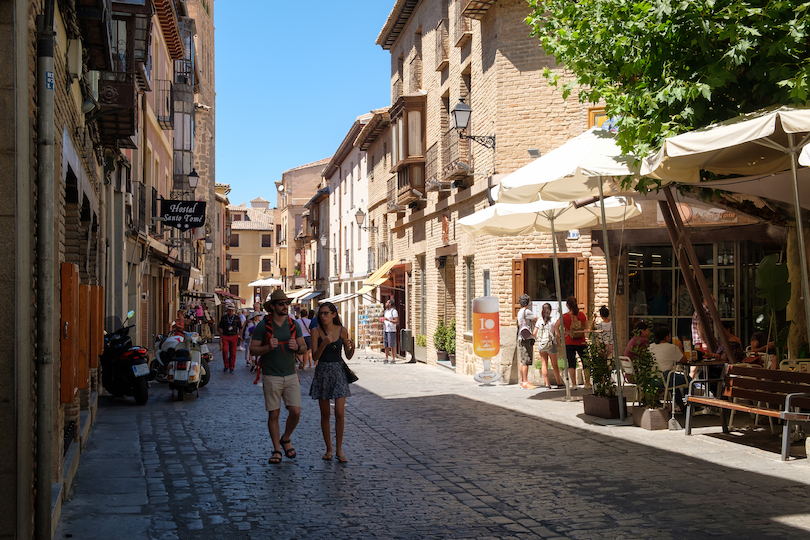
The site of many historic events, the Zordocover plaza is well worth a visit as well as the many nearby shops. Charming cafes offer a break to relax, people-watch and sample local specialties like Mazapan , a sweet treat made with almonds and pine nuts. In the evenings, local bars offer pre-dinner drinks and tapas.
Once the home of Spain’s great painter, El Greco , Toledo features a vibrant arts scene. The city is teeming in museums and art galleries while the Cathedral of Toledo has an impressive art collection of works by masters like Goya, Ralphael and Titian. A great number of El Greco’s pieces can be seen throughout many of the city’s churches and landmarks.

Cordoba is the capital of the province of the same name in the Andalusian region of southern Spain. While Cordoba is characterized by its small town charm, this mid-size city offers all the historic and cultural attractions of a bustling metropolis.
One of the oldest towns in Europe, the historic quarter of Cordoba is a maze of tiny medieval streets, plazas and whitewashed courtyards all situated around the star attraction, the Mezquita . Initially built as a mosque, the Mezquita is now a glorious cathedral retaining most of its original architecture. Its forest of columns topped with Islamic-style red and white striped arches serves as a reminder of the glory and importance Córdoba held in medieval times. Outside the Mezquita is a beautiful orange grove perfect for relaxing.
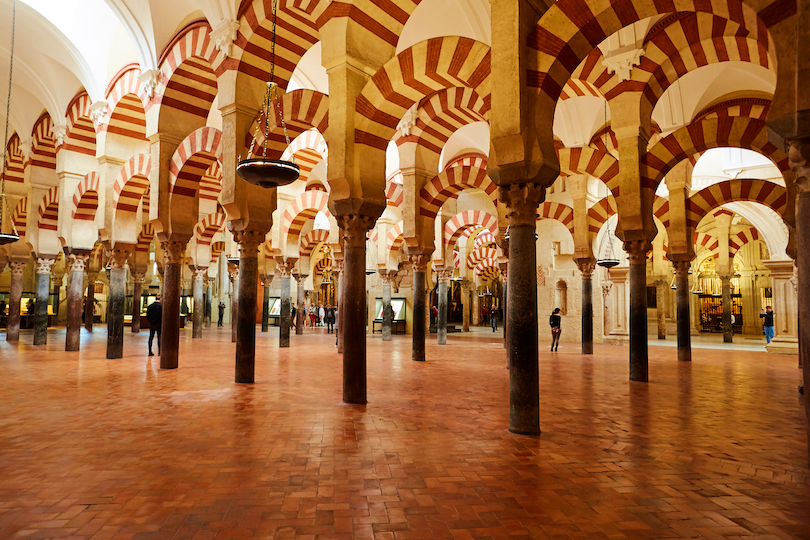
Other places of interest include the Fortress of the Christian Monarchs, the Street of Flowers, and the Old Jewish Quarter with its charming patios and souvenir shops. Once a Roman city, Cordoba also features many Roman structures including its old walls, gates, bridge, an amphitheater and mausoleum.
Throughout the city are various plazas offering a range of museums, theaters, restaurants, hotels and bars. Plaza de las Tendillas is the main square with a vibrant shopping scene while the Plaza del Port is associated with Cervantes’s Don Quixote.
Cordoba is buzzing in the month of May with three lively festivals that include the May Crosses Festival, the Patios Festival and the Codoba Fair. During these events, the city’s plazas and courtyards are all decorated while various contests, flamenco dancing, traditional food and drink all fill the streets.
7. San Sebastian
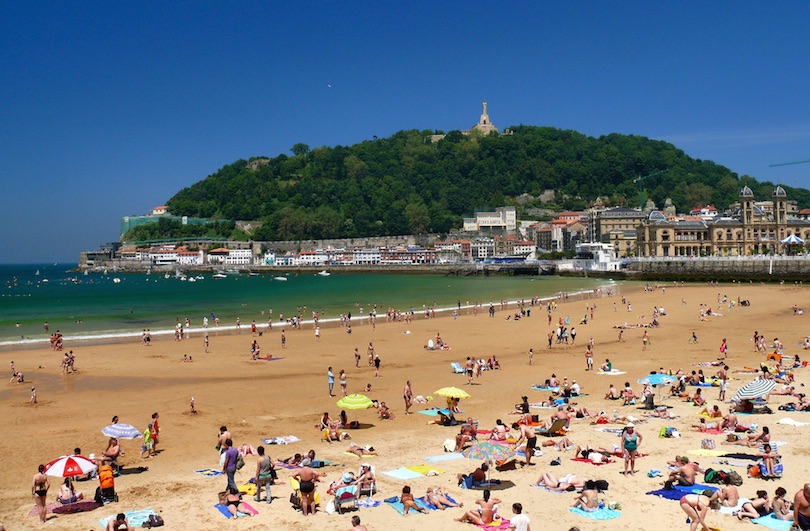
San Sebastian is the capital of the Gipuzko province, located in the Basque country of North Spain off the coast of the Bay of Biscay. This beautiful seaside city is well-loved for its excellent beaches and outstanding culinary tradition.
Although it is divided into several districts, San Sebastian is a small, cozy city crammed with restaurants, pintxo bars, designer shops and an enclosed mall. The Old Town features many historic buildings reconstructed in the 19th century after the city was nearly destroyed during the Napoleonic Wars.
San Sebastian boasts some of the best beaches in Europe with the most popular of these being Playa de la Concha , which offers sunbathing and water activities like swimming, kayaking and water skiing. Playa de la Zurriola attracts many surfers and provides surf board and body board rentals.
Overlooking the city are two lofty hills, Monte Urgell and Mount Igueldo, which offer hiking, funicular rides, amusement parks, remarkable statues and fantastic views.
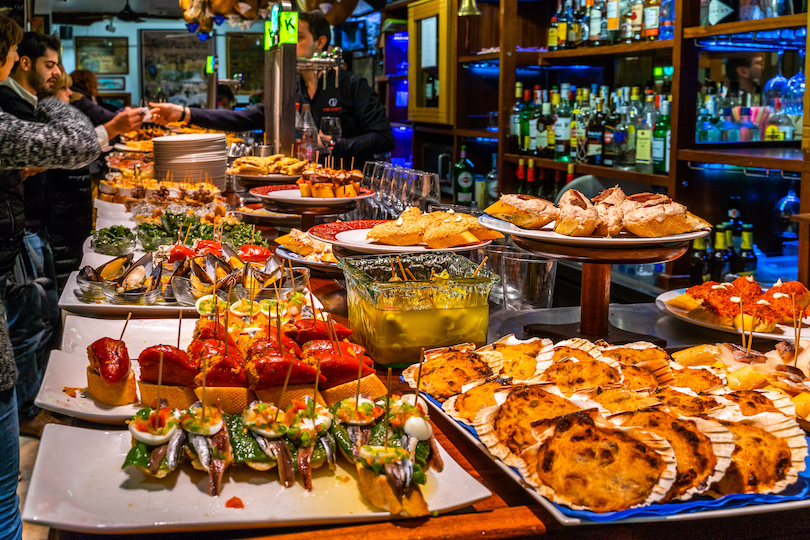
San Sebastian is widely appreciated in Spain for its pintxos . Pintxos are appetizers, which are prepared in a wide variety of fresh vegetables, meats and seafood. Many of the bars in the city feature buffets displaying a range of these pintxos. The local tradition is to go from one bar to the next, sampling one or two pintxos with a drink of wine or beer.
A number of festivals and events take place in the city throughout the year. Drawing the most crowds are the San Sebastian Film Festival and the Jazz Festival.
6. Valencia

One of the largest and most important cities in Spain , Valencia is located in the eastern part of the country in the region of Valencia. After several years of major construction and renovation, Valencia today is famous for its Fallas Festival and the City of Arts and Sciences architectural masterpiece.
Valencia is stuffed with restored historic buildings that include stunning churches, old monasteries such as San Miguel de los Reyes and the site of an ancient silk trade center known today as the Silk Exchange Market.
See also: Where to Stay in Valencia
After redirecting the Turia River, the city constructed its most impressive attraction , a massive cultural and entertainment complex known as the City of Arts and Science. Contained within this complex are several buildings such as a science museum, planetarium, aquarium, arts museum and an IMAX theater that are each artistic marvels in and of themselves. Also included in the old Turia riverbed are beautiful gardens, athletic parks and artificial lakes.
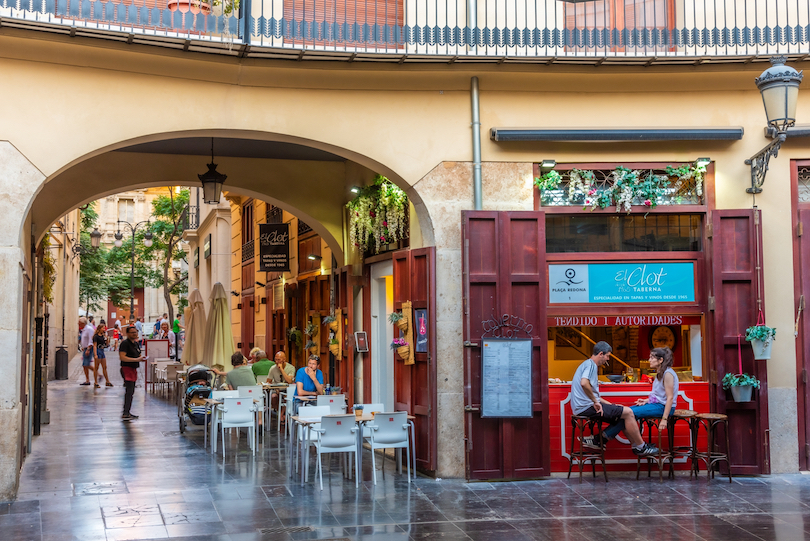
One of Valencia’s most popular neighborhoods is the Barri del Carme with its colorful mix of architecture, diverse ethnic groups, trendy shops and outdoor cafes.
Every March, Valencia hosts the Fallas Festival where each neighborhood displays papier-mâché figures of all sizes and colors for a whole week. At the end of the week, the “fallas” are ceremoniously burned, and the communities party into the night. However, March isn’t the only time to party in Valencia. Every night, the city vibrates with lively bars and nightclubs in every neighborhood.
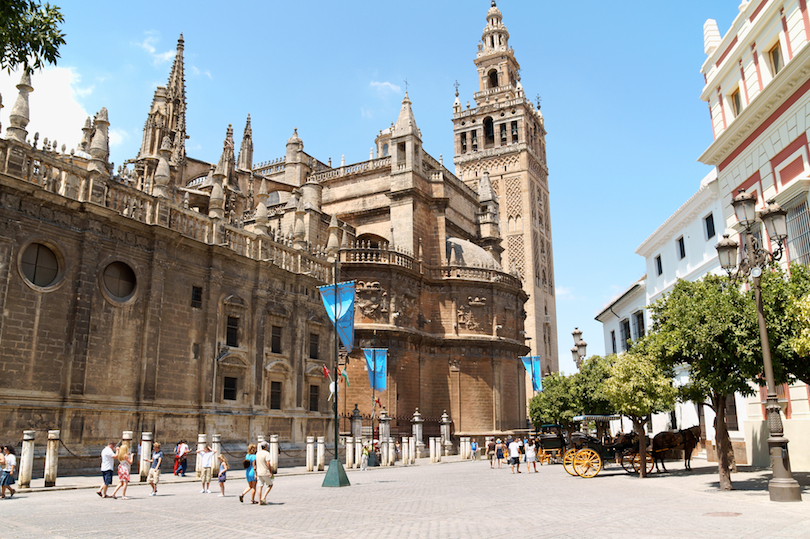
Exceptional tourist attractions , lively festivals and buzzing nightlife all make Seville the top destination in Southern Spain. As the capital city of Andalusia, Seville is also the region’s financial and cultural capital.
Seville is home to many beautiful and important historic landmarks, chief of which is the grand Cathedral of Seville , where it is believed that Christopher Columbus is buried. Other significant buildings include the Real Alcazar , an extravagant Moorish palace with luxurious gardens and a room where Christopher Columbus’s voyage to the New World was planned.
See also: Where to Stay in Seville
The city is also home to the largest wooden structure in the world, the Metropol Parasol, a giant umbrella-shaped structure housing the main market.
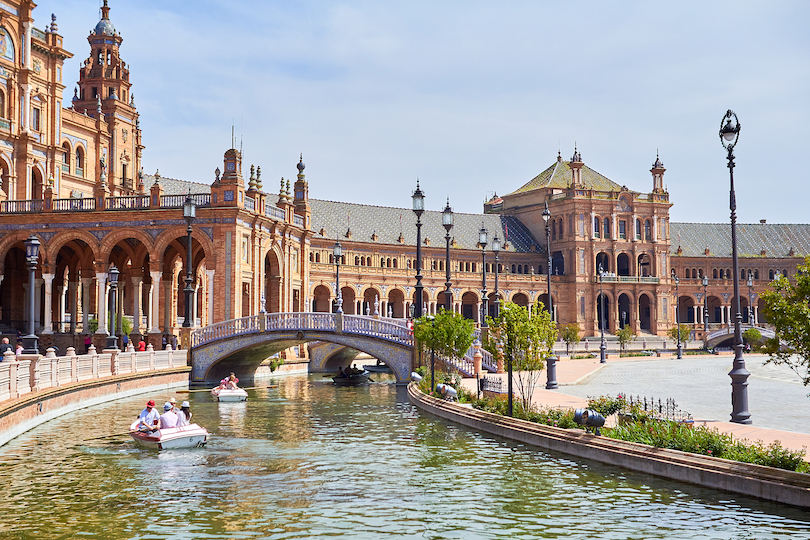
As the region’s cultural capital, Seville offers numerous museums, art galleries and entertainment venues. When the sun goes down, the nightlife scene lights up in Seville’s neighborhoods with their bars, nightclubs and flamenco dance halls.
Every year, Seville hosts its April Fair, one of Spain’s most celebrated events, where the city’s streets turn into one giant party involving centuries-old customs, traditional costumes, flamenco dancing, bullfights and plenty of local food and drink.
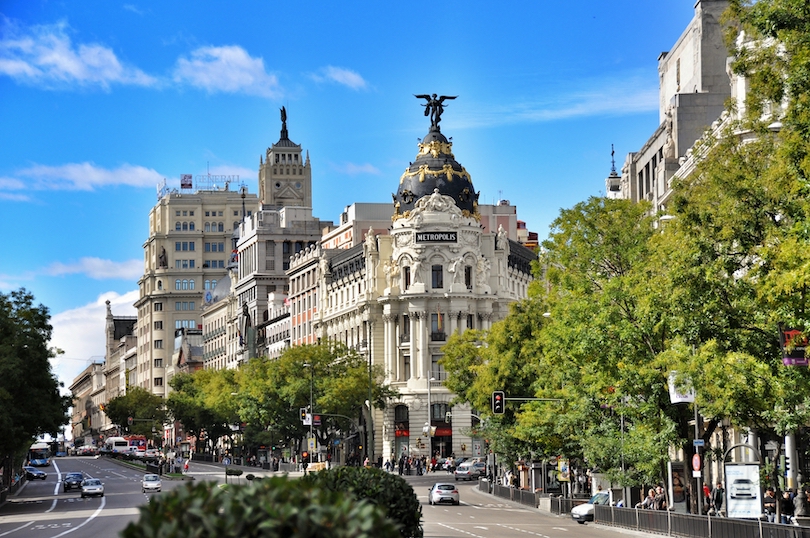
Spain’s capital and largest city, Madrid, is widely known for its sizzling nightlife scene. Home to a number of universities, the city constitutes a diversity of ethnic groups, making it one of Europe’s most colorful cosmopolitan cities.
Madrid is a beautiful city mixed with old and new architecture. The capital is comprised of several neighborhoods offering their own unique character and attractions ranging from historic quarters to older crowd communities, university areas, multicultural districts and party scenes.
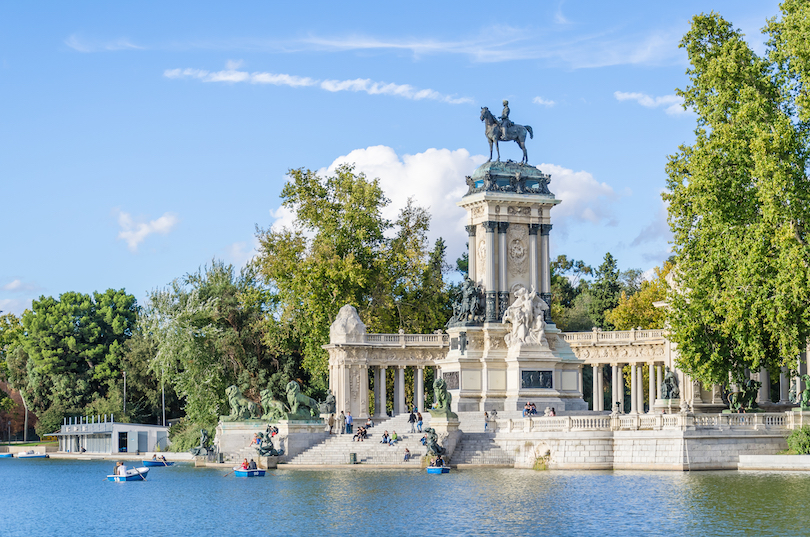
The heart of the city is Puerta del Sol , a large plaza serving as the scene of festivals, important gatherings and street performers as well as a hub for the public transportation network. Another important square is Plaza Mayor , known for its many souvenir shops, cafes and the lively San Miguel Market.
Located within the city center are most of Madrid’s most popular tourist attractions such as the Royal Palace , the residence of Spain’s monarch, and a plethora of glorious churches and historic landmarks. Madrid offers many things to see and do from beautiful parks and zoos to football matches, museums, art galleries and concerts.
3. Mallorca
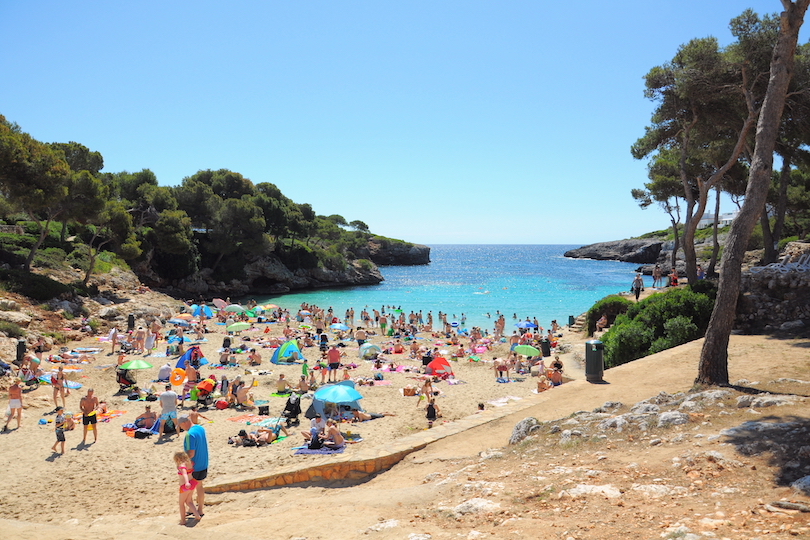
The largest of Spain’s Balearic Islands, Mallorca is surrounded by the sparkling waters of the Mediterranean, with jagged cliffs, secluded coves, and beautiful beaches lining its shores. Long a popular tourist destination , the island is blessed with a warm and welcoming climate and plenty of incredible scenery.
While its mountainous interior is home to ancient hilltop monasteries and sleepy villages, Mallorca ‘s spectacular coastline is dotted with seaside towns and resorts. Sunbathing, swimming and watersports are all popular pastimes, with delicious local cuisine and seafood on offer wherever you go.
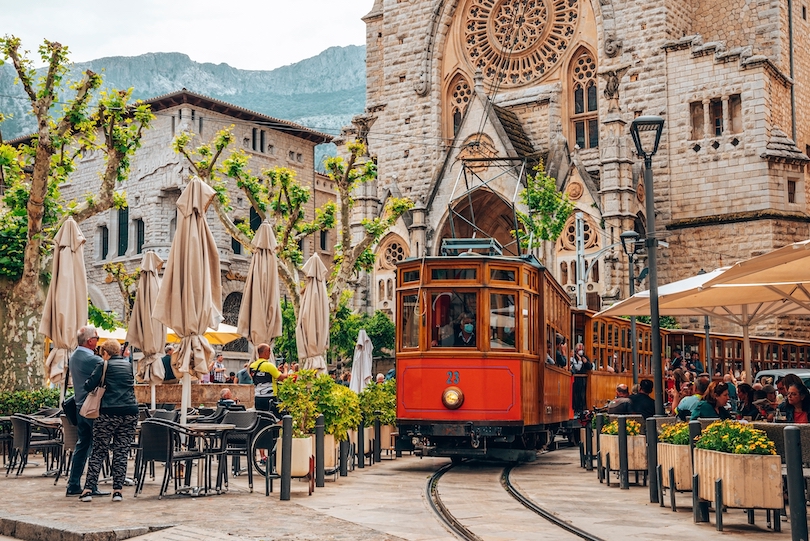
The island’s main city and capital is Palma de Mallorca . There is a beautiful old town for visitors to explore, with winding narrow streets and centuries-old buildings beneath its exquisite Gothic cathedral. The pretty town of Soller is also worth visiting for its scenic, secluded setting, as is the charming mountain village of Valldemossa.
2. Barcelona
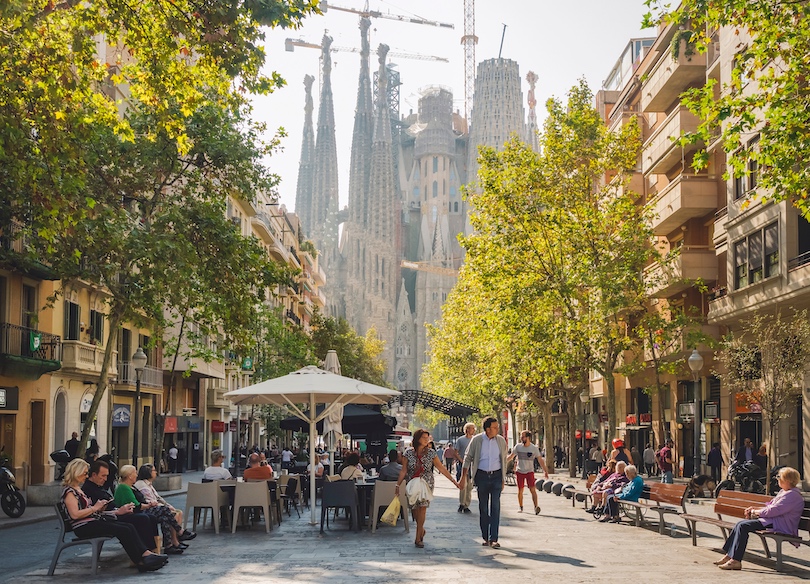
Located in northeastern Spain, Barcelona is one of the country’s top travel destinations because it offers everything tourists look for in a European city from historic architecture to lively shopping, vibrant culture and buzzing nightlife.
Ciutat Vella, the Old City, is Barcelona’s main attraction . Here, tourists will find the Gothic Quarter with its beautiful, old churches, Roman ruins and cobblestone streets lined with outdoor cafes and restaurants.
Surrounded by statues and fountains, La Placa Catalunya is a popular gathering spot and hub for local transportation services. Popular activities in Barcelona include strolling along La Rambla , a tree-lined pedestrian avenue, and sunbath on Barceloneta, one of the city’s most popular beaches.
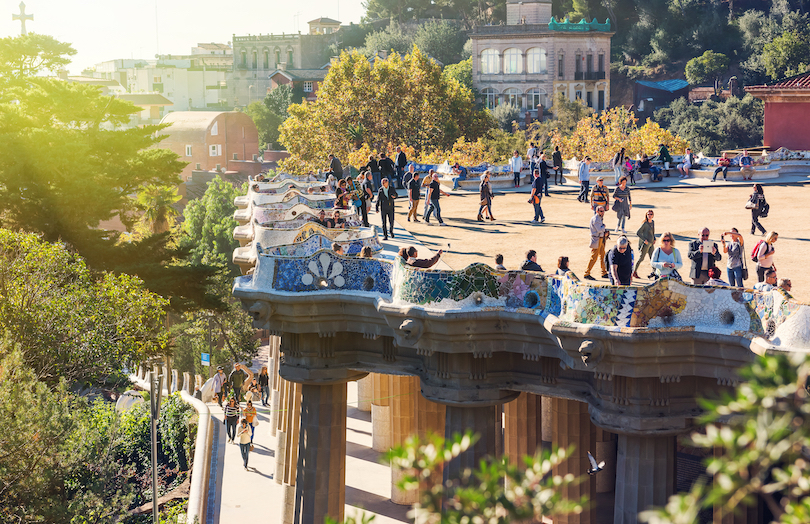
Unique to Barcelona are the architectural marvels of Spain’s famous architect, Antoni Gaudi, which include the Sagrada Familia and the Casa Batllo . Both of these extraordinary structures feature combinations of fascinating designs, shapes and colors.
As a major cultural center, Barcelona boasts a variety of museums , art galleries, theaters and flamenco shows. The city also hosts a number of festivals including the Monegros Desert Festival, one of Spain’s largest electronic music events. With its long love affair with sports, Barcelona is home to the largest football stadium in the world, Nou Camp.
Just outside of the city is one of Barcelona’s most visited sites , Montserrat. Accessed by hiking, train or cable car, Montserrat is the site of secret caves, an underground lake and the Black Madonna.
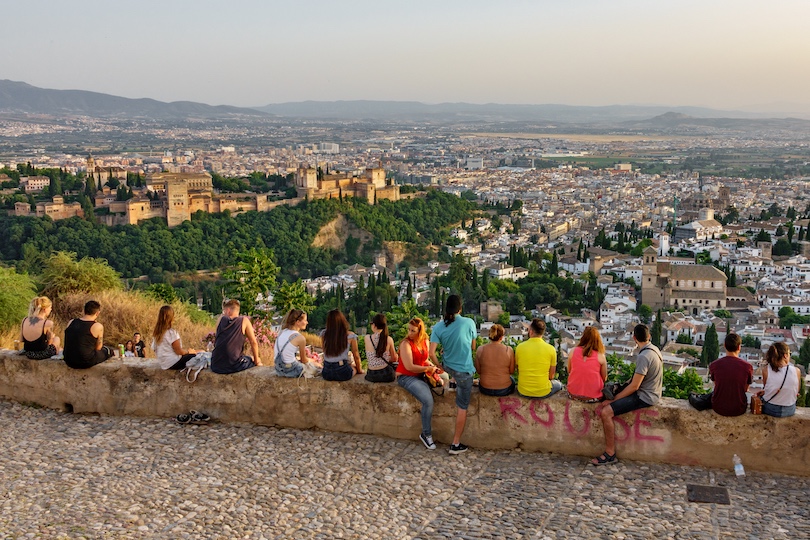
Located at the base of the Sierra Nevada mountains of southern Spain, Granada is the capital of the Granada province. A mid-sized city, Granada offers a perfect blend of spectacular attractions , traditional cultures and an animated nightlife. But most of all it is the home of the Alhambra , a pinnacle of Moorish art that encapsulates Andalusian history and is one of the great architectural sights of Europe.
Attesting to the city’s eventful history are its most notable landmarks, the 16th century Granada Cathedral with its magnificent domed ceiling, and the famous Alhambra, a grand Moorish palace with luxurious gardens and Arab baths.
Granada’s juxtaposing neighborhoods, Sacromonte and Albaicin , are the essence of the city’s culture. Noted for its Christian abbey, Sacromonte is where tourists come to see how gypsies have traditionally lived in various cave dwellings and to watch live dances of flamenco and zambra.
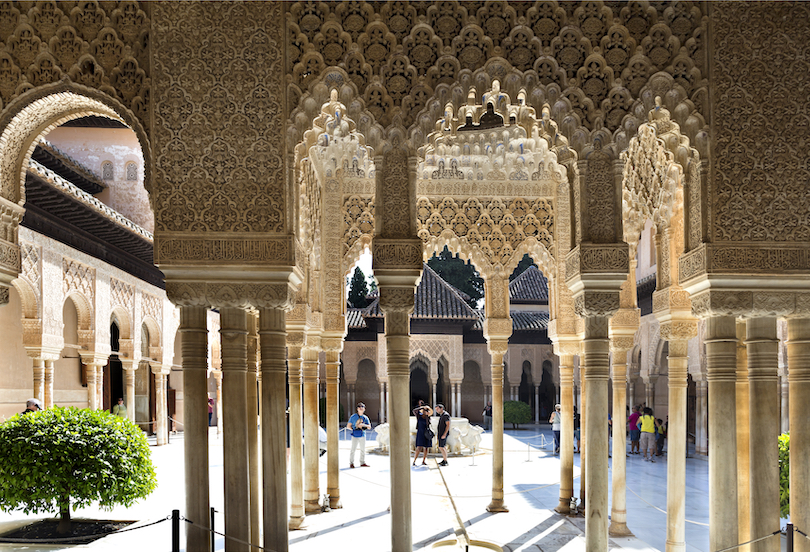
Albaicin, the Arabic Quarter, is the site of a hundred year-old Spice Market. Here among a setting of Moorish architecture, cobblestone streets and vivid bougainvillea, a medley of vendors sell colorful tapestries, wall hangings and exotic teas and spices.
Just outside the city, the Nevada Ski station offers a wide range of activities for all seasons from snow skiing and sledding to mountain climbing, horse riding and cable car rides.
In the evenings, locals roam from one bar to the next, sampling tapas and drinks before immersing themselves in the city’s entertainment choices.
Spain Travel Video
Share this post:.
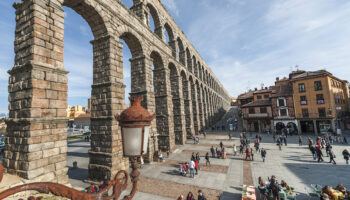
33 Top Attractions & Things to do in Spain
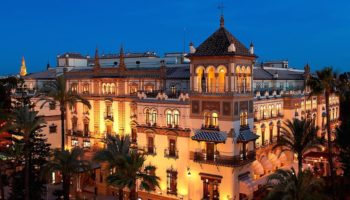
11 Most Amazing Hotels in Spain
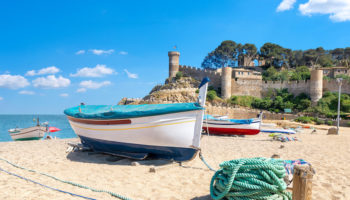
12 Best Beach Holiday Destinations in Spain
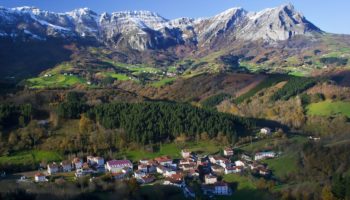
17 Most Beautiful Regions of Spain
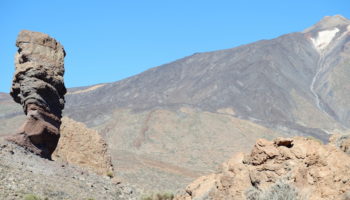
12 Most Beautiful National Parks in Spain
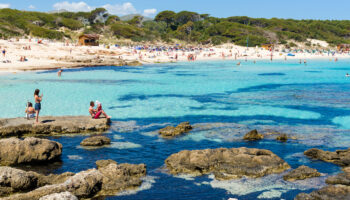
11 Best Spanish Islands You Should Visit
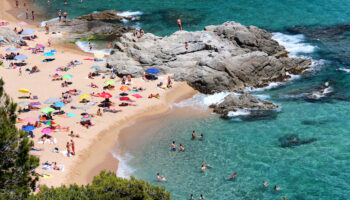
20 Best Beaches in Spain to Visit This Summer
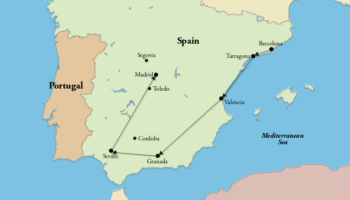
How To Spend 2 Weeks in Spain: DIY Itinerary
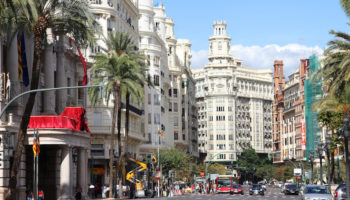
17 Best Cities to Visit in Spain
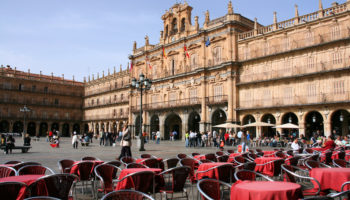
10 Most Underrated Destinations in Spain
Reader interactions.
November 25, 2018 at 10:48 am
Spain is a really a nice country …. The Madrid zoo was fabulous.. The La Rambla in Barcelona was a fun street with lots of shopping places and small restaurants…but the best city in Spain is undoubtedly Seville! Seville is a really beautiful city with big fountains, beautiful churches, nice hotels, little restaurants, small and pleasant streets and beautiful flamenco dancers! I really enjoyed travelling in the tram there…. Most beautiful city I have ever visited!
November 15, 2018 at 1:09 am
I was robbed In Granada. The police were very cooperative. Spain is stunning, in general, the people are so lovely. Now at a villa on the Mediterranean Sea, it is winter .for me it is the sky, surf, sun and sand.
November 13, 2017 at 7:04 pm
Hello, I’m an American. Single woman who will travel alone. I have always loved Spain! I won’t be partying or anything like that, rather I want to see the beautiful cathedrals and historical landmarks. Is it safe to travel by myself taking certain precautions. San Sebastian is definitely on my list and I would love to see some of the smaller cities talked about here on this site.
September 19, 2017 at 7:07 am
I love Spain: specially Madrid, Toledo, Granada, Avila and Seville!
June 25, 2017 at 9:30 am
We just got back from Malaga, Spain….visited the city of Ronda while there…Malaga was beautiful but I found the shopping, and the food/drink was expensive. The City of Ronda was beyond beautiful and enjoyed it immensely. I can’t wait to go back, not sure where I will go next, but it will not be a bustling city…I’m sure Spain has some beautiful small towns that did not make the list that would be lovely to visit.
September 14, 2016 at 3:29 am
I was in Costa Daurada this summer near to Barcelona and it was really gorgeous location. Perfect for families ! We were staying in Salou and enjoy the cultural activities but also many sports activities for my childs, really nice place for holidays
September 10, 2016 at 3:20 am
Hi thanks for the advice. I’m on my way to Malaga soon and would like to tour Spain using the rail service. Any advice on how to get the best deals?
June 14, 2016 at 1:23 am
I loved Spain as a whole in general.If I had to pick the best then order would be Toledo , Seville, Granada, Barcelona,Cordoba,Madrid, Segovia.Loved Toledo n Seville the most.Only visited these places.San Sebastion ,Valencia ,Ibiza ,seville ,mallorca etc.etc. still on the list for next visit.
January 10, 2016 at 2:28 pm
I live in Madrid and I wouldn’t really recommend it for tourists, it’s a nice city and all but I prefer Barcelona with the beach and beautiful buildings and everything, or seville / valencia if you are interested in a city semester.
December 28, 2015 at 5:13 am
I’ve been there last summer, I would also add the city of Ronda to this list, amazing small town with a fantastic scenery.
October 31, 2015 at 5:53 pm
I’ve seen the temperature from Seville you’ve got, and I can completely assure that these are completely fake!! I don’t understand the fahrenheit measures, but we usually have 50-52 degrees in July and august. Or more. So, think about coming Seville in these months. Seville is more beautiful on April or November.

November 2, 2015 at 1:11 am
@Maria, I’ve been to Seville in August, and yes it was extremely warm! However I don’t think it ever gets warmer than 45. Good point though about avoiding Seville in the summer if you prefer milder weather.
August 1, 2015 at 2:05 pm
if I’m to make my own list,Mallorca, Sevilla and Madrid would make the top 3…..about the robbery,that can almost happen every where. Sorry about that and be more watchful next time.
March 4, 2015 at 11:46 am
Nice list. Only seen half of them. I guess it’s top 10 big cities because there are so many smaller cities that are really beautiful, historical and unique. Examples from the South: Cadiz, Ronda, Antequera. I’m not so familiar with all other regions. All parts of the country have their spots. Of the cities om the list personally I enjoy Granada, Sevilla and San Sebastian more than Barcelona but I agree that Barcelona is a must-place to see in so many ways. Also one more vote for Burgos! It’s epic and picturesque and it’s not a small place either, should be on the list. Saludos desde Finlandia!
March 3, 2015 at 8:54 am
Hi, I’m from Spain, I don’t agree with the order of the list. Barcelona is very nice but I don’t think that it’s the best. And my city isn’t in the list, it’s really nice and it’s got a lot of monuments like its cathedral and a great culture. I would like you to add Burgos on the list
June 10, 2014 at 2:01 am
Hi Global Nomads, you are obviously seasoned travelers. I agree, steer clear of places where they rob tourists. I went to Miami once and got robbed…. you can keep the USA, I’m not going back to America after that. Happy traveling .
May 14, 2014 at 8:53 am
I disagree completely with the order of this list. There is NO WAY that Barcelona’s the best place to visit. Galicia, Granada, Sevilla, are much better choices. I agree with Pep. La Alhambra is much more worth seeing than going to Barcelona.
October 1, 2013 at 2:06 pm
Seville and Madrid city center are more beautiful than Barcelona but they don’t spend so much money in hype. The most beautiful building in Spain is “La Alhambra”, Granada. It’s gorgeous. Other nice places: Salamanca, Segovia, Cáceres, Menorca, Altea, and Ronda.
July 28, 2013 at 4:46 pm
Live Spain and ant wait to see at least 4 of the above places, Barcelona was so nice had to go back twice.
June 16, 2013 at 12:57 pm
We tried Alicante, but got robbed in the bus station and did not feel like touring the country any further.
Leave a Reply Cancel reply
Your email address will not be published. Required fields are marked *
This site uses Akismet to reduce spam. Learn how your comment data is processed .

Home » Destinations » Europe » Spain » 5-14 Day Spain Itinerary: A Guide For Planning Your Perfect Spain Trip
5-14 Day Spain Itinerary: A Guide For Planning Your Perfect Spain Trip
Links in this article may earn us a little money if you book/ order stuff. More here .

Plan Your Perfect Spain Itinerary with These Detailed Templates!
Want to explore Spain but confused about the perfect itinerary? You are not alone! It can be a true challenge to determine how many days to spend exploring.
From 5-day Spain itineraries to 7 or 10 days, to 14-day itineraries – there are certainly lots of different routes and options to choose from. The hard part? None of the routes are necessarily bad or wrong since there’s just so much to see and do all around Spain!
Spain is one of the most visited countries in the world. Because of its popularity, Spain knowledge is really flowing around the travel world these days!
It’s no secret that Lisa lived in Spain and took full advantage of her location (and her Spanish language knowledge)! So, she’s experienced quite a few of the places we recommend below for a great stop on your itinerary!
Spain Itinerary Overview
Best Time to Visit: Generally, summer is the hottest and winter is colder and wetter, but regional exceptions apply. March-June and September-end of October are best.
Getting Around: Trains ( RENFE ) and buses ( Alsa ) are reliable. A rental car in Spain is a must-have for smaller towns.
Popular Places to Visit: Barcelona , Madrid , and Valencia for larger cities, and Granada , Seville , and Córdoba are worth a look, too.
Where to Stay: Check for hotels in Spain here and Check for hostels in Spain here .
Table of Contents
Spain Itinerary – 5 Days
If you plan on travelling through Spain for only 5 days, it’d be best to fly into one of the bigger cities as they are usually well connected with other European cities.
Depending on your route, you can either take public transport if the travel times align with your plans or opt for a rental car if you would like more flexibility.
As with the other Spain itineraries in this blog post, our 5-day itineraries are pretty fast-paced. However, since it is pretty much impossible to go top to bottom and actually see parts of the country we decided to write two separate Spain itineraries for 5 days.
One covers the north and northeast of Spain while the other itinerary covers the south of the country . Choose the one that is more suitable for your interest and travel plans and feel free to modify the written itineraries however you see fit!
Spain Itinerary 5 Days – Northern Trip
For this classic 5-day trip across the northern parts of Spain, the total driving time is about 8 hours and covers around 750km .
If you rent a car, given this exact route, there are tolls on most of the highways so keep that in mind that it may be longer if you took non-tolled roads that may be more indirect. A bus would be able to breeze right along these highways, however.
navigate map
Spain Itinerary 5 Days – Northern Trip Overview
Day 1: Barcelona
- Day 2: Half-Day Barcelona/ Zaragoza
- Day 3: Logroño
- Day 4: Donostia-San Sebastián
Day 5: Bilbao
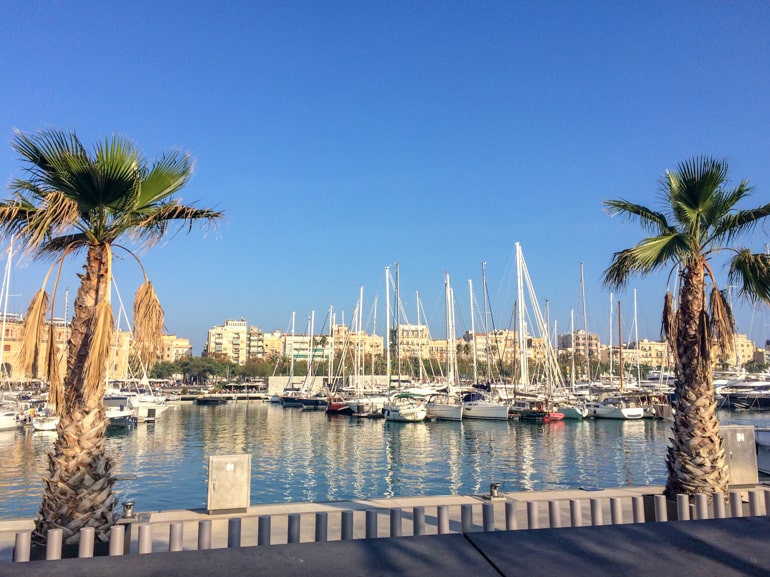
Barcelona is a good city to start a road trip since it is a popular tourist destination and thus has frequent flights to other European or International cities. Barcelona is the capital city of Catalonia which has its own unique culture and language next to Spanish.
Since it is such a popular city, the car rental industry is very well developed and it is easy to pick up a rental car from the airport or in the city.
Find your rental car in Barcelona here .
Alternatively, the bus station in Barcelona is great and easy to reach from the centre. There are numerous connections to Zaragoza which will be the next stop on your 5-day Spain itinerary.
Accommodation in Barcelona : As a super popular tourist destination, there are lots of hotels and apartments available in Barcelona.
Check here for Accommodations in Barcelona .
Specifically, for hotels check out Catalonia Born Hotel with a boutique style and rooftop pool in the city centre and close to the beach.
If you travel by car, Sallés Hotel Pere IV is a lovely and affordable hotel with spa in the heart of the city with a private parking garage onsite .
As for hostels, you can check out Barcelona hostels here. Specifically, we liked Kabul Hostel . This place even made our list of favourite hostels across Europe .
Overall, since Barcelona is so popular we strongly advise you to book in advance – especially during summer – as it can get very expensive otherwise.
Must-see Attractions in Barcelona:
- Sagrada Familia
- Casa Batlló
- The National Catalonian Arts Museum
We’ve written a whole guide on some of the incredible places to visit in Barcelona if you are interested in seeing more!
Day 2: Barcelona/Zaragoza
On the second day of your 5 days in Spain, you’ll spend the morning in Barcelona (you’ll get a cafe con leche y croissant in any cafe/bar for quite cheap if you get off the main tourist roads) and then drive from Barcelona to Zaragoza later in the day.
The drive from Barcelona to Zaragoza will take you approximately 3 hrs 10 min by car (includes a toll road), 3,5 hrs by bus and 1,5 hrs by train . If you end up taking the train, try to book in advance if you can as this will usually end up being cheaper.
Accommodation in Zaragoza: Since Zaragoza is a smaller city, there are fewer accommodations to choose from – but still lots of really great options.
Check here for hotels in Zaragoza .
Specifically, we love the look of Hotel Sauce . This bright and airy hotel is located right in the city centre and offers a homemade buffet breakfast, air conditioning, and private parking onsite for those travelling by car.
If you are looking for a rooftop pool, Hotel Palafox has you covered! Also located right in the heart of the city, the hotel has a cool decor, great city views, tasty breakfast, and also has parking and air conditioning!
There aren’t a ton of hostels but the ones that do exist are well-rated – so you can check here for hostels in Zaragoza .
Must-see Attractions in Zaragoza:
- Basílica del Pilar
- Aljafería Palace
- Cathedral San Salvador
Day 3: Logroño
On your third day, you will drive from Zaragoza to Logroño which is the capital of the autonomous region of La Rioja and known for its delicious wine.
If you get the chance visit one of the wineries and do a wine tasting – please plan ahead if you’re travelling by car since drinking and driving is a big no-no!
The drive will be a lot shorter than the day before. By car, it’ll take you approximately 1 hr 40 min and by bus the journey would be around 2 hrs if you get a direct bus.
Accommodation in Logroño : Similarly to Zaragoza, Logroño is a smaller city with many great accommodations in the heart of the city.
Check here for apartments and hotels in Logroño .
Specifically, Hotel Murrieta is a popular and very affordable option with a good breakfast right in the heart of the city. If you drive a car, Hotel Calle Mayor is a more charming (but still very affordable) hotel with secure underground parking at the hotel.
If you are looking for a hostel in Logroño, there aren’t many but the ones that exist are very good. You can check here for hostels in Logroño .
Must-see Attractions in Logroño :
- Cathedral of Santa María de Redonda
- Church of San Bartolomé
- The Bodegas (Wineries)
Day 4: Donostia-San Sebastián
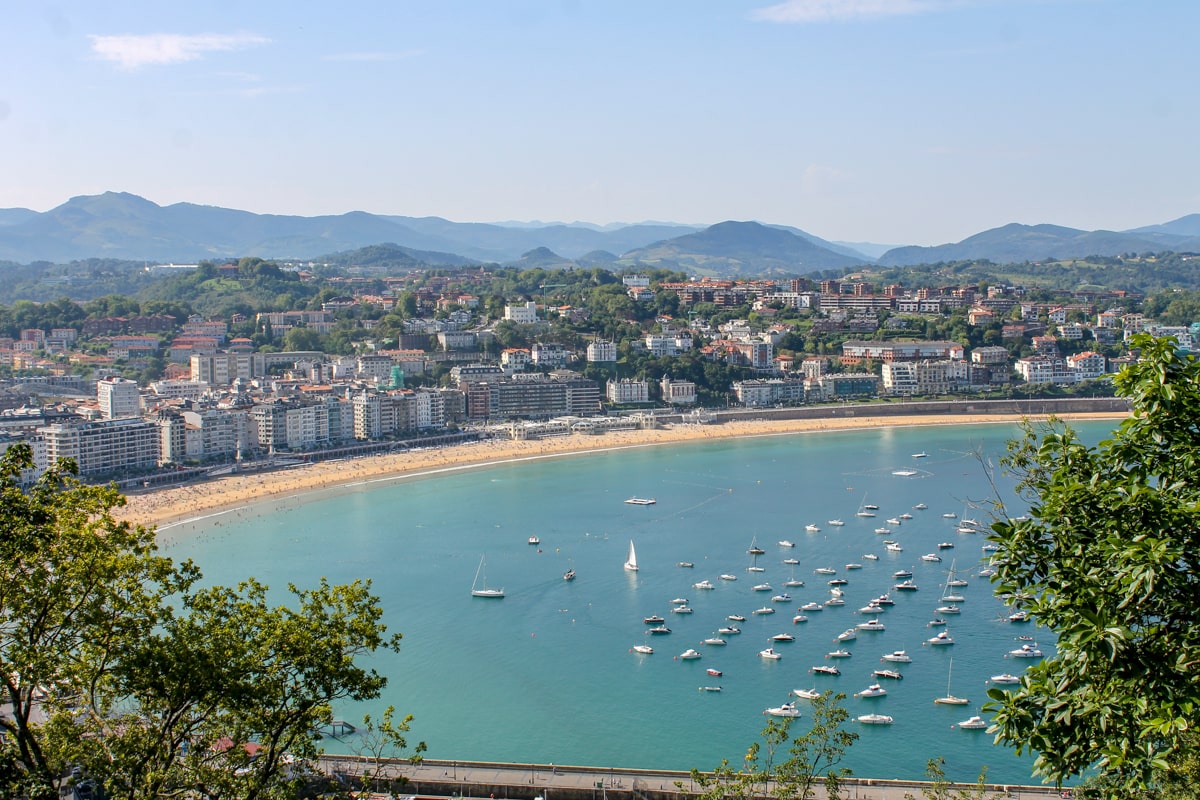
Some would consider San Sebastián one of the most beautiful towns in Spain and Lisa can see why.
When she lived in Bilbao she visited San Sebastián quite a few times and really enjoyed the vibe of the town (and having a beautiful beach so close). Don’t forget to eat some delicious Pintxos since San Sebastián is especially known for them!
The drive from Logroño to San Sebastián takes around 2 hrs by car, and between 2 and 5 hrs by public transport .
Since you are travelling between two smaller cities the connections are not that great and we would recommend planning ahead to compensate for this.
Accommodation in San Sebastián : San Sebastián is one of the most expensive towns in Spain and very popular among luxury travellers.
So, don’t be surprised if accommodations seem a little more expensive overall. That said, you can still find a great place to stay that suits your budget and style if you’re not looking for luxury.
Check here for hotels in San Sebastián .
Specifically, you can check out Casual de las Olas San Sebastián . This hotel is a bit further from the old town and beach but makes up for it in sleek decor, breakfast, and air conditioning.
If you want more of a laid-back guesthouse feel, check out Talaia HT . This authentic and cozy guesthouse is located in the heart of the old town – and has public parking nearby .
If you are looking for a hostel, you can find great hostels across San Sebastián here . Wherever you book, our advice is to book early to find deals and generally save money when booking.
Must-see Attractions in San Sebastián :
- Urgull Hill
- Plays de La Concha
- San Sebastián Cathedral
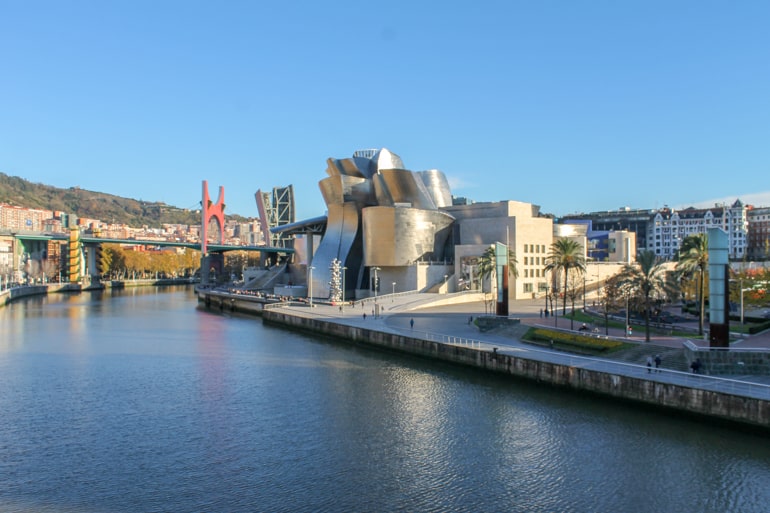
Bilbao has to be one of Lisa’s favourite Spanish cities. Not because it is especially beautiful, but because she lived there for a few months and it felt like home from the beginning. If you get the chance, take the metro to one of the beaches – you won’t regret it!
The drive from San Sebastián to Bilbao is a short and beautiful one as you will drive through some mountainous regions. By car it’ll take you approximately 1 hr 15 min and by bus the journey will be around 1,5 hours .
Bilbao also marks the end of this 5 day Northern Spain itinerary.
Bilbao is a good city to fly out of as it is one of the biggest cities in the region and well connected to bigger airports in other European cities. To get to the airport you can simply take the Airport bus from the bus station at San Mames.
Accommodation in Bilbao : Since Bilbao is a bigger city there is a wider variety of accommodations available.
Check here for apartments and hotels in Bilbao .
Specifically, Hotel NH Bilbao Deusto is a bright and simple hotel with buffet breakfast and private underground parking . Lisa had friends stay there and liked it. It’s not right in the heart of the city centre – but across the water from the Guggenheim Museum!
If you want to stay right in the heart of old town Bilbao, you should definitely check out Ercilla Hotela . This is a very stylish and popular hotel with an amazing rooftop terrace, lounge, also onsite parking , and traditional Basque food in the restaurant!
If you are looking for a cheaper place to stay, Bcool Hostel is a very “cool” hostel in Bilbao. In general, remember to book accommodations closer to the city centre/the river since the rest of Bilbao can be quite hilly!
Must-see Attractions in Bilbao:
- Guggenheim Museum
- The Old Town (Casco Viejo)
- Zubizuri Bridge
*Just so you know, we have a whole detailed guide on Bilbao things to do !
Spain Itinerary 5 Days – Southern Spain Itinerary
If you would like to explore Southern Spain instead of the north, then we would recommend the following 5-day Southern Spain itinerary.
Generally, the south is a little bit warmer than the north so maybe don’t try to do this trip in the middle of the summer heat as it can be quite exhausting!
The itinerary is just over 600 kilometres with a total driving time between 7 and 8 hours depending on your mode of transportation.
Spain Itinerary 5 Days – Southern Itinerary Overview
- Day 1: Málaga
Day 2: Day trip to Granada
- Day 3: Marbella
- Day 4: Cádiz
Day 5: Seville
Day 1: málaga.
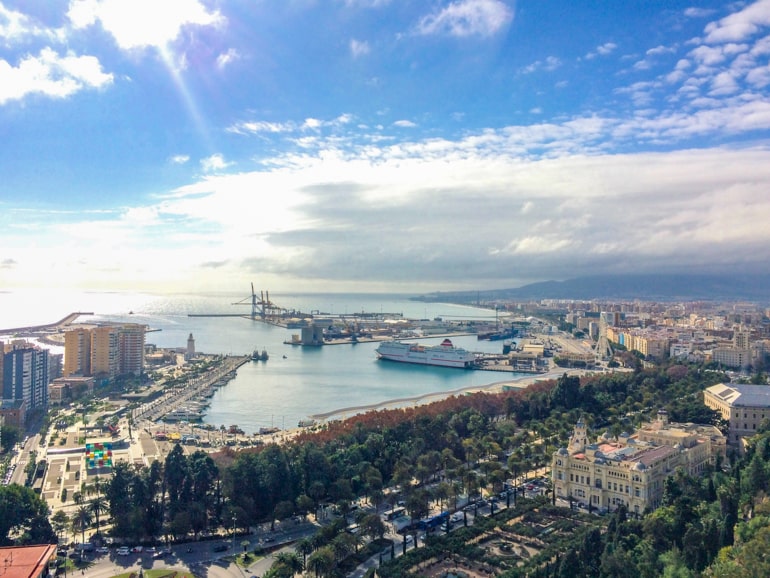
We are starting this itinerary in Málaga since it is an easy airport to fly in from other parts of Europe.
When Lisa arrived at the airport the first time she was actually kind of shocked to see that all the signs were written in German as well.
Needless to say, Málaga is a very popular destination among German tourists. It’s also an interesting city to visit in the wintertime !
Lisa didn’t like the city that much (as in wouldn’t want to live there), but it is definitely worth exploring for a day or two. It is also quite easy to get from the airport to the city centre by public transport. You can find your rental car from Malaga here .
Accommodation in Málaga: Malaga is a popular tourist destination in the south of Spain and so there are lots of different accommodation options. That said, apartment rentals are a very popular option.
Check here for apartments or hotels in Malaga .
Specifically, if you want a hotel, check out Hotel Boutique Teatro Romano . This minimalist design hotel is bright and clean and offers an excellent breakfast while being located right in the heart of the city centre.
If you are planning to stay in Malaga a bit longer, check out Apartamentos Nono . Located close to the beach and a quick walk to the city centre, these apartments have kitchenettes for smaller meals, terraces, and onsite private parking .
If you are searching for a hostel, Malaga has lots. You can search for hostels in Malaga here . When visiting Malaga with a friend, Lisa stayed at Casa Al Sur Terraza .
Even though it’s a “hostel”, it’s a popular place to stay in Malaga. They have private rooms and a lovely rooftop terrace. She and her friend stayed in a private room and loved it!
Just remember for this itinerary, wherever you book you will need to stay for 2 nights !
Must-see Attractions in Málaga:
- Alcazaba Palace
- Picasso Museum
- Cathedral of Málaga
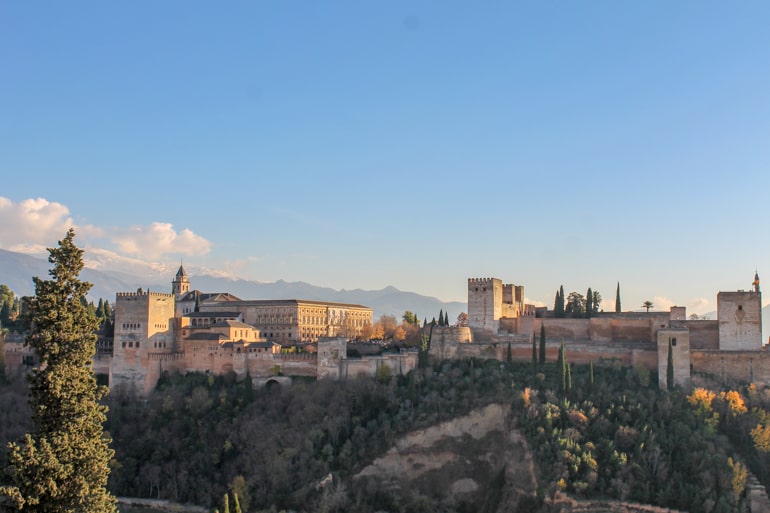
Today you’ll take a day trip to Granada. If you decided to rent a car you can do this by car, but then have to find parking in Granada. Lisa and her friend took the bus to Granada which was pretty easy to do since there are frequent buses throughout the day.
In Granada, you HAVE to go see La Alhambra. Make sure to book your ticket in advance (since there is only a limited amount of spots per day).
Lisa and her friend had to pick up her tickets at an office in the city before going to the actual attraction. Double-check your ticket since you might have to do that, too!
The journey from Málaga to Granada is approximately 1.5 hrs by car and 2 hrs by bus .
Accommodation in Granada: You won’t need a place to sleep in Granada since you’ll be returning to Málaga at the end of the day.
But IF you are curious – check out Hotel Granada Center or Granada Five Senses Rooms & Suites for two great hotels in the heart of the historic city centre!
Must-see Attractions in Granada:
- Alhambra Palace
- Albaicín District
- Cathedral of Granada
Day 3: Marbella
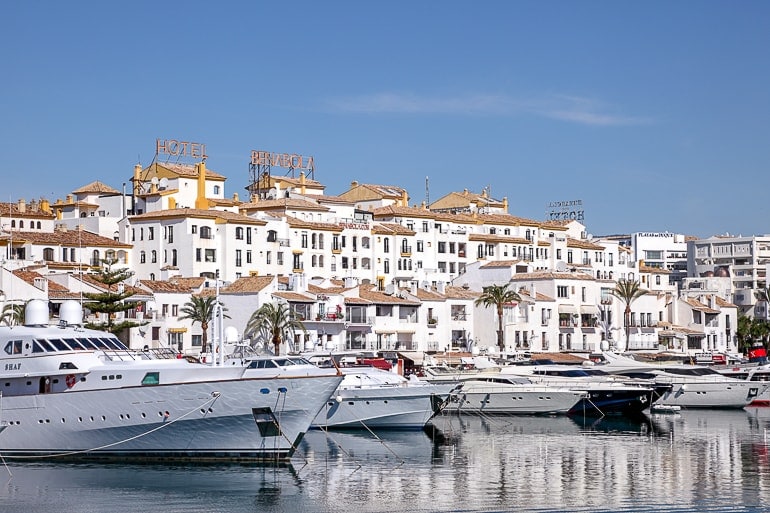
On the third day of this 5 day Southern Spain itinerary, you’ll drive from Málaga to Marbella. Marbella is a city by the water and part of the well know Costa del Sol. It is one of the most popular tourist cities in the region mainly due to its nice beaches and climate.
Since Marbella is quite close to Málaga the drive won’t be long – giving you more time to explore the city and relax at the beaches. The journey takes approximately 1 hour by car (there are different routes some of which include toll roads) and 1.5 hours by bus .
Accommodation in Marbella : Since the tourism industry is quite developed in Marbella, there are lots of amazing sunny accommodations to choose from.
Check here for hotels and apartments in Marbella .
Specifically, Paloma Blanca Boutique Hotel is a gorgeous (and affordable) boutique hotel with breakfast and free private parking onsite.
If you are looking for more of a beach resort, Amàre Beach Hotel Marbella is a beautiful all-inclusive adult-only beachside resort with breakfast, spa, pool, amazing views, and more!
Must-see Attractions in Marbella:
- The Old Town of Marbella
- Avenida del Mar
- Puerto Banús
Day 4: Cádiz
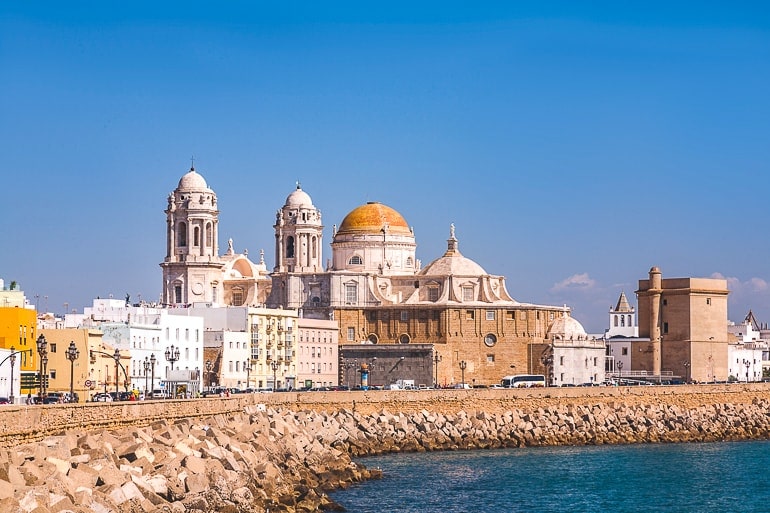
Cádiz is often considered a hidden gem in Spain. Lots of people who have been there seem to love it and Lisa is dying to visit the city.
Fun fact: Some think of Cádiz as the oldest continuously inhabited city in Western Europe. It is just slightly smaller than Marbella with lots of attractions waiting to be explored.
Driving from Marbella to Cádiz by car will take you approximately 2 hours including a toll road and slightly longer if you want to avoid toll roads.
You’ll drive along the coast for a while and could consider stopping along the way. Another option would be to make a pit stop in Gibraltar which you will pass along the way.
Unfortunately, Marbella and Cádiz do not seem to be connected well by public transport and travel between the two cities would involve going back to Málaga and/or through Sevilla (or Seville as the English like to call it).
If it is too much of a hassle for you to get from Marbella to Cádiz, consider skipping it and going straight to Seville instead.
Accommodation in Cádiz: Even though Cádiz is a smaller city, there are plenty of places to stay.
Check here for hotels and apartments in Cádiz .
Specifically, Hotel Boutique Convento Cádiz is a gorgeous hotel in the old town (close to the beach) with a great breakfast and private parking nearby .
Alquimia Albergue-Hotel is a cool and cozy hotel (also in the city centre) close to the beach and also with parking nearby. As for hostels, Cádiz does have quite a few hostels with amazing ratings. You can check here for hostels in Cádiz .
Must-see Attractions in Cádiz:
- Cádiz Cathedral
- Fortress San Sebastian
- Plaza de San Juan de Dios
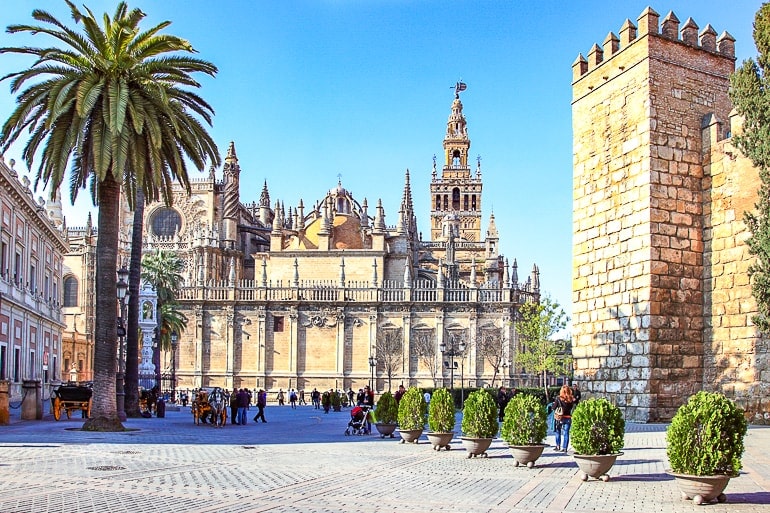
Seville is another popular destination in Spain and is often considered one of the hottest cities of the country. Therefore we would not recommend going there during July and August if you don’t like extreme heat (Lisa definitely doesn’t).
It is a beautiful city with lots of attractions to check out so be sure to have a good amount of time for exploring. If you don’t end up going to Cádiz, there is more than enough to do in Seville to keep you busy for two days!
Driving from Cádiz to Seville will take you approximately 1.5 hours by car and just slightly longer (1 hr 45 min) by bus . Seville also marks the end of this Southern Spain trip as it has a big airport which makes it super easy for you to fly back home.
Accommodation in Seville : Seville is a bigger and very popular city so there is no shortage of great accommodation options.
Check here for apartments and hotels in Seville .
Specifically, you have to see Petit Palace Puerta de Triana . This very trendy and cool design hotel offers a buffet breakfast and is located right in the city centre close to top attractions.
If you want a more historic stay, Hotel Simon is a more simple and authentic hotel. It’s located in a historic building, also does breakfast, and is also located in the heart of the city centre.
Neither of the above hotels offers parking – but few in the city centre of Seville offer onsite parking (or even public parking nearby).
If you are looking to have parking available, then you can check out La Parada del Marqués . It’s a beautiful guesthouse/hotel also centrally located and offers breakfast options and good connections to public transit!
If you are looking for a hostel, you can search for hostels in Seville here . Again, since Seville is so popular we would advise booking ahead – especially during the high season!
Must-see Attractions in Seville:
- Seville Cathedral
- Plaza de España
Spain Itinerary 7 Days
If you have slightly more time to explore Spain, we have also created two 7-day Spain itineraries for you. You’ll see that once again we give you two options since seven days are – in our opinion at least – still not enough to see the whole country.
Therefore, you’ll find a 7-Day Western Spain Itinerary and a 7-Day Eastern Spain Itinerary below. As always, feel free to modify them to make them fit your exact plans!
Spain Itinerary 7 Days – Western Trip
For this itinerary, the total driving time would be around 14 hours and the distance would be around 1300 km .
These estimates account for the Toledo day trip (and back to Madrid) AND finishing with ONE of either Seville OR Malaga from Córdoba. So, in theory, it could be shorter or longer than we have indicated here on the map!
We’ve already covered some of the places above, but we will mention the important parts again to make it easier for you to plan your exact trip.
Please note that we won’t actually include any places on the west coast of Spain – that would be a whole other trip in itself. Your 7-Day Western Spain Itinerary could look something like this:
Spain Itinerary 7 Days – Western Trip Overview
Day 1: Bilbao
Day 2: burgos.
- Day 3: Salamanca
- Day 4: Madrid
- Day 5: Madrid / Day trip to Toledo
Day 6: Córdoba
Day 7: seville or málaga.
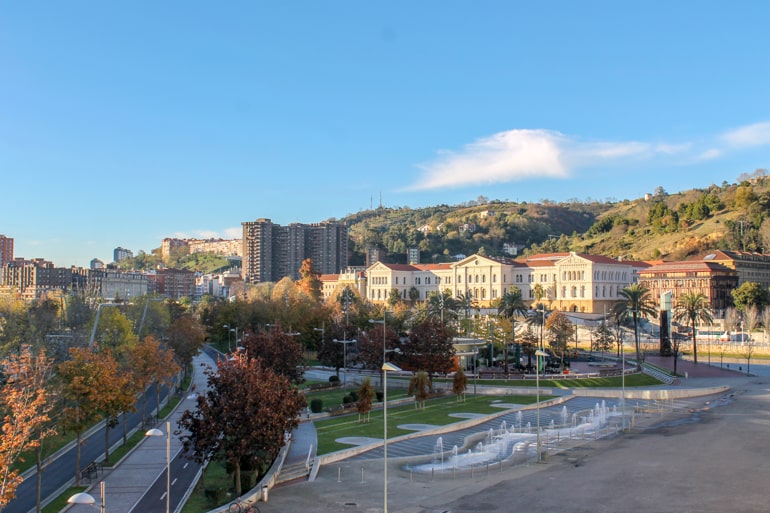
Similarly to how we ended the five-day itinerary in Bilbao, we’ll start this itinerary there as it is a relatively easy airport to fly into from other places in Europe. If you’re starting your longer Spain trip, you can find your rental car in Bilbao here .
Make sure to use your time to explore the Casco Viejo (the Old Town) and walk along the river! There are some great Pintxo places in the Old Town that you should absolutely check out!
Accommodation in Bilbao : Bilbao is a larger city so there’s quite a variety of accommodations available.
Check here for hotels in Bilbao .
Specifically, Hotel NH Bilbao Deusto is a bright and simple hotel with good breakfast and underground private parking . Friends of Lisa stayed there and said they enjoyed it. It’s close to the river across from the Guggenheim Museum but still a quick walk to the old town.
To stay in the heart of old town Bilbao, you have to see Ercilla Hotela . This is a very stylish and popular hotel with a lovely rooftop terrace and lounge, onsite parking , and they even serve traditional Basque food!
As for hostels, Bcool Hostel is a very “cool” hostel in Bilbao. In general, remember to book any hotels or accommodations somewhat closer to the city centre/the river because Bilbao can be quite hilly around the edges!
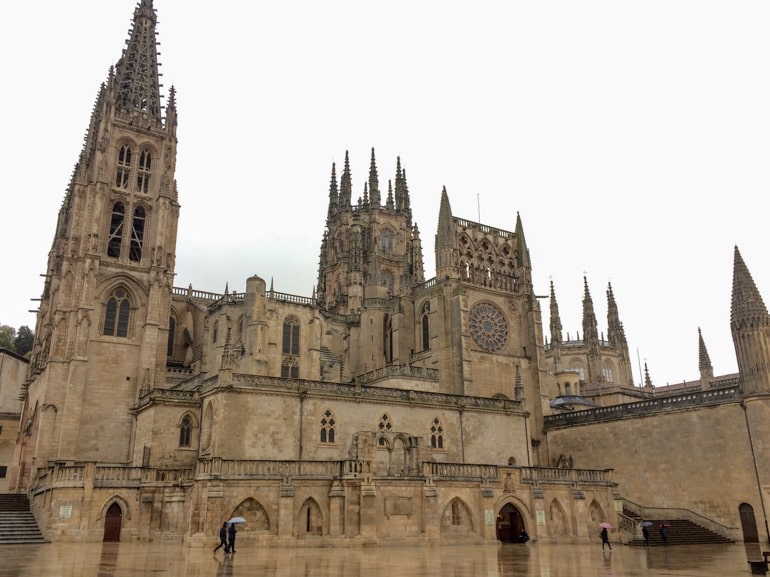
Burgos might not be a city that is immediately on your radar for places to visit in Spain but we would recommend a stop there on your way south.
Lisa visited Burgos with friends on a day trip from Bilbao so she knows how easy it is to get there. Burgos is a nice city but since there is not a ton to see, one night is the perfect amount of time in our opinion.
Getting from Bilbao to Burgos takes approximately 1.5 hours by car and 2 hours by bus .
Accommodation in Burgos : Burgos is not an overly big city, but you can still find lots of great accommodations.
Check here for hotels in Burgos .
Specifically, Hotel Puerta de Burgos is a popular, trendy, and affordable hotel with private underground parking at the hotel. This makes it a great option if you have a car because it’s a little further from the centre (still quite close) and just off the motorway.
Another great hotel closer to the city centre/attractions is NH Collection Palacio de Burgos . This is an elegant hotel with a great breakfast and private parking, too.
If you want to stay in a hotel that physically faces the famous Burgos Cathedral, check out Hotel Mesón del Cid !
Must-see Attractions in Burgos:
- Burgos Cathedral
- Las Huelgas
- Museum of Human Evolution
Day 3: Salamanca
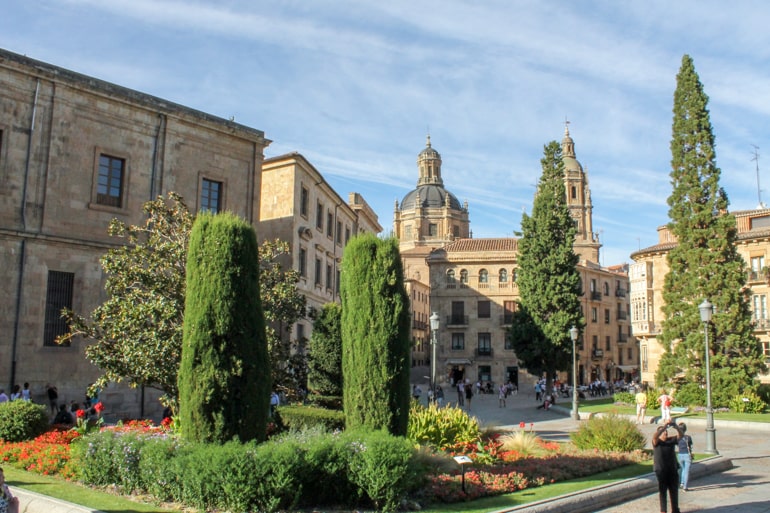
From Burgos, your journey continues to Salamanca – another one of Lisa’s favourite cities in Spain. Salamanca is sometimes called “The Golden City of Spain” and you’ll understand why.
The many sandstone buildings get illuminated beautifully by the sun – making it appear golden. Be sure to bring your camera because you’ll want to use it in Salamanca. Our tip: Cross the river to get amazing photos of the cathedral.
Getting from Burgos to Salamanca is easy and will take approximately 2.5 hours by car or 3 hours by bus .
Accommodation in Salamanca: Salamanca has lots of great accommodations in the city.
Check here for hotels in Salamanca .
Specifically, Hospes Palacio de San Esteban is an authentic-style hotel in the city centre with an incredible breakfast and onsite private parking .
If you are looking for a very affordable hotel with views of the Cathedral, Hotel San Polo is for you. The popular hotel is in a location that doesn’t get much more central! There’s no parking available – making it great if you travel by bus and train only.
When Lisa visited Salamanca on a weekend trip, she stayed in a hostel with friends close to the Old Town and loved it. You can check out the good selection of hostels in Salamanca .
Must-see Attractions in Salamanca:
- Salamanca Cathedral (Old + New)
- Plaza Mayor
- Salamanca University
Day 4: Madrid
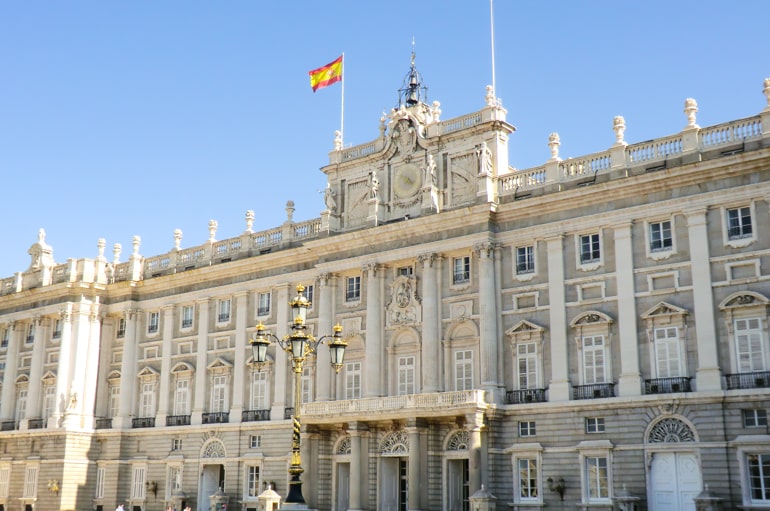
Since Madrid is the capital of Spain you shouldn’t miss it on your itinerary. Conveniently it is also quite close and easy to get to from Salamanca.
Since there is so much to see in Madrid one day to explore might not be enough for you. That’s why you might opt for spending two days in Madrid instead.
Lisa has been to Madrid two times now and still hasn’t seen everything there is to see. But at least you’ll get a good sampler!
As mentioned, getting from Salamanca to Madrid is easy. The journey will take approximately 2 hrs 12 min by car (including a toll road) and 3 hours by bus .
Madrid’s main bus station is actually underground which is kind of cool and caused a lot of confusion for Lisa and her friends when they tried to find it the first time.
Accommodation in Madrid : Being the capital city of Spain, Madrid is a popular city with lots and lots of accommodation options. Keep in mind that Madrid has many “hostals” which are technically guesthouses but are basically hotels.
Also, if you have a car don’t be surprised if parking is in a public lot for a high fee – that’s just Madrid.
Check here for apartments and hotels in Madrid .
Specifically, you might want to check out Room007 Select Sol . This charming and trendy hotel is right in the heart of the city, has air conditioning, and serves breakfast at a cafe next door!
If you are looking for a simple stay right in the centre, check out Hostal Madrid . This authentic guesthouse is so centrally located with top attractions and a metro station around the corner.
It’s such good value for money that the two times Lisa travelled to Madrid she actually stayed here both times!
Should you be on the hunt for an actual hostel, you can check here for hostels in Madrid . Keep in mind wherever you book, you will be booking accommodation for two nights.
Must-see Attractions in Madrid:
- Museum Reina Sofia
- Puerta del Sol
Keep in mind we have a whole separate detailed guide on amazing things to do in Madrid !
Day 5: Madrid or Day trip to Toledo
As mentioned, you might opt to spend another day in Madrid since there is so much to see.
If that’s the case read our Madrid guide linked above to get more recommendations. Alternatively, you could opt to go on a day trip to Toledo, a beautiful small city not too far from Madrid.
If you don’t want to drive there yourself, you can choose to book a day tour which includes a tour of Toledo among other things. If you want to drive yourself the journey will take you approximately 1 hour by car and the same amount of time by bus .
Must-see Attractions in Toledo:
- Toledo Cathedral
- Monasterio de San Juan de los Reyes
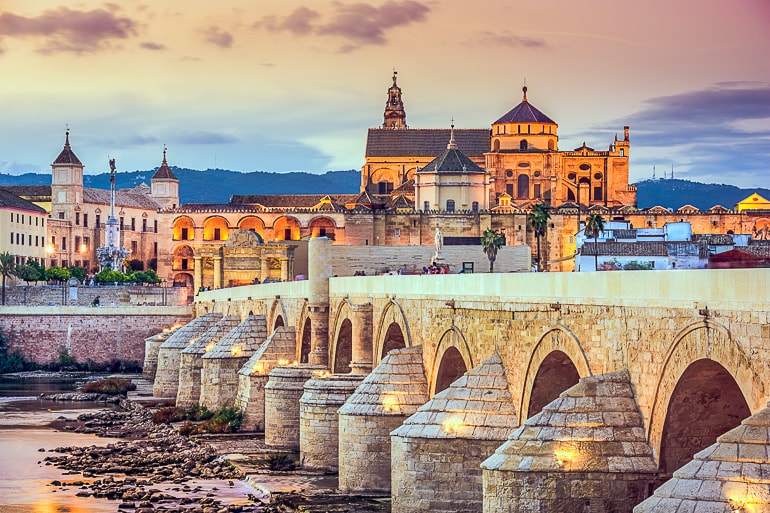
The next day you will drive to Córdoba, a city in Andalusia known for its famous flower street – among other things of course. There is a lot of history to be found in Córdoba so consider taking a walking tour if you want to learn more about it.
This is one of few routes where you will actually be faster taking public transport as if you were to drive yourself since there is a good train connection between Madrid and Córdoba.
Driving by car takes approximately 4 hours while the journey by train would be slightly shorter with 2 hrs 15 min .
Accommodation in Córdoba : If you’re looking for a hotel, there are lot of options to choose from.
Check now for hotels in Córdoba .
Specifically, Maciá Alfaros is an authentic hotel located right in the heart of the city centre with an incredible swimming pool and easy parking onsite.
Hotel Cordoba Center is an elegant hotel located outside the heart of the centre. It’s still very walkable to the centre, is very close to the train station, and has a rooftop pool with amazing views!
There are quite a few hostels with very good ratings in Córdoba so you can check here for hostels in Córdoba .
Must-see Attractions in Córdoba:
- Mosque–Cathedral of Córdoba
- Alcázar de los Reyes Cristianos
- Historic Center of Córdoba
For this itinerary, you can decide in which city you would like to end your trip. For some, it might be more convenient to fly out of Seville while for others Málaga might be the better option. So it’s really up to you and your preference!
The journey from Córdoba to Seville takes approximately 1 hr 40 min by car and 45 min by train . The time it takes to get from Córdoba to Málaga isn’t much longer with 1 hr 50 min by car and 50 min by train .
Accommodations in Seville : As mentioned above, Seville is a popular city so there is always accommodations to choose from.
Specifically, check out Petit Palace Puerta de Triana . This trendy design hotel offers a buffet breakfast and a really great location in the city centre.
For a historic stay, Hotel Simon is a more simple and more authentic hotel. It’s located in a historic building, does breakfast, and is also located in the city centre.
Neither of the above hotels have parking – but fewer properties in Seville offer onsite parking (or even public parking nearby).
If you are travelling by car and want parking available, then check out La Parada del Marqués . It’s a beautiful guesthouse/hotel also centrally located with breakfast options and good connections to public transit!
If you want a hostel stay, you can search for hostels in Seville here . Regardless of what type of accommodation you book, Seville is popular so we would advise booking ahead – especially during the high season!
Accommodation in Málaga: Malaga is a popular destination in the south of Spain with lots of different accommodation options. That said, apartment rentals are very popular.
Specifically, for hotels, you can check out Hotel Boutique Teatro Romano . This design hotel is bright and clean and offers breakfast while being located right in the heart of the city.
If you are planning for a longer stay, check out Apartamentos Nono . Located close to the beach and a quick walk to the city centre, these apartments have kitchenettes, terraces, and onsite private parking .
If you want a hostel, Malaga has lots. You can search for hostels in Malaga here . When visiting Malaga with a friend, Lisa stayed at Casa Al Sur Terraza .
Even though it’s a “hostel”, it’s a popular place – with private rooms and a lovely rooftop terrace. Her and her friend stayed in a private room and loved it!
Spain Travel Itinerary 7 Days – Eastern Trip
If the other 7-day Spain itinerary doesn’t really appeal to you and you would like to stay closer to the coast, maybe this itinerary is more to your liking. The driving time would be just shy of 11 hours and would be approximately 1000 km driving distance !
Spain Itinerary 7 Days – Eastern Trip Overview
- Day 1+2: Barcelona
Day 3: Valencia
- Day 4: Alicante
- Day 5: Murcia
Day 6: Granada
Day 7: málaga, day 1 + 2: barcelona.
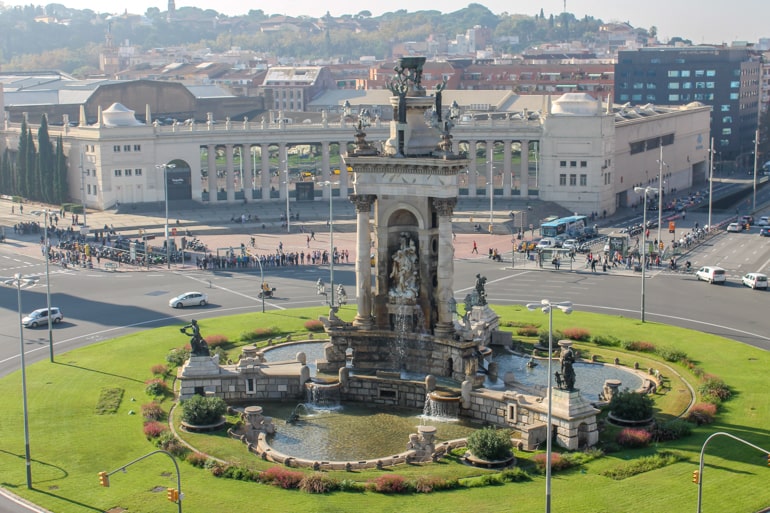
Once again, this itinerary starts in Barcelona since it is one of the easiest airports to fly into. Since you have a little bit more time with this itinerary you’ll stay in Barcelona for two days.
There is lots to see so you still won’t see everything, but definitely more than in just one day. To then continue on with this itinerary through Spain, you can find your rental car in Barcelona here .
Accommodation in Barcelona: As mentioned above, there are lots of hotels and apartments in Barcelona.
For hotels, you might like Catalonia Born Hotel with a boutique style and rooftop pool close to the beach in the city centre.
If you travel by car, Sallés Hotel Pere IV is an affordable hotel with spa in the heart of the city with a private parking garage .
As for hostels, you can check here for Barcelona hostels . We liked Kabul Hostel . Wherever you stay, remember to book in advance because the city does fill up and it can get expensive! And remember, you’ll be staying at this place for two nights .
- Las Ramblas
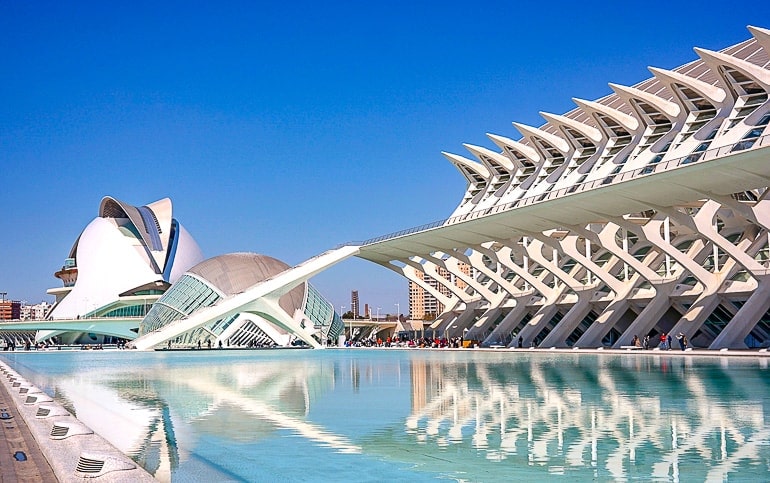
The third day of this Spain itinerary will take you from Barcelona to Valencia which is another city on Lisa’s favourite list.
It was actually the first Spanish city she visited and she fell in love with the city and its people right away. Her favourite part is that there is a huge part in what was formerly a river that stretches through a big part of the city.
In order to get from Barcelona to Valencia, you’ll drive along the coast for 3.5 hours by car and around 3 hrs 15 min by train.
Accommodation in Valencia: Since Valencia is a bigger city, you are sure to find accommodations that work for you.
Check here for hotels in Valencia .
Specifically, Petit Palace Ruzafa is a bright and boutique hotel right in the city centre.
They offer healthy breakfast options and free bike rentals. There’s no parking making this a great hotel for those travelling without a car.
If you want a place right on the beach, check out Hotel Miramar . This cool beachfront hotel has a bar and restaurant right downstairs and has paid parking onsite . If you are looking for a hostel, you can check here for hostels in Valencia .
Must-see Attractions in Valencia:
- City of Arts and Science
- Lonja de la Seda
- Cathedral of Valencia
Day 4: Alicante

Alicante is a popular holiday town that lots of Europeans visit to enjoy the nice weather and the beaches. Maybe you have heard of the name Costa Blanca?
Alicante is part of that exact region. When you’re there don’t forget to check out some of the nice beaches – but of course, there are also lots of other things waiting to be explored.
Getting from Valencia to Alicante won’t take overly long. The drive will take approximately 2 hours by car and 1.5 hrs to 2.5 hours by train or bus respectively.
Accommodation in Alicante: Alicante is a popular city due to its great location on the coast.
Check here for hotels in Alicante .
If you want to stay directly on the beach, Hotel Almirante is a bright and stylish hotel with breakfast buffet. It’s a bit farther from the city centre, but there is free onsite parking if you have a car.
If you want more of a resort style, Melia Alicante is also located right on the beach with stunning views over the water. It’s much closer to the centre of the city and has good amenities (pool), paid parking next door, and a really good breakfast!
You can also find a good mix of hostels in Alicante. In any case, don’t forget to book ahead in the summertime since it can get very crowded.
Must-see Attractions in Alicante:
- Castle of Santa Barbara
- Casco Antiguo (Old Town)
- Beaches such as Playa Postiguet
If you’re heading for Alicante to get some sunshine, we’ve got a guide on things to do and see in Alicante that includes some great food tips for you to check out!
Day 5: Murcia
Murcia is a city in the southeast of Spain and the capital of the region with the same name. Travellers who don’t know much about Spain (yet) might not have heard of the city before but this doesn’t mean it is not worth a visit.
The drive from Alicante to Murcia is quite short with 1 hr by car and 1 hr 10 min by bus . This will give you a good amount of time to explore the university city and get a rest from all the driving.
Accommodation in Murcia: Since Murcia is a less touristy city you’ll find great places to stay and (generally) fewer crowds.
Check here for hotels in Murcia .
Specifically, the Hesperia Murcia Centro is a clean and modern hotel right in the city centre near the Cathedral. There’s also private onsite parking and a tasty breakfast.
If you want to stay closer to the coast – you could stay in Cartagena (about 30 minutes away from Murcia). Here, check out NH Cartagena – with bright, sea views and parking all in a great location.
Must-see Attractions in Murcia:
- Murcia Cathedral
- Floridablanca Gardens
- Monteagudo Castle
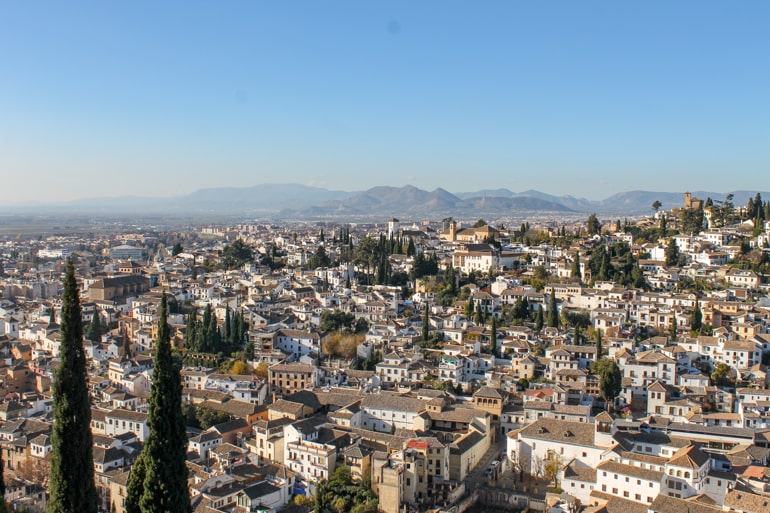
From Murcia, your journey will continue to Granada, a city which we have mentioned quite a few times by now so we won’t go into details again. If you haven’t yet, make sure to get your Alhambra tickets in advance!
Driving from Murcia to Granada will be a slightly longer trip with 2 hrs 45 min by car and around 3.5 hrs by bus .
Accommodation in Granada: Since Granada is a popular travel destination, many accommodations are available.
Check here for hotels in Granada .
Specifically, Hotel Granada Center is a VERY popular hotel with great breakfast, a very central location, and private underground parking onsite .
Also situated in the city centre is Granada Five Senses Rooms & Suites – a sleek and modern hotel with small rooftop pool with great views of the historic old town! If you are looking for a hostel, you can check here for hostels in Granada .
Since we have mentioned Málaga countless times above, there is not much to add. As you probably know by now Málaga has a great airport to fly out of so this is where this 7-day Eastern Spain itinerary ends.
The journey from Granada to Málaga is approximately 1,5 hrs by car and 2 hrs by bus .
Accommodation in Málaga: Malaga is a popular tourist destination in Spain so there are lots of available accommodations – with apartments being the most popular.
For hotels, check out Hotel Boutique Teatro Romano . This minimalist design hotel is bright and offers a great breakfast while being located right in the city centre.
For longer stays, check out Apartamentos Nono . Located close to the beach and to the city centre, these apartments have kitchenettes for small meal prep, terraces, and onsite private parking .
If you are searching for a hostel, you can search for hostels in Malaga here . When visiting Malaga with a friend, Lisa stayed at Casa Al Sur Terraza .
It’s a popular place to stay in Malaga with private rooms and a great rooftop terrace. She and her friend stayed in a private room and really liked it!
Spain Itinerary – 14 Days
This road trip would be a beast. As planned above with the scheduled day trips you’d cover around 2600 kilometres .
The driving time would be around 27 hours and 30 minutes – but of course, this varies by traffic and which day trips/stop days (beach days) you opt to take, etc.
If you swung down to Gibraltar at the end and then went to Granada and Malaga, it could very well be a tad longer.
You should also consider the price of renting a car for two weeks to see if there are any companies that offer discounts!
Compare prices for your car rental from Bilbao here .
Since you have read about most of these places in some of the itineraries above we’ll keep this one short.
Our version is written from north to south, so from Bilbao to Málaga. As with most of our itineraries, you can reverse the direction if you feel like it So, to really see the whole country, your updated 14-day Spain itinerary might look something like this:
14-Day Spain Itinerary Overview
- Day 2: Day trip to Santander, Vitoria-Gasteiz or Beach Day
- Day 3: Donostia-San Sebastián
- Day 4: Zaragoza
Day 5+6: Barcelona
Day 7: valencia, day 8+9: madrid.
- Day 10: Toledo or Córdoba
Day 11: Seville
- Day 12: Seville or Day trip to Cádiz/ Gibraltar
- Day 13: Málaga (or Granada)
- Day 14: Málaga
Once again we are starting this itinerary in Bilbao since it is an easy city to get to. There are quite a few things to see and delicious foods to try so with this itinerary you have slightly more time to explore the city!
Accommodation in Bilbao: Once again, Bilbao is a bigger centre in Spain so you’ll find lots of accommodations to suit many different styles and budgets.
Specifically, Hotel NH Bilbao Deusto is a bright hotel with breakfast and underground private parking . Friends of Lisa stayed here and enjoyed it. It’s the river from the Old Town – but it’s a nice area and a quick walk to everything.
To stay in the centre of Bilbao’s historic old town, check out Ercilla Hotela . This is a very stylish hotel with a great rooftop terrace/lounge, onsite parking , and food onsite, too.
If you are wanting a hostel, Bcool Hostel is a great option in Bilbao. Just remember: when booking any accommodations in Bilbao, try to book in the centre or near the river since the edges of the city can be very hilly!
Since the next day in this itinerary is a day trip we’d suggest booking your accommodation in Bilbao for two nights !
Day 2: Day Trip to Santander, Vitoria-Gasteiz or Beach Day
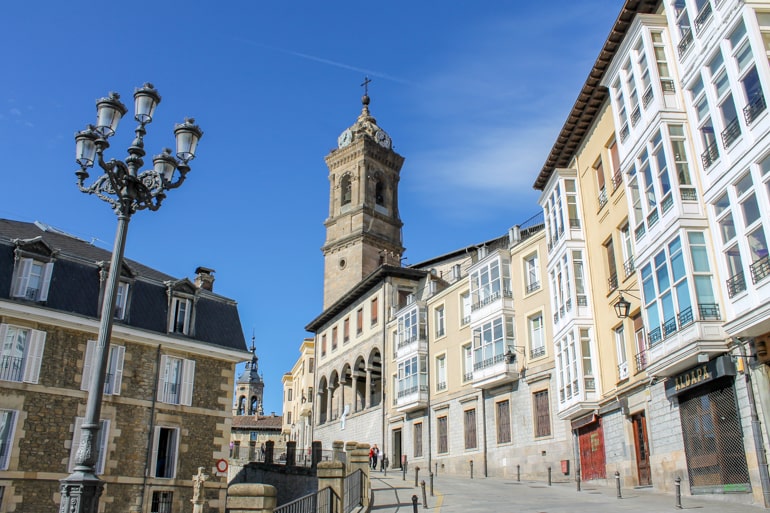
To give you the chance to see a bit more of the region we recommend a day trip to either Santander or Vitoria-Gasteiz, the capital of the Basque Country.
Alternatively, you can also opt to spend the day at the beach if the weather is nice (more on that below!) or use the time to see more of Bilbao.
Getting to Santander from Bilbao takes approximately 1 hr 15 min by car and 1.5 hrs by bus . The journey to Vitoria-Gasteiz is slightly shorter, taking approximately 1 hr by car and the same amount of time by bus .
Must-see Attractions in Santander:
- Palacio de la Magdalena
- Centro Botin
- Sardinero Beach
Must-see Attractions in Vitoria-Gasteiz:
- Catedral de Santa María
- Iglesia de San Miguel
If you opt for a beach day instead, we would recommend Sopelana beach. It is easy to reach by metro. Just take the line no 1 in the direction of Plentzia and get off at the Sopelana stop.
From there you can either walk or take the bus to the beach. It’s Lisa’s favourite beach in the Bilbao area since it looks beautiful and is not too crowded. It’s also a great stop to try some surfing.
Day 3: Donostia-San Sebastián
The next stop on your 14-day Spain itinerary is San Sebastián – a city we have already mentioned before. Beautiful beaches and delicious pintxos await you!
The drive from Bilbao to San Sebastián takes around 1 hr 15 min by car and 1.5 hrs by bus . There are very frequent buses by lots of different operators between these two cities.
Accommodation in San Sebastián : San Sebastián is one of the more expensive towns in Spain. It’s also very popular among luxury travellers. So, don’t be surprised if accommodations seem a little more expensive overall.
Specifically, check out Casual de las Olas San Sebastián . This hotel is a bit further from the old town and beach but makes up for it with sleek decor, breakfast, and air conditioning.
If you want more of a laid-back feel, check out Talaia HT . This authentic and cozy guesthouse is located in the heart of the old town – and has public parking nearby .
If you are looking for a hostel, you can find hostels across San Sebastián here . Wherever you book, our advice is to book accommodations early. Generally, you save money when doing that.
Day 4: Zaragoza
Day 5 of this itinerary will take you to Zaragoza, a city mentioned in the 5 day Northern Spain itinerary. The drive will be a bit longer but you’ll still have enough time to check out some of the attractions Zaragoza has to offer.
Driving from San Sebastián to Zaragoza will take approximately 2 hrs 45 min by car (including a toll road) and around 4 hrs by bus .
Accommodations in Zaragoza: Zaragoza is a smaller city but there are still lots of really great accommodation options.
Specifically, check out Hotel Sauce . This bright hotel is located right in the city centre and has buffet breakfast, air conditioning, and private parking onsite for those with a car in Spain!
If you want a hotel with a rooftop pool, Hotel Palafox is for you! Also situated right in the heart of the city, the hotel has a unique decor, city views, a nice breakfast, and also has parking and air con!
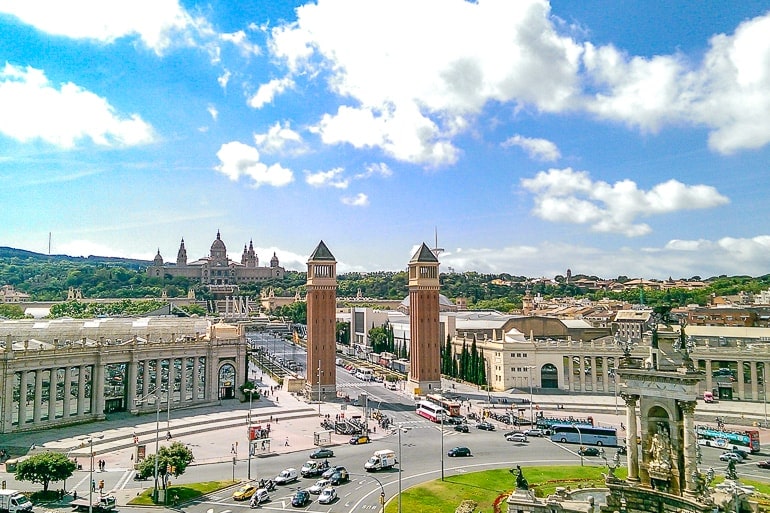
A tour across the country wouldn’t be complete without including Barcelona. Since there is so much to see you’ll be spending two nights in the city to give you enough time.
The drive from Zaragoza to Barcelona will take you approximately 3 hrs 10 min by car (includes a toll road), 3.5 hrs by bus and 1.5 hrs by train .
Accommodation in Barcelona : As mentioned above, you’ll find loads of great hotels and apartments in Barcelona.
If you are looking for a hotel, check out Catalonia Born Hotel with a boutique style and rooftop pool in the city centre (also close to the beach).
If you travel by car, Sallés Hotel Pere IV is a lovely and affordable hotel with a spa that is located in the heart of the city and has a private parking garage onsite .
As for hostels, you can check out Barcelona hostels here. Specifically, we enjoyed Kabul Hostel . Hostel or hotel – just remember to book early because Barcelona is a popular city. Also remember that for this itinerary, you’ll be staying over for two nights .
And we’re back in one of Lisa’s favourite cities. The drive from Barcelona to Valencia will be a bit longer but it is worth it (in our opinion at least).
Driving from Barcelona to Valencia will take around 3.5 hrs by car (including a toll road), 3 hrs by train and 4 hrs 15 min by bus .
Accommodation in Valencia: Since Valencia is a bigger city, you’ll find accommodations that work for your style and budget.
Check now for hotels in Valencia .
Specifically, Petit Palace Ruzafa is a boutique hotel very much in the lovely city centre. They offer healthy breakfast, free bike rentals, and no parking – making it great for travellers without a car!
If you’re looking to stay right the beach, you’ll likely love Hotel Miramar . This cool beachfront hotel has a bar/restaurant right downstairs, ocean views, and has paid parking onsite . If you want to stay in a hostel, you can check now for hostels in Valencia .
Must-see Attractions in Valencia:
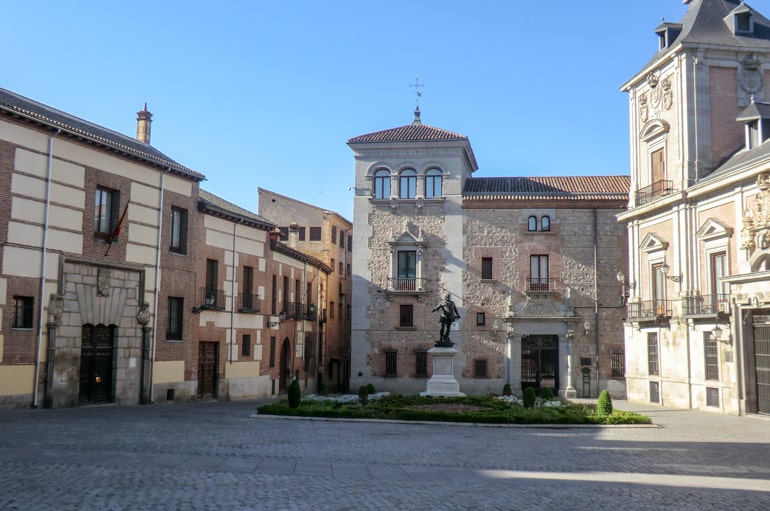
Of course, you can’t forget about the capital of the country when going on a trip through Spain.
Since there is so much to see and do you will spend two nights in Madrid. This will also give you some time to recover from the long driving days you’ve had.
Driving from Valencia to Madrid takes approximately 3.5 hrs by car and slightly less than 2 hrs by train .
Accommodation in Madrid : Being the capital city of Spain, Madrid is a popular city with lots of accommodations.
Keep in mind that Madrid has “hostals” which are technically guesthouses but are basically hotels. Also, parking can be very expensive per day but that’s just Madrid for you.
Specifically, check out Room007 Select Sol . This charming and trendy hotel is right in the heart of the city, has air conditioning, and serves breakfast at a cafe next door. You are very much in the city centre here!
If you are looking for more of a guesthouse stay right in the centre, check out Hostal Madrid .
This authentic accommodation is so centrally located with attractions and the metro close by. It’s good value for money – the two times Lisa travelled to Madrid she actually stayed here both times!
Should you want an actual hostel, there are loads of hostels in Madrid. You can check here for hostels in Madrid . Keep in mind wherever you book, you will be booking this accommodation for two nights if you are following this itinerary.
*We have written in-depth about many of the attractions you can visit in Madrid in our things to do in Madrid guide!
Day 10: Toledo or Córdoba
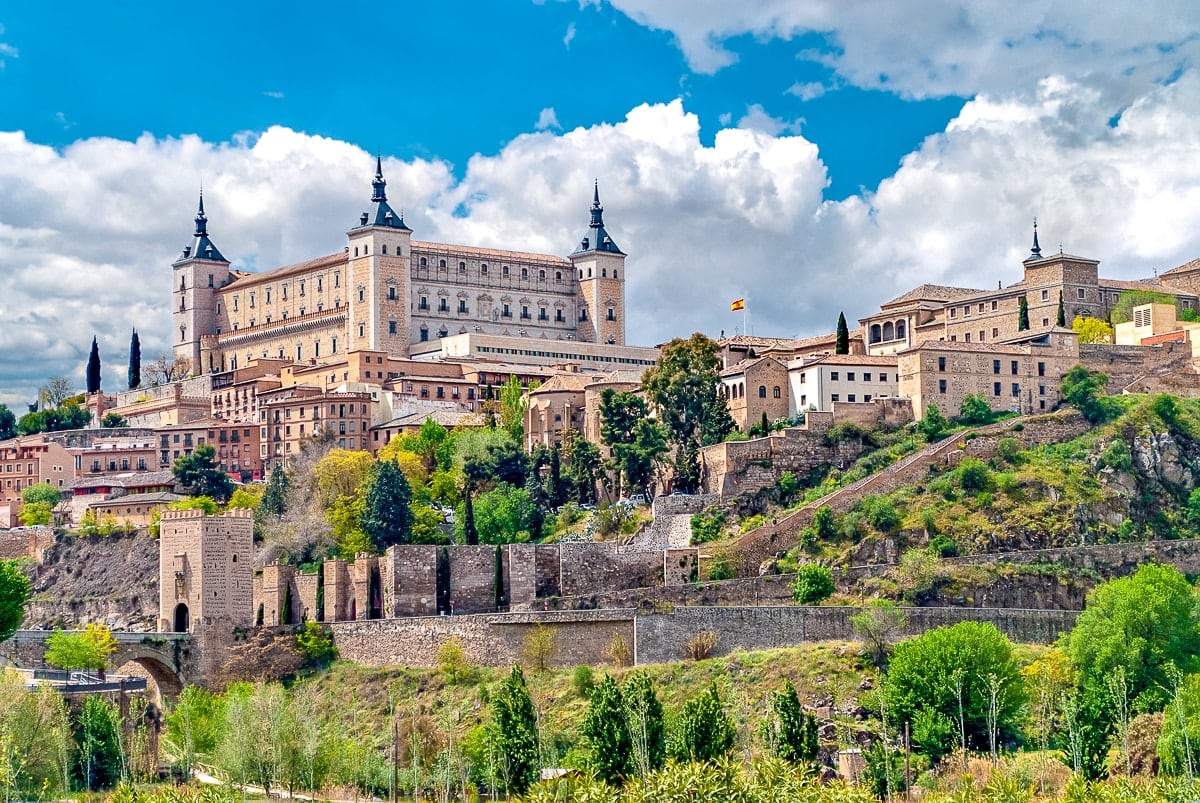
For the next stop on your itinerary, you can decide where you would like to stop. From Madrid you are driving further south and both Toledo and Córdoba would be great options for a stop on the way to Seville.
The drive from Madrid to Toledo will be short and only take an hour by car or bus . The drive from Madrid to Córdoba is a lot longer and takes approximately 4 hrs by car and 2 hrs by train .
While this drive would be longer, your drive the next day would be significantly shorter from Córdoba than from Toledo.
Accommodation in Toledo: If you choose to stay in Toledo, you can check here for hotels in Toledo .
Specifically, you have to check out Hotel Santa Isabel – an authentic and charming Spanish hotel in the heart of the city with an incredible rooftop terrace, good breakfast, and private parking under the hotel if you need it.
Accommodations in Córdoba: If you end up in Córdoba, you can check now for hotels in Córdoba .
Specifically, Maciá Alfaros is an authentic hotel located right in the heart of the city with a nice swimming pool and parking onsite.
Hotel Cordoba Center is an elegant hotel located just a short walk to the centre. It’s location is very close to the train station – and there is a lovely rooftop pool with city views!
There are also many hostels with very good ratings so you can check here for hostels in Córdoba .
On day 11 you will drive from either Toledo or Córdoba to Seville – a city we have mentioned multiple times now because it is very much worth the visit.
If you ended up staying in Toledo, it’ll take you 4.5 hrs by car and 4 hrs by train to get to Seville. If you stayed in Córdoba it’ll only take you 1.5 hrs by car and 45 min by train to get to Seville.
Accommodation in Seville : As we have mentioned above a bunch of times, Seville is a big and popular city so you’ll have no shortage of accommodations to pick from.
Check here for hotels in Seville .
Specifically, we like the look of Petit Palace Puerta de Triana . It’s a trendy design hotel with a buffet breakfast located right in the city centre close to top sights!
If you want more of a “historic stay”, Hotel Simon is a simple and authentic hotel located in a historic building!
They also do breakfast and are also located in the city centre. So you know: neither of the above hotels have parking – but not that many hotels in the city centre offer onsite parking (or even nearby public parking).
If you have/rent a car and need parking available, we’d say check out La Parada del Marqués . It’s a beautiful guesthouse/hotel also quite conveniently located but they also have parking, breakfast options, and good connections to public transit!
Should you be looking for a hostel, you can search for hostels in Seville here .
Again, since Seville is very popular so we would advise booking any accommodations ahead of time – especially during the high season! Remember, you’ll stay for two nights if you follow this itinerary!
Day 12: Seville or Day trip to Cádiz/ Gibraltar

Since there is a lot to see and do in Seville, you have the option to stay another day to explore more of what the city has to offer.
If you’d prefer to see a different place you can consider day trips to either Cádiz or Gibraltar. Know that Gibraltar is not officially part of Spain but belongs to the United Kingdom instead.
It’ll take you around 1.5 hrs by car or train to get from Seville to Cádiz. To get from Seville to Gibraltar it’ll take between 2 and 3 hrs by car .
There does not seem to be any public transport between Seville and Gibraltar since it is another country, but you can participate in an organized tour from Seville to Gibraltar .
Must-see Attractions in Gibraltar:
- Rock of Gibraltar
- Great Siege Tunnels
- The Old Town
Day 13: Málaga (or Granada)
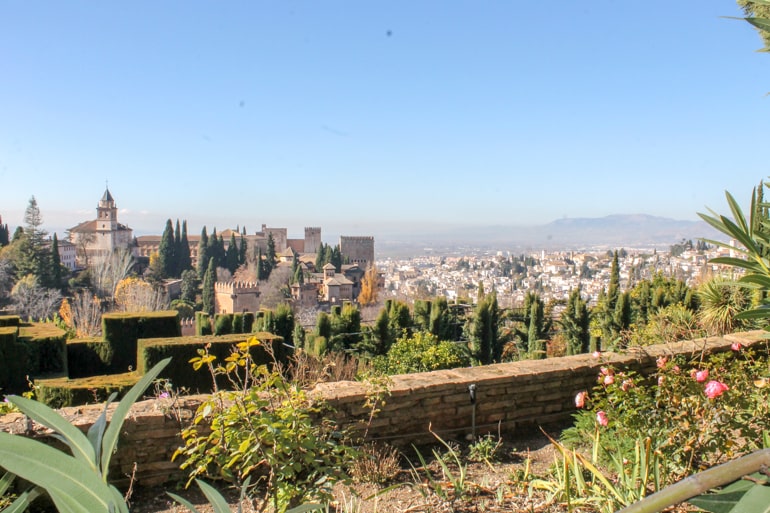
On your second to last day of this itinerary, you will drive from Seville to Málaga, a route we have mentioned quite a few times by now up above.
If you really wanted to visit Granada you could also drive there instead. You could then make the trip to Málaga at the end of the day or the next day.
The journey from Seville to Málaga will be approximately 2.5 hrs by car and 2 hrs by train. Whatever city combo you choose, just remember to book the right amount of nights in cities (one or two) for the end of your itinerary (keeping in mind where you fly out)!
Accommodation in Málaga: As a popular city in the south, Malaga has lots of places to choose from when it comes to accommodation options.
For hotels, have a look at Hotel Boutique Teatro Romano . This lovely design hotel offers breakfast – and it’s very centrally located in the heart of the city!
For an apartment rental (maybe for a longer stay), check out Apartamentos Nono . Located close to the beach and a quick walk to the city centre, the apartments have kitchenettes, terraces, and private parking onsite (if you travelling by car).
Malaga also has lots of hostels if you like. You can search for hostels in Malaga here . Lisa stayed at Casa Al Sur Terraza when travelling to Malaga with a friend.
For a “hostel”, the Casa is a very popular place to stay with private rooms and a sunny rooftop terrace. Lisa and her friend booked a private room and enjoyed it!
Accommodation in Granada: Since Granada is popular, many accommodations are available.
Specifically, Hotel Granada Center is a VERY popular hotel with a great breakfast, a very central location, and private underground parking onsite if you have a car.
Also situated in the city centre is Granada Five Senses Rooms & Suites – a modern hotel with a small rooftop pool with views of Granada’s old town! If you want to book a hostel, you can check here for hostels in Granada .
Day 14: Málaga
And this is the end of your two weeks Spain itinerary. Once again Málaga is the city you fly out of since there are lots of great flight connections to other places in Europe.
Alternatively, you could also stay in Seville and visit Málaga on a day trip if the airport in Seville works better for you.
Things to Consider When Travelling in Spain
Before you dive into Spain trip planning, you’ll want to consider a few details. From the currency they use (the Euro) to the weather, public transport, and the best time to visit, we cover a few key areas below to help you prepare.
Best Time of Year to Visit Spain
Spain is a destination that can be visited year-round – you just have to set your expectations right. Lisa visited Malaga with a friend in December and it was quite warm but of course not warm enough to go swimming.
Since the country is quite big and has a diverse geography, there are actually a lot of different climate zones in Spain. Generally, the summers are hot and dry while the winters are mild and quite rainy.
The average maximum temperature for July and August is 30 °C and 17/16 °C in December and January. However, this can vary greatly depending on which city you are visiting (e.g. Granada is always a little bit colder).
We would recommend that you avoid the south – especially Seville – and Madrid in July and August since it can get VERY hot.
And according to Lisa’s Spanish teacher in Bilbao, it would probably also be a good idea to avoid visiting the Basque country during the winter months since it can rain a lot.
In our opinion, the perfect months for visiting Spain would be from March to June and September to the end of October.
Public Transportation in Spain
Spain has a very well-developed long-distance bus system. Lisa was especially impressed by that since in Germany long-distance buses didn’t exist until a few years ago and sometimes it can still be a bit chaotic or unclear.
In Spain, almost every major city has an actual bus station (and not just a signpost). One of the biggest bus companies in Spain is Alsa .
Lisa has used them quite a few times when living in Spain (to go from Madrid to Bilbao for example) and always had a pleasant experience.
In addition to buses, Spain also has a pretty good rail system. You can check the train connections and prices on the RENFE website here .
We would recommend that you always check both buses and trains as sometimes they take approximately the same amount of time and the bus can be significantly cheaper.
In a few areas (such as parts of the Basque country), the buses can be actually a lot faster than the train.
You can reach all of the places mentioned in these Spain itineraries with public transport.
So if you don’t feel comfortable with renting a car in a foreign country you can still follow all of these itineraries. The bus and train stations are often very centrally located so it shouldn’t be a hassle to get into the centre in any of the cities.
Car Rental in Spain
If you would like to rent a car and make these itineraries a road trip that is a great option, too.
Driving in Spain is generally pretty safe – but it can get a little crazy in bigger cities like Barcelona or Madrid. Spaniards also like to speed – but if you are a confident yet careful driver then this shouldn’t be an issue.
Since Spain is such a popular destination, there are lots of different rental car agencies available. Make sure to read the fine print about additional costs in case there are any issues.
You can compare prices for your Spain trip with this handy comparison tool .
In Spain, there are quite a few toll roads which start with an ‘AP’ in the name. If you want to avoid paying tolls you can often find a road that runs in a similar direction.
Generally, your driving time will be longer if you avoid toll roads but you never know which hidden gems you come across on your way.
Travel Insurance for Spain
When visiting Spain you – and especially when renting a car – should get travel insurance.
While you’ll probably be fine, accidents do happen (and Spaniards are more reckless drivers than in other countries) and they can be expensive. That’s why we always travel with insurance.
If you live in a European country and have European health insurance, you can get the blue EU Health insurance card with which you are covered in emergencies. If you don’t have that option, we recommend that you get private travel insurance.
Related Posts
If you are planning your visit to Spain, check out our other posts on travelling, working, and studying in Spain!
- 12 Need to Knows When Travelling to Spain for the First Time
- 11 of The Most Beautiful Cities in Spain
- 17 of the Top Attractions in all of Spain
- Catalonia Road Trip Itineraries
And there you have it – 5 epic itineraries around Spain! Whether you need 5 days or 14, we think you’ll have lots to work with to plan that perfect trip. Lisa is so happy to be able to provide you with her knowledge of the country.
There is still so much to cover – but we think that these itineraries are a great starting point – you may even do the routes as is and see how they go!
As always, Happy Waddlin’, – L&E
- Compare flights on Skyscanner
- Check for Hotel Deals or Book A Hostel
- Get A Rental Car (depending on the destination)
- Research plug types and possibly get a travel adapter
- Go over our packing list
Pin it for later!

As an Amazon Associate we earn from qualifying purchases.
Destinations
Privacy policy
Disclaimer & Affiliate Disclosure
Terms of use
© 2024 Creativlier Media Inc.

My Itchy Travel Feet
The Baby Boomer's Guide To Travel
Do-it-Yourself Tips for a Self-guided Cartagena, Spain Walking Tour
This article may contain referral links. Read our DISCLOSURE
Will your Mediterranean cruise be visiting Cartagena, Spain ? It’s a lovely cruise port in the Region of Murica in Southwest Spain that’s easy to explore on your own.
An important naval seaport due to the well protected harbor, Cartagena offers beautiful Art Nouveau buildings. You’ll also find impressive Roman ruins. The combination makes for a lovely architectural walking tour.
Sometimes on longer cruises , Alan and I prefer to skip cruise excursions . Too many ports filled with history, cathedrals and museums burns us out. Taking a break to explore by ourselves is the solution.
During a Silversea Atlantic Crossing and Mediterranean cruise, that’s how we ended up creating a Cartagena, Spain walking tour that best suited us. With no goal of what to do and see, we simply strolled Cartagena’s lovely streets until a building or site attracted our attention—of course we had already read the daily program and Cartagena port information provided by Silversea.
Tips for a free Cartagena, Spain walking tour

The beauty of a do-it-yourself cruise excursion is starting out when we choose—no rushing out the cabin door at eight in the morning. So after a leisurely breakfast, Alan and I begin our free Cartagena walking tour.
With only two ships in port, Silver Spirit, and a larger Crystal ship, the marble paved streets of Cartagena aren’t too crowded with cruise tourists, yet. The streets gleam from the thousands of footsteps over hundreds of years that have polished the marble.
Although we can turn right from Calle Real, pay a fee and enter the Roman coliseum ruins —the second largest on the Iberian Peninsula—Alan and I keep on walking.
Boomer Travel Tip
MedjetAssist Members who are hospitalized 150 miles from home receive medical transport to a home-country hospital of choice. Memberships from $99 .

Colorful art deco buildings line Cartagena’s marbled avenues filled with shops, cafés and other tourists. The main street, Calle Mayor , is pedestrian-only. The elegant promenade offers visitors a chance to stretch their legs in a beautiful setting.
Slipping down a side street, Alan and I escape into a quieter part of the city. Soon, we’re nodding to shopkeepers standing in doorways or listening to conversations in Spanish wafting through open windows.
Discovering ancient ruins in Cartagena, Spain

And then this walking tour of Cartagena takes an historical turn. Actually, it’s a turn up a flight of stairs. At the top, we discover an outdoor museum of ruins that are still undergoing excavation. The city dates back to 227 BC when a Carthaginian general, Hasdrubal the Fair, founded New Carthage.
Archaeological sites scattered about Cartagena offer glimpses of life in Roman times not to mention evidence of invaders like the Vandals, Visigoths and eventually Arabs. Next time, we’ll include the Roman amphitheater and the Punic Wall on our DIY walking tour.
Need help dressing for a cruise? Be sure to ready my tips in luxury cruise wear for women .
How to explore Cartagena in-depth

We chose a cursory look but if you prefer an in-depth exploration, consider these Cartagena guided tours:
- Half-Day Roman Walking Tour
- Enjoy a 3-Hour Gourmet Tapas Tour
A port worth admiring

After exploring the city’s charms, we walk back down the hill, cross a busy street, then enjoy a walk along the quiet path that edges Pier Alfonso XII Cruise Terminal. Of course a seat on a bench to think about where we’ve been is part of our self-guided Cartagena walking tour.
Stopping at one of the many tapas bars is another tasty option.

It’s an easy return to home aboard the Silver Spirit. On port-intensive cruises, Alan and I highly recommend taking a respite from the action for a do-it-yourself day on shore.
In today’s travel climate, trip insurance is a must. Compare policies and rates at InsureMyTrip .
Tips for a DIY walking tour in Cartagena, Spain
When you visit Cartagena, a few tips will make your time even better.
- Bring a bottle of water from the ship or fill up your personal water bottle as it can be hot any time of year in Mediterranean climates.
- Wear a hat and sunscreen for protection from the strong sun—follow my skin cancer travel tips to protect your skin.
- Stop for tapas and a beer at Bodega La Fuente .
- Walk in the morning before the crowds build up.
Summer is a popular time to travel to Mediterranean cities. I recommend cruising in spring or fall for a less crowded—and more enjoyable—experience.
More cruise excursions in Spain to enjoy
Spain shore excursions offer something for everyone. From the mountaintop beauty of Montserrat to touring with faldo singers in Cadiz, discover some of our favorites:
- Listen to the angels sing on a Montserrat cruise excursion .
- Walk with history, and a faldo singer, on a Cadiz walking tour .
- Visit a megalithic site on a Menorca shore excursion .
Scratch those itchy travel feet!
Boomer travelers rely on our weekly email newsletter for fresh travel inspiration, tips, and advice. It's free! No spam, unsubscribe anytime.
You may also like
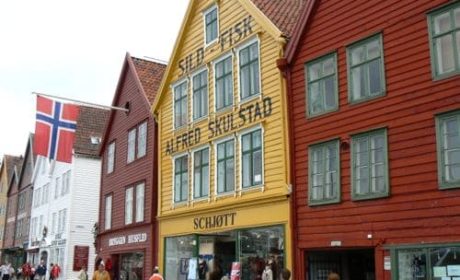
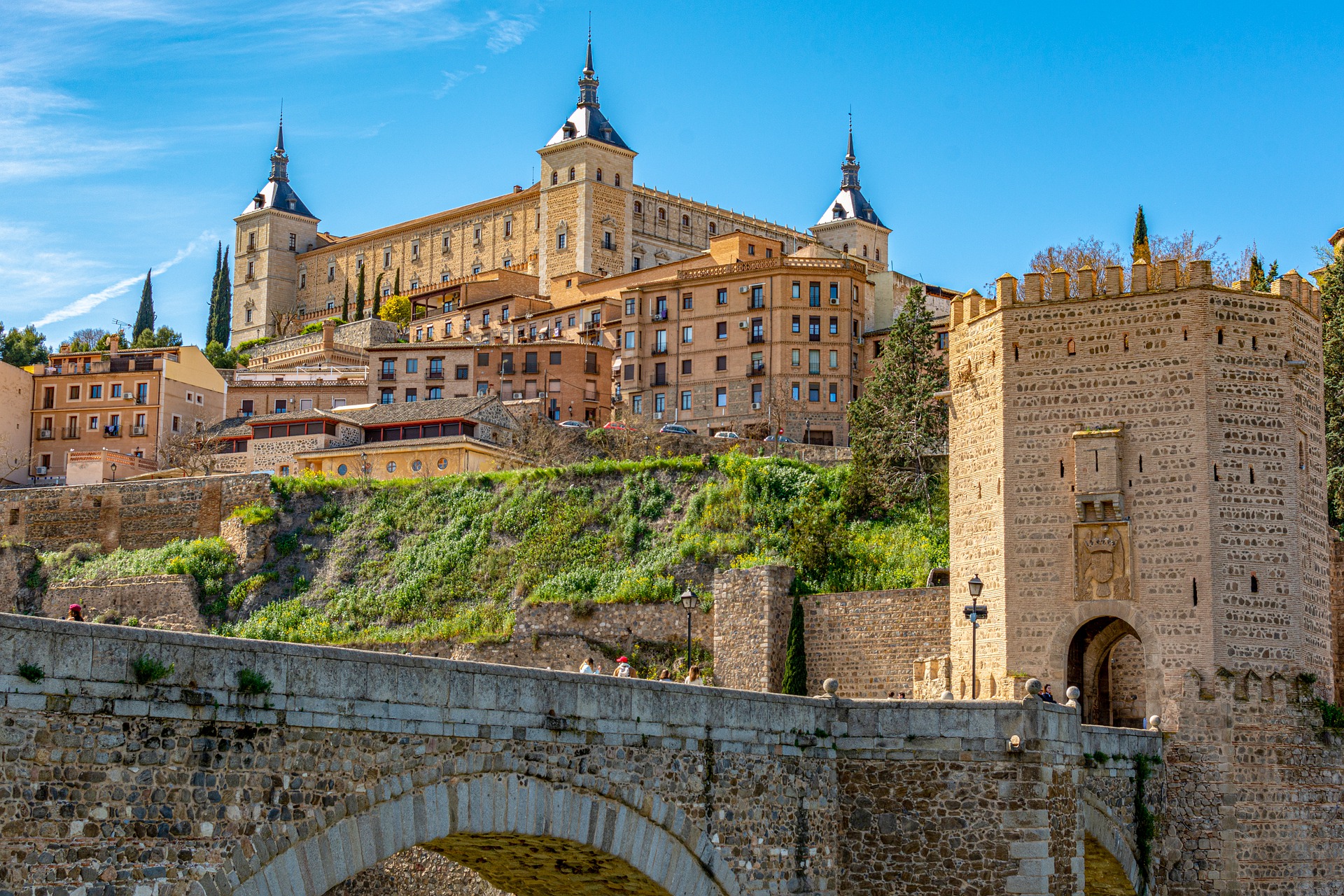
Self Guided Walking Tour of Toledo (with maps!)
This website uses affiliate links which earn a small commission at no additional cost to you.
Toledo is the heart and soul of Spain and an incredibly cultural city. It has seen numerous cultures and dynasties pass through its walls, as well as wars, royalty and artists. The legacy it guards is an essential part of Spanish culture, so visiting the city is bound to be a unique experience. This monumental walled hilltop city is a captivating UNESCO World Heritage Site. Behind its daunting medieval walls, in a labyrinth of winding pedestrian streets, are some of the most important historical landmarks in the country.
Magnificent old stone buildings and quiet cobblestone streets whisper the legacy of the past. For centuries, Christians, Jews, and Muslims flourished in a “city of three cultures” and built a dazzling array of churches, convents, palaces, fortresses, synagogues, and mosques.
1. Puerta Nueva de Bisagra

The Puerta Nueva de Bisagra is of Arab origin, and was rebuilt by Alonso de Covarrubias in Renaissance-style, back in the 16th century. It is one of Toledo’s six medieval city gates.
The side that faces the city opens up with a semi-circular arch, flanked by two square towers with roofs and decorated with the coat of arms of Charles I. The other side has an arch that bears the city’s coat of arms. This arch is flanked by two huge circular towers.
Across the road is the Tourist Information office.
2. Puerta del sol

The Puerta del sol was built by the Hospitaller Knights as a gateway to the walled city in the 13th century.
It has a rectangular floor plan which finishes in a semi-circle. The entrance, with a horseshoe arch, is flanked by two towers. At the centre of the blind arches there are remains of an early Christian sarcophagus from the 4th century. It features a relief with the emblem of the cathedral that represents the imposition of the chasuble to San Idelfonso under the Sun and the Moon, hence the name of the door.
3. Mezquita del Cristo de la Luz

The Mosque of Cristo de la Luz is a former mosque in Toledo, Spain. It is the one of the ten that existed in the city during the Moorish period. The edifice was then known as Mezquita Bab-al-Mardum, deriving its name from the city gate Bab al-Mardum. It is located near the Puerta del Sol, in an area of the city once called Medina where wealthy Muslims used to live.
4. Termas Romanas

Quick to get around and on the positive side, free to access. The Roman baths, discovered in 1986, are viewed via a walkway extending over two rooms. There are also the remains of an ajibe (water system) dating from the 8th century Moorish era when a large villa stood here.
5. Cuevas de Hércules

Historic archeological site featuring a Roman-era storage facility in subterranean vaulted caverns.
6. Plaza de Zocodover

The Plaza de Zocodover is a square of the city of Toledo, in the autonomous community of Castile-La Mancha, Spain. It was the nerve centre of the city during most of its history, acting as its main square. A part of it was designed by Juan de Herrera during the reign of Philip II. Here horses, donkeys, foals, mares, mules and other beasts were sold, when the city of Toledo was Spanish-Muslim city.
Here the most important market of the city took place. It has been celebrated as a weekly market for centuries. Today it occurs on Tuesdays in the vicinity of Paseo de Merchán or de la Vega.
7. Museo De Santa Cruz

Museo De Santa Cruz is a must visit in Toledo for being one of the most important museums in Spain due to the quality and quantity of pieces it contains, such as archaeological, fine arts and decorative arts.
There are three important collections: Roman, Visigoth, Arabic and Mudejar archaeology; Toledan painting from 16thand 17th centuries with El Greco’s art works; industrial arts with examples of popular culture and artisan local tradition.
Established by Cardinal Mendoza, it is a special building for being a hospital which carries out the new ideas about the importance of the cleanliness, the air circulation and the sunlight. It still has medieval features and shows the evolution towards the Plateresque Renaissance. must visit in Toledo for being one of the most important museums in Spain due to the quality and quantity of pieces it contains, such as archaeological, fine arts and decorative arts.
8. El Alcazar

It is today the site of the city’s Army Museum. Its construction dates from Roman times. During the reigns of Alfonso VI and Alfonso X ‘the Wise’ it was rebuilt and became the first example of a square fortress with towers on the corners.
It was once again rebuilt under Emperor Charles V, on this occasion by the architect Alonso de Covarrubias. The façades are Renaissance in style, and it has towers and crenellated defences according to a preliminary design by Alonso de Covarrubias, subsequently completed by Juan de Herrera. After the last reconstruction it became the site of the Army offices and museum.
9. Santa Iglesia Catedral

The temple dates back many centuries, but has only existed as a Christian church since the nineteenth century.
The temple was actually built on top of a Muslim mosque, and before that it had been a church in the sixth century during the reign of the Visigoth King Recaredo. King San Fernando and the archbishop began building the new church in 1226. The fifteen chapels of the ambulatory were subsequently completed. In the year 1300 the transept nave was completed, although work continued on the church for the next two centuries.
10. Baños de Tenerías

At present it is thought that the archaeological remains found about fifty meters from the church of San Sebastián, in the lower area of the Barrio de Curtidores de Toledo, a few meters from the banks of the Tagus River in its southern sections, belong to one of the of the six Arab baths that the city had.
Indeed, it is thought that these Arab baths known as Baños de Tenerías or San Sebastián de Suso offered the possibility of carrying out purification baths for access to the Al-Dabbagin Mosque (the current church of San Sebastián).
11. Casa y Museo del Greco

This museum has an extensive collection of paintings by this artist of the Spanish Golden Age.
Opened in 1911, the museum is located in Toledo’s Jewish Quarter. It consists of two buildings: a 16th-century house with a courtyard, and an extension dating from the early 20th century. The two share a garden. The museum houses numerous works by El Greco, especially from this brilliant painter’s last period, as well as canvases by other 17th century Spanish painters, furniture from the same era and pottery from Talavera de la Reina .
12. Synagogue of El Transito

Mudéjar art in El Tránsito synagogue. The El Tránsito synagogue is the common name for the synagogue of Samuel ha-Leví, and is the most important example of Spanish-Jewish art in existence. It was built in the 14th century, and is decorated with Mudéjar elements and beautiful geometric and floral motifs, and inscriptions in Arabic and Hebrew.
13. Iglesia de Santo Tomé

The church itself, which dates back to the 12th Century is relatively small and is located on the site of an old mosque. In fact, the gorgeous squared tower was the old minaret that was converted to a bell tower.
The main draw for the church today is to view The Burial of the Count of Orgaz. The church also houses El Greco’s masterpiece, El Entierro del Conde de Orgaz, also known as The Burial of the Count of Orgaz. The painting itself is huge and the very vivid colours portray a death on the earthly plane and an image of heaven above. There is much to see in this painting, but not enough time in the St. Tome Church.
14. Monasterio de San Juan de los Reyes

The Monasterio de San Juan de los Reyes was built to commemorate the victory at the Battle of Toro and commissioned by the Catholic Monarchs.
It has a single nave, with side chapels located between the buttresses. Of particular interest on the main façade are the chains of the freed prisoners. It has a late Gothic cloister and the ceiling on the second floor is in the Mudéjar style. Its church has a single nave with a stellar vault. Another highlight is the main chapel, which is decorated with the coats of arms of the Catholic Monarchs supported by a large eagles, ogee arches and the figures of saints.
15. San Martin's Bridge

San Martin’s Bridge has one of the most beautiful sunsets in Spain. The bridge was built in the Middle Ages and dates to around the 13th century, the bridge was later rebuilt almost entirely.
Initially it was constructed from ashlars. It was later modified with new defensive structures such as the two end towers, one from the 13th century and the other connecting to the wall from the 16th century. All this has meant that today the bridge has an impeccable structure. In 1921 it was declared a National Monument. It has five arches.
16. Puerta Del Cambrón

The Puerta Del Cambrón was also historically known as the gate of the Jews. This gate owes its name to the spiny buckthorn bushes all around it which are known in Spanish as cambroneras.
The Puerta Del Cambrón was built over the remains of a Visigoth gate, and the current structure is in the Renaissance style with a square floor plan. On the interior façade there is a statue of Santa Leocadia attributed to Berruguete.
Tours and Activities from Toledo
Similar blogs.
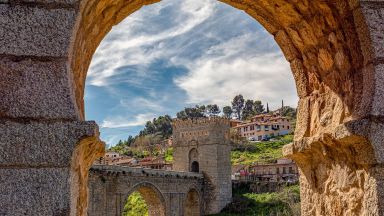
Complete Toledo Travel Guide
Spain is abundant with remarkable cities to explore, and while Madrid, Barcelona, and Valencia garner much attention, I have a special fondness for the culturally rich smaller Spanish cities. Among these, the captivating city of Toledo holds a top spot in my heart. Being one of the oldest and most unique cities in Spain, it […]
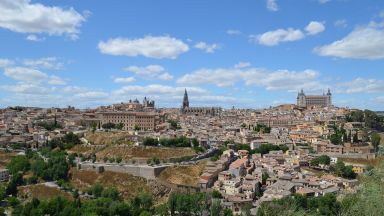
Exploring the Jewish Quarter of Toledo
Toledo, situated merely an hour’s drive from Madrid, was renowned across Europe for its vibrant intellectual and economic activities, and its illustrious history was deeply intertwined with the Jewish community. Despite facing higher taxes, Jews were granted the freedom to practice their faith during periods of Muslim and Christian rule. The city’s history exemplified religious […]
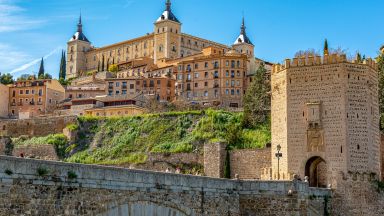
Toledo is the heart and soul of Spain and an incredibly cultural city. It has seen numerous cultures and dynasties pass through its walls, as well as wars, royalty and artists. The legacy it guards is an essential part of Spanish culture, so visiting the city is bound to be a unique experience. This monumental […]

COMMENTS
Spain map: best online resources. It's handy to have good Spain maps of all sort before you depart on your trip, but if you don't, no worries. You'll find lots of good maps readily available below. Here's my free Google Map of Spain. Map of Spain divided by regions (comunidades autónomas). Spain map: weather forecast (AEMET).
Interactive map of Spain with all popular attractions - , , and more. Take a look at our detailed itineraries, guides and maps to help you plan your trip to Spain.
Map of Spain Points of interest. Experiences. Destinations (655) Art and culture (2348) [] Museums (525) Sights (1731) Parks and gardens (92) Nature Areas (179) ... Excursions and tours (183) Water sports on the sea (46) Activities for all the family (73) The Camino de Santiago (75) See results See more. Filters Results My location
The third most visited country in the world: with canyons, mountains, 5000 km of coastline, beaches and cliffs, vibrant nightlife, delicious ham and the best festival parties…. Spain is definitely one of the world's best travel destinations. Population: 46.710.000. Area: 505.990 sq.km. Official Language: Spanish.
This large map of Spain will help you figure out how to make your way around the country. If your vacation plans include a full tour of the Iberian Peninsula, no worries—we've also included Portugal. Find the grid reference for the part of the map that you want to see and scroll down to the corresponding number in the list below to see a more ...
Tourist map of Spain Author: mytouristmaps.com Subject: Travel and tourist map of Spain with direct links to accommodation, top sights and best attractions. Keywords: travel tourist map spain Created Date: 11/11/2018 6:58:04 PM
Ultimate Canary Islands Tour - 8 Days. Browse our collection of Spain travel maps to find tour & itinerary ideas for your Spain trip. Itineraries include: 7 Days in Spain - 4 Unique Itinerary Ideas, 10 Days in Spain - 6 Unique Itinerary Ideas, 5 Days in Spain - 6 Unique Itinerary Ideas, 14 Days in Spain - 6 Unique Itineraries, and 10.
Explore Spain holidays and discover the best time and places to visit. Spain's best sights and local secrets from travel experts you can trust. ... , award-winning guidebooks, covering maps, itineraries, and expert guidance. Shop Our Guidebooks. Go Beyond Spain and beyond. Beyond Spain. Andalucía. Canary Islands. Mallorca. Barcelona. Madrid.
About Spain. Data and interesting facts about the country, its culture, nature, gastronomy and population.
Tourist information about Spain: art, culture, museums, monuments, beaches, cities, fiestas, routes, cuisine, natural spaces in Spain | spain.info
Cantabria & Asturias (5) Aragon (5) La Gomera (5) Fully Guided. Spain Travel Guide | All You Need to Know. 10 Days in Spain: Best Itineraries 2024/2025. Find the right Spain Fully Guided tour for you with TourRadar. Choose from 498 trips with 5300 customer reviews. Book now and save with TourRadar.com!
9. Road trip around Mallorca. 5 days, 175 miles. Lazy. 10. The full circle - A complete road trip around Spain. 35 days, 2,800 miles. Challenging. Whether you want a relaxing drive along the coast or drive around the entire country of Spain, here are the 10 amazing options for a Spain road trip to pick from.
Flavors of Portugal & Spain: featuring Barcelona. Tour Rating: From $5,499 pp. Pilgrimage to Fatima & Lourdes with Barcelona. Tour Rating: From $1,999 pp. Flavors of Portugal & Spain: featuring the Douro and Rioja Wine Regions. Tour Rating: From $4,399 pp.
Day 1: Arrive in Barcelona (sleep in Barcelona) Day 2: Barcelona (sleep in Barcelona) Day 3: Barcelona, evening train to Madrid (sleep in Madrid) Day 4: Madrid (sleep in Madrid) Day 5: Madrid, or day trip to El Escorial and/or Valley of the Fallen (sleep in Madrid) Day 6: Madrid, late afternoon to Toledo (sleep in Toledo)
Day 21: Transfer to Airport. On the final day of your 21-day tour of Spain, your private driver will pick you up from your hotel in Madrid and take you to the airport. As you make your way through the city, you'll have the opportunity to reflect on all of the amazing experiences you had over the past three weeks.
9 Days. 9 Cities. 1 Country. Savor shared moments with locals enjoying sangria in sun-dappled courtyards, zesty paella and the sounds of the Spanish guitar. On this journey, you'll explore the wonders of Spain, from the ornate walls of the Alhambra to the Gothic Cathedral and Giralda Bell Tower in Seville.
10 Best Spain Tours & Trips 2024/2025 - TourRadar. Admire the golden wonders of Granada or fall in love with Gaudí's La Sagrada Família with the best Spain travel deals - from Bilbao to the Balearic Islands.
11. Ronda. Located in one of the most spectacular settings imaginable, Ronda, in the south of Spain, straddles the steep El Tajo gorge, overlooking the valleys and hills that lie before it. Spanning the breadth of the gorge is Puente Nuevo, the city's main landmark built in 1793.
Best of Spain in 14 Days Tour. from $4,795 per person + air. From Gaudí and El Greco to tapas and flamenco, this tour captures the energetic diversity of Spain. Beginning in beautiful Barcelona and ending in sensual Sevilla, your Rick Steves guide will treat you to a sumptuous, two-week cultural buffet — with rich helpings of Catalunya's ...
Spain Itinerary Overview. Best Time to Visit: Generally, summer is the hottest and winter is colder and wetter, but regional exceptions apply.March-June and September-end of October are best. Getting Around: Trains and buses are reliable.A rental car in Spain is a must-have for smaller towns.. Popular Places to Visit: Barcelona, Madrid, and Valencia for larger cities, and Granada, Seville, and ...
Top 3 Highlights: Do our free self-guided Barcelona Walking Tour. Take a walking food tour, or get a taste of Barcelona after dark on a Tapas, Taverns & History Tour. Visit Gaudi's otherwordly Sagrada Familia (we recommend a skip the line ticket and Park Güell.
Tips for a DIY walking tour in Cartagena, Spain. When you visit Cartagena, a few tips will make your time even better. Bring a bottle of water from the ship or fill up your personal water bottle as it can be hot any time of year in Mediterranean climates. Wear a hat and sunscreen for protection from the strong sun—follow my skin cancer travel ...
It is located near the Puerta del Sol, in an area of the city once called Medina where wealthy Muslims used to live. Location: Ermita "Mezquita" del Cristo de la Luz C. Cristo de la Luz, 22 45002 Toledo Spain | Hours: 10am-2pm & 3.30-5.45pm Mon-Fri, 10am-5.45pm Sat & Sun | Price: adult/child €2.80/free.